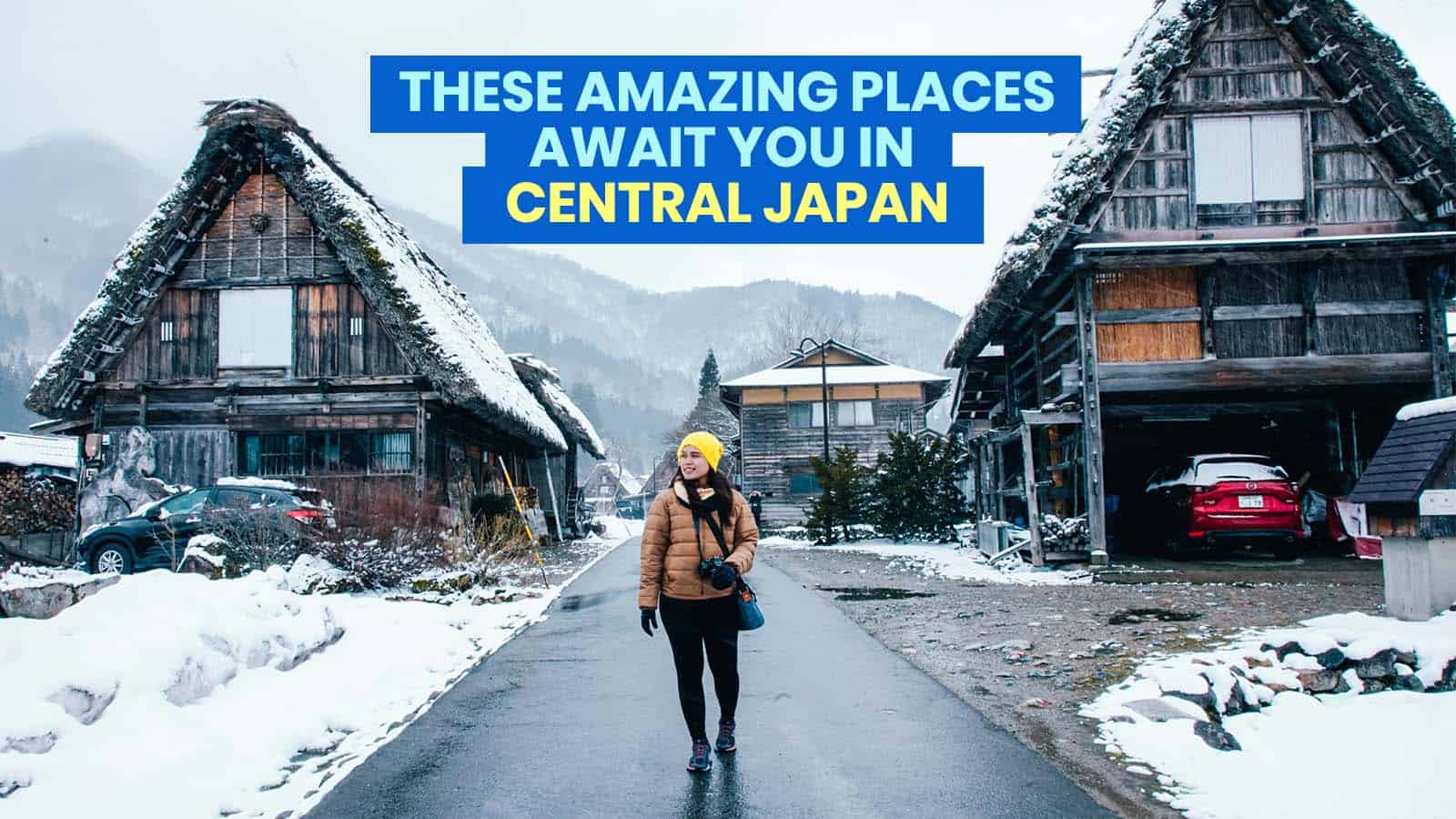

10 MUST-VISIT DESTINATIONS in CENTRAL JAPAN (Chubu Region)

Central Japan will always have a special place in my heart because this is the first region I visited years ago. This is where I experienced my first snowfall (and snowstorm). This is where my love for Japan took root. And you know what they say, you will never forget your first love.
I couldn’t have picked a better place to visit first. There is so much to see and do here. Central Japan, also called Chubu region , is composed of nine prefectures: Aichi, Gifu, Shizuoka, Yamanashi, Nagano, Niigata, Fukui, Ishikawa, and Toyama. The last four are considered part of the Hokuruki subregion.
Crumpled with mountains, Central Japan boasts the towering Japanese Alps and Mount Fuji. It also has a long history, preserved and showcased in its numerous heritage spots including old merchant street of Takayama, the old town of Hida Furukawa, the chaya districts of Kanazawa, and the UNESCO World Heritage sites Shirakawa-go and Gokayama.
Yet, the region is still widely regarded as an off-the-beaten-path destination. Sandwiched by much more popular Kansai and Kanto regions, Central Japan is often overlooked. But if you are looking for interesting, refreshing tourist attractions, here are some of places to add to your Japan itinerary!
WHAT'S COVERED IN THIS GUIDE?
Shirakawa-go
Shirakawa-go in Ono District in Gifu Prefecture is declared a UNESCO World Heritage Site in 1995 for the centuries-old gassho-zukuri farmhouses. Ogimachi is Shirakawa-go’s largest village and poster image. This picturesque village has this perpetual charm that draws local and foreign tourists alike.
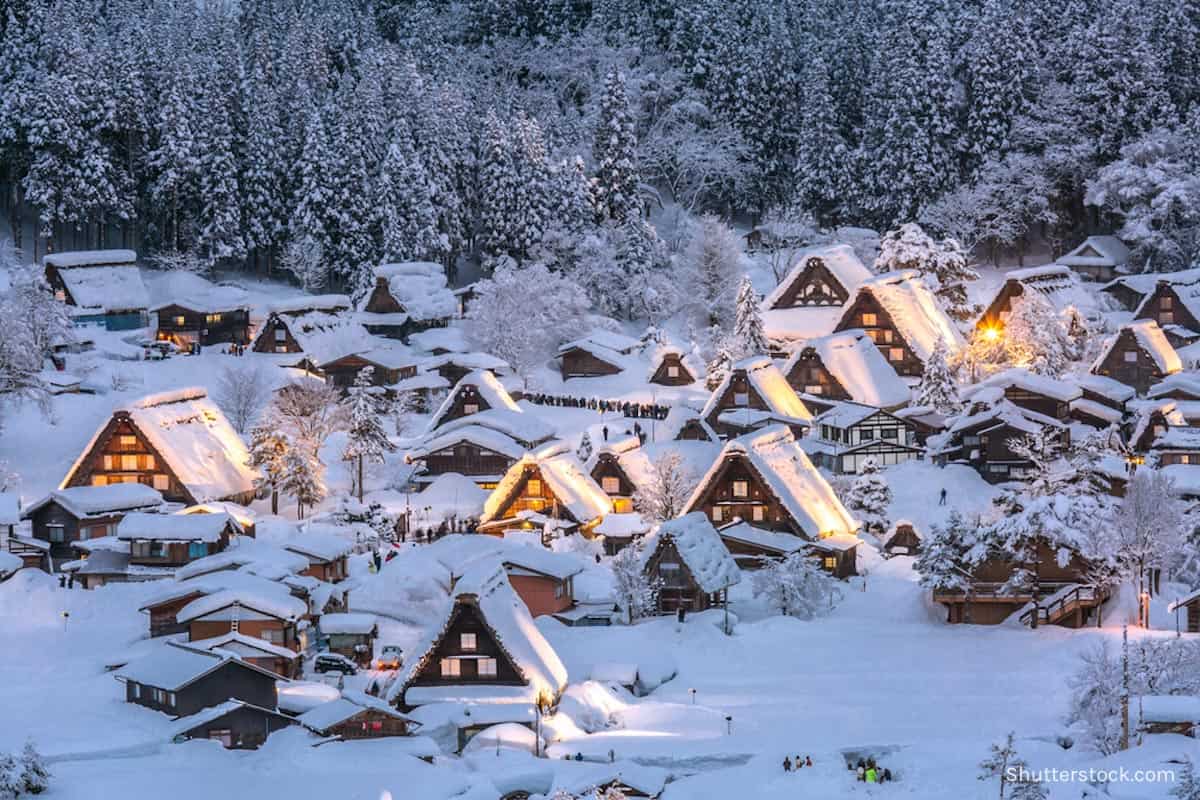
There are still over a hundred farmhouses — some are turned into museums, while others are still inhabited. One of the most prominent gassho-zukuri houses is the Wada House , an Important National Cultural Property. The admission fee is ¥300.
Our team had been here four times — twice in winter, once in spring, and once in autumn. Each season offers a different vibe but equally spectacular scenery, especially when viewed from the observatory. You can reach the observatory on foot (about 20 minutes) or by shuttle bus service (10 minutes) for ¥200 per person. The bus stop is near the Wada House, and the bus departs every 20 minutes.
Also near the shuttle bus stop is Irori Restaurant , where you can try the traditional Japanese meal with the famous Hida beef on Hoba leaf and freshwater rainbow trout.
Nearest Station: JR Takamaya Station
How to Get There: Go to Takayama Nohi Bus Center and purchase your bus ticket. The fare is ¥2,600 and the travel time is 50 minutes. The first bus departure is at 7:50 AM and the last is at 7:00 PM. Please be there 20-30 minutes before the departure time.
✅ MORE INFO: SHIRAKAWA-GO TRAVEL GUIDE
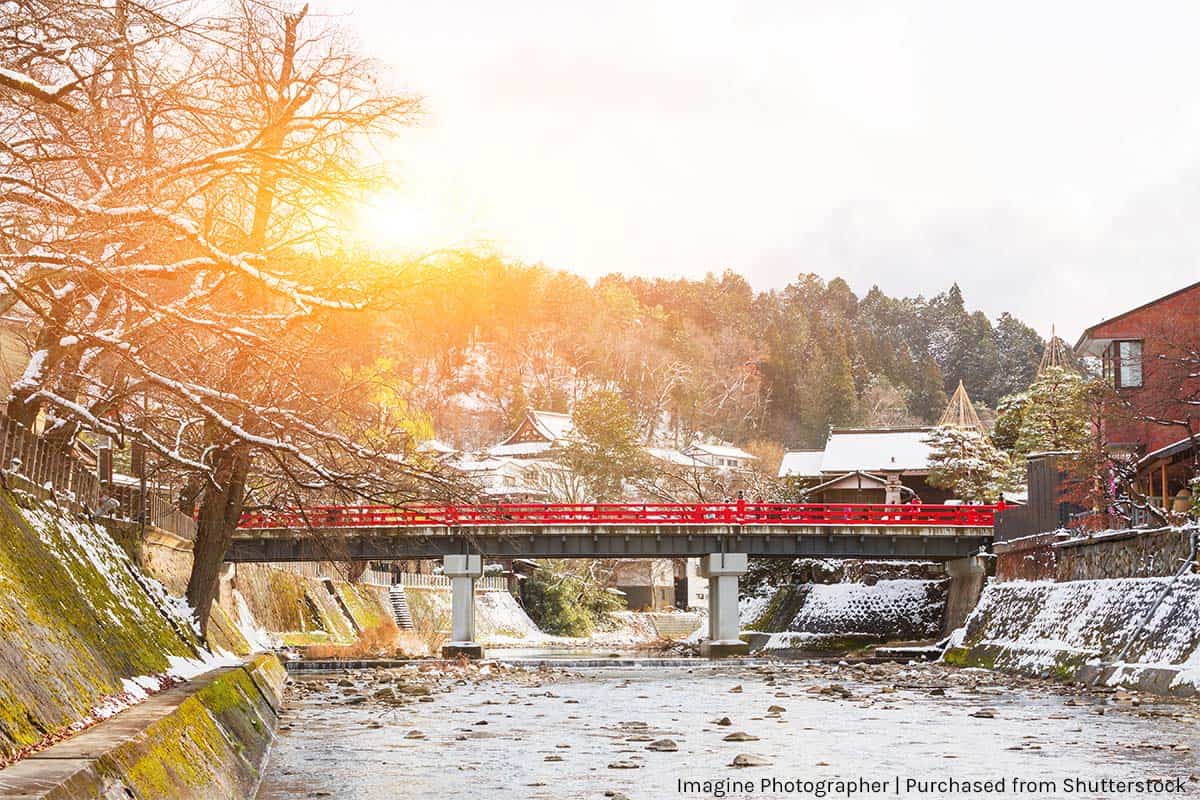
Located in the mountainous region of Gifu Prefecture, the city is aptly named Takayama , which literally means “tall mountain”. To differentiate it from other places in Japan with the same name, this one in Gifu is also called Hida-Takayama, referring to the old Hida Province. Since it is located near the Northern Japanese Alps, Takayama is home to one of Japan’s 100 famous mountains — Mount Hotakadake .
Its relatively remote location gave rise to its peculiar culture, which developed through centuries of isolation. The Takayama Festival is one of Japan’s three most beautiful festivals. It happens twice a year in April (spring) and October (autumn) and features beautiful floats.
You will learn more about their heritage from several museums and historical sites in the city like the Takayama Jinya, Matsuri no Mori, Yatai Kaikan, Hida Folk Village, Higashiyama Temple Area, and Sanmachi (old town). The old town takes you back to the Edo period with its well-preserved wooden merchant houses.
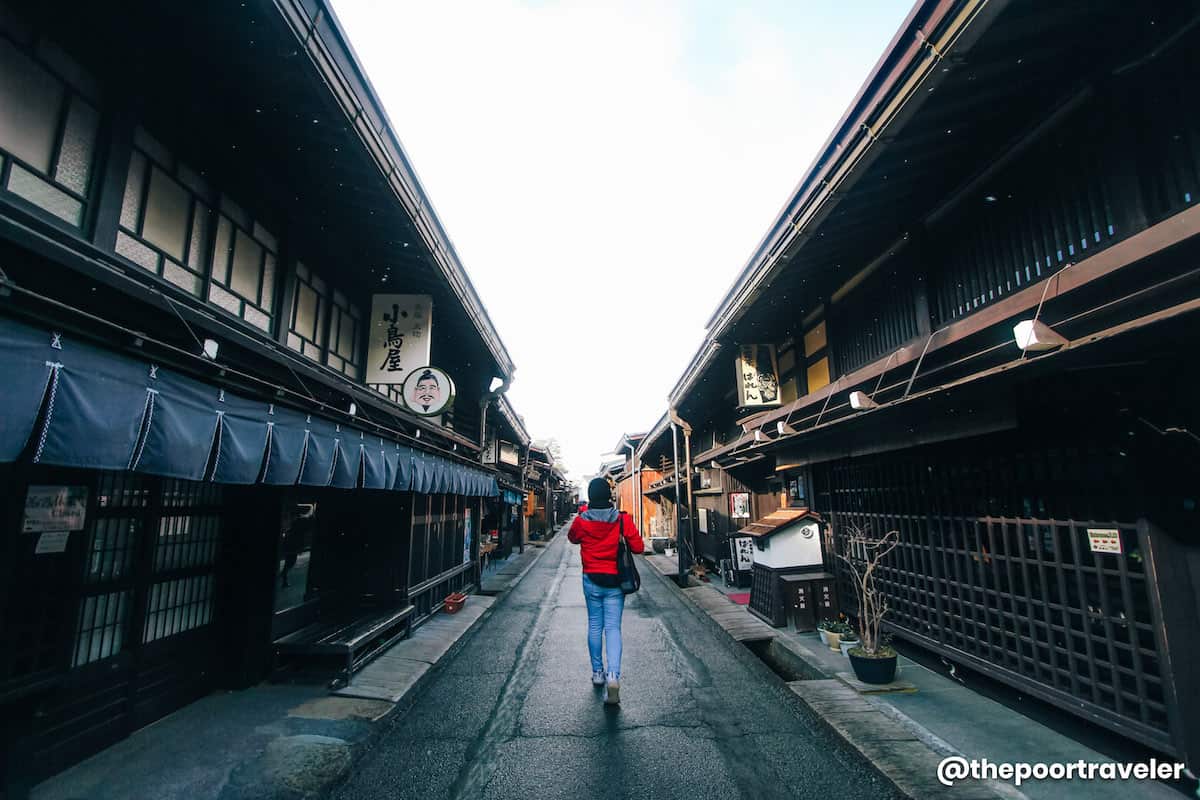
At present, the old streets are lined with souvenir shops and sake breweries. Speaking of sake breweries, Takayama has seven! Because of its cold climate, clean water, and good-quality rice, the city produces some of Japan’s best sake. One of the oldest breweries is Funasaka Sake Brewery with 200 years of experience for sake brewing.
Takayama is also the choice base for tourists going to Shirakawa-go. If you like to experience onsen (hot spring bath) and still have extra cash to burn, you might want to check Hotel Associa Takayama Resort . They offer not only public onsen but also private ones. This is one of the options if you are not comfortable being naked with strangers but still want to experience an onsen bath.
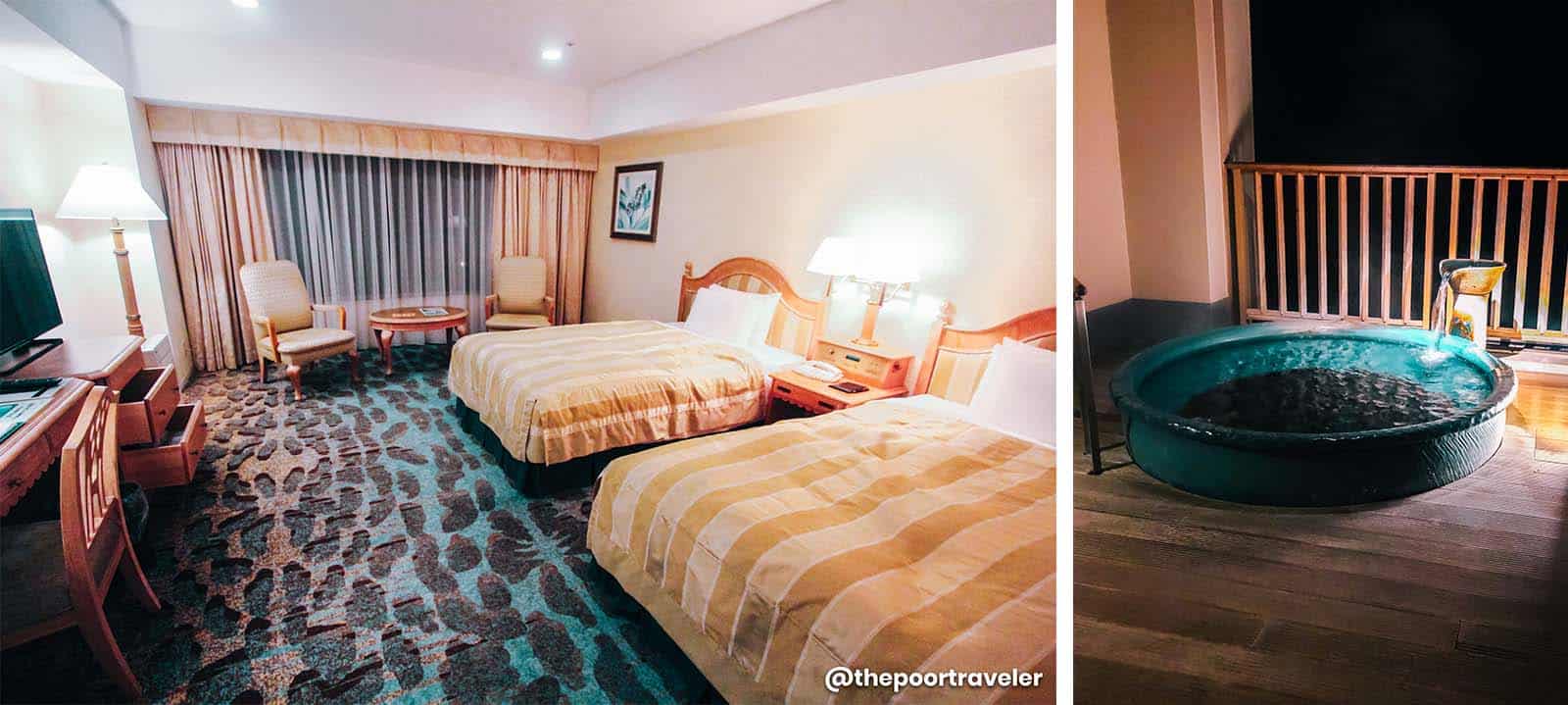
Nearest Station: JR Takayama Station
How to Get There: From JR Nagoya Station, get on a Limited Express Wide View Hida train to JR Takayama Station. The fare is ¥3,410 plus seat fee. The travel time is approximately 2.5 hours.
✅ MORE INFO: TAKAYAMA TRAVEL GUIDE
Hida Furukawa
Hida Furukawa is located north of Takayama, which can be reached in about 15 minutes by train. This small town in Hida, Gifu is reminiscent of the 15th-century old castle town with its canal-lined streets that feature traditional wooden storehouses.
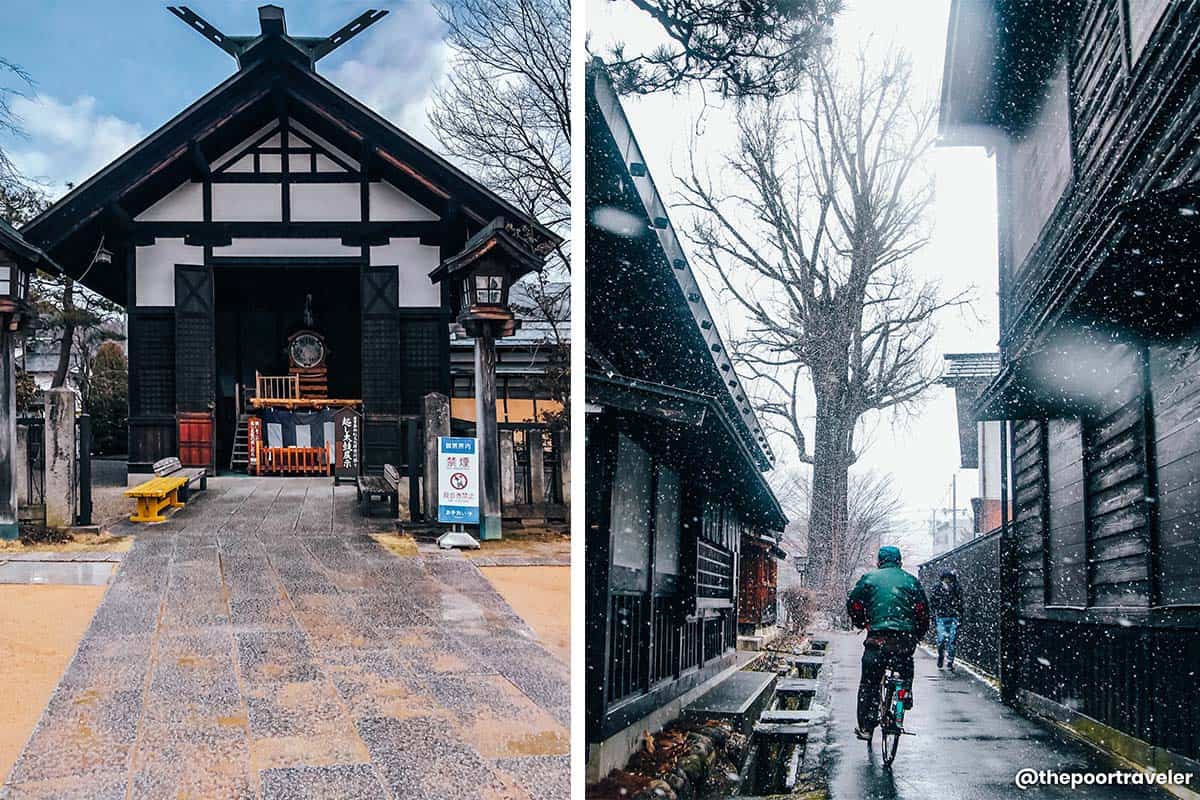
The most prominent canal is the carp-filled Setogawa Canal that separates the white-walled storehouses and the dark-walled traditional wooden houses. During winter season though, the carp are transferred to a warm pond and will swim in the canal again in spring. The number of carp swimming in the canal is said to have reached over a thousand!
Other landmarks are the festival square where the Furukawa Festival is held in April, the Hida Furukawa Festival Exhibition Hall, the Hida Crafts Museum, the giant 700-year-old ginkgo tree, the red Imamiya Bridge, Mishima Candle Shop (over 200 years old), and the three temples (Enkouji, Honkouji, and Shinshuji). Aside from the Furukawa Festival, other events are the Fox Wedding Festival in September and the Visit to Three Temples in January.
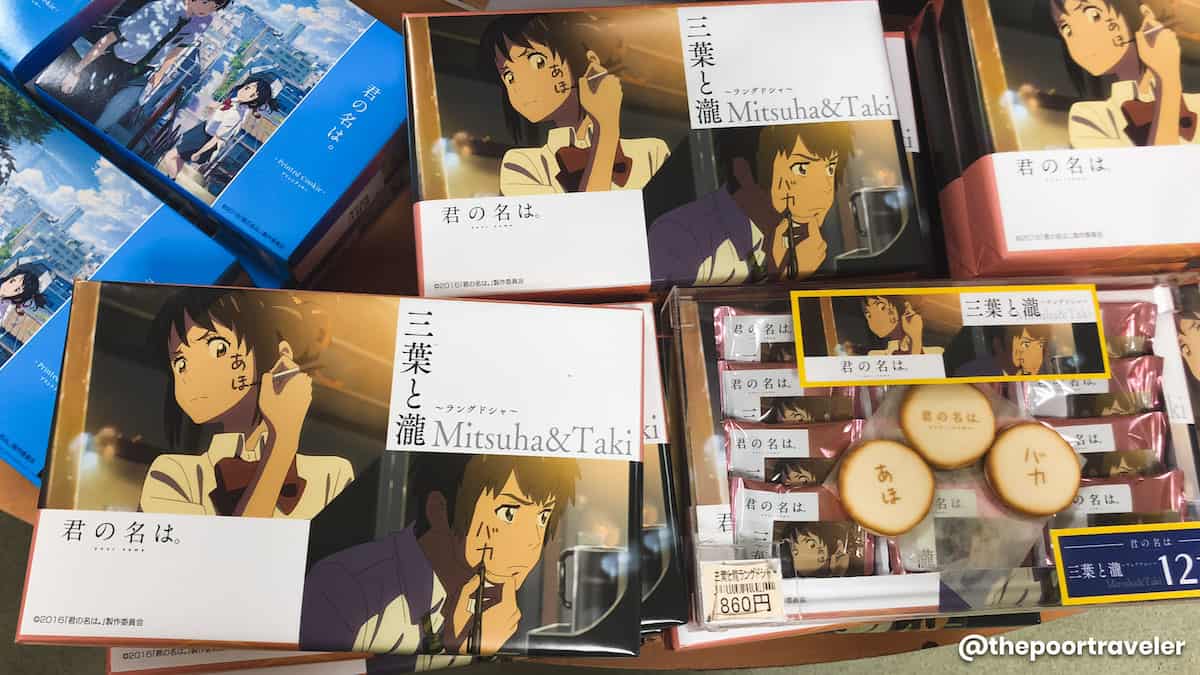
The newest attractions that draw tourists to Furukawa are the locations featured in the Japanese animation film, Kimi no Nawa (Your Name) : JR Hida-Furukawa Station, Hida City Library, and Ajidokoro Furukawa among others.
Nearest Station: JR Hida-Furukawa Station
How to Get There: From JR Takayama Station, take the train to JR Hida-Furukawa Station. The fare is ¥240 and the travel time is 15 minutes.
Fukui City is the capital of Fukui Prefecture. It is bordered on the west by the Sea of Japan and on the east by the Ryohaku Mountains. From the city center, you can easily access tourist attractions.
For those who want to experience traditional Japanese hot spring baths, Awara city has the onsen village offering different types of hot spring bath experience — outdoor, indoor, public and private. You can also avail of Awara’s public foot bath. Just a stone’s throw away from the foot bath is the local favorite food alley — Yukemuri Yokocho.
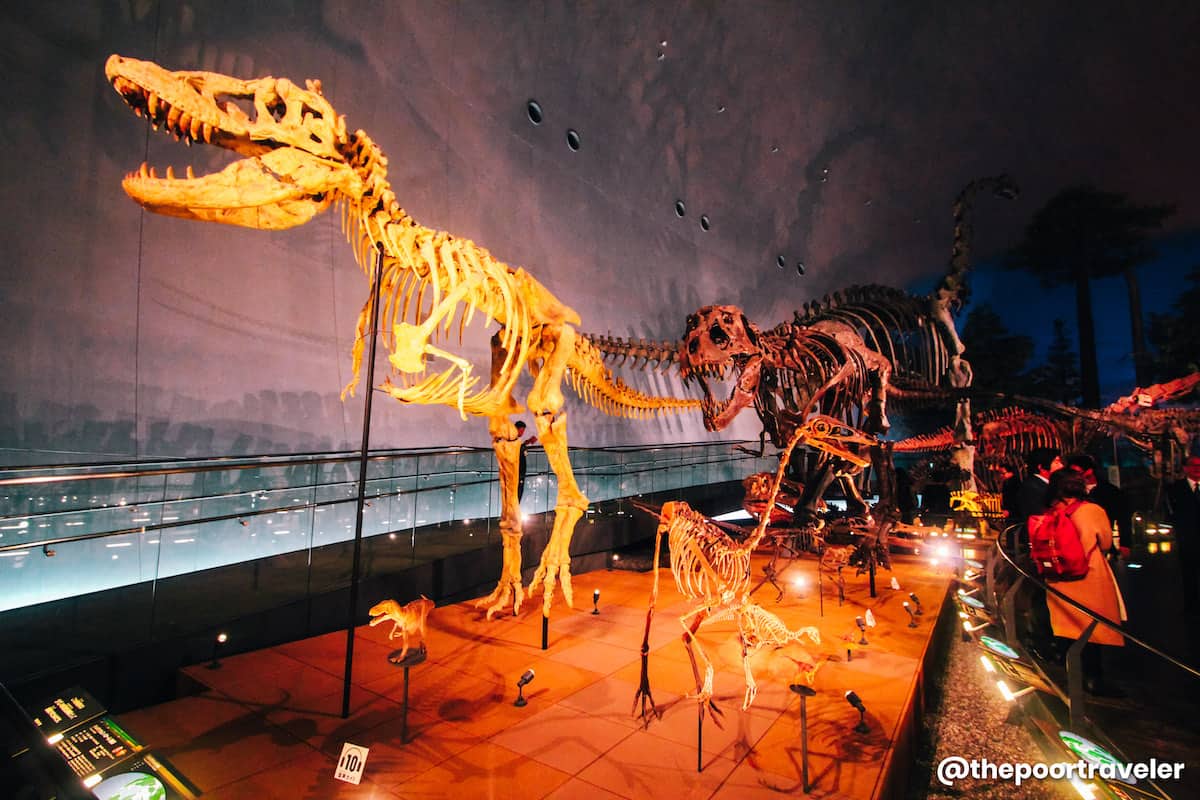
For the dinosaur enthusiast, get the Jurassic Park vibe at Fukui Prefectural Dinosaur Museum , one the best in the world. Being the largest in Japan with over 40 dinosaur skeletons on display, it has established itself as the center of dinosaur research in Japan. The museum is located in Katsuyama City, where the largest dinosaur excavation site can be found. The entire Katsuyama city is actually part of the Dinosaur Valley Fukui Katsuyama Geopark where 5 dinosaur species were excavated — Fukuiraptor, Fukuisaurus, Fukuititan, Koshisaurus, and Fukuivenator. The entrance fee is ¥730.
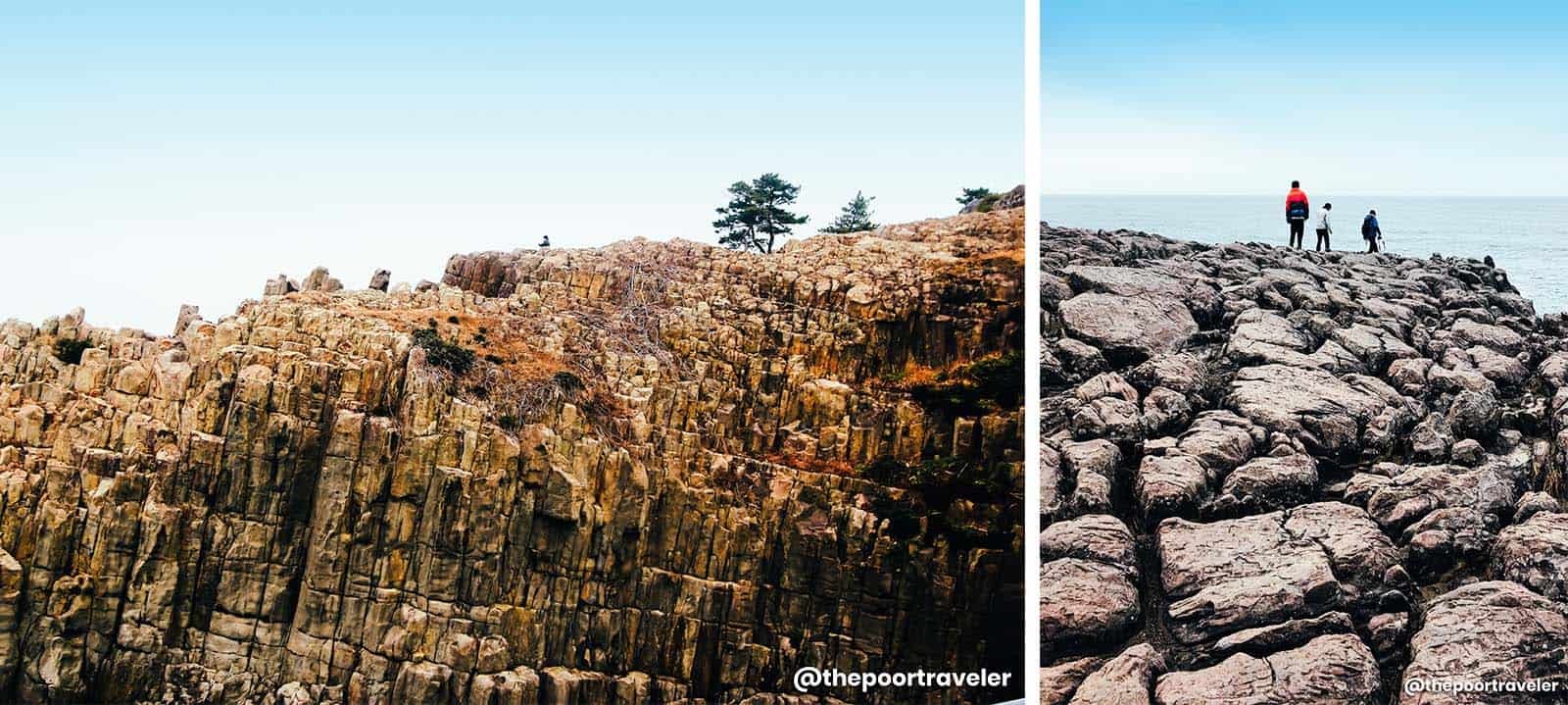
Sakai is home to the kilometer-long basalt cliffs facing the Sea of Japan called Tojinbo . Through time, the strong waves sculpted what has now become a tourist attraction in the area. You can appreciate the scenic view from the 55-meter high observation deck or on a sightseeing cruiser that takes you around the area.
Nearest Stations: JR Awara Onsen Station and JR Fukui Station
How to Get There: From JR Shin-Osaka Station, take the Limited Express Thunderbird to JR Fukui Station (¥3,410 + seat fee) or JR Awara Onsen Station (¥3,740 + seat fee). The travel time is 1.5-2 hours.
Kanazawa is the capital of Ishikawa Prefecture. This is another site where you can experience being transported back to the Edo period while strolling around the historic sites like the Kanazawa Castle Park and the three tea house districts where geisha culture also thrives.
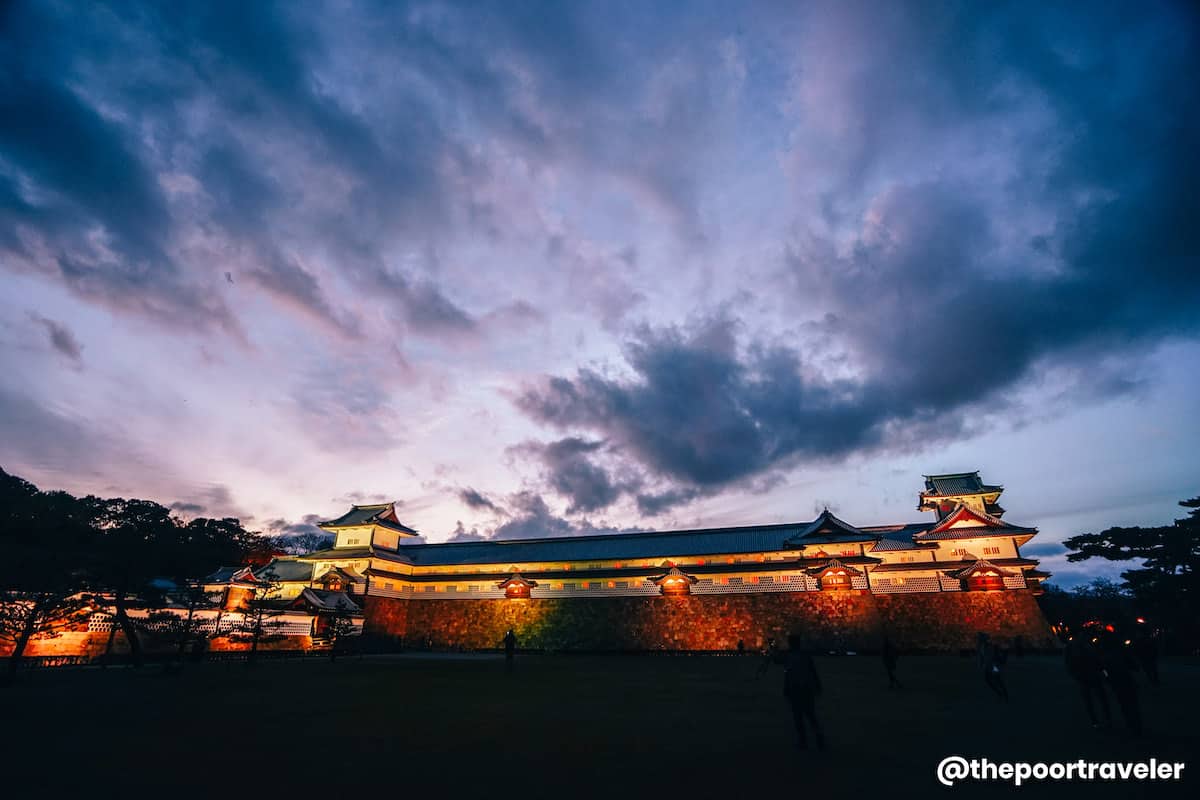
These three are Kazue-machi Chaya, Nishi (West) Chaya, and Higashi (East) Chaya. The biggest among the three is Higashi Chaya . The old streets are lined with souvenir shops and food places — Hakuza Hikarigura (gold leaf shop), Hakuichi (gold leaf soft ice cream), and of course, tea houses.
Other than the tea houses, there are Nagamachi Samurai District and Ninjadera. Kanazawa Castle Park boasts different masonry techniques through the castle’s surrounding stone walls. If you are a tea enthusiast, try the casual tea ceremony at Gyokusenan near the Gyokusen-inmaru Garden inside the castle park. You will be served matcha green tea and traditional Japanese sweets.
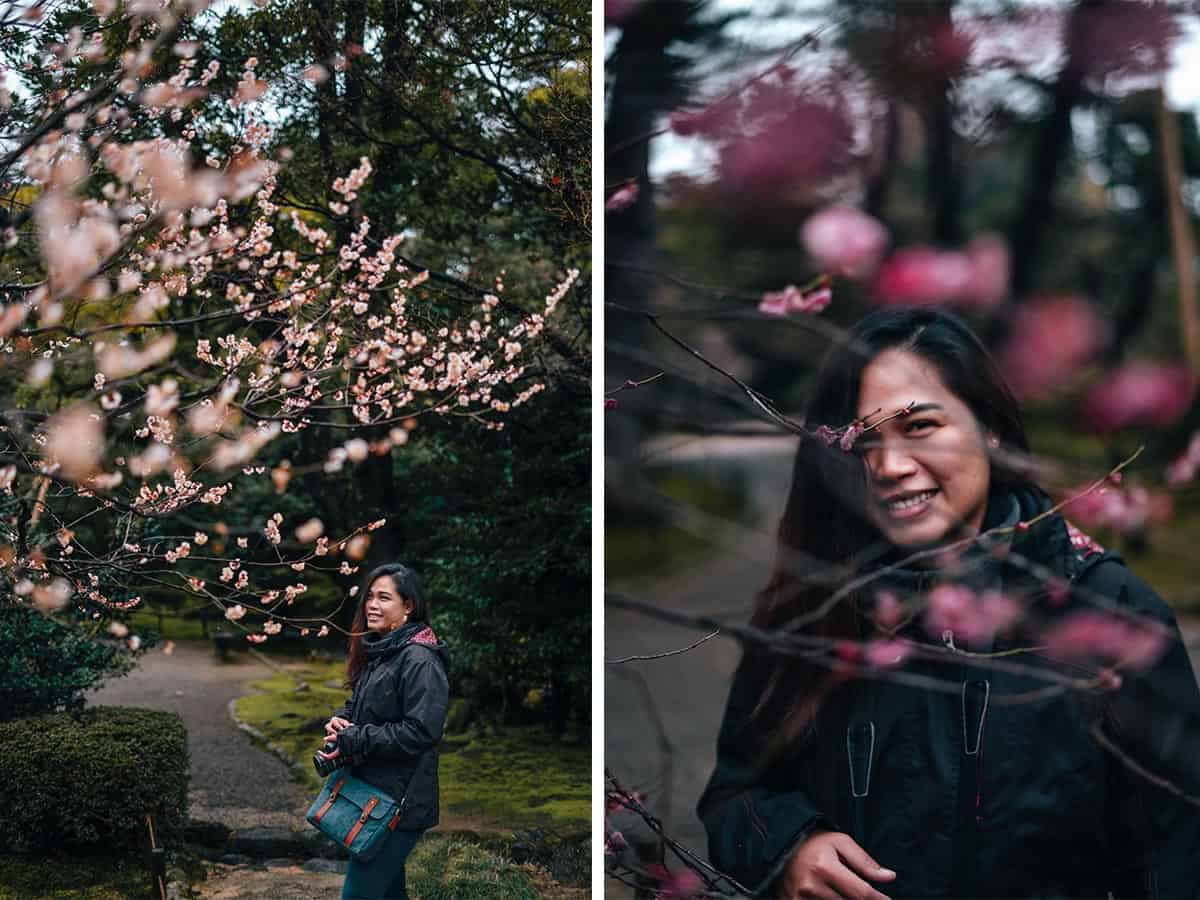
Have a relaxing stroll around the vast Kenrokuen Garden , one of Japan’s Three Great Gardens. It is located just across the Kanazawa Castle Park. Some of the famous landmarks inside the garden include the Kotojitoro lantern, the natural fountain, Yugaotei, and the Karasakinomatsu Pine trees to name a few.
Hungry? Check out the restaurants at Omicho Market , nicknamed “Kanazawa’s kitchen”. Over a hundred shops sell fresh produce and seafood here. Other attractions in Kanazawa are 21st Century Museum of Contemporary Art and D.T. Suzuki Museum.
Nearest Station: JR Kanazawa Station
How to Get There: From JR Shin-Osaka Station, take the Limited Express Thunderbird train to JR Kanazawa Station. The fare is ¥4,840 plus seat fee. The travel time is about 2.5 hours.
✅ MORE INFO: THINGS TO DO IN KANAZAWA
Takaoka is located in Toyama Prefecture. It’s an old castle town that boasts two of its thriving old merchant and craftsman districts — Yamachosuji and Kanayamachi .
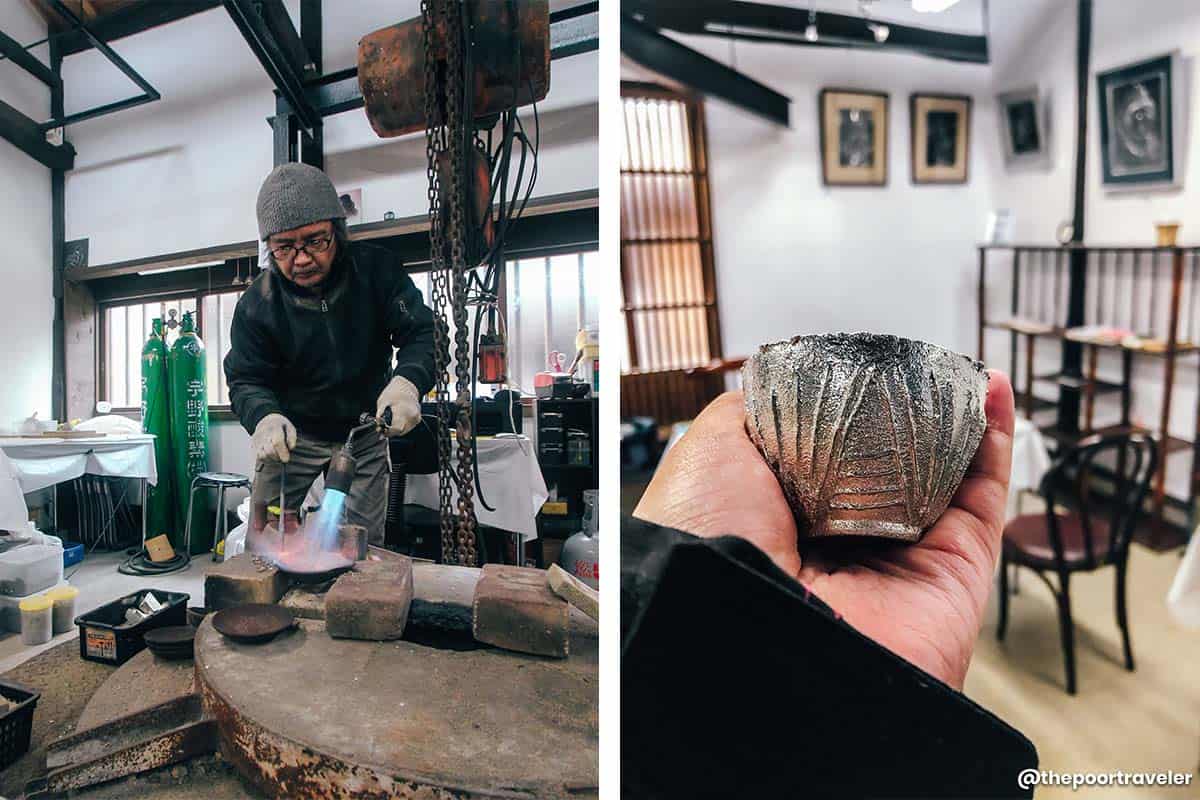
The city is known for its metal casting industry that is said to produce most of Japan’s bronzeware and metal works. Kanayamachi is the home of many well-preserved traditional wooden houses and the heart of Takaoka’s metal casting industry. One of the most established casting places in Kanayamachi is the Risaburo Foundry , which specializes in twin-type casting that dates back to the Meiji Period. We were able to participate in its metal casting workshop which lets us choose and make our own sake cup, chopstick rest or paperweight.
Takaoka is also one of the jump-off points for another UNESCO World Heritage Site — Gokayama . The village features gassho-zukuri farmhouses, just like Shirakawa-go, but it’s more remote and less crowded.
Nearest Station: JR Shin-Takaoka Station
How to Get There: From JR Kanazawa Station, take the Shinkansen Hakutaka train to JR Shin-Takaoka Station. The fare is ¥680 plus seat fee. The travel time is about 15 minutes. If you are coming from Nagoya, you will most likely do a train transfer at JR Kanazawa Station to JR Shin-Takaoka Station.
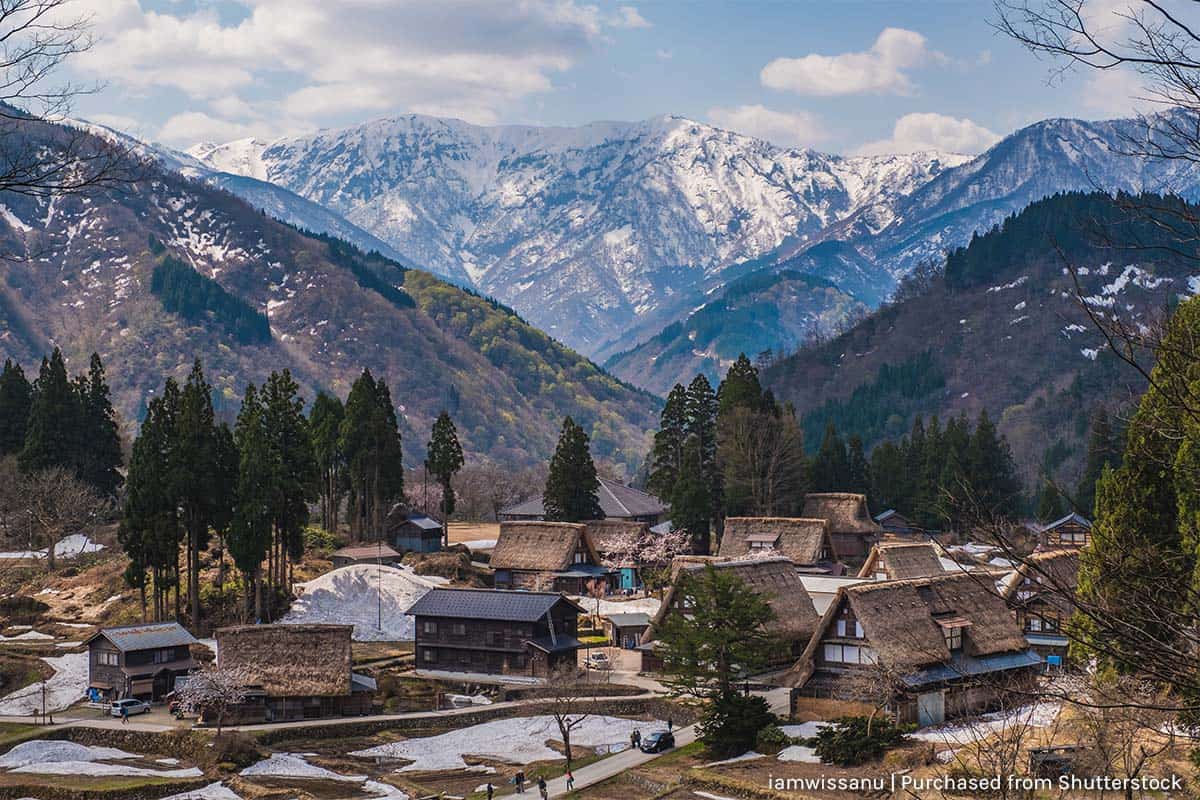
Another UNESCO World Heritage Site in the Chubu region is Gokayama , an area in Nanto City in Toyama Prefecture. It also features the same gassho-zukuri farmhouses that you will see in Shirakawa-go, only less in number. If Shirakawa-go has Ogimachi, Gokayama has Suganuma and Ainokura . Compared to Shirakawa-go, Gokayama is quieter, more rustic, and has fewer crowds.
Nearest Station: JR Johana Station and JR Takayama Station
How to Get There: From Nagoya, you need to do two train transfers at JR Kanazawa Station and JR Shin-Takaoka Station to reach JR Johana Station. Then from there, take the bus to Ainokura. Kaetsuno Bus operates between Shin-Takaoka Station and Ainokura (and can go as far as Shirakawa-go). The total fare is around ¥8,000 and travel time is about 5 hours. Another option requires a side trip to Shirakawa-go. Take the Limited Express Wide View Hida to JR Takayama Station and then take the bus to Shirakawa-go. From Ogimachi, take the Kaetsuno Bus to Ainokura or Suganuma. The total fare is roughly ¥6,000 and travel time is around 4 hours.
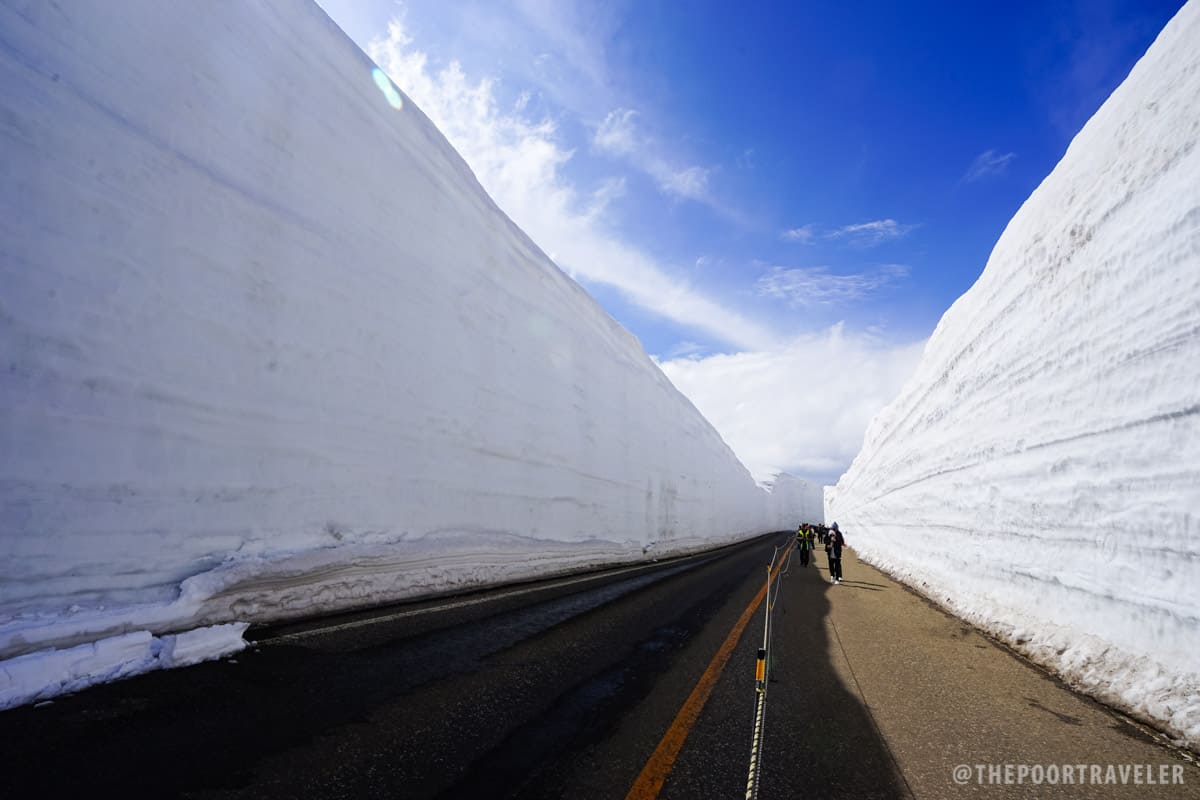
Toyama City is the capital of Toyama Prefecture, located on the western coast of the Chubu region on Japan’s Honshu island. It’s a coastal city that faces the Toyama Bay on the north. It used to be a castle town with Toyama Castle as its central figure. Aside from the castle, some of the attractions here include the Hills of 500 Buddhas, Toyama Street Museum, Toyama Folk Village, and Toyama Glass Museum among others.
Kansui Park is a vast waterside park that has a bridge that also serves as an observation deck where you can view the mountains and the surrounding areas. For hikers and nature-lovers, Toyama is the usual jump-off point for those who would like to tackle the Tateyama Kurobe Alpine Route .
Nearest Station: JR Toyama Station
How to Get There: From JR Kanazawa Station, take the Shinkansen Tsurugi train to JR Toyama Station. The fare is ¥990 plus seat fee. The travel time is about 20 minutes. If you are coming from Nagoya, you will most likely do a train transfer at JR Kanazawa Station to JR Shin-Takaoka Station.
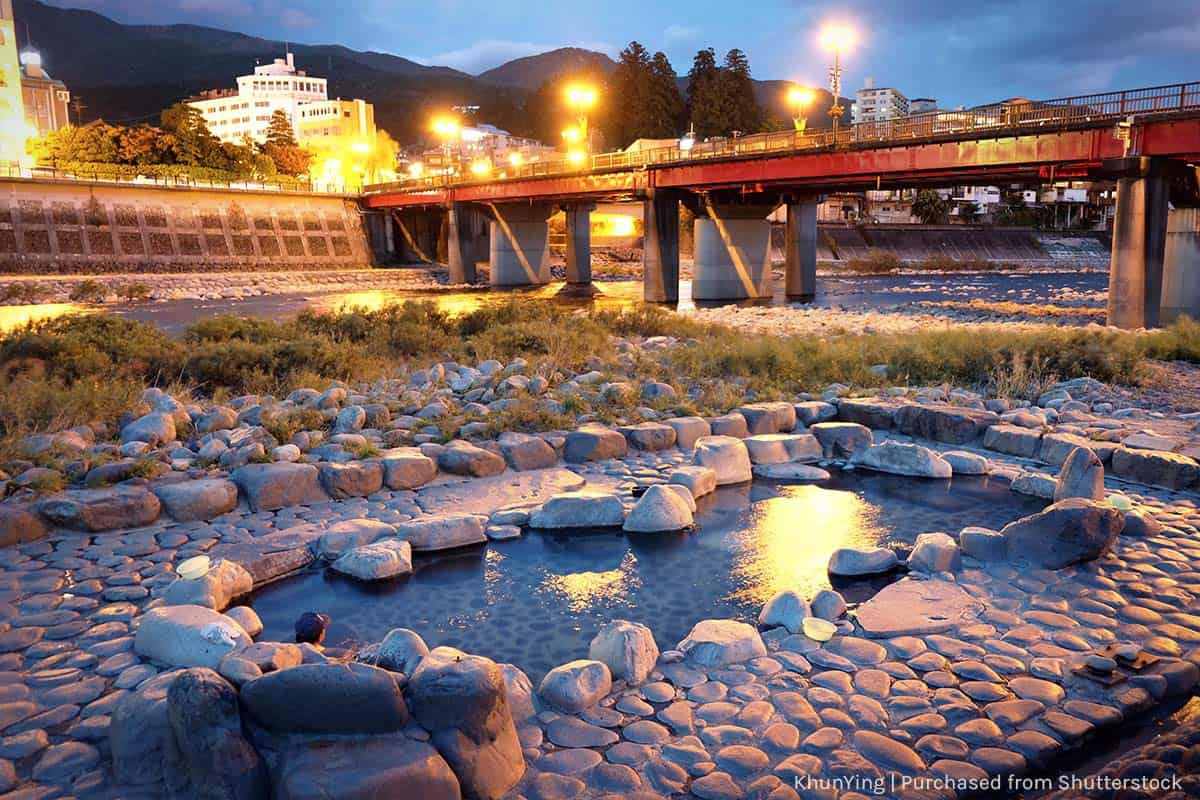
Gero City in Gifu is situated between Takayama and Nagoya, making it a great stopover when traveling between these two points. Blessed with lush forests and mountains, the city provides a visual feast while you stroll around the area. With the Hide River and Maze River sustaining the land and its proximity to Mt. Ontake, the second highest volcano in Japan, it’s not surprising that this unassuming city became famous for its hot spring baths.
Aside from the three public hot spring baths, many hotels and ryokans in the city have onsen facilities too. And if you happen to visit in winter, the city gets livelier because of the fireworks display that happens every Saturday.
Nearest Station: JR Gero Station
How to Get There: From JR Takayama Station, take the Limited Express Wide View Hida train to JR Gero Station. The fare is ¥990 plus seat fee. The travel time is about 45 minutes. If you are coming from JR Nagoya Station, take the Limited Express Wide Hida train to JR Gero Station. The fare is ¥2,310 plus seat fee. The travel time is approximately 1.5 hours.
Designated a core city by the national government, Gifu City also serves as the capital of Gifu Prefecture. Because of its strategic location, many warlords attempting to unify the country made Gifu their base. Blessed with fertile land and other natural resources, the economy is mainly driven by both traditional and tourism industries. The city is well-known for its Cormorant Fishing on Nagara River. Other attractions that draw tourists are the festivals, the national parks and Mt. Kinka, Gifu Castle, Gifu Park, Bairin Park, shrines and temples, and museums.
Nearest Station: JR Gifu Station
How to Get There: From JR Nagoya Station, take the train to JR Gifu Station. The fare is ¥470 and the travel time is around 25 minutes.
Getting There and Getting Around
Chubu Centrair International Airport (also Central Japan International Airport) is the region’s main gateway and one of Japan’s busiest airports. It is actually located in Tokoname City in Aichi but is also often associated with Nagoya, the largest city in Chubu and the capital of Aichi Prefecture.
It is also possible to access the region from Osaka (Kansai Airport). Because of the proximity of Kansai and Chubu regions to each other, many travelers combine the two in one itinerary. If you plan to do the Osaka-Kyoto-Nagoya route and want to visit some or all of the abovementioned places in Chubu, you might want to consider getting the Takayama Hokuriku Area Tourist Pass .
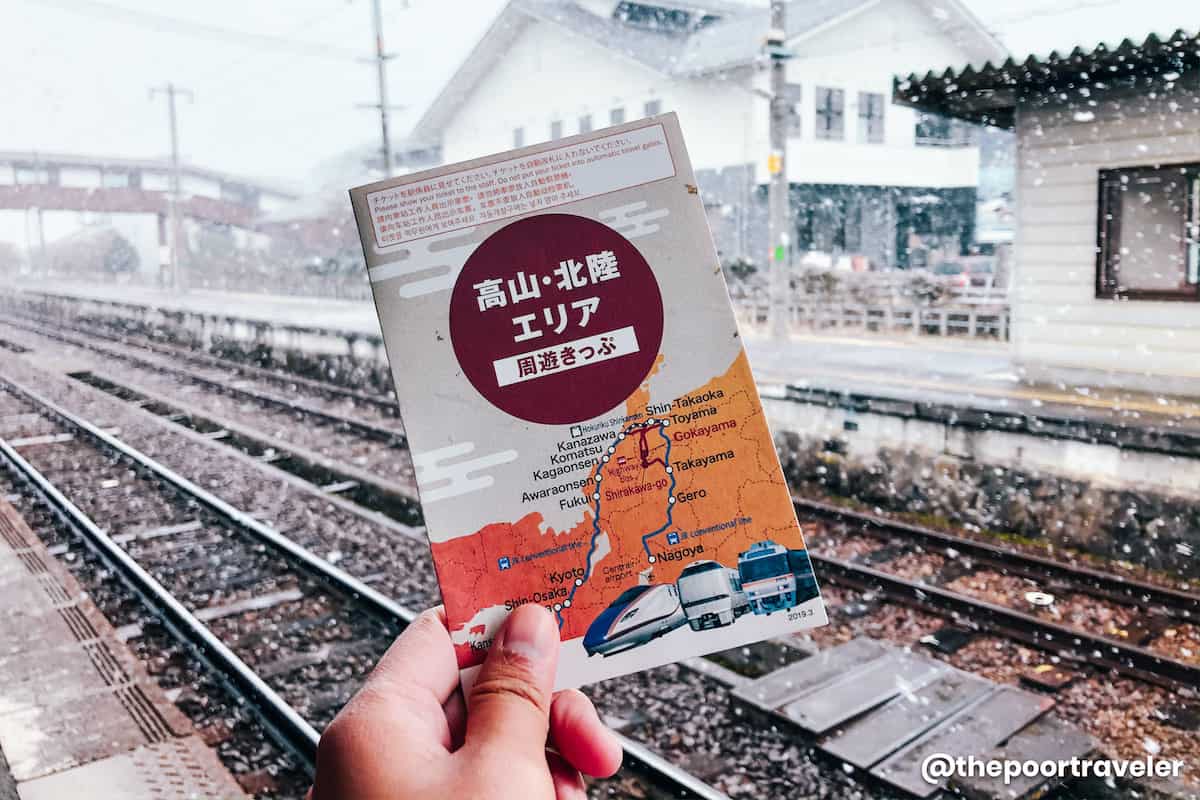
On our most recent trip to the Chubu Region, JR Central let us use this pass so we could see for ourselves how far it could take us.
You can save a lot on transportation fares especially if you’re on a multi-city trip. It gives unlimited rides on JR local and limited express trains, Hokuriku Shinkansen and buses in these areas:
- some areas in Kansai (Osaka, Kyoto, Kansai Airport)
- Hokuriku area (Fukui, Ishikawa, and Toyama)
- Gifu (Gero and Takayama as a jump-off point for Shirakawa-go)
The price of the pass is higher when you purchase in Japan, so if you want a discounted rate, purchase outside Japan or reserve online. Klook is offering this discounted rate for the 5-Day Takayama Hokuriku Area Tourist Pass.
2020 • 3 • 17
More Tips on YouTube ⬇️⬇️⬇️
Is this post helpful to you?

Related Posts:
- Donguri Okonomiyaki Dining in Kyoto, Japan
- Hotel Chuo Oasis in Osaka, Japan
- SAPPORO ON A BUDGET: Travel Guide & Itinerary
- TOKYO DISNEYLAND & DISNEYSEA: Guide for First-Timers
- SHIRAKAWA-GO ON A BUDGET: Travel Guide & Itinerary
- FUKUOKA TRAVEL GUIDE: Budget Itinerary, Things to Do
- How to Get from NEW CHITOSE AIRPORT to SAPPORO & OTARU
- 15 MUST-TRY FOOD TREATS IN KYUSHU (Fukuoka, Nagasaki, Kumamoto, Oita & Saga)

- Recent Posts
- 2024 STILTS CALATAGAN Beach Resort Travel Guide with Itinerary & Budget - 7 April 2024
- TOKYO SKYTREE TRAVEL GUIDE: Know Before You Visit! - 30 March 2024
- 37 BORACAY TOURIST SPOTS & Things to Do (with Prices!) - 6 November 2023
Thank you very much for the very informative vlog!
Been wanting to visit Kanazawa whenever I take a trip to Japan, but never got the chance to actually go there. Also, I have been binge watching these travel vlogs and videos about Takayama and Gifu which led me to your YT video and also this post.
May I ask how did you plan your hotel accommodation while visiting these destinations? Did you check-in at one hotel (strategic for all locations), or needed to transfer hotels during this trip? Though it seems a hotel from the Takayama Station is accessible to most of these places. I am planning to visit Fukui, Kanazawa, Gifu and Tayakama specifically.
Looking forward to your tips on this as I was inspired to push through visiting the Chubu region in my next trip. Thank you!
very informative article I want to visit Japan because Japan is really a beautiful country and no doubt also a rich culture country which also depicts in your article. After reading your article I don’t miss central Japan I think it’s a lot of attraction there, thanks for sharing your experience.
Featured On

We heard you!
Your comment is now queued for moderation! We’ll try to get back to you soonest. While waiting, follow us on these channels.
Subscribe on Youtube! Follow us on Instagram!

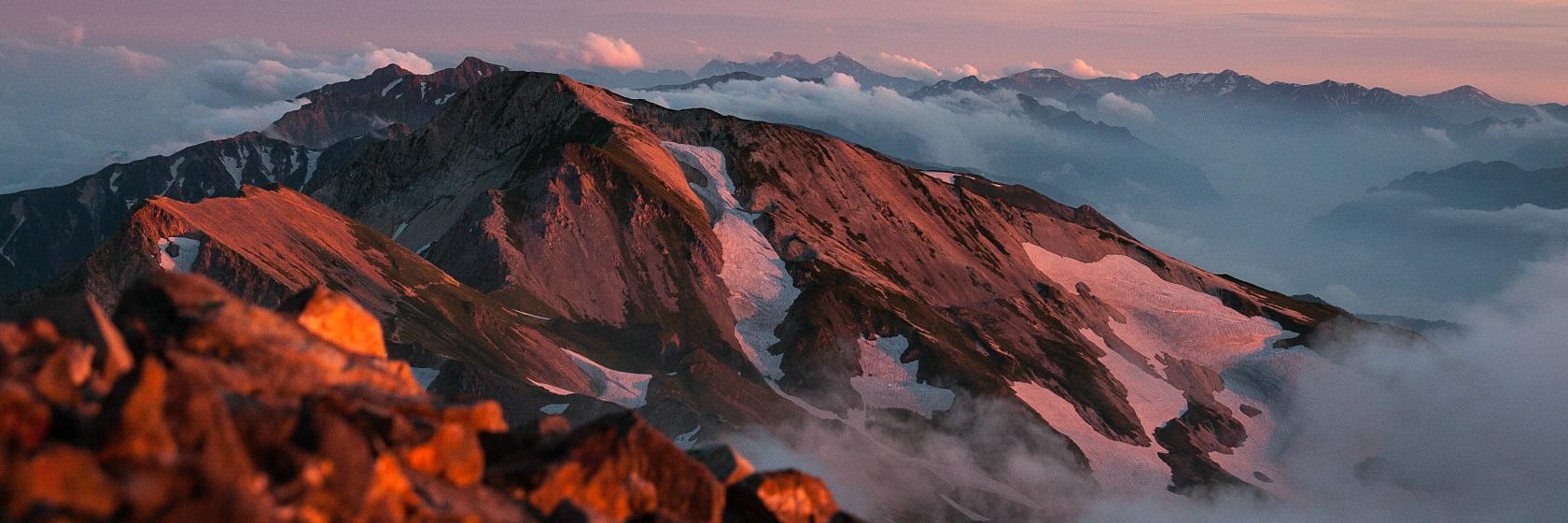
Chubu Region
The Chubu Region (�����n��, Chūbu Chihō, literally "central part") consists of nine prefectures and is located in the center of Japan's largest island Honshu. It it the site of many of Japan's tallest mountains, inlcuding Mount Fuji and the Japan Alps.
The prefectures along the Sea of Japan ( Fukui , Ishikawa , Toyama ) are also known as the Hokuriku Region , while the southern part ( Shizuoka , Aichi , Gifu ) is also known as the Tokai Region . Yamanashi , Nagano and Niigata make up the Koshinetsu Region .
Top destinations in Chubu
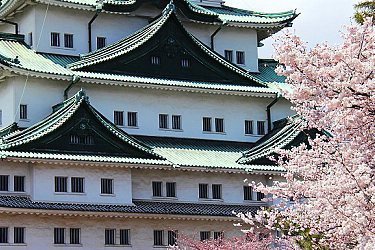
Nagoya •
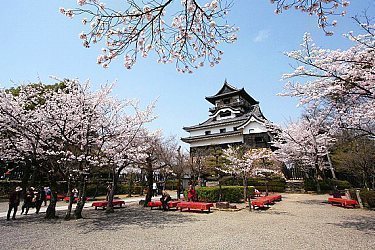
Izu Peninsula •
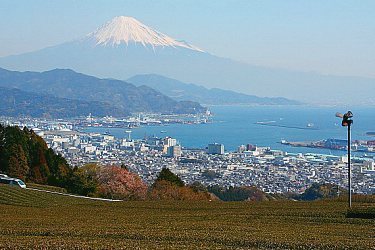
Lake Hamanako
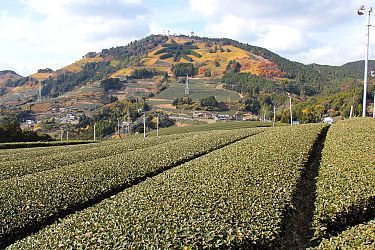
Shirakawago & Gokayama ••
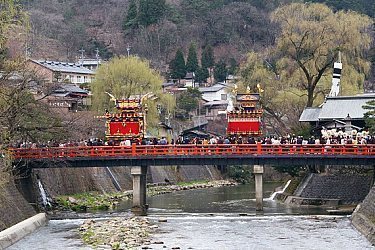
Takayama ••
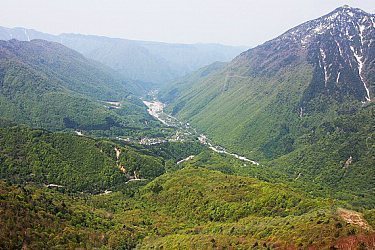
Okuhida •
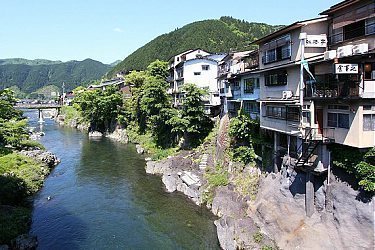
Gujo- Hachiman •
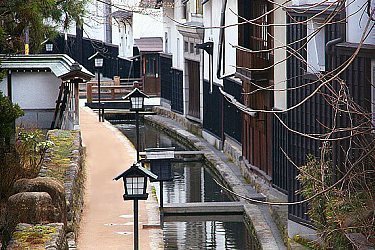
Furukawa •
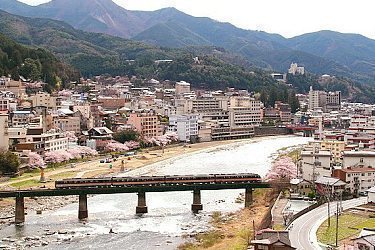
Sado Island •
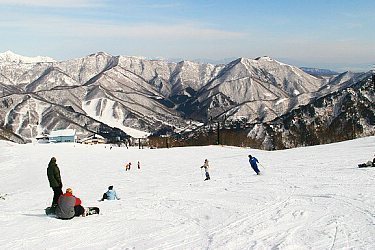
Yuzawa •
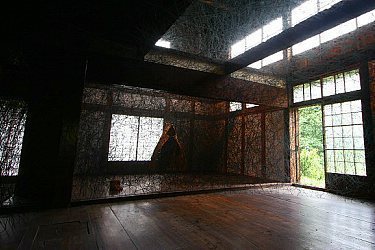
Echigo Tsumari •
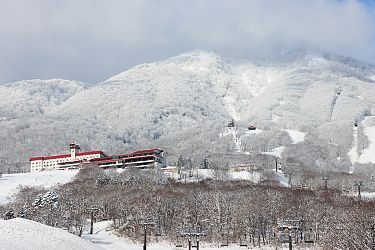
Kamikochi ••
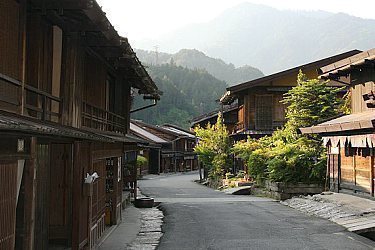
Kiso Valley ••
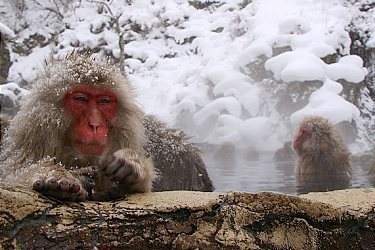
Yamanouchi ••
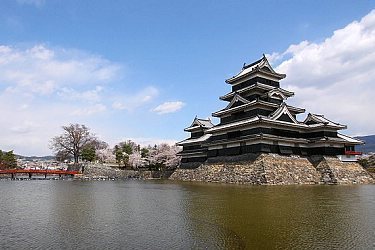
Matsumoto •
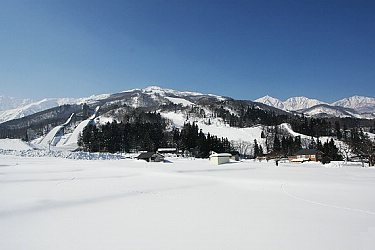
Hakuba •
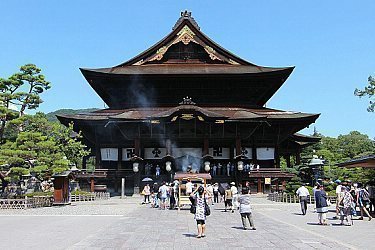
Nagano •
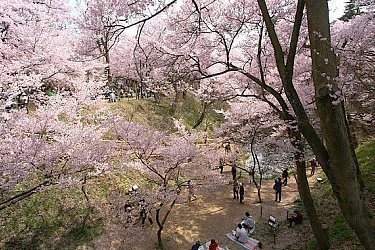
Takato Castle Park
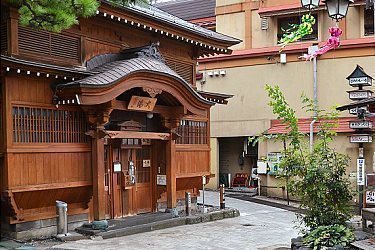
Nozawa Onsen
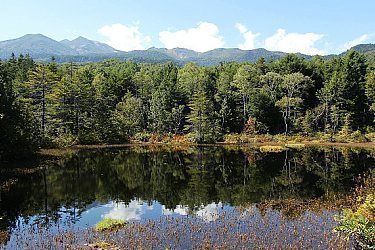
Bessho Onsen
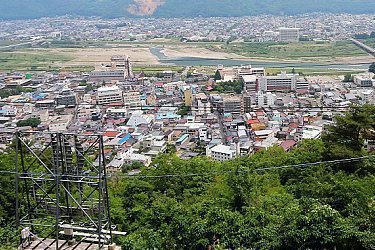
Togura Kamiyamada
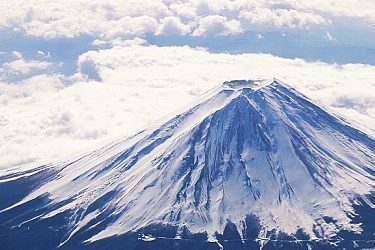
Mount Fuji •••
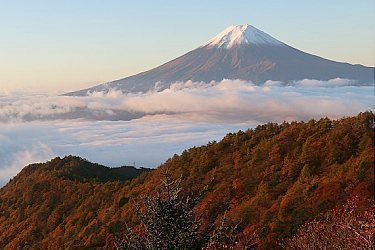
Fuji Five Lakes •
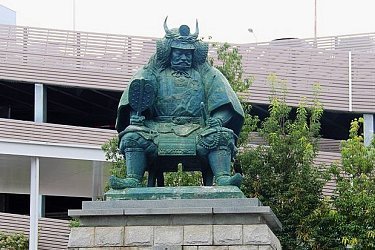
Alpine Route ••
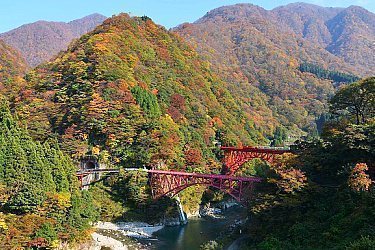
Kurobe Gorge •
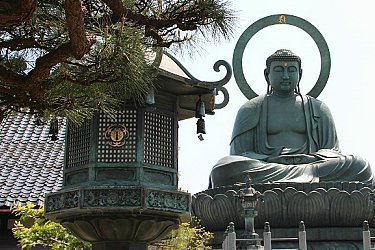
Kanazawa ••
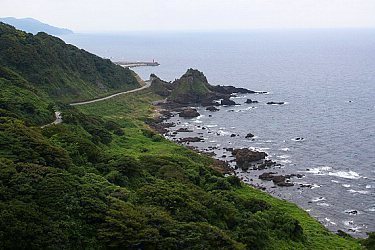
Noto Peninsula
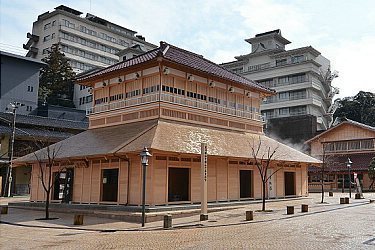
Questions? Ask in our forum .


Chubu Itinerary: Explore Central Japan’s Best (5 Days, More or Less)
by Aileen Adalid Itineraries , Japan 30 comments
- A Beauty in the Loire Valley of France: Chateau de Chenonceau (Travel Guide)
- How to Get Proof of Onward Travel (5 Best Legal Ways)
- 94th European Motor Show Brussels 2016: Go Car Crazy + Win a BMW i3 with AXA Belgium
- Indonesian Food: Top 10 Must-Eat Local Dishes in Indonesia
- Shop Local: 30 Unique Valentines Day Gift Ideas for Him & Her Couples (Philippines Online Shopping by Category)
- 30 Best Travel Apps Every Traveler Should Have: FREE to Use (2024 Essentials)
- How to Apply for a Belgium Schengen Visa for Filipino Tourists (Manila, Philippines)
- A Memorable Stay: The ‘Suite Life’ at Dusit Thani Manila, Philippines
- Polar Plunge Antarctica: The Day I Swam in the White Continent’s Icy Waters
- All About YOU: Letters from My Readers / Volume 4
Japan has over 43 prefectures under 8 regions. To date, most tourists seemingly only focus on the regions of Kantō and Kansai where places like Tokyo , Kyoto , and Osaka are found. But if you’re like me who wants to discover the hidden gems of the country, there is a region on the top of my mind that I would highly recommend to you: the Chubu region (中部地方 Chūbu-chihō ) — which is also called as Central Japan (中部日本). (Chubu Itinerary)
With over 9 prefectures, Chubu is located between Kanto and Kansai regions in Honshu island; therefore, if you’re making your way to the typical top 3 Japanese cities that I previously mentioned above ( often referred to as the ‘Golden Route’) , it should not be a problem to make a stopover in Chubu region during your travel itinerary.
After all, with Chubu’s diverse landscapes, there is surely an array of unique activities, food, and attractions that you can find in the region — trust me when I say this because I had the opportunity to explore this area myself and I was simply blown away!
(Love and thanks to the invitation of the various Japanese organizations who have invited me: JTB, Toyama Prefecture, Nagano Prefecture, Gifu Prefecture Tourism Federation, Central Japan International Airport and Hokuriku-Shin’etsu District Transport Bureau).
And so, to give you a head start, I will be detailing below a sample 5-day itinerary across some of the key spots in Chubu or Central Japan. To offer you even more travel ideas, I will also show a section called ‘Extra Days’ that will suggest other regional activities or destinations that you can use as a substitute in case things are not to your fancy. With this, you can easily modify your schedule, such as lengthening or shortening your Chubu trip as dependent on your travel time and travel style.
All in all, I hope this helps make your travel planning easier so that you can make the most of your stay in this off-the-beaten-track destination!
RELATED READ: Sample Japan Itineraries
Table of Contents
ChubuTravel Guide
» quick travel planning.
- Top tours & experiences
- Find flights to Japan
- Visa requirements
- Best hotels & hostels
- Travel insurance (5% discount)
- Stay connected
– – –
» Best Time to Visit
Any time and any season! May it be spring, summer, autumn, or winter, Central Japan or Chubu has a ton of destinations and experiences that can fill your travel needs. For instance, there are breathtaking sakura or cherry blossom viewing in the spring, great hiking trails in the summer on Kamikochi , picturesque sightseeing rides in autumn at Kurobe Gorge , and exciting ski resorts or attractions in the winter in Niigata or through the Tateyama Kurobe Alpine Route.
- WINTER: Dec to Feb
- SPRING: March to May
- SUMMER: June to Aug
- AUTUMN: Sept to Nov
» Getting in to Chubu
By air. You can fly to Tokyo’s Narita Airport and take a shinkansen (bullet train) to any major city in Chubu with a help of a Japan Rail Pass ; however, your best choice is to fly in directly to Chubu Centrair International Airport — this is Japan’s 3rd major international gateway that’s located on an artificial island 30 minutes south of Nagoya (the largest city in Chubu). In order to find the best flight deals from your point of origin, I recommend browsing through Skyscanner .
By train. Japan’s railways are well-connected; so if you’re coming from Tokyo, you can easily reach, for instance, Nagano on the Hokuriku Shinkansen or Nagoya on the Tokaido Shinkansen . If your destination is someplace else, just use Google Maps to map out your train route.
» Visa for Japan
If you’re NOT a citizen of any of Japan’s exempted countries , you are then required to avail of a visa beforehand. (If you’re from the Philippines, you can read my guide on how to get a Japan visa in Manila here .)
- Check full visa requirements here as per your nationality.
» Where to Stay (Chubu Accommodations)
To search for the best hotel accommodation in Japan at the best prices, I suggest cross-checking hotel prices between Agoda and Booking.com . But if you’re rather interested in renting comfortable houses or apartments, you should search through AirBnB .
» Japan Currency
Japanese yen (JPY / ¥) wherein ¥100 is equal to about USD $1~ / €0.85~ / Php 45~ (this is as of March 2020). In the event that you want to exchange your money for JPY, I highly advise that you do NOT exchange your money at the airport since the rates there are not competitive.
- How to best exchange your currency? Either exchange it at a bank or at a money exchanger in your home country or in Tokyo’s city center. Better yet, just withdraw from an ATM with your debit/credit card — however, you must do one big withdrawal to minimize fees with your bank. Speaking of cards, a lot of Tokyo’s establishments accept credit cards but it’s always advisable to have cash on hand because a lot of smaller shops do not accept international credit cards.
» Cost of Travel in Japan
A lot of people have the misconception that Japan is an expensive destination; however, it is totally possible to travel on a budget! Just take note that accommodation rates typically go up during peak season (March to April in Spring and November in Autumn) .
To give you an idea, you should expect to travel in Japan with an average daily cost of about USD $45~ per person on a budget, or at least $120~ if you want to experience more comfort on activities, tours, hotels, and more. (Values below show low budget to medium budget ranges).
- Hotels: $25 to $120 USD / day
- Food: $12 to $30 USD / day
- Fun: $5 to $20 USD / day
- Transport: US$1 per subway ride*
*FREE subway and bullet train rides if you hold a Japan Rail Pass
» How to Get Around Chubu Prefecture
If you won’t be renting a car, it’s highly likely that most of your Chubu itinerary journey (hopping from one city to the next) will be done with either local trains or shinkansen trains. That being said, it helps to avail rail passes beforehand. For such, you can purchase the Japan Rail Pass (JR Pass) which gives you unlimited travel on JR trains nationwide (which is a great deal especially if you’re traveling to places other than Chubu region) — however, if you plan to only concentrate in Chubu itself, check by this page for packaged rail passes in the region.
Personally, I would highly recommend that you buy the Alpine-Takayama-Matsumoto Area Tourist Pass which gives you unlimited rides on JR express trains between Nagoya to Toyama, as well as unlimited use on all transportation within the Tateyama Kurobe Alpine Route for 5 days — which then makes it the PERFECT pass for the itinerary that I will be showing below.
Still and the same, I would recommend using Google Maps for mapping out your day-to-day route because it will show in detail the fastest connections you can do (by walking, by car, by bus, and by train) . I use it a lot in my travels and it’s very accurate! You can download areas on the map so you can use it offline, but it’s best to have your own pocket WiFi or SIM Card to stay connected online.
» Staying Connected in Japan
Japan has one of the fastest internet connections in the world so you’re assured of great connection wherever you go. Hotels and most shops (even convenience stores) offer FREE WiFi connections — but in order to stay connected online at all times during your Japan trip, I recommend getting your own pocket WiFi or a SIM Card .
» Safety in Japan
Japan is one of the safest countries in the world with very low crime rates. I have been traveling solo to this country many times now and I have never felt unsafe even in the late hours of the night — however , this is NO excuse to get too complacent. ‘Little crime’ does not mean ‘no crime’, so stay vigilant and be “street smart” by using your common sense at all times.
Nevertheless, the Japanese people are one of the kindest and most respectful people I have ever met, so solo travelers don’t have much to worry in this amazing country.
- HOW TO: Find the right travel insurance for you
» Helpful Japanese Phrases
Japan may be one of the most developed countries in the world, but a lot of the locals don’t speak English. However, this should not discourage you from traveling to this country because apart from the fact that there are a lot of translation apps that will help you understand and speak Japanese, a lot of the locals are also making the effort to learn and use the English language.
- RELATED READ: Best translation apps for travel
Anyhow, below are some helpful Japanese phrases that will help you along the way! And even if you do encounter a Japanese who can speak English, it doesn’t hurt to say a word or two in their language.
Hello: Konnichiwa ( Kohn-nee-chee-wah ) Thank you (normal): Arigatō. ( Ah-REE-gah-tohh ) Thank you (less formal): Arigatō gozaimas (Ah-REE-gah-tohh goh-zahy-mahs) Thank you (informal): Dōmo (DOHH-moh) Yes: Hai (Hai) No: Iie (E-eh) Goodbye (long term): Sayōnara (Sah-yohh-nah-rah) Goodbye (informal): Ja ne (Jahh neh)
Excuse me: Sumimasen (Soo-mee-mah-SEN) I’m sorry: Gomen nasai (Goh-men-nah-sahy) Is there someone here who speaks English?: Dareka eigo ga hanasemasu ka? (Dah-reh-kah ey-goh gah hah-nah-seh-mahs kah?) Help!: Tasukete! (Tahs-keh-teh!) Cheers!: Kanpai! ( Kan-pie!)
Chubu Itinerary
Before I begin with the itinerary guide, if in case you’re more of a video person, you can already watch my Youtube travel vlog below to get a ‘ brief peek’ into the Chubu itinerary that I did!
NOTE: The following section is in a tabbed format; so, in order to see the next day’s contents, just click the headings below. Also, take note that the 5-day Chubu itinerary below does not take into account your arrival day — at any rate, if you’re staying longer in the region, you can make use of the last tab called ‘Extra Days’ to see the other activities or trips you can do for filling up the rest of your vacation days.
Touchdown to Nagoya and Gujo City
Nagoya , the largest city in the Chubu region, was my starting point for this journey — and it will be my end point by the end of this 5-day trip. It helps to note that I first arrived in the area by flying in to Chubu Centrair International Airport.
From there, it’s very easy to reach the city by riding 2 trains: Meitetsu -Limited Express and then Meijo Line (both takes about an hour in total at a price that starts from ¥1,410.)
◘◘ Explore the dynamic city of Nagoya
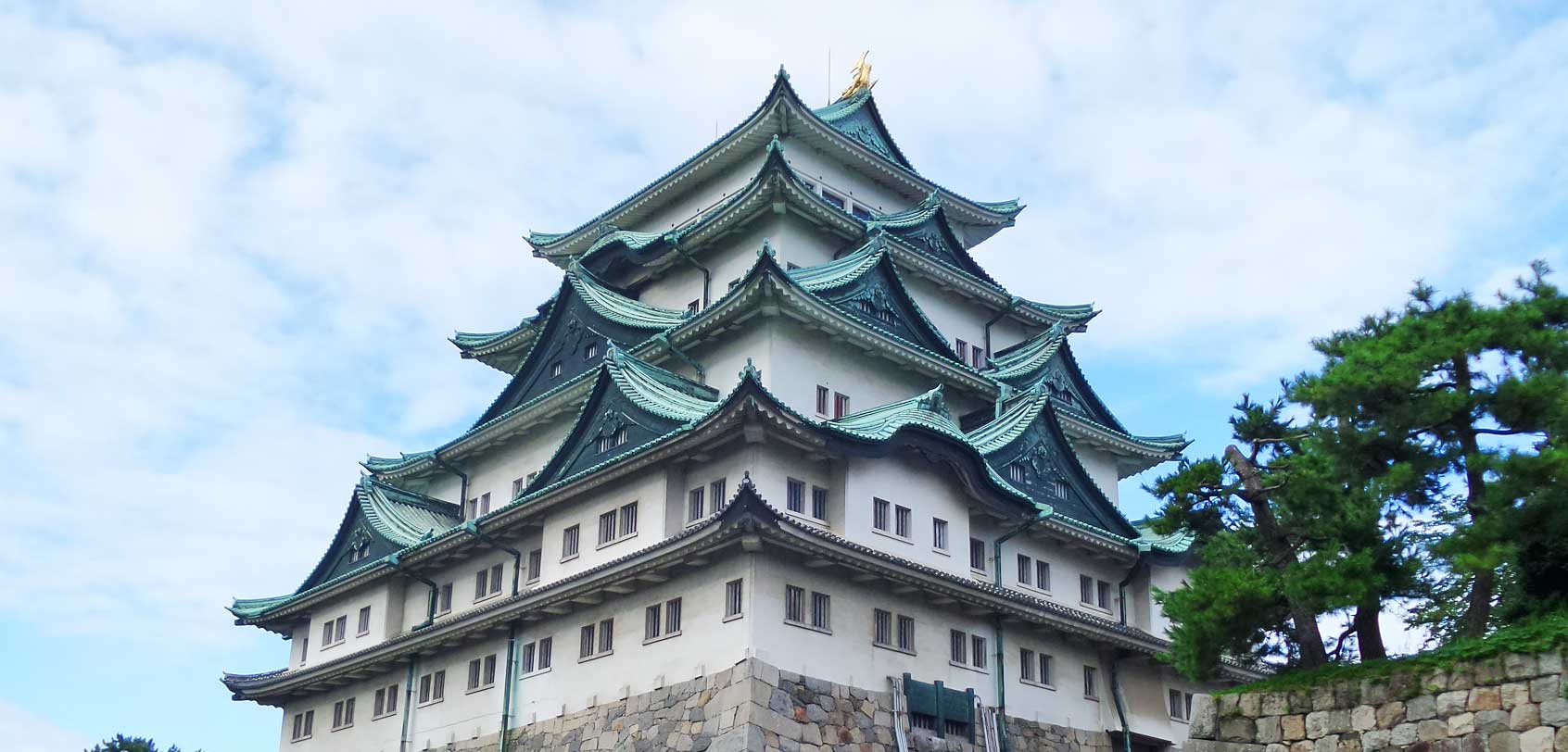
Nagoya is predominantly a manufacturing and shopping hub in Honshu . With that, some would notice the lack of ample historical buildings in the area… and well, that’s mainly because most of them were destroyed in the air raids back in 1945 .
Nevertheless, the city still has SO much to offer to its visitors and the #1 attraction that should come to your mind for your Chubu itinerary is the towering presence of Nagoya Castle which also becomes a spectacular hanami ( sakura or cherry blossom watching points ) in the spring. Other notable sights in the city would be:
- Railway Museum : featuring the advances in Japan transportation like world-record-setting experimental shinkansen and more
- Atsuta Shrine: one of the Shinto faith’s most important shrines because it has the Sun Goddess, Amaterasu , as well as one of the 3 imperial regalias, the sacred sword Kusanagi.
- Korankei : a valley near the city which is a terrific place to visit during the autumn season.
- Toyota sights: as Japan’s leading manufacturer, Toyota has its headquarters in Nagoya and they have various areas in the city where you can either do plant tours or museum visits.
- Nagoya City Science Museum: houses the world’s largest planetariums.
If staying in Nagoya for a long time for your Chubu itinerary, I would recommend the following: Budget : Fushimi Mont-Blanc Hotel / Mid-Range : Hotel SunRoute Plaza Nagoya or AirBnB / Luxury : Nagoya Marriott Associa Hotel
Fun tours in Nagoya?
Come and check out this list of the top tours in Nagoya which features the best activities to do in the city!
◘◘ Walk around Gujo Hachiman’s highlights & try your hands at making Japan’s famous sampuru
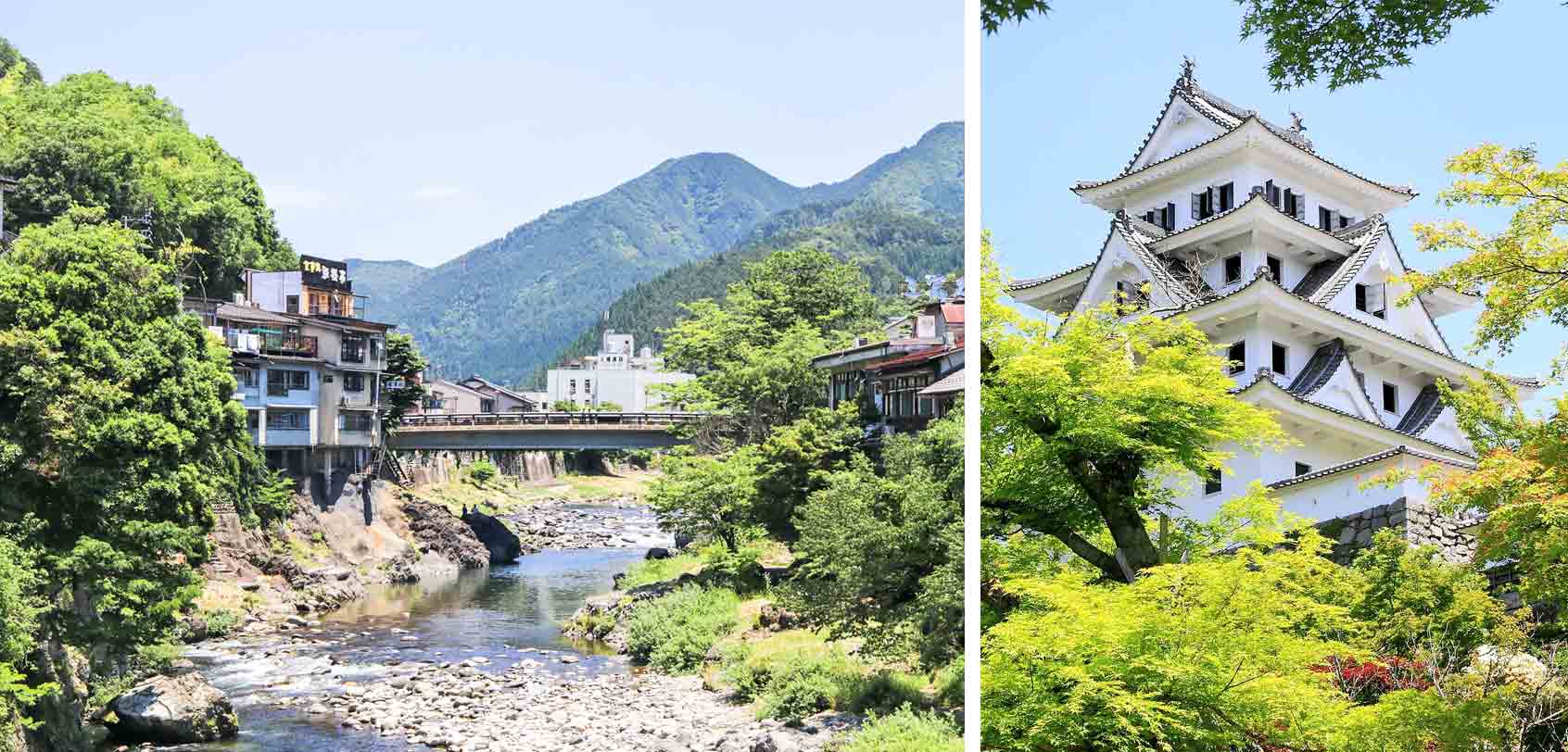
Gujo Hachiman is a charming old castle town that’s actually famous for its food and dishes called as ‘ sampuru ‘. And well… these are actually inedible and they are those fake food or food replicas that you usually see in front displays of Japanese restaurants. It is said that 80% of Japan’s sampuru are made in Gujo ; and because of this, there are workshops in town where you can try your hands on making your own. If you want to experience this unique activity, head over to my guide…
READ: Making Unique ‘Sampuru’ in Japan’s Fake Food Capital: Gujo Hachiman!
- TIP : For a hassle-free experience you can take a trip to this location from Osaka with this day tour (that also makes stops to Shirakawa-go and Lake Biwa!
Once you’re done with making sampuru , you can explore the rest of Gujo’s sights for your Chubu itinerary such as: Sogisui Source (to witness Gujo’s famous water system), Jionzenji Temple (a Zen temple with a beautiful Tetsuso-en Zen garden), Hachiman Castle (with a gorgeous hilltop location), and so much more!
For a complete travel guide on things to do in Gujo :
READ: Top 10 Things to Do in Gujo Hachiman City (Gifu, Japan)
◘◘ Visit Bokka no Sato

This is basically a picturesque farming theme park that provides its visitors with an array of hands-on experiences such as dairy farming, horse riding, milking of cows, baking bread, and so much more! You can also witness their vast 4.5-hectare flower gardens in full bloom during Green Season which is from mid-April to mid-November. But just take note: tulips are in the spring, lavender in the summer, and cosmos in autumn.
While you’re here for your Chubu itinerary and you eventually finished admiring the fields and the animals, you can refresh yourself in their open-air onsen (hot spring) facility called Makihana.
WEBSITE : https://www.bokka.co.jp/en.php ADDRESS : 2756-2 Takasucho Washimi, Gujo-shi, Gifu ADMISSION : without onsen = ¥1,130 for adults, ¥930 for junior and high school students, and ¥610 for 4-year-olds to elementary students DIRECTIONS : From Gujo-Hachiman train station, ride the Nagaragawa Tetsudo (heading to 各停 Mino-Shirotori ) and then get off at Mino-Shirotori Station. You can then take a taxi to Bokka no Sato which will take about 30 minutes.
◘◘ Travel to Takayama City and check-in to Hida Hotel Plaza
To get to Takayama , check the transportation route that you’ll have to take on Google Maps (fastest is to go by bus with Nohi Bus, Meitetsu Bus, and JR Tokai Bus). Once in Hida Hotel Plaza , enjoy a delightful dinner meal in one of the hotel’s restaurants (you should absolutely try Hida beef ). Afterward, you can enjoy the hotel’s amazing hot springs.
For other accommodation options — Budget : J-Hoppers Hida Takayama Guest House / Mid-Range : Best Western Hotel Takayama or AirBnB / Luxury : Honjin Hiranoya Kachoan
All about Takayama, Shirakawa, and Tonami
This day of your Chubu itinerary is all about old places and natural spots that are brimming with history and beauty; therefore, do make sure that you wear comfortable shoes and that you ready your camera!
◘◘ Enjoy the picturesque old streets and markets of Takayama City
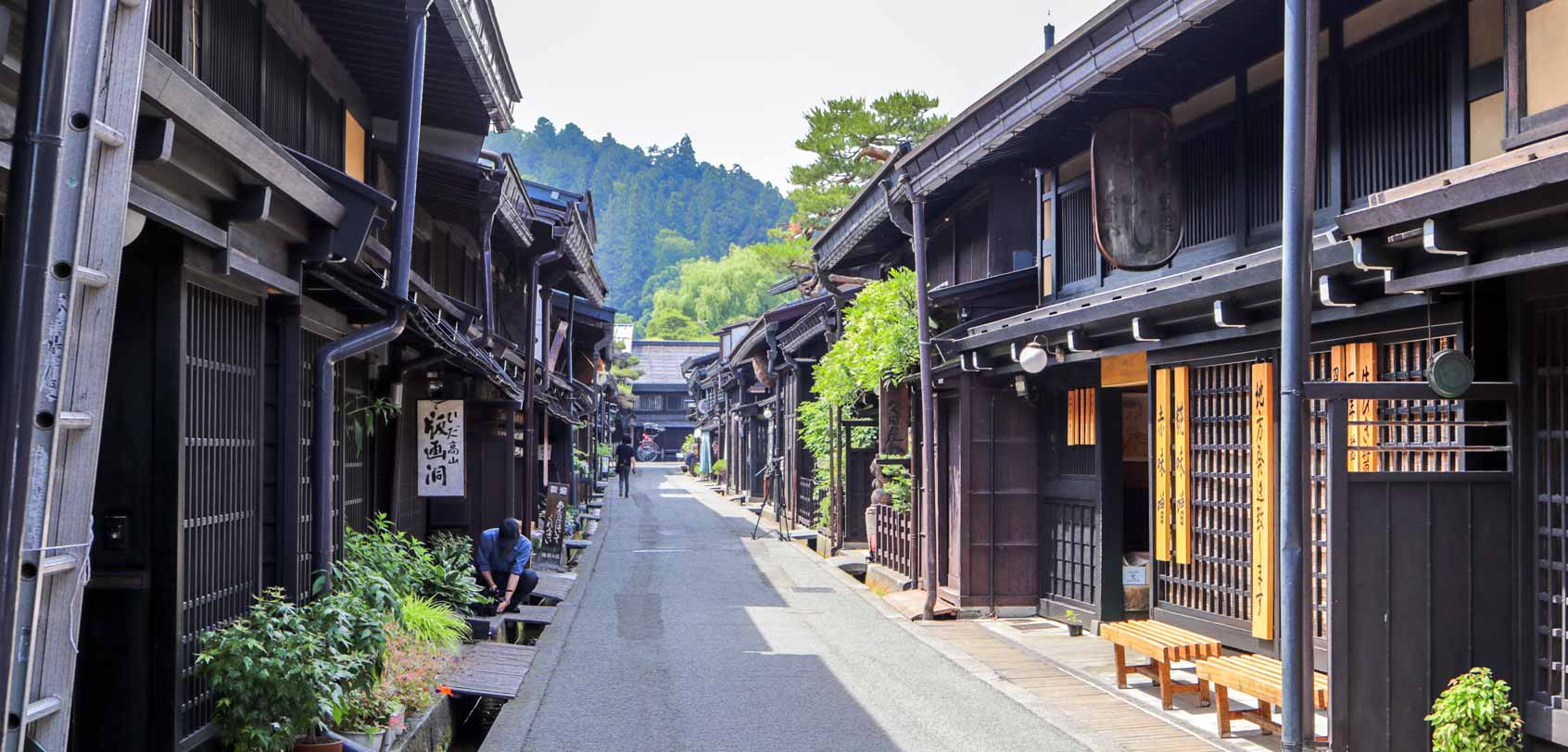
If you’re looking for a thoroughly old and authentic traditional village, stepping in to Takayama is a must. When I was strolling through this city’s Old Town, I truly felt like I was walking through Kyoto — but unlike Kyoto that is dominantly a modern city, Takayama rather retains its traditional touch. In fact, there are buildings here that date back to the Edo period (200 to 300 years ago) which all still remained intact. Some of my favorite places are:
- Sannomachi : this is the southern part of the Old Town where Edo period houses still exist. Due to its unique beauty and history, this area has become a protected sector by the Japanese government. Anyhow, as you go around, you will find several merchant houses that sell anything from food, sake (rice wine), miso (Japanese seasoning) and more. If I may share a tip, please make sure to try the Hida beef buns at Gyuman Kihachiro (喜八郎)!
- Morning Market: this market started more than 300 years ago and there are a ton of shops that sell unique products and ingredients daily. It typically starts at 7:00AM up till noon and you can find them at 2 spots: Jinya-mae Market in front of the Takayama Jinya , and the Miyagawa Market along the Miyagawa River in the Old Town.
- Hida Folk Village (Hida no Sato): this is an open-air museum that is a 30-minute walk away from the city (or a 10-minute bus ride from Takayama Station via Sarubobo Bus for ¥210 per ride). You can find over 30 traditional houses here from the Edo Period that are still being carefully preserved today.
Read more about my Takayama explorations here:
READ: Exploring Takayama: Japan’s “Little Kyoto of Hida”
◘◘ Travel to the UNESCO World Heritage Site of Shirakawa-gō
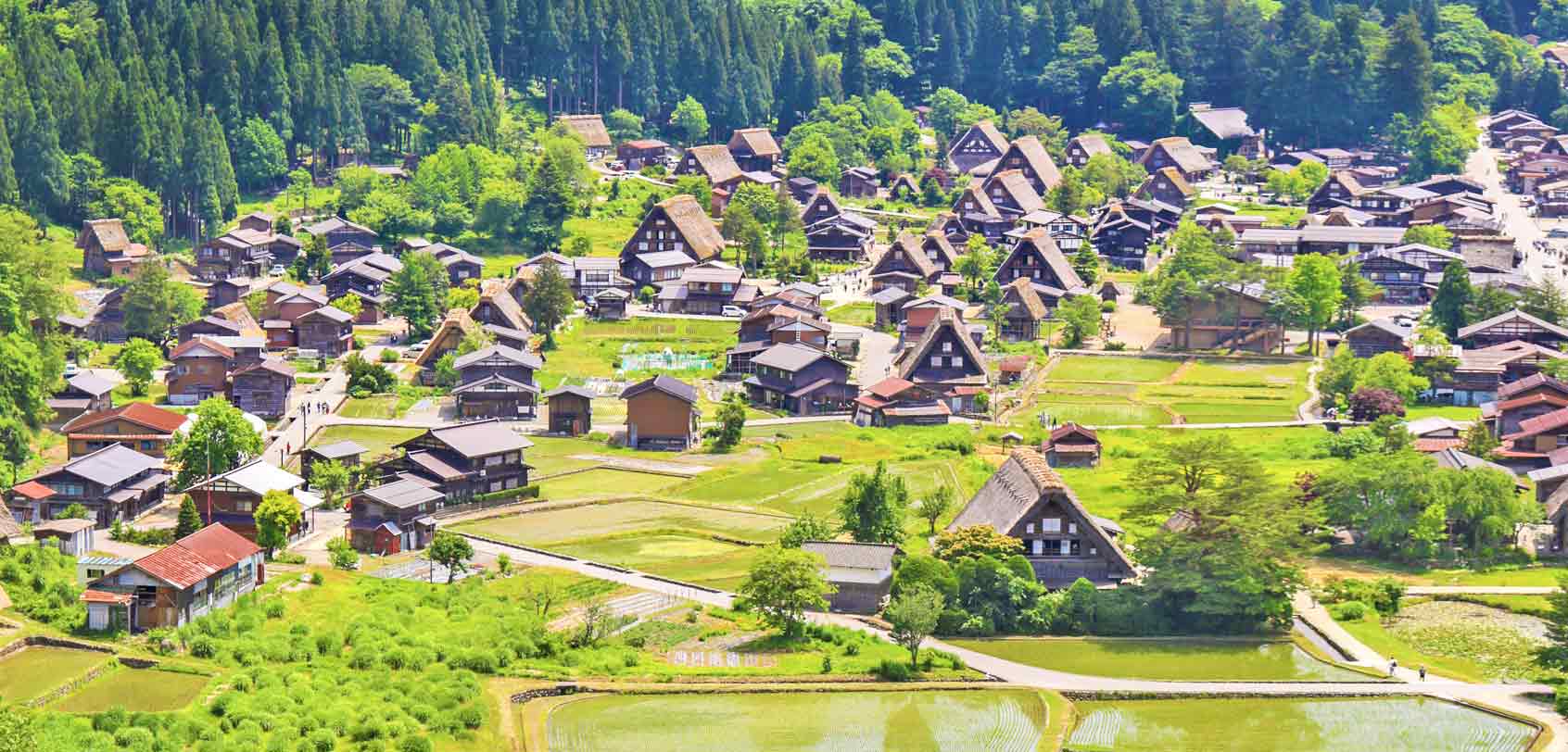
Lying beside the Shogawa River Valley in the remote mountains of Toyama prefecture are the UNESCO World Heritage Sites of Shirakawa-go (白川郷, Shirakawagō) and the neighboring Gokayama (五箇山) village. Both of these places are famous worldwide for their traditional gassho-zukuri style farmhouses that are styled like “hands in prayer”.
It’s said that some of the houses in these villages are over 250 years old and that the best way to experience the town is to stay overnight at one of the farmhouses. In the end, we didn’t manage to stay a night, but we did have a free schedule for the day. Henceforth, we opted to go to Ogimachi ( Shirakawa-go’s largest village and main attraction) mainly because it was easier to access than Gokayama .
We also wanted to see the inside of a typical gassho-zukuri farmhouse, so we made a stopover for our Chubu itinerary at Wada House (entrance fee at ¥300 for adults and ¥150 for children) where such is possible.
Wanna tour to Shirakawa-go?
You can join the following trips below: Day trip from Nagoya 2-Day tour to Shirakawa-Go from Osaka
Learn more about Shirakawa-go here:
READ: Discover the Historic Villages of Shirakawa-gō and Gokayama in Japan
WEBSITE: https://www.vill.shirakawa.lg.jp/en/ DIRECTIONS : From Takayama , you can take a regular bus that takes 50 minutes and costs about ¥2,450 (round trip at ¥4,420). To see the timetables, see here . You can also go by English-guided tour buses and you can do so by choosing either iSite Takayama or Nohi Bus (costs start at ¥4,400 roundtrip).
◘◘ Stop by Tonami and experience the Shogawa Pleasure Boat

This is a 1-hour lake cruise that travels from the Komaki Dam to the Omaki Spa in the Shogawa River valley. I highly recommend doing this leisurely cruise on your way to Kurobe area especially when it’s spring, autumn, and winter season because it’s the BEST time for witnessing the surrounding landscape’s stunning beauty!
WEBSITE: https://foreign.info-toyama.com/en/spot/ ADMISSION : 1-hour rides are at ¥2,800 for adults and ¥1,400 for children. For shorter cruises, it’s at ¥1,000 for adults and ¥500 for children. DIRECTIONS : Address is at = Japan, 〒932-0304 Toyama Prefecture, Tonami, 庄川町小牧27, and it’s best reached by car or taxi from Takaoka City (about less than an hour).
◘◘ Be enamoured by the colorful flowers in Tonami Tulip Gallery
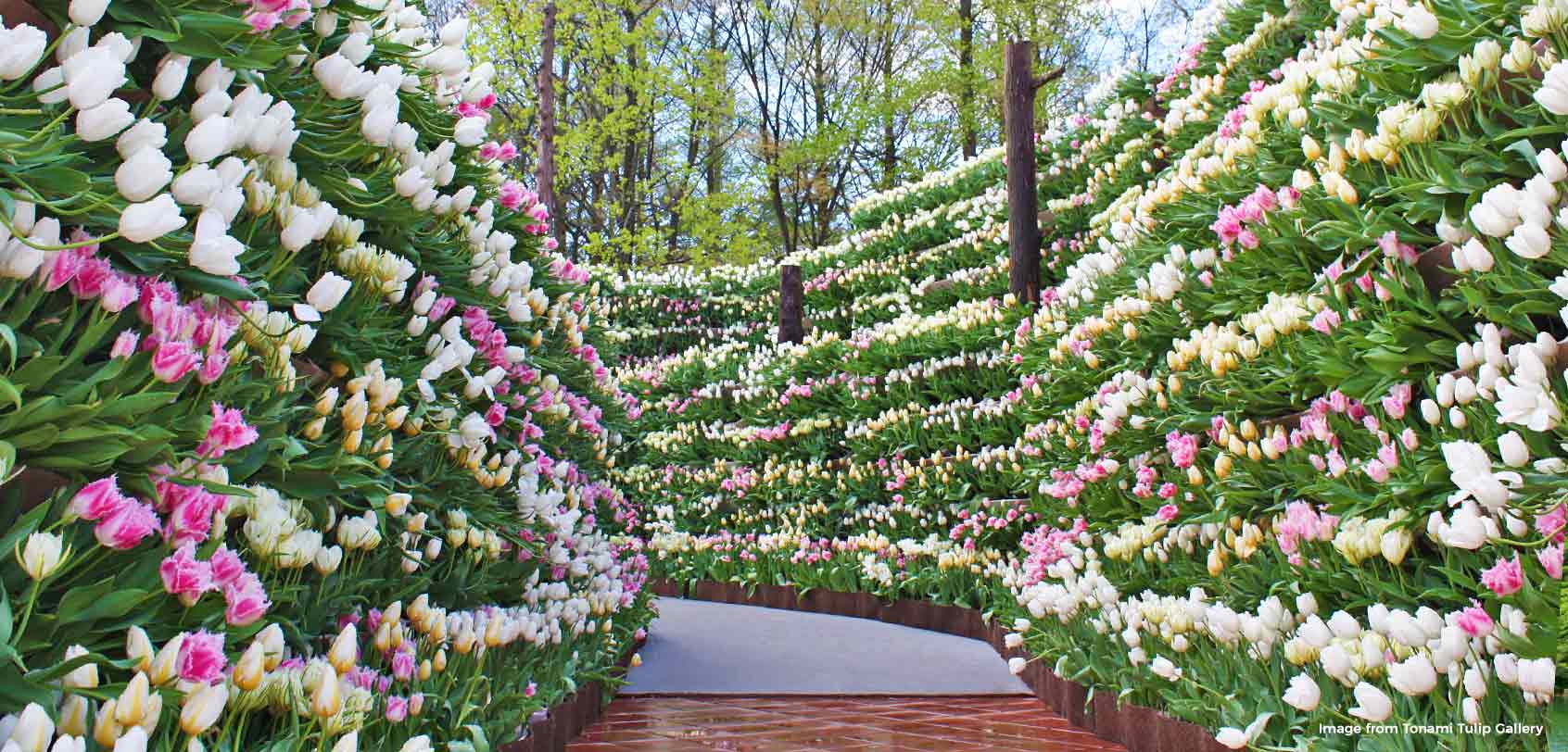
This is arguably the only place in the world where you can find tulips growing all-ye ar-round due to the technology that the establishment has developed. I’m so glad they discovered such a technique because when I stepped inside the gallery, it was a wonderful surprise when I found their Wonder Garden that was full of blooming colored tulips!After all, it wasn’t the season anymore for tulips when I visited.
Nevertheless, as you go further in, you’ll also find the ‘Under Farm’ section where there are more exhibits that explain the history and research of these colorful flowers.
TIP : For your Chubu itinerary, visit sometime around late-April to early-May and you can be a part of the famous Tonami Tulip Fair wherein the nearby park will transform into a wonderland that’s filled with varying set-ups of tulip flowerbeds (and even a wall of tulips)! …And oh, make sure to try their Tulip ice cream too when you visit.
To learn more about this place, read:
READ: Tonami Tulip Gallery: Where Tulips Bloom All Year Round!
WEBSITE: https://www.tulipfair.or.jp/en/ ADMISSION : for the gallery, ¥300 for adults and ¥150 for children. For the Tulip Fair, ¥1,000 for adults and ¥300 for children DIRECTIONS : If coming from Takaoka Station, ride the Johana Line heading to Johana and then stop at Tonami Station. From there, the Tulip Gallery is just a 10-minute walk away.
◘◘ Travel to Kurobe City and check-in to Unadaki Suginoi Hotel
From Tonami Station, ride the Johana Line heading to Takaoka. Get off at Takaoka Station and ride the Ainokazetoyama Tetsudo line heading to the direction of Tomari. Stop at Kurobe Station and then check in to Unadaki Suginoi Hotel .
Other accommodation options in Kurobe are: Budget : Green Hotel Kisen / Mid-Range : Entaijiso or AirBnB / Luxury : Ryokan Enraku
Exploring the Cities of Kurobe, Imizu, Takaoka and Toyama
This will be more of a relaxing day in your Chubu itinerary as you go through several cities in order to eventually arrive at Toyama.
Now of course, once you go through the itinerary below, it’s understandable that some activities would not be up to your fancy, so feel free to substitute them with other Chubu destinations as discussed under the tab ‘Extra Days’ later on in this post.
◘◘ Ride the sightseeing train: Kurobe Gorge
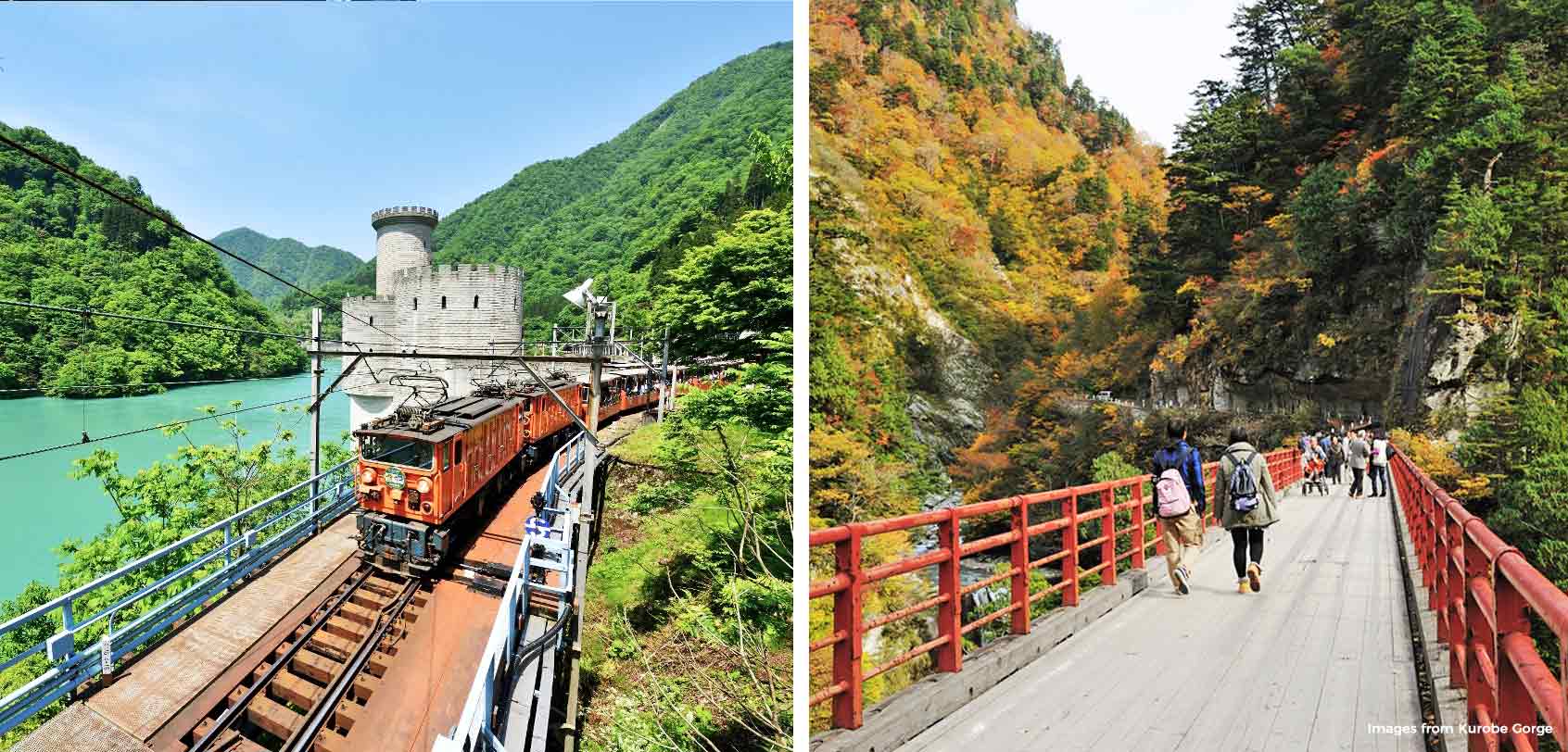
The Hida Mountains or the Northern Alps are one of the finest when it comes to natural beauty in Japan’s Chubu, so if you ride the Kurobe Gorge sightseeing train, you’ll surely be witnessing the best of such mountainous landscapes!
A bit of trivia: this railway was built to originally aid the construction of the Kurobe Dam; but today, it has become an 80-minute journey through Japan’s deepest gorge (narrow valley between mountains) that leads you through wonderful panoramic views, bridges, and tunnels. Take note that there are several stations that you can stop at, and they are…
- Unazuki: this is the departure station in Kurobe Gorge. Before you get on the train, you can explore some parts of the town such as the quaint Tochinoyu (a small public onsen), the great view over Shin Yamabiko Bridge (the red bridge that marks the entrance to Kurobe Gorge), a few museums (Selene Museum of Art documenting the surrounding nature and Kurobe River Electic Memorial Hall featuring the history of electricity production in Kurobe River), and several walking trails to the direction of the gorge.
- Kuronagi: this station offers marvelous views over the blue Atobiki Bridge. If you walk for 20 minutes away from the station, you’ll reach the Kuronagi Onsen ryokan (Japanese traditional inn).
- Kanetsuri: you will find a riverside onsen bath just down the trail from this station as well as a semi-permanent snowbank called Mannen Yuki . The snow there can often pile so deep that it can last through summer!
- Keyakidaira: this last station has a lot of amazing spots namely Sarutobikyo Gorge (a gorge cutting into a rock by the Kurobe river), Okukane Bridge (an Instagram-worthy red bridge), Ashiyu (a foot bath below the Okukane Bridge), and Hitokui Iwa (a path found over the Okukane Bridge that has been cut into the steep cliff).
TIP: For your Chubu itinerary, it’s best to come from late-October to early-November to witness the incredible autumn foliage around the gorge WEBSITE: https://www.kurotetu.co.jp/en/ HOURS: 8:00AM to 4:30PM (last departure at 3:40PM) ADMISSION: ¥1,710 yen (one way from Unazuki to Keyakidaira; you can purchase tickets going back to Unazuki at Keyakidaira) DIRECTIONS : From Kurobe city, go to Dentetsu-Kurobe Station to ride the Chitetsu Line heading to Unazukionsen. Stop at Unazukionsen Station and then walk for 2 minutes to the direction of Unazuki Station.
◘◘ Feast on fresh seafood at Shinminato Kitokito Market
If you’re driving a car, you can stop by this seafood market for lunch. Though… if it is possible for you to visit in the mornings, you can witness the unique and exciting auctioning process in the market as they sell the day’s freshest catch (famous of which are their King Crabs and Snow Crabs.)
ADDRESS: 1 Kaiomachi, Imizu, Toyama, 934-0023
◘◘ For Doraemon-lovers, stop by Fujiko Art Gallery
If you happen to grow up watching the famous Japanese cartoon/anime, Doraemon , this art gallery would be quite an interesting stop along the way so that you can learn more about the artist behind it all.
WEBSITE: https://fujiko-artgallery.jp/english/ ADMISSION : ¥500 for adults, ¥300 for high school students, ¥200 for 4 years & older or primary students, and FREE for 3 years & below ADDRESS : 〒933-0056, Takaoka Art Museum 2F (1-1-30 Nakagawa, Takaoka, Toyama) DIRECTIONS: From Unazukionsen Station, head to Shin-Uozu via the Chitetsu Line. Afterward, transfer to Uozu Station to get to Takaoka Station via the Ainokazetoyama Tetsudo line.
◘◘ Stroll through the rows of latticed houses in Kanaya-machi
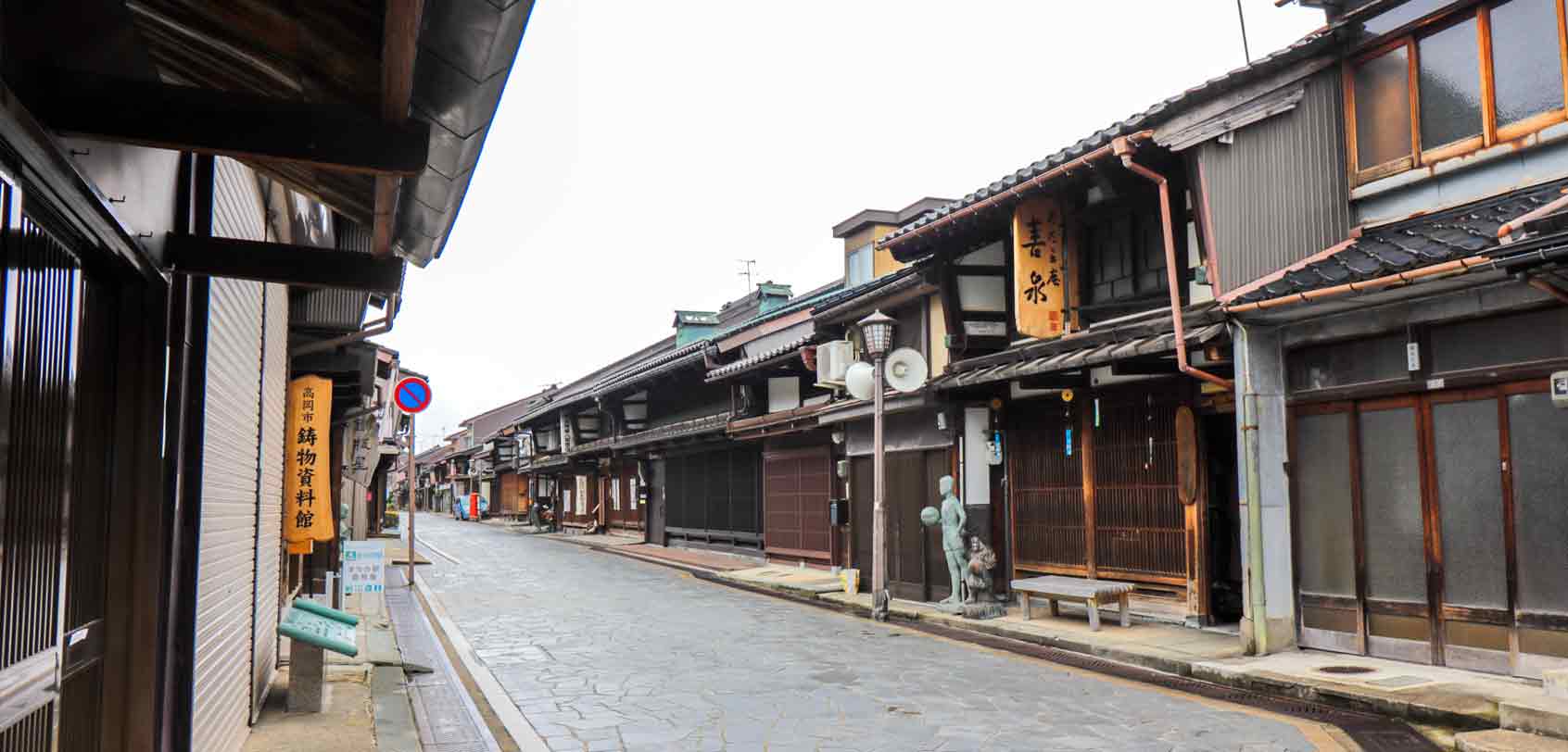
Take a trip back in time during the Meiji and Taisho periods as you visit this townscape that often appears in Japanese films and dramas. After all, it’s amazing how this 500m-long stone road is still preserved magnificently along with the surrounding old latticed houses.
DIRECTIONS : This is just a 20-minute walk away from Takaoka Station.
◘◘ Have some coffee and snacks and lounge at Fugan Canal Kansui Park This vast park is a beauty especially during spring (sakura or cherry blossom season). In fact, we were told that this is the most beautiful Starbucks coffee shop in the world during that season. Nevertheless, it’s definitely a great spot to relax in and to enjoy the nearby park and sights.
DIRECTIONS : From Takaoka Station, ride the Ainokazetoyama Tetsudo line heading to Toyama. Get off at Toyama Station’s north gate and it will be just a 15-minute walk to Kansui Park.
◘◘ Travel to Toyama center and check-in to Toyama Dai-ichi Hotel
From Kansui Park, head to Toyamaeki Station and ride the Chitetsu Toyama Line heading in the direction of 各停 Minamitoyamaekimae. Get off at Sakurabashi Station in which the Toyama Dai-ichi Hotel is just a 4-minute walk away.
Other accommodation options in Toyama are: Budget : Toyoko Inn Toyama Ekimae / Mid-Range : Toyama Excel Hotel Tokyu or AirBnB / Luxury : River Retreat Garaku
◘◘ Try a Toyamawan-Sushi set for dinner
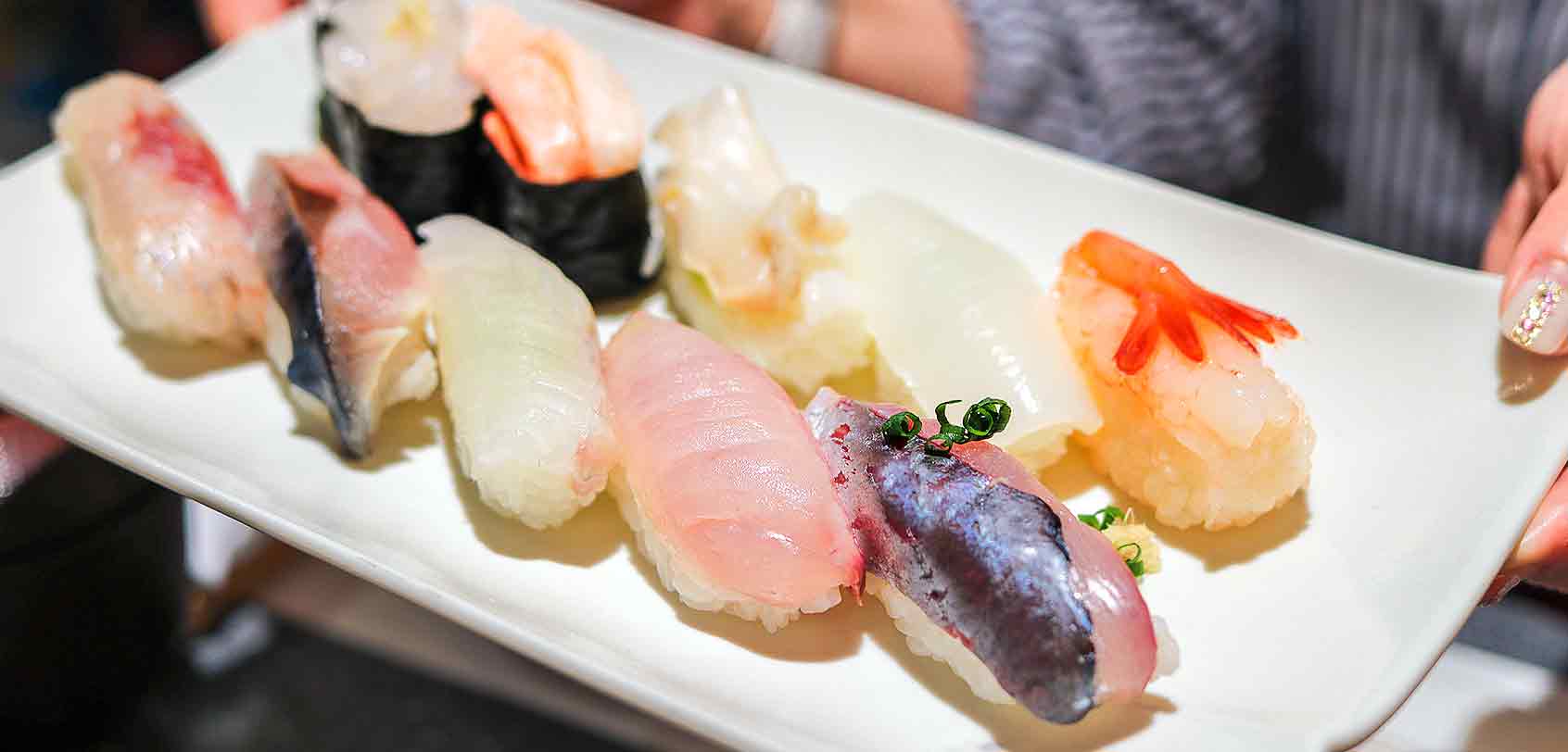
For your Chubu itinerary, it’s a MUST to try Toyama’s seafood because given the city’s location, everything is always freshly caught! Costing at only ¥2,000 to ¥3,500 for a 10-piece Toyamawan-Sushi set (this is a fixed price across all sushi shops), this meal will offer you the finest sushi made from fresh local fish and the delicious Toyama Prefecture rice.
Alternatively, you can also try the Toyamawan-Sushi Kaiseki Hospitality set menu that offers fresh sushi and the restaurant’s finest dishes. For a list of restaurants that you can get these standard sets from, see here .
Snow and Wasabi
For this day of your Chubu itinerary, make sure that you dress accordingly since we’re going closer and UP to the Northern Japan Alps’ famous Tateyama Kurobe Alpine Route!
◘◘ Experience Japan’s famous mountain sightseeing route: Tateyama Kurobe Alpine Route
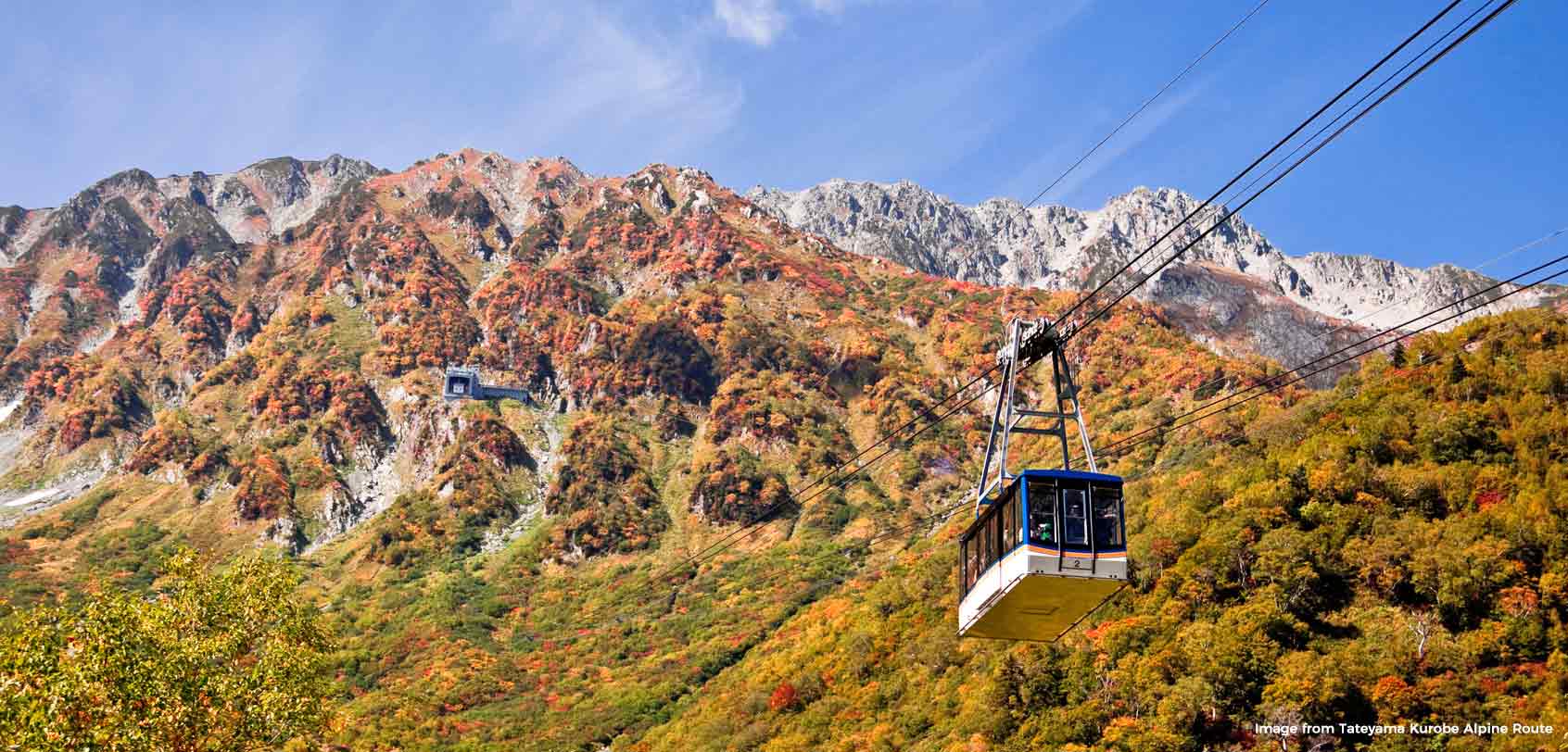
Known as the “Roof of the Japan”, this unique route goes through the lush scenery of Mt. Tateyama for 90km long as you traverse through several stops on various vehicles (a bus, a cable car, or a train) — with the highest elevation at Murodo station (at 2,450 meters high).
A lot of people actually go through this alpine route for days as they make the most of the mountain scenery and hiking trails; but since we’re pressed for time, we went from Tateyama Station (the start of the route) up to Shinano-Omachi station (the end of the route) within just a day as we made stops along the way to see:
- Snow Corridor or “Yuki-no-Otani” (Snow Wall Walk): as the name implies (and as what the photos above show you) , this is an AWESOME place where you can walk through a road that’s surrounded by 20-meter snow walls on both sides (the road is from Bijodaira to Murodo — with the one around Murodo as the most spectacular). This is only open from mid-April to mid-June though, so make sure that you time your visit well! This was made possible because the region has one of the heaviest snowfalls in the world.
- Tateyama Ropeway: this is a breathtaking 1.7km ropeway that does NOT operate with any support towers, making it Japan’s longest one-span ropeway! Due to its design as well, you can have grand views over the landscape as you go down (it looks exhilarating especially during autumn and winter).
- Kurobe Dam: With a height of 186 meters, this is Japan’s tallest dam! The main reason why this is a fantastic place to hang out is that during late-June to mid-October, the view from when the water gets discharged is quite incredible.
- TIP : For a hassle-free Chubu itinerary experience you can take a trip to this location from Nagoya or Kanazawa with this day tour .
To see a detailed narrative of what we did, you can read:
READ: The Roof of Japan: Tateyama Kurobe Alpine Route!
If you rather want to spend days to fully explore Tateyama Kurobe , head on to their main website to get a full list of activities to do.
TIP: Note that the Alpine Route is inaccessible from December to mid-April WEBSITE: https://www.alpen-route.com/en/ TICKETS: It’s best to buy the Alpine-Takayama-Matsumoto Area Tourist Pass which covers all transportation on this alpine route. DIRECTIONS: From Toyama city, go to Dentetsu-Toyama Station. Ride the Chitetsu Line and get off at Tateyama Station (which is the start of the Tateyama Kurobe Alpine Route).
◘◘ Visit Japan’s largest wasabi farm: Daio
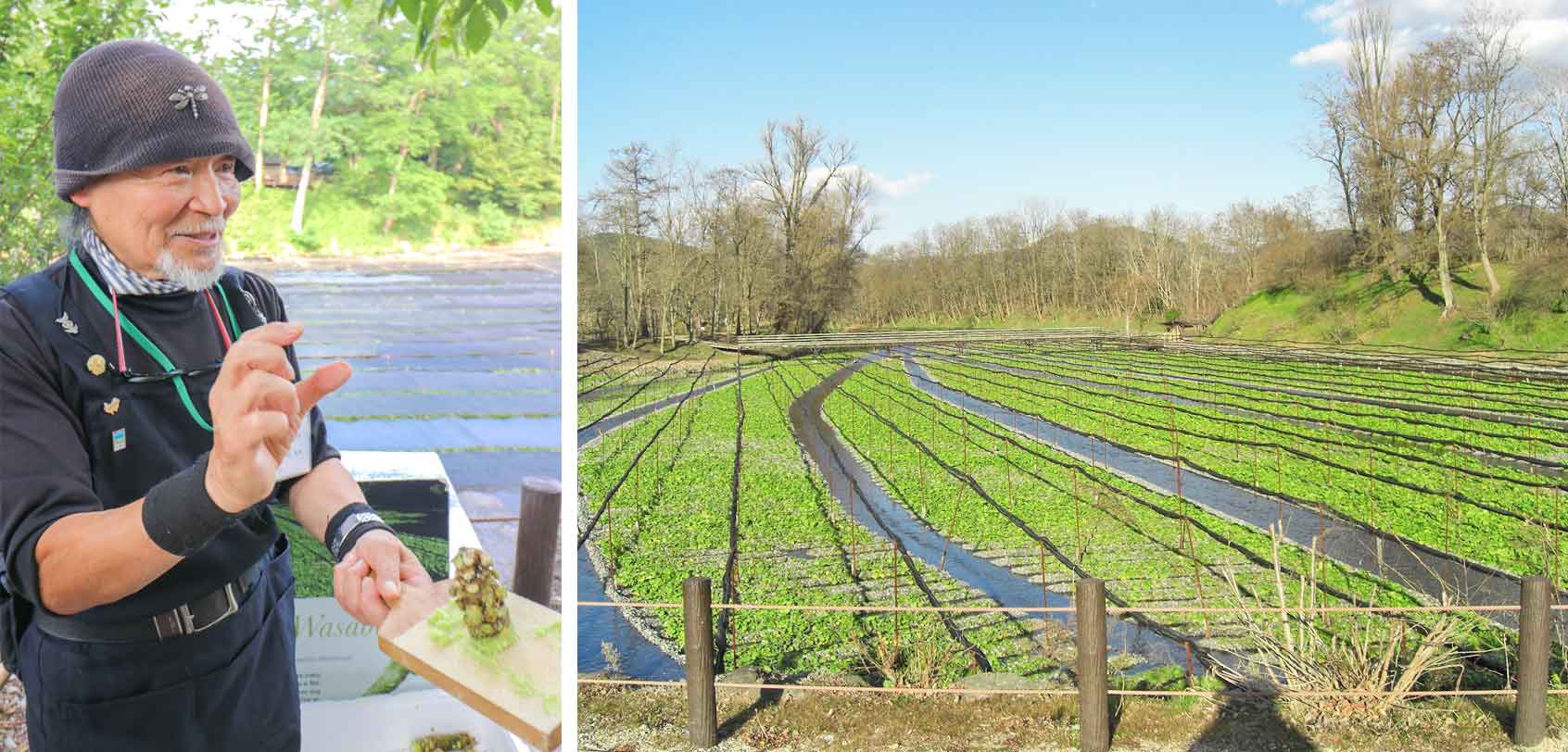
Before the day ends, as you make your way to Matsumoto, there’s a place that you should NOT miss out on: Daio Wasabi Farm which is the largest wasabi farm in Japan (at 15 hectares)!
In this venue, you will not only learn more about how wasabi is grown and made (which mind you, has a very interesting science behind it that’s worth knowing about!) , but you will also get to enjoy its beautiful terrain that’s filled with lovely watermills and rivers backdropped by the Alps. You could even buy freshly picked wasabi in their store and taste their wasabi-flavored ice cream (among other wasabi-themed products).
ADDRESS: 1692 Hotaka, Azumino, Nagano ADMISSION: FREE DIRECTIONS: From Shinanno-Omachi Station, take the Oito Line heading to Matsumoto. Get off at Hotaka Station. From there, you can take a taxi to the farm (takes 10 minutes) or you can rent bikes in front of Hotaka St. for ¥200 per hour.
◘◘ Travel to Matsumoto and check-in to Hotel Buena Vista Matsumoto
From Hotaka station, get on the Oito Line again and drop off at Matsumoto Station. It will be just a 7-minute walk to Hotel Buena Vista Matsumoto .
Other accommodation options in Matsumoto are: Budget : Southern Cross Inn Matsumoto / Mid-Range : Richmond Hotel Matsumoto or AirBnB / Luxury : Gosenjaku Hotel
From Matusmoto and Ina, and back to Nagoya
It’s now the last day of your Chubu itinerary and you’ll be slowly making your way back to Nagoya. Don’t forget to buy souvenirs back home!
◘◘ Enjoy the alluring city of Matsumoto

This mountain city is actually famous for its Matsumoto Castle which is said to be one of Japan’s most beautiful original castles given that it is one of the most complete up to today.
So before leaving the city, make sure that you make a stop at this landmark for your Chubu itinerary. Besides, this castle is unique because of its black wood paneling, making it a nice contrasting figure to the surrounding sakura or cherry blossom trees during the spring season .
While you’re at it, walk over to the nearby Nakamachi-dori which is a street full of old buildings that have been nicely preserved over the years — notable of which are the kura or warehouse-type buildings that have white painted walls.
- TIP : For a hassle-free experience on your Chubu itinerary, you can book tickets online to ride the Matsumoto hop-on hop-off bus tour !
To get more ideas on what to do in Matsumoto, read my post:
READ: Top 10 Things to Do in Matsumoto
◘◘ Make your own soba and have it for lunch at Miharashi Farm
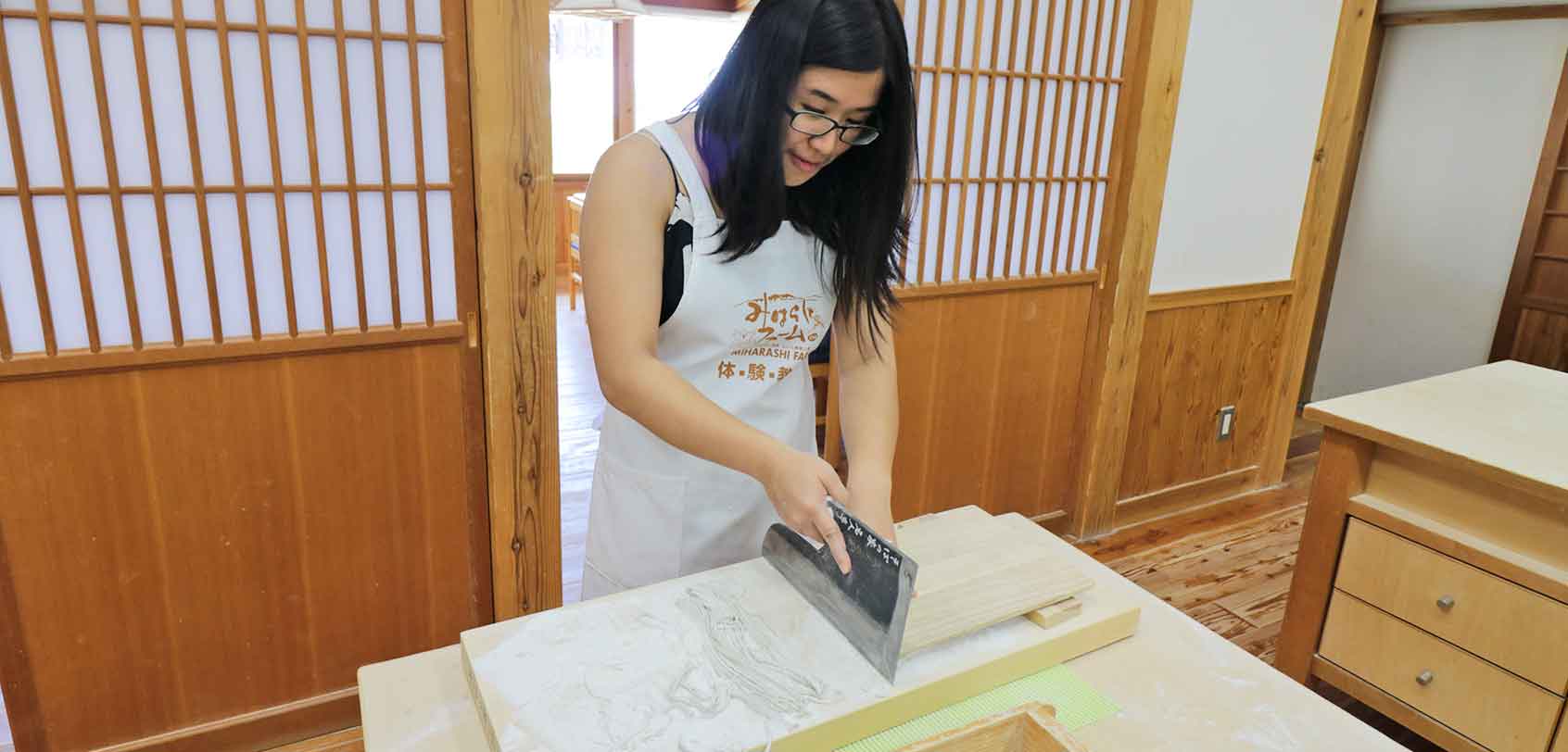
Miharashi Farm is one of the largest agricultural farms in Nagano prefecture and you can enjoy fruit-picking goods like strawberries (from January 1st to the middle of June) , blueberries (from early-September to late-October) , apples (from late-August to late-November) and so much more!
There are also an array of other food experiences that you can do on the farm and one of my favorites would be the making of soba (Japanese buckwheat) noodle.
Read all about my soba-making experience here:
READ: Fruit Picking & Making Soba Noodles at Nagano’s Miharashi Farm (Japan)
ADDRESS: 3447 Nishiminowa, Ina City, Nagano 399-4501 DIRECTIONS: From Matsumoto Station, ride any of the following lines: Shinonoi, Chuo, Iida — in order to get to Inashi Station. Hail a taxi and it will only take you 15 minutes to get to the farm.
◘◘ Go back to Nagoya
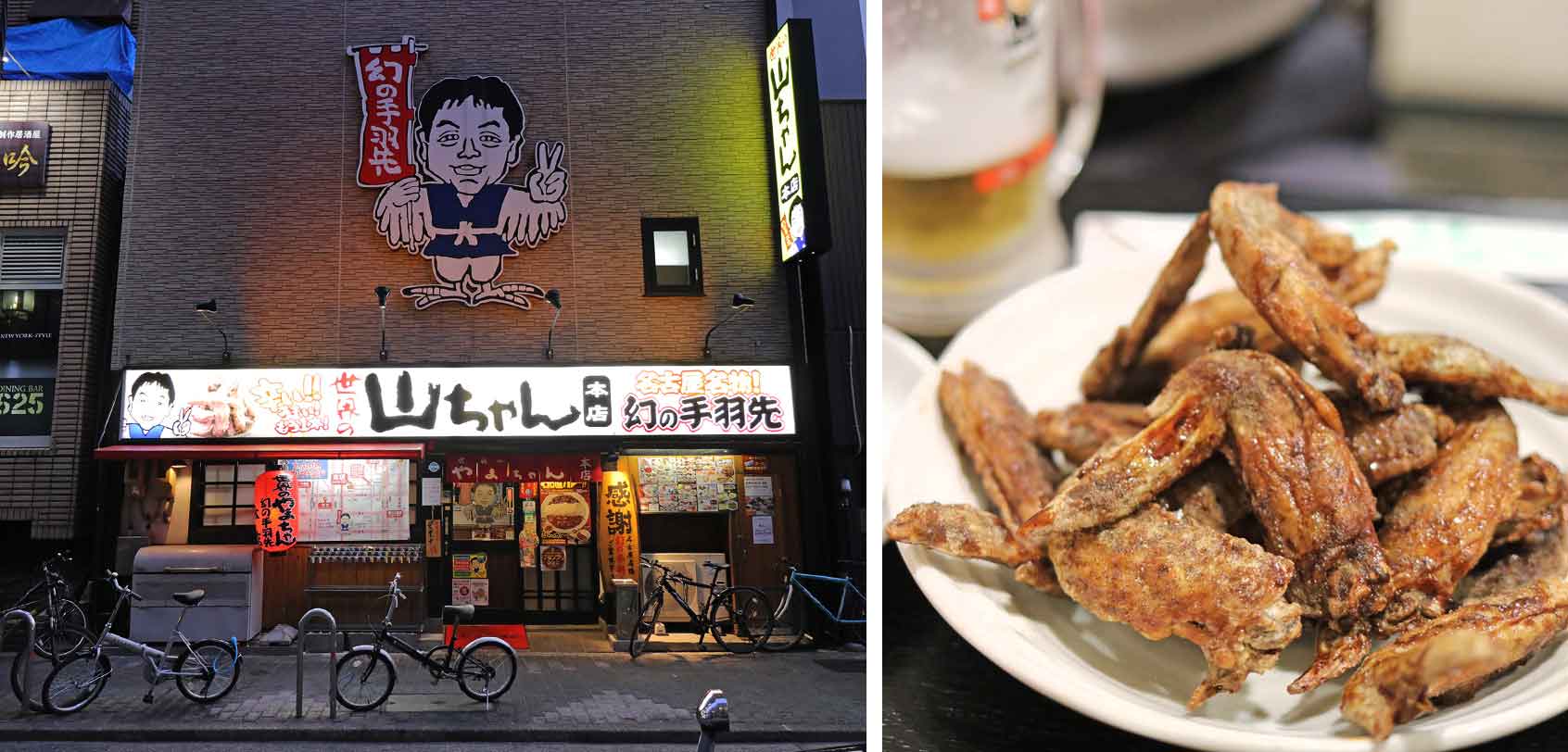
From Matsumoto Station, you can easily reach Nagoya in just 2 hours by riding the JR Shinano Line to Nagoya Station. At this point, you can prepare for your flight and explore places in Nagoya city that you didn’t manage to visit on the first day.
As for me, what I did for this time was to go shopping at Don Quijote for souvenirs (the branch here in Nagoya was HUGE!) as well as dine at Sekai no Yamachan — a famous izakaya (Japanese pub) in the city that serves flavorful “legendary chicken wings”!
Substitute Destinations for Chubu Itinerary
In case you want other destination ideas for Chubu region, I would highly suggest the following…
◘◘ Go back in time and walk the old Nakasendo Road along the scenic Kiso Valley
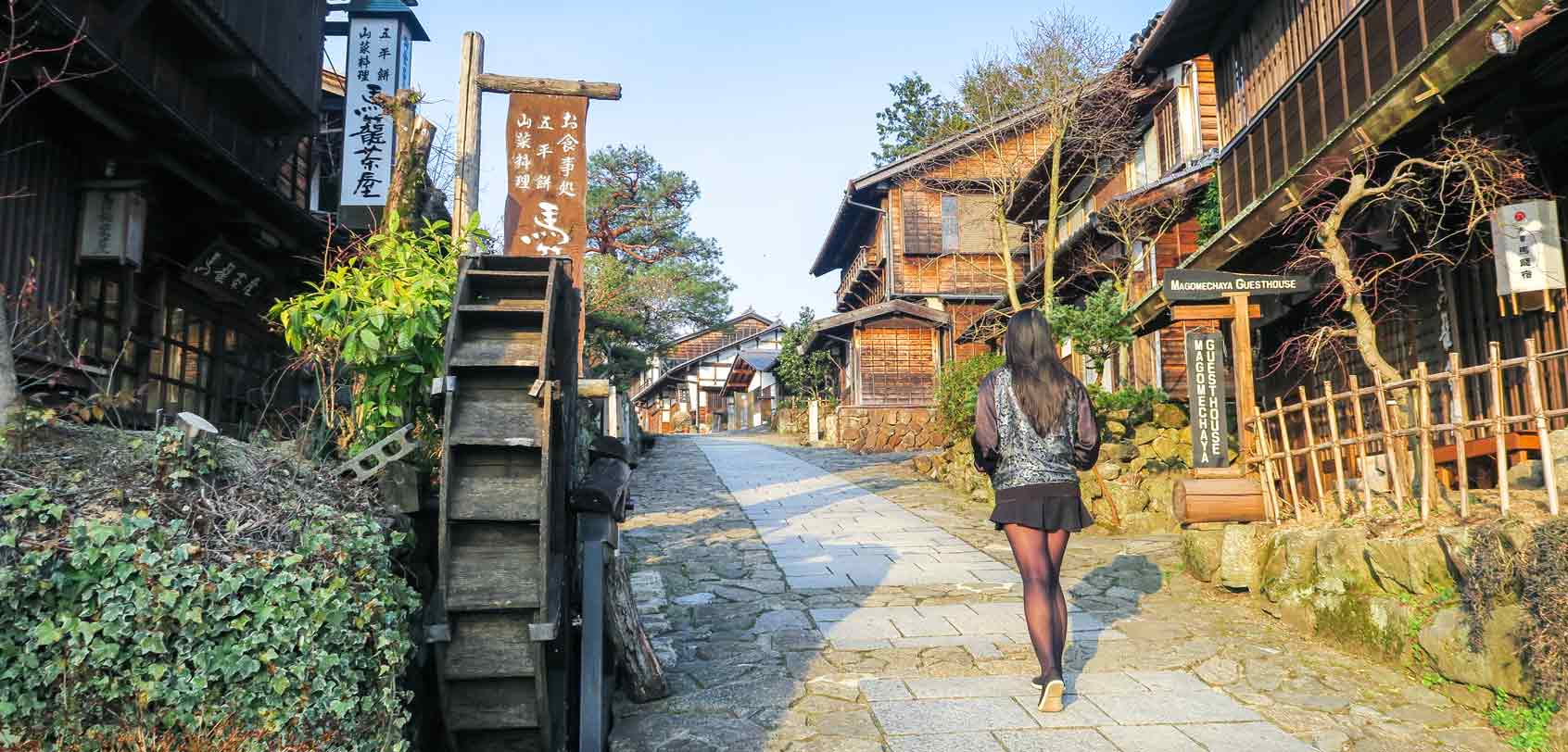
Back in the olden times, there was an ancient 70km trade route called Kisoji that was made along this valley. Later on, it was combined with other routes thereby forming the 500km-long Nakasendo (“path through mountains) which was one of the important means of transportation for old Edo and Kyoto . Over time, ‘post towns’ were developed because travel was mostly done by foot (due to strict rules by the shogunate).
Today, there remain 3 preserved post towns on Kiso Valley and they are Magome, Tsumago, and Narai. As a visitor, you can explore these historic paths as well as enjoy the authentic ancient feel of these wooden towns.
◘◘ See the resort town of Karuizawa
If you’re looking to escape the summer heat for your Chubu itinerary, heading to this mountain resort town of Karuizawa should be up on your list. Truth be told, due to its prime weather and location (just an hour away from Tokyo by shinkansen), a lot of wealthy people live here. Come and learn more about this place here .
◘◘ If you’re into hiking and nature, visit Kamikochi
With wondrous mountain sceneries, you can enjoy a day in Kamikochi by hiking along one of its many trails along the Azusa River. Just remember that access here is closed from mid November to mid or late April. For things to do, see here .
◘◘ Visit the wild snow monkeys at Jigokudani Monkey Park in Yamanouchi
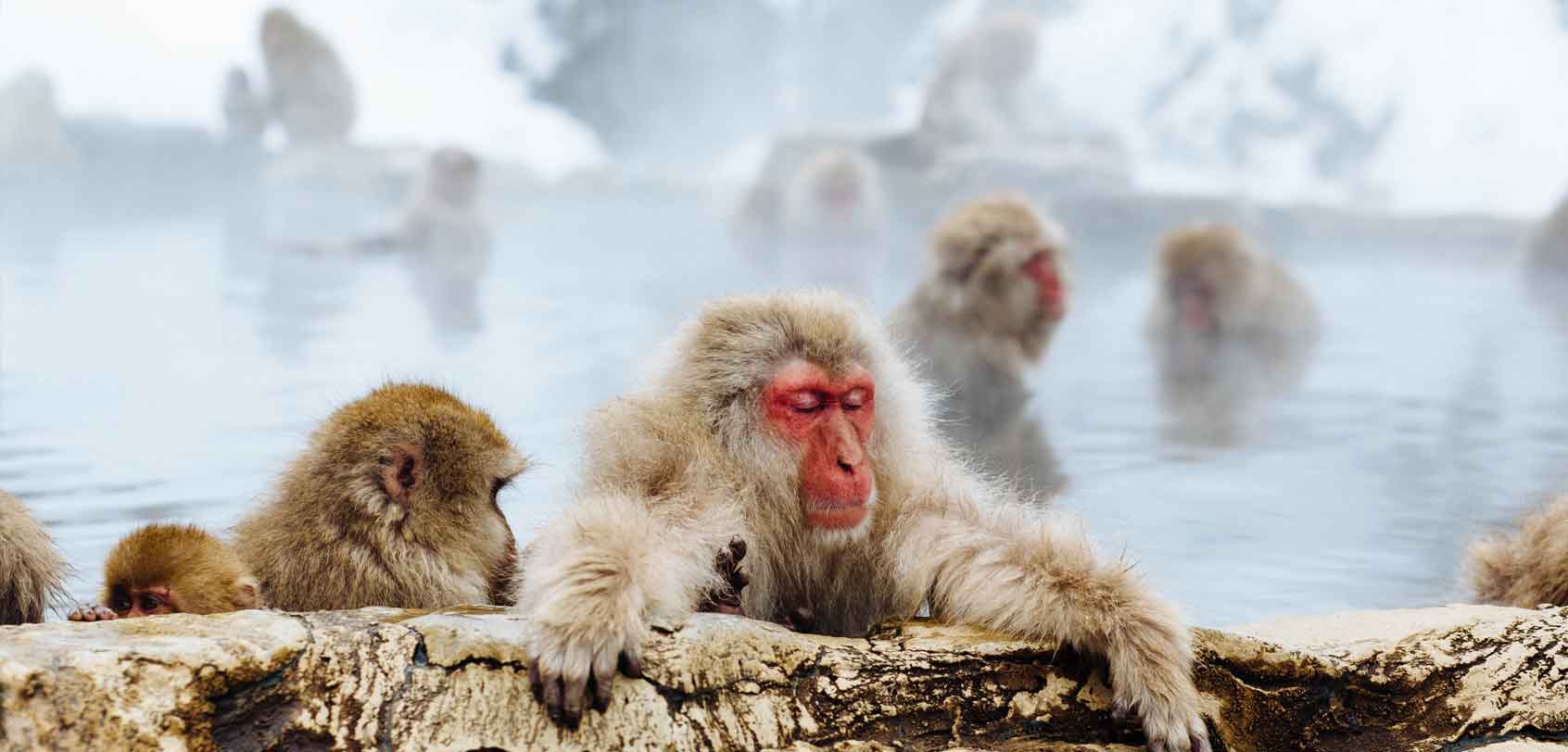
Have you ever seen those adorable photos online of monkeys bathing in a natural onsen (hot spring)? Well, you can visit it yourself in Jigokudani Monkey Park!
These monkeys are called Japanese Macaques or ‘Snow Monkeys’ and they are very accustomed to humans so you can watch them play up close in this park (which is their natural habitat). The park is open all year but if you want the best photos of the monkeys, come during January to February when the park is covered in blinding white snow and the monkeys come bathing in the hot spring.
ADMISSION : ¥800 TOUR : You can do this as a day tour from Tokyo by booking online .
◘◘ For a typical Japanese hot spring or onsen town, go to Okuhida
One should NOT leave Japan without experiencing an onsen town — if not a ryokan (traditional Japanese inn). If you’re already at Takayama area, getting here will only take you an hour by bus.
◘◘ Go to Kanazawa
Kanazawa is yet another town that has some well-preserved landmarks from the olden times of Japan, some of which are: Nagamachi (a former samurai district) and Higashi Chaya District (one of the many chaya or teahouse entertainment districts where geisha perform). Another attraction that you could stop by is Kenrokuen which is said to be one of Japan’s 3 best landscape gardens.
TIP : For a hassle-free experience, you can take a guided Kanazawa Sightseeing Tour.
◘◘ Explore Niigata and Sado Island
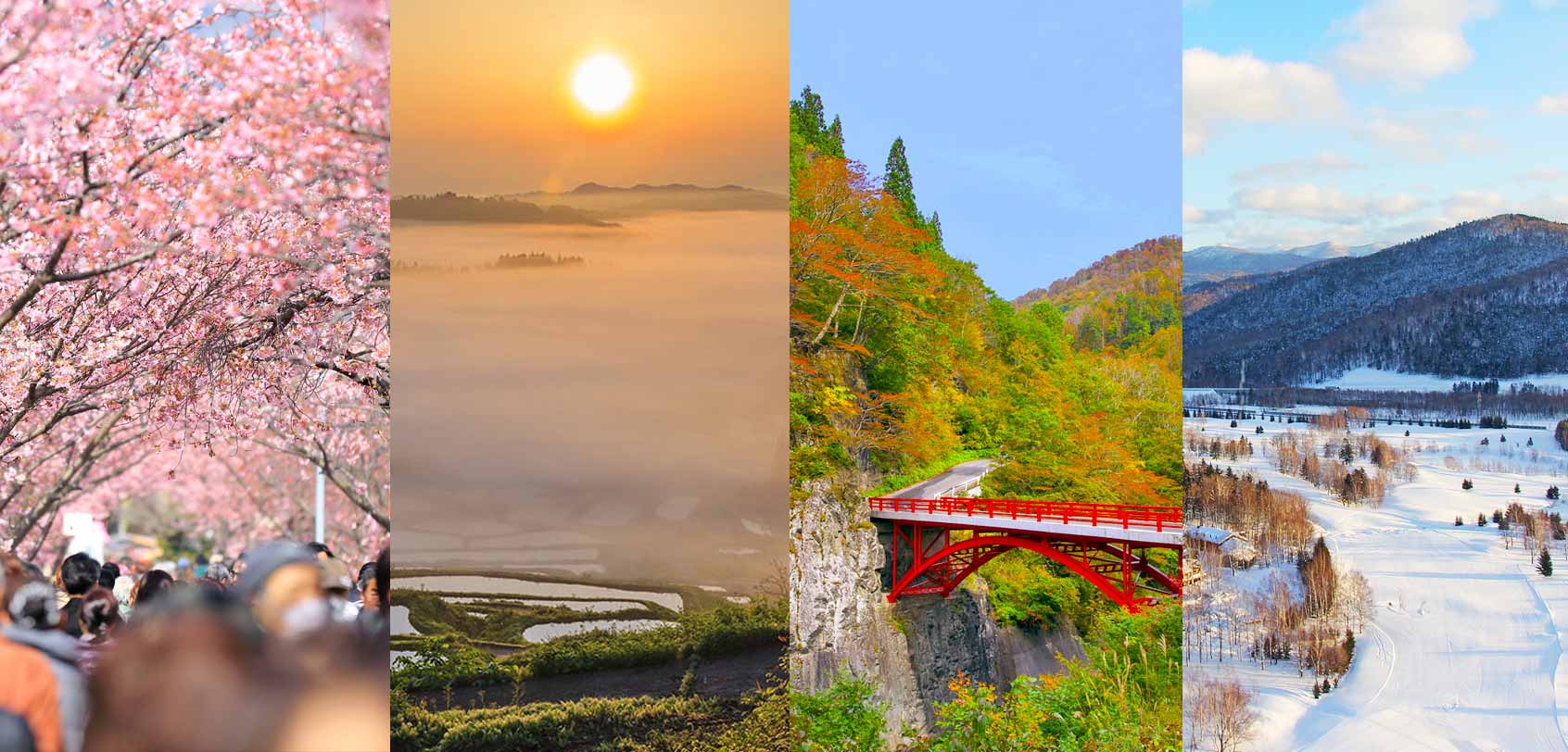
I did a separate trip before to Niigata prefecture and I instantly fell in love with it!
So if you’re up for tasting the best Japanese sake and sushi (I’m NOT kidding about this) and meeting REAL geisha (Japanese entertainers) at an affordable price among many others, then you MUST make a stopover to this area. For detailed travel guides on what you can do in Niigata, read my posts here:
READ : Niigata travel guides
Booking Essentials

TIP: It’s a good idea to crosscheck the prices with other popular travel insurance providers like World Nomads and HeyMondo (as my reader, you get 5% off)! . However, take note a travel insurance’s affordability typically means lesser coverage; so please always ensure that you read the fine print in order to decipher which travel insurance company is the right fit for you and your trip!
Looking for more travel tips for Japan?
Check out my other detailed Japan travel guides !
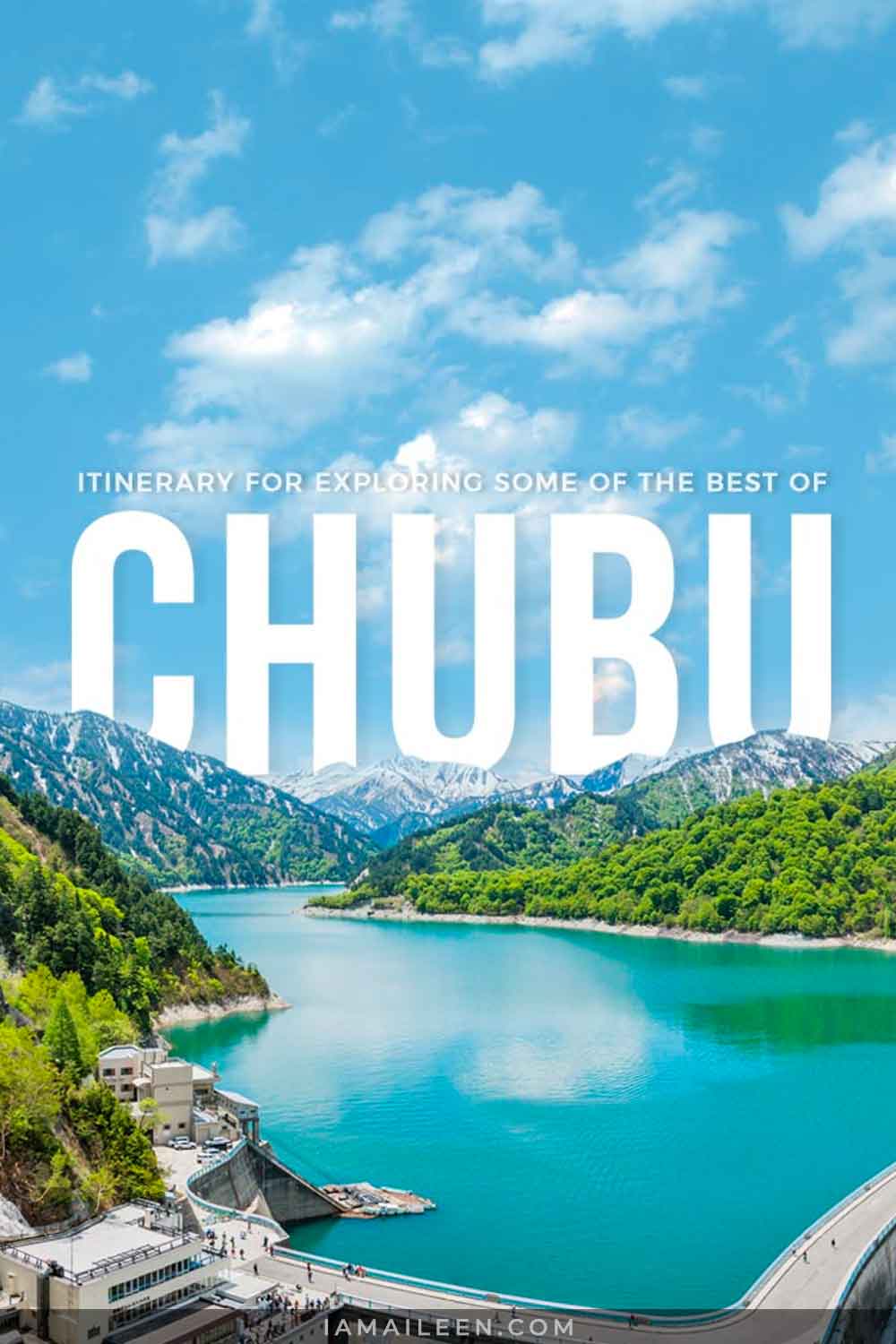
It’s plain to see that Japan has a LOT to offer — that’s why you MUST get out of your comfort zone and explore its other regions!
For sure too, venturing out to Chubu as a start will already prove as a wonderful step to conquering the rest of the ‘Land of the Rising Sun’s’ magnificent destinations.
So… what are you waiting for?
Have you seen my latest vlog?

Hey there! I am Aileen Adalid. At 21, I quit my corporate job in the Philippines to pursue my dreams. Today, I am a successful digital nomad (online entrepreneur, travel writer, & vlogger) living a sustainable travel lifestyle.
My mission? To show you how it is absolutely possible to create a life of travel no matter the odds — and I will help you achieve that through my detailed travel hacks, guides, resources, tips, and MORE!
Follow Along
CURRENTLY BASED IN: The Philippines
- 100k Followers
- 51k Followers
- 80k Followers
- 10k Followers
- 23.1k Followers
Join over 1 million readers worldwide and get my FREE packing checklist, gain exclusive access to travel giveaways and more!
Success! Next, please check your email to confirm your subscription.
GET FREE PRINTABLE NOW!
Trending Now
Top 10 things to do on a trip to south america.
South America is one of the most diverse continents — full of natural wonders and fascinating cultures. Join us as we explore the top 10 things to do.
Top 10 Things to Do for Your First Tibet Travel
Make the most of your Tibet travel with these top 10 must-do activities, from exploring ancient monasteries to trekking mountains!
Geisha of Japan: Understanding the Facts, History & Myths
Japan’s geisha are cloaked in mystery & secrecy resulting in a number of false ideas about them — so let’s get the facts straight!
Maximizing Your Miles: Unlock Budget-Friendly Travel Hacks & Tips
Start traveling smart! Take note of these travel hacks that will help you in maximizing your miles or do points hacking.
EU261 Compensation: Your Essential Guide on European Flight Delays or Cancellations
Learn to claim EU261 compensation for flight disruptions like delays, cancellations, downgrades, or denied boarding!
Latest Posts
Learn Today
How to start a successful blog, 30 comments.
Hi! Did you visit during spring? I’m planning to go to Shirakawa-go in winter because of the snowfields but these flowers are to die for!
I actually went around June and indeed, going around spring or late spring will be great especially if you want to witness the famous Snow Wall :D
Hello, im ready your good article. I Definitely liked this blog site. Nice place n Nagoya and Gujo City
Submit a Comment Cancel reply
Your email address will not be published. Required fields are marked *
Be notified of follow-up comments by email
Be notified of new posts by email
Submit Comment
Pin It on Pinterest
- Things to Do
Best Things to Do in Chubu
Chubu Unveiled: Nature, Culture, and Culinary Wonders
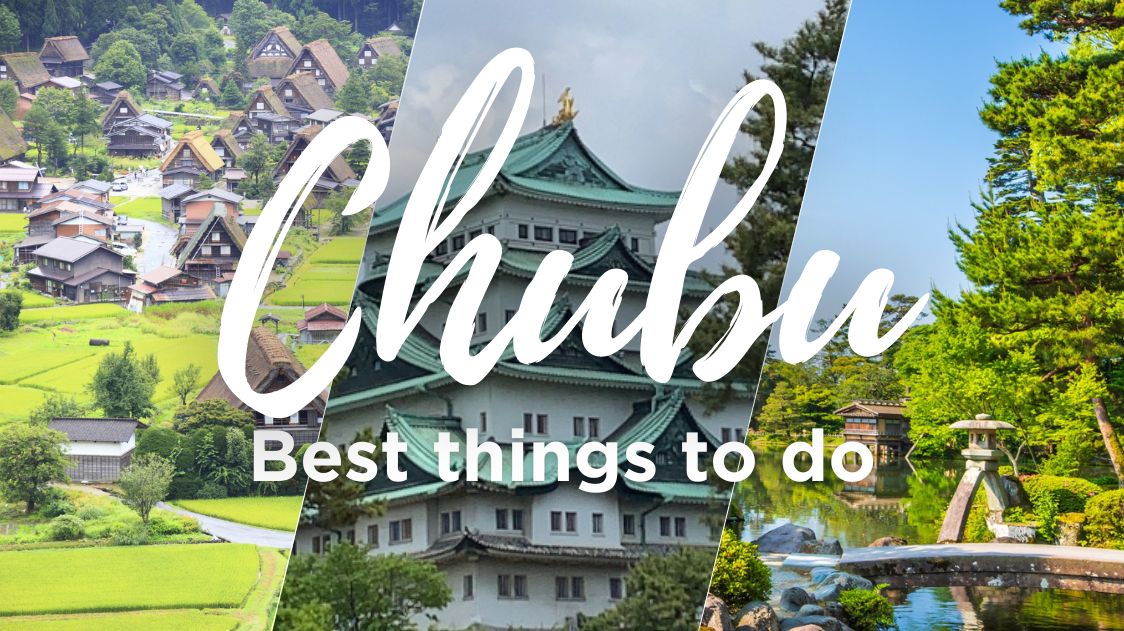
If you’re looking for a travel experience that transcends the usual tourist traps and plunges you into the authentic heart of Japan, look no further than the Chubu region.
Situated in the central part of the country, Chubu is a treasure trove of experiences that range from the adrenaline-pumping to the soul-soothing. Imagine skiing down pristine slopes in the morning, savoring world-class sushi by noon, and soaking in an ancient onsen by evening—all within the same region. With its rich diversity of landscapes, from the majestic Japanese Alps to the idyllic beaches of the Ise-Shima area, Chubu offers an unparalleled diversity of activities and sceneries. It’s not just a destination; it’s a journey through the very essence of Japan. So, why settle for the ordinary when Chubu invites you to experience the extraordinary? Here we present to you the best things to do in Chubu!
Chubu Region, Japan’s Undiscovered Gem
Japan, a country of contrasts and harmony, is divided into eight major regions: Hokkaido, known for its rugged landscapes; Tohoku, the land of natural beauty and hot springs; Kanto, the bustling hub that includes Tokyo; Kansai, the cultural heartland; Chugoku, with its scenic coastlines; Shikoku, the smallest of the four main islands; Kyushu, famous for its volcanoes; and Okinawa, a tropical paradise. Among these, Chubu holds a special place, acting as the country’s geographical and cultural central role.
Located in central Japan, Chubu is composed of ten diverse prefectures: Yamanashi, home to the iconic Mount Fuji; Nagano, the winter sports capital; Niigata, renowned for its rice and sake; Toyama, with its breathtaking Tateyama mountain range; Ishikawa, famous for its traditional crafts; Fukui, a haven of paleontological wonders; Shizuoka, the land of tea and tangerines; Aichi, the hub of Japan’s automotive industry; Gifu, known for its historic villages; and Mie, a coastal prefecture rich in natural beauty and Shinto history. Each offers a unique slice of Japanese life, making Chubu a region of endless discovery.
▶ Buy your bullet train tickets here!
1. Climb Mount Fuji
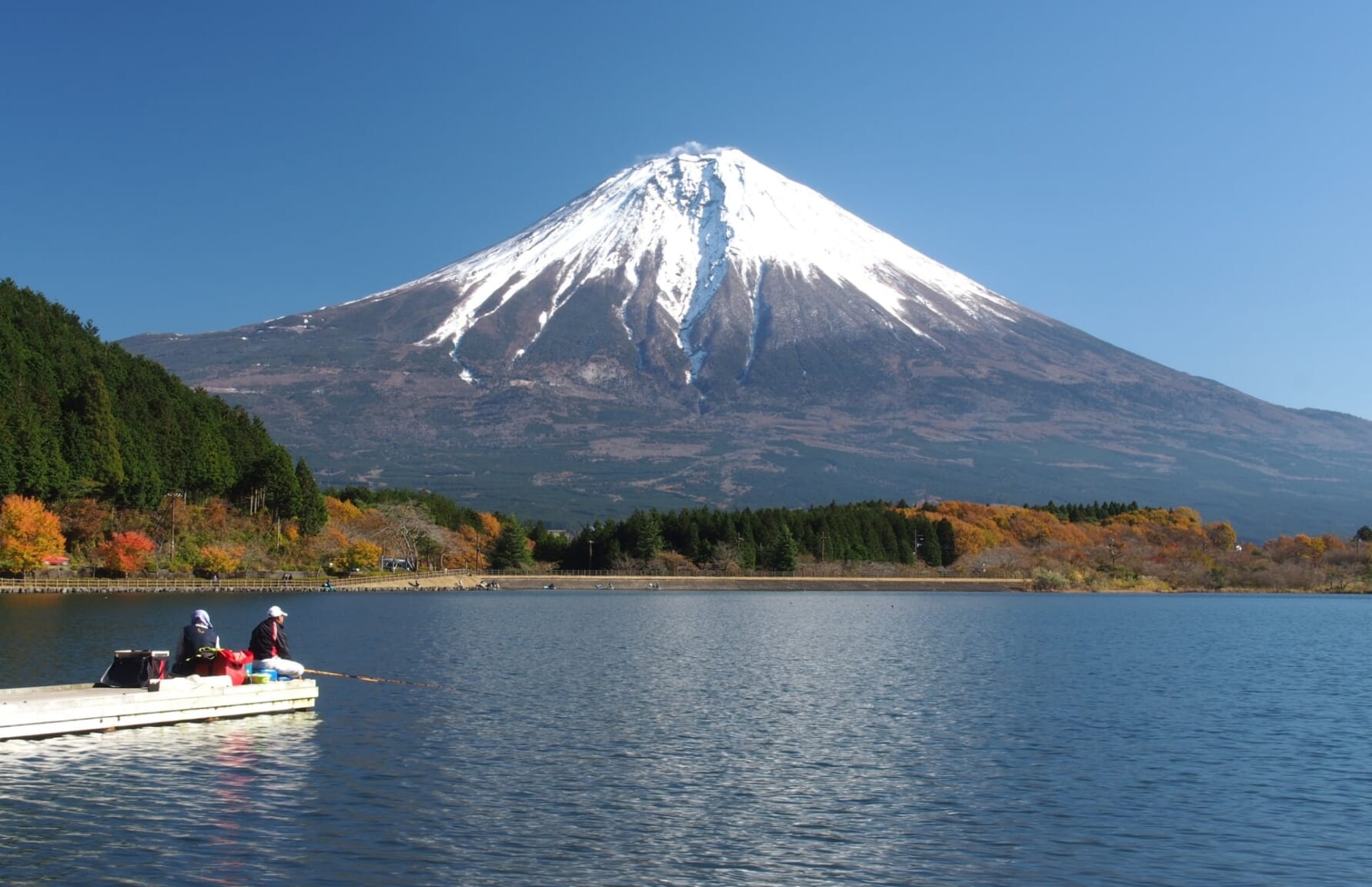
▽Ready to take on Mt. Fuji? Check the guide below!▽
▶ Perfect Guide to Climbing Mt. Fuji
2. Discover the Best Castles in the Region
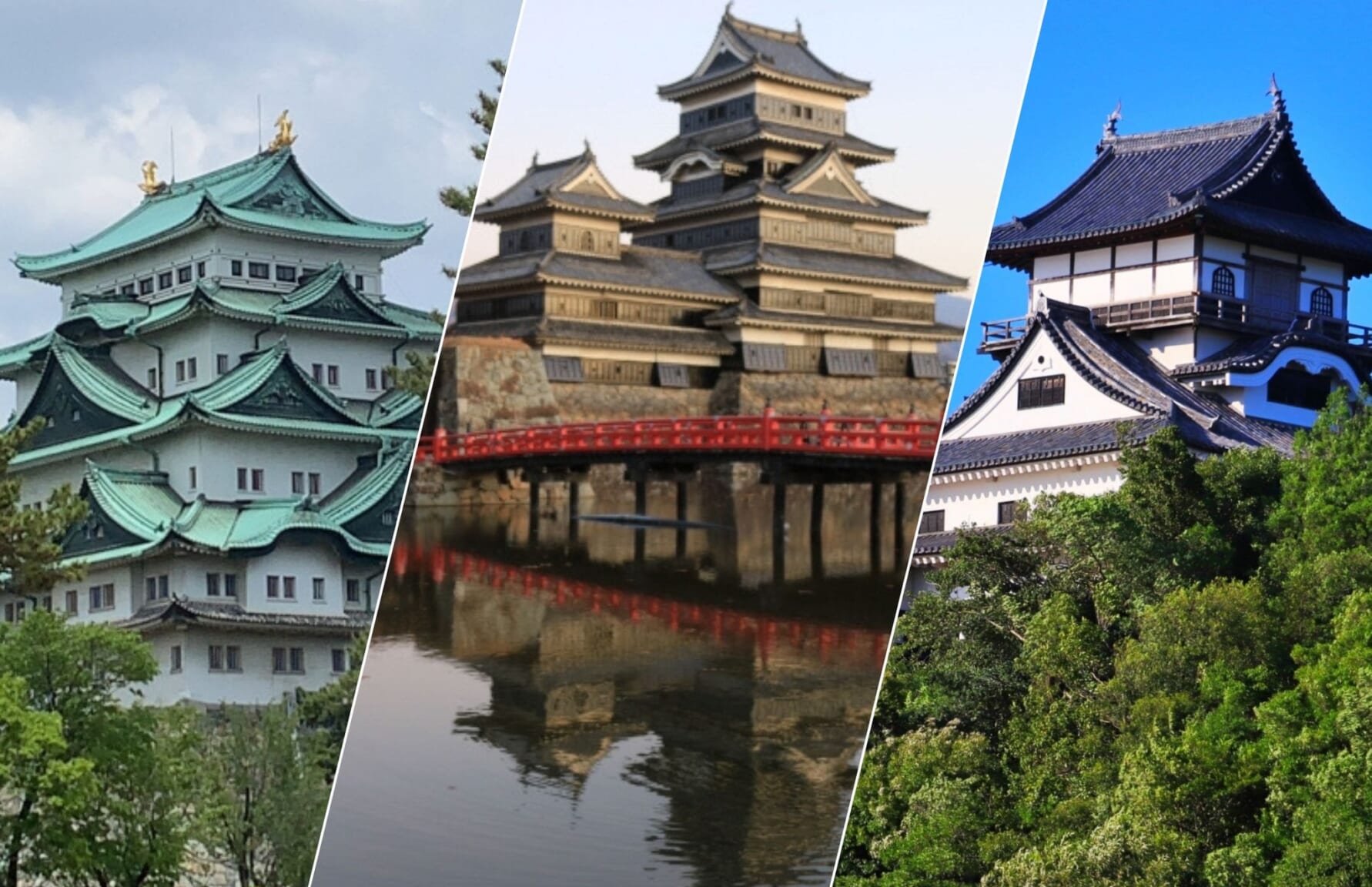
▶ Nagoya Castle official website: https://www.nagoyajo.city.nagoya.jp/en/
▶ Matsumoto Castle official website: https://www.matsumoto-castle.jp/eng
▶ Inuyama Castle official website: https://inuyamajo.jp/
▽More information about Matsumoto Castle▽
▶ Matsumoto Castle: The Raven Castle
3. Stroll Around Beautiful Japanese Gardens
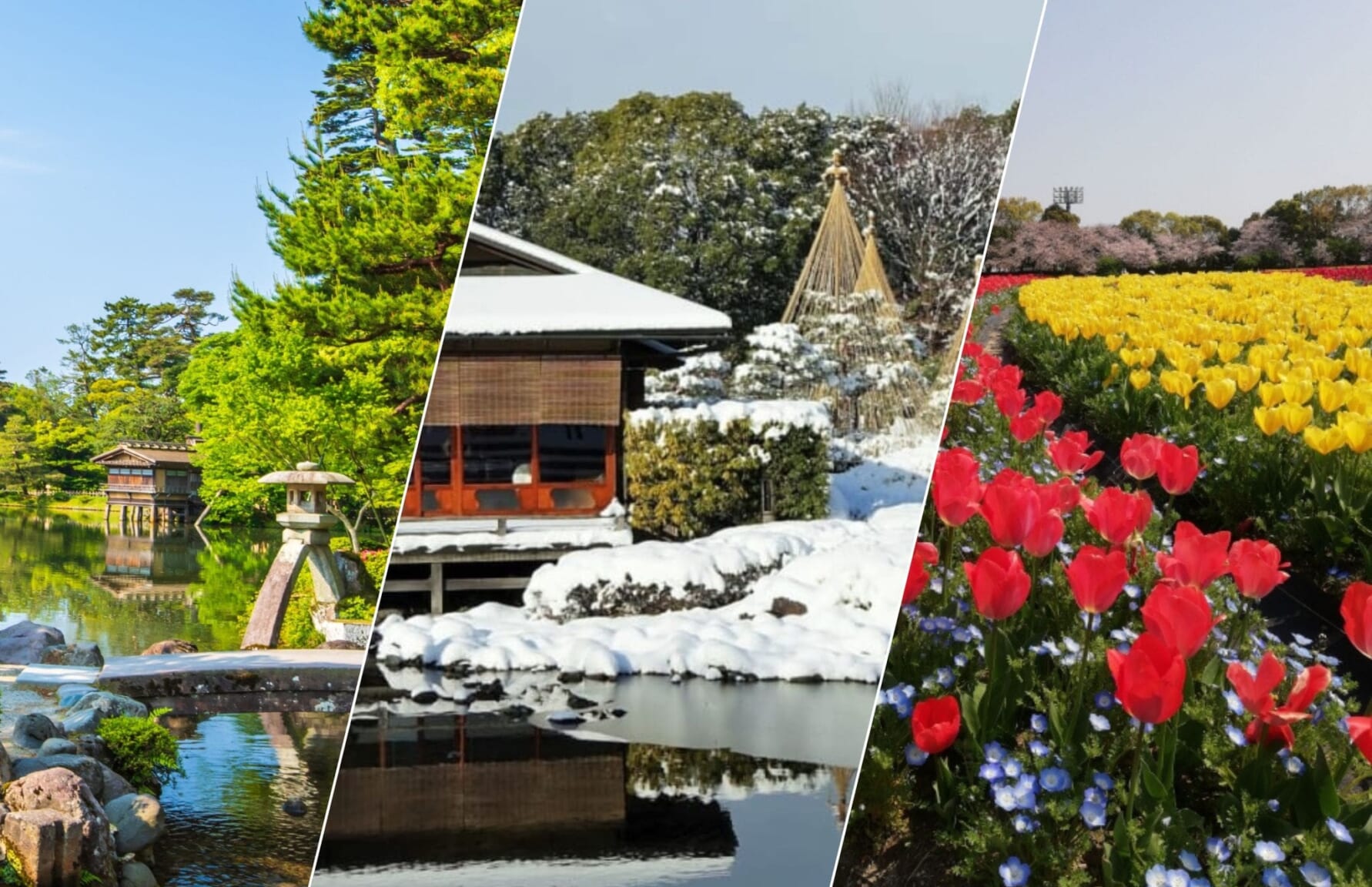
▶ Kenrokuen Garden official website: http://www.pref.ishikawa.jp/siro-niwa/kenrokuen/
▶ Shirotori Garden official website: http://www.shirotori-garden.jp/english/index.html
▶ Nabana no Sato official website: https://www.nagashima-onsen.co.jp/nabana/index.html
▽Find out more about Japanese gardens!▽
▶ 15 Best Gardens in Japan
4. Visit Jigokudani Snow Monkey Park
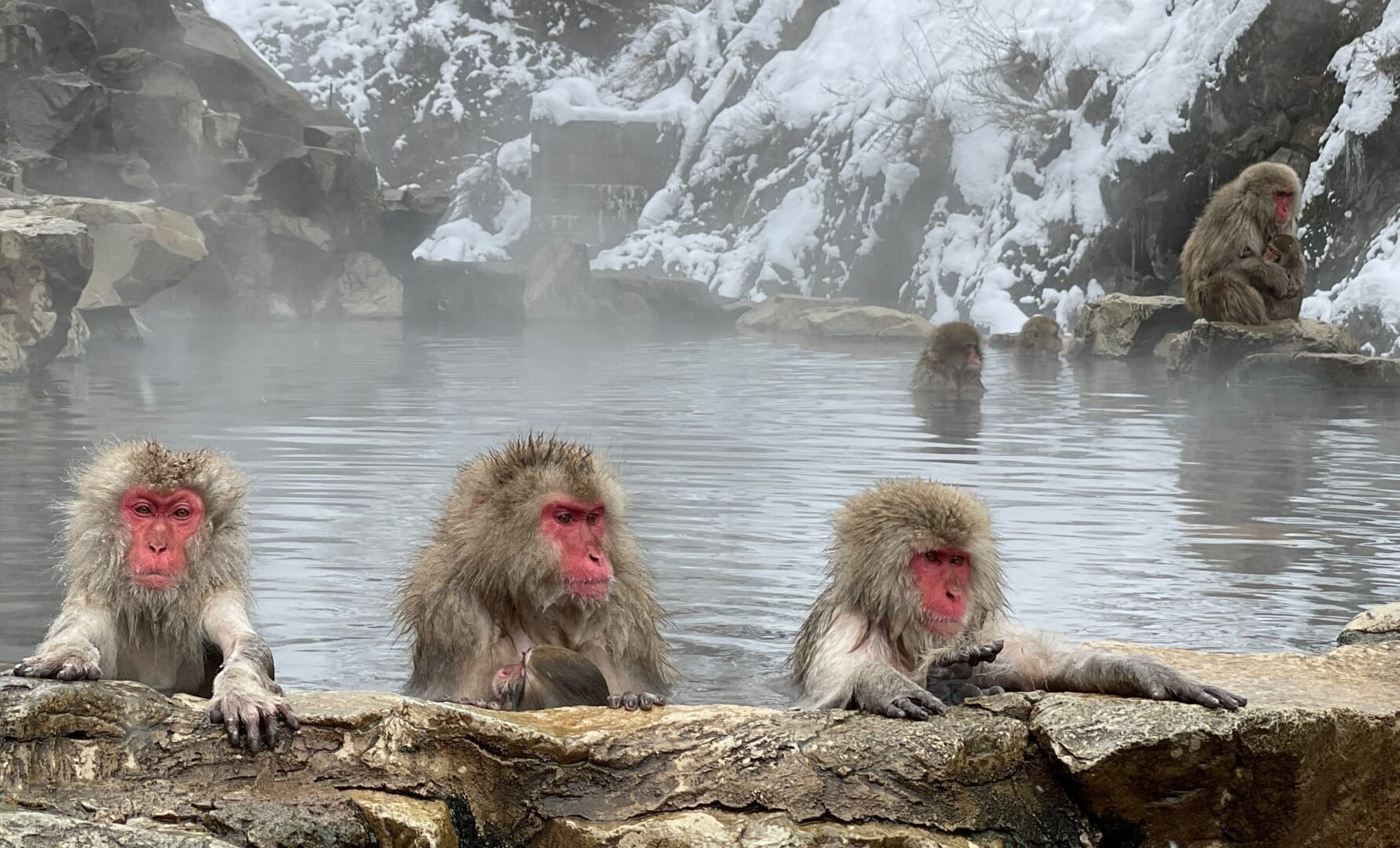
▽More information about Jigokudani Snow Monkey Park▽
▶ Jigokudani Monkey Park: Meet Snow Monkeys
5. Walk Around Historic Villages and Traditional Homes
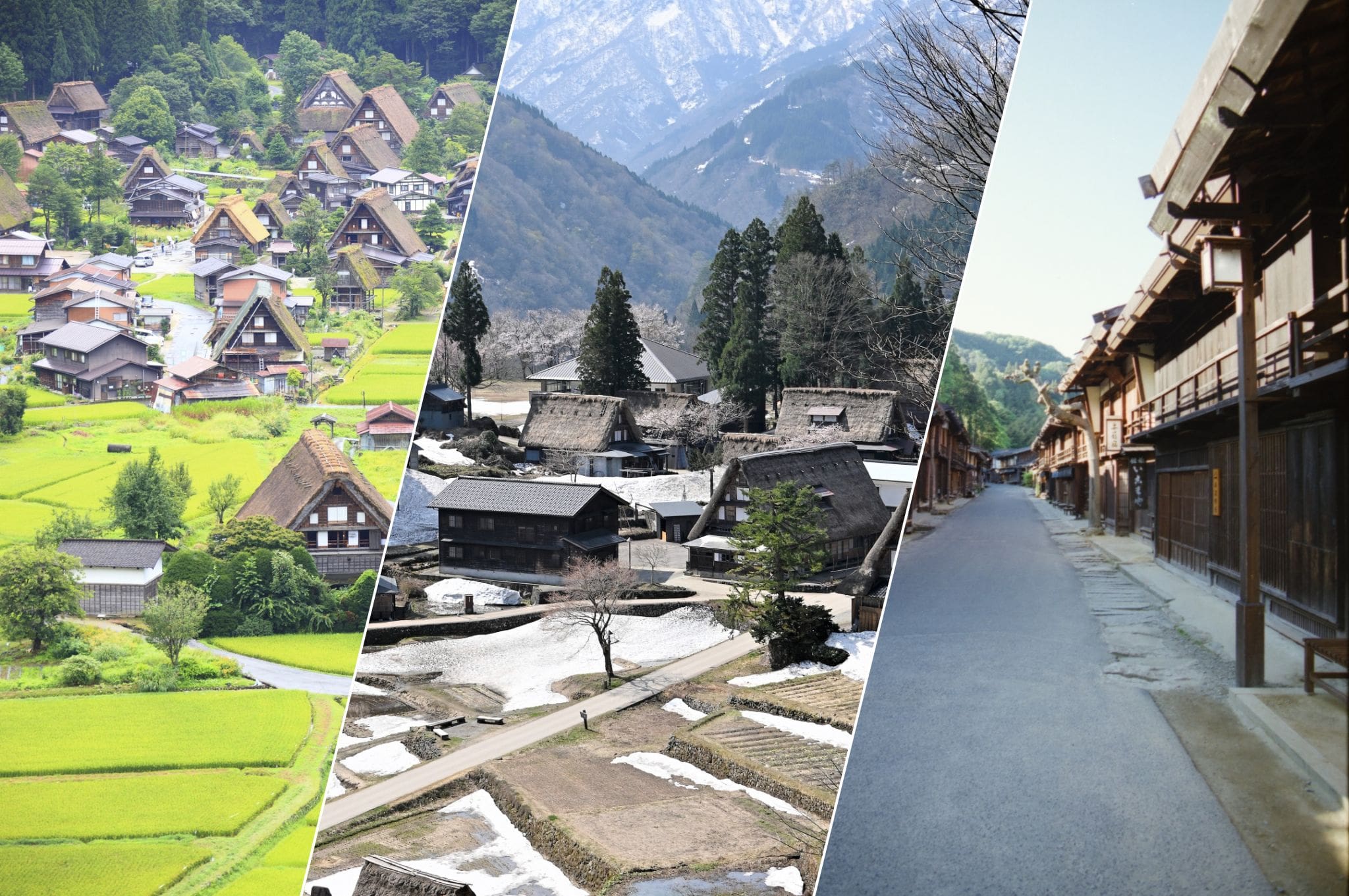
▽More information about Shirakawago and Gokayama▽
▶ Shirakawago: Best Things to Do
▽Find out more about Tsumago here▽
▶ Nakasendo Trail: from Magome to Tsumago
6. Have a Spiritual Retreat
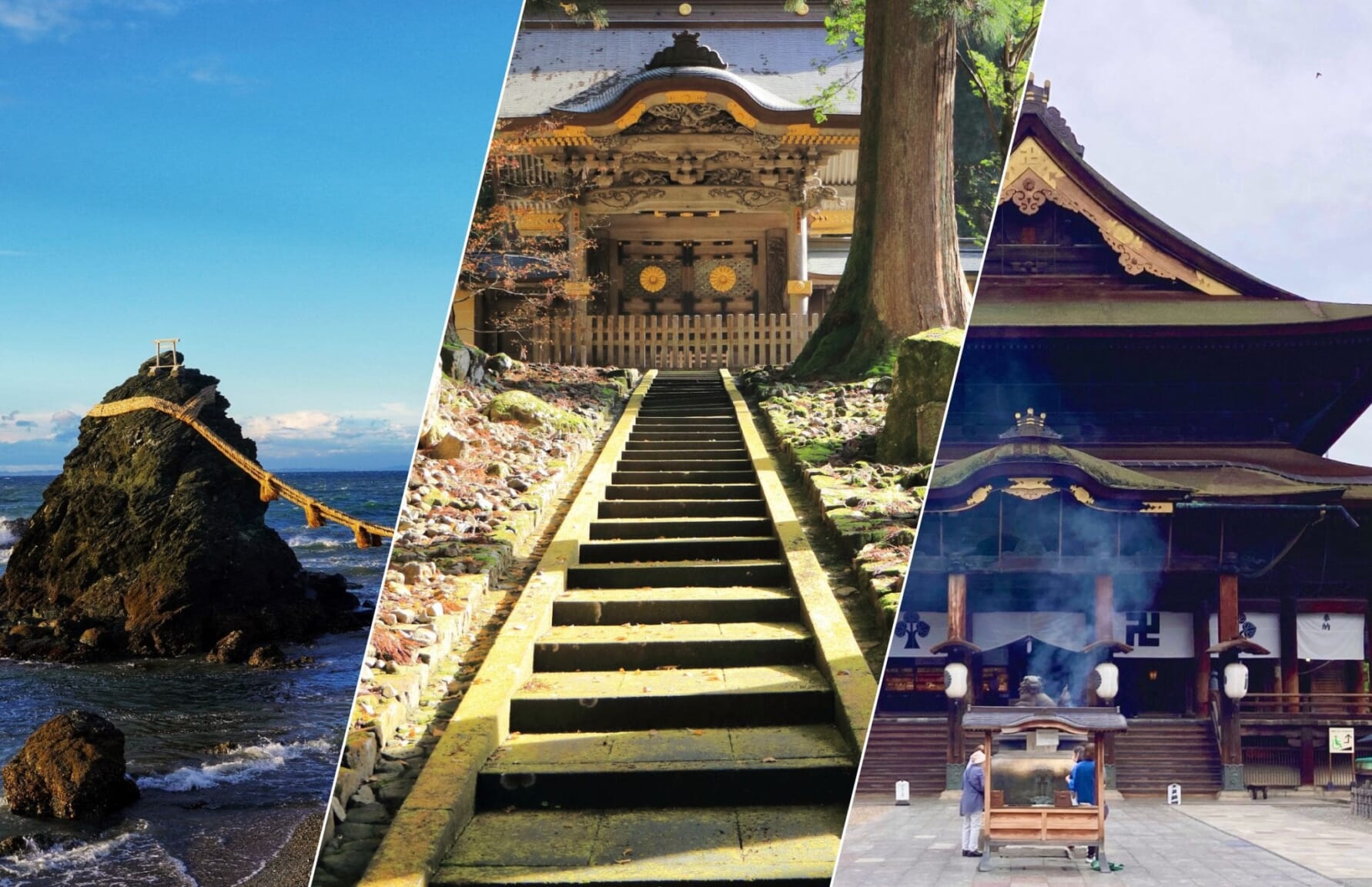
▶ Ise Jingu official website: https://www.isejingu.or.jp/en/
▶ Eiheji official website: https://daihonzan-eiheiji.com/en/
▶ Zenkoji official website: https://www.zenkoji.jp/en/
7. Have Fun in Japan’s Dinosaur Capital
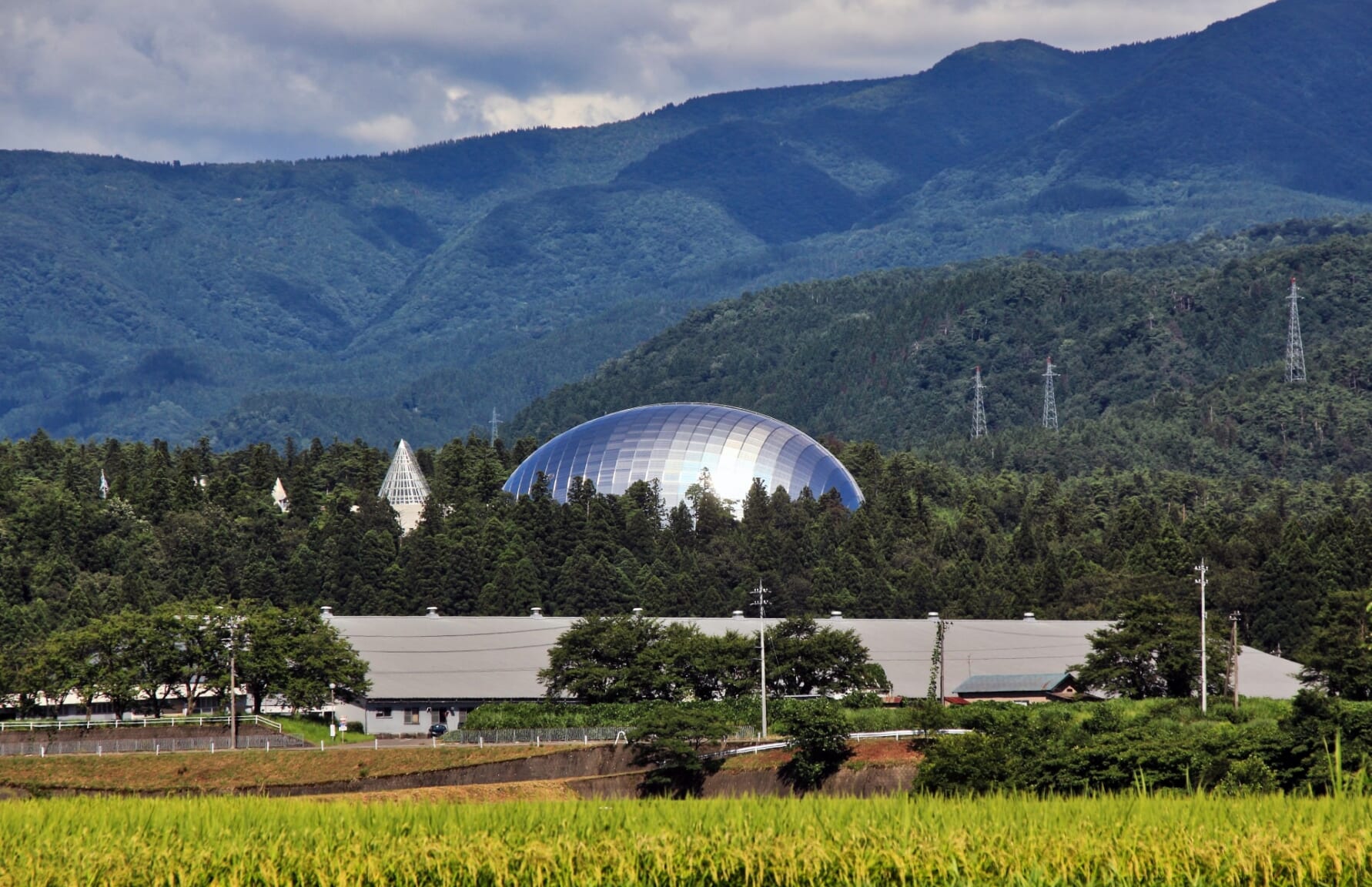
▶ Fukui Prefectural Dinosaur Museum official website: https://www.dinosaur.pref.fukui.jp/en/
8. Art and Craftsmanship Experiences

9. Soak in the Best Onsen Towns of Chubu

▶ Gero Onsen official website: https://www.gero-spa.or.jp/lg_en/
▶ Nozawa Onsen official website: https://nozawakanko.jp/about/hot_spring/ _
▶ Shibu Onsen official website: https://www.shibuonsen.net/english/
▽More information about best onsens in Japan▽
▶ 15 Best Onsen Towns in Japan
10. Enjoy the Best Culinary Delights
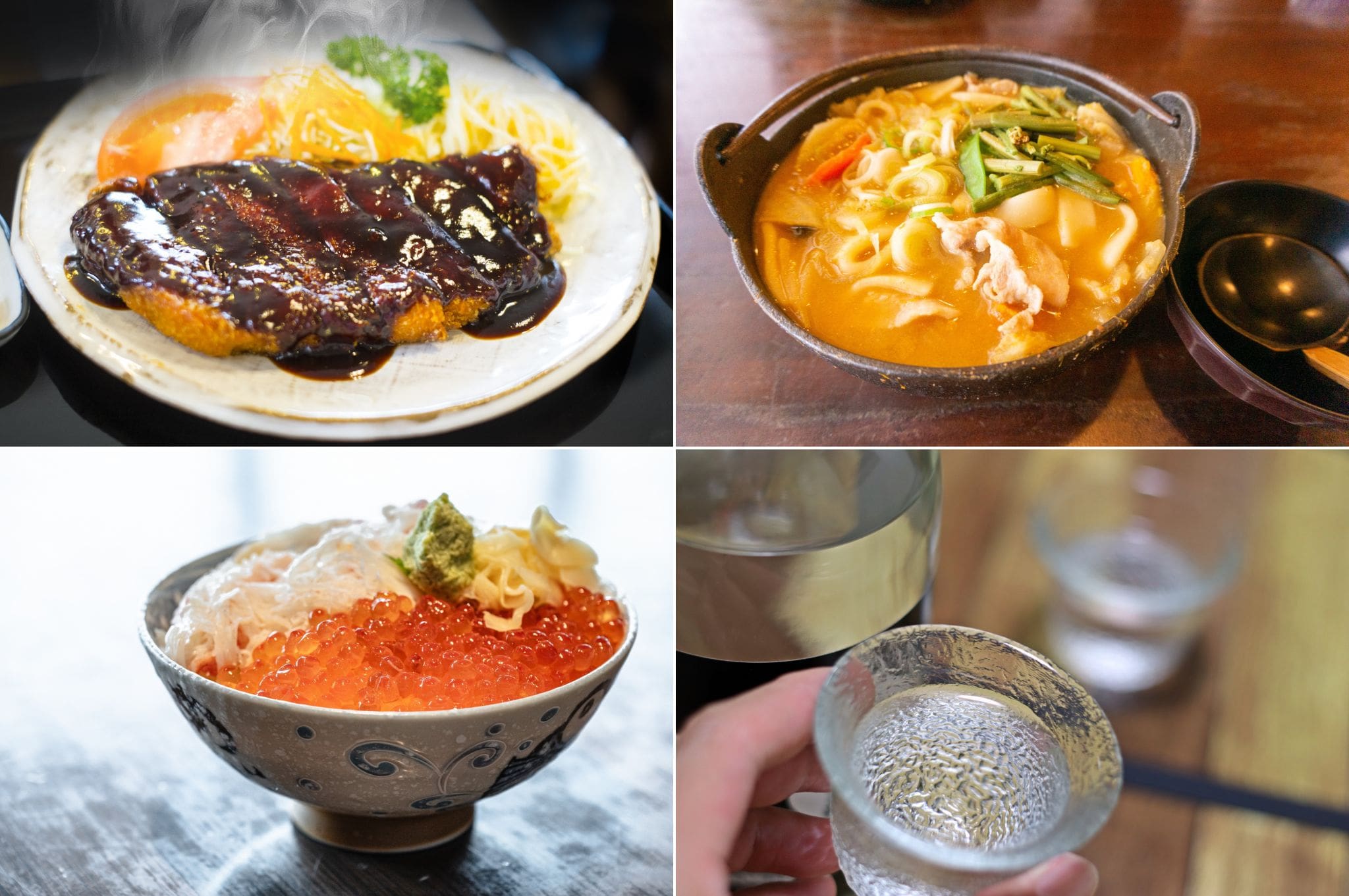
▶ Buy your bullet train tickets here!
Best Things to Do in Yamanashi
Yamanashi Prefecture (山梨県) is synonymous with Mount Fuji, Japan’s most iconic peak. While climbing the mountain is a must-do, the region offers more, such as the scenic Chureito Pagoda, which provides a stunning backdrop of Mount Fuji, especially during cherry blossom season. Yamanashi is also famous for its lakes, like Lake Kawaguchi, where you can enjoy boating and fishing. Events like the Fuji Shibazakura Festival, showcasing vibrant moss phlox fields, attract thousands of visitors. When it comes to food, don’t miss out on “Hoto,” a comforting noodle soup, and the region’s exquisite wines, thanks to its flourishing vineyards.
▽See more attractions in Yamanashi!▽
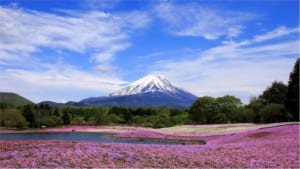
Best Things to Do in Nagano
Nagano Prefecture (長野県) is a paradise for outdoor enthusiasts. Known for its ski resorts like Hakuba and Nozawa Onsen, it’s a winter sports haven. But the region is not just about snow; the historic Matsumoto Castle and the Jigokudani Monkey Park, where snow monkeys bathe in hot springs, are must-visits. Events like the Dosojin Fire Festival in Nozawa Onsen offer cultural insights. For foodies, “Soba” buckwheat noodles and “Oyaki,” a stuffed dumpling, are local specialties you must try.
▽See more attractions in Nagano!▽
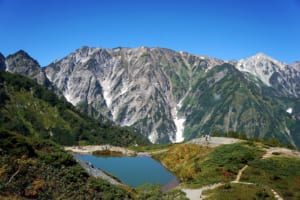
Best Things to Do in Niigata
Niigata Prefecture (新潟県) is renowned for its high-quality rice, which naturally leads to exceptional sake. Visiting a local brewery is a must, but don’t overlook the region’s natural beauty. Sado Island offers unique experiences like Tub-Boat riding, and the Yahiko Shrine is a spiritual hotspot. The Niigata Festival, featuring traditional dances and fireworks, is a summer highlight. When it comes to food, the region’s rice pairs perfectly with local seafood, especially the “Noppe” stew, a mix of seasonal vegetables and fish.
▽See more attractions in Niigata!▽
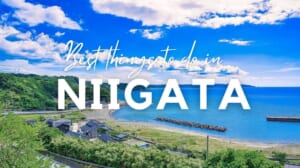
Best Things to Do in Toyama
Toyama Prefecture (富山県) is a nature lover’s dream, most famous for the Tateyama Kurobe Alpine Route, which offers stunning alpine scenery. The Kurobe Dam, Japan’s tallest, is another engineering marvel set against a natural backdrop. Toyama Bay is known for its “Firefly Squid,” which creates a natural light show, a phenomenon best witnessed during the Hotaruika Museum’s annual event. Speaking of food, Toyama is famous for its sushi, particularly “Masu-zushi,” a pressed trout sushi that’s a local delicacy.
▽See more attractions in Toyama!▽
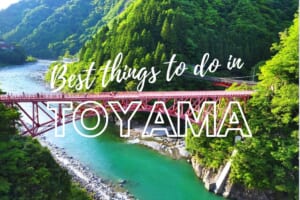
Best Things to Do in Ishikawa
Ishikawa Prefecture (石川県) is a cultural treasure trove, most famous for its Kenrokuen Garden in Kanazawa, one of the Three Great Gardens of Japan. The garden is a year-round attraction, offering seasonal beauty from cherry blossoms to autumn foliage. Kanazawa also boasts the Nagamachi samurai district and the Higashi-Chaya geisha district, both offering a glimpse into Japan’s feudal past. Events like the Hyakumangoku Festival celebrate this rich history with parades and traditional performances. When it comes to food, Ishikawa is renowned for its seafood, particularly the Kano crab and Noto beef, a must-try local delicacy.
▽See more attractions in Ishikawa!▽
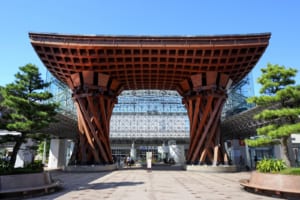
Best Things to Do in Fukui
Fukui Prefecture (福井県) is a unique blend of natural history and spirituality. The Fukui Prefectural Dinosaur Museum is a world-class facility that offers an educational and fascinating experience for all ages. But Fukui is not just about prehistoric times; it’s also a spiritual center with temples like Eihei-ji, a significant site for Zen Buddhism. The annual Habaki-San Fire Festival is a mesmerizing event featuring fire-walking rituals. As for food, Fukui is famous for its soba noodles and Echizen crab, offering a culinary experience that complements its cultural richness.
▽See more attractions in Fukui!▽

Best Things to Do in Shizuoka
While Shizuoka Prefecture (静岡県) shares the iconic Mount Fuji with Yamanashi, it offers its own unique attractions. The Miho Pine Grove offers a different, yet equally stunning, backdrop to Mount Fuji, and the Kunozan Toshogu Shrine provides panoramic views of Suruga Bay. Shizuoka is also famous for its tea plantations; the city of Kakegawa, in particular, is a must-visit for tea enthusiasts. Events like the Shizuoka Festival showcase traditional dances and floats, adding a cultural dimension to your visit. When it comes to food, Shizuoka is famous for its “Sakura Ebi,” a type of cherry shrimp used in various local dishes.
▽See more attractions in Shizuoka!▽
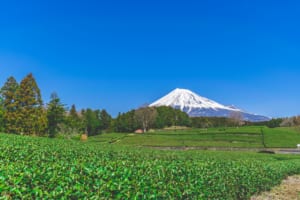
Best Things to Do in Aichi
Aichi Prefecture (愛知県) is often associated with its industrial prowess, being the birthplace of Toyota, but it’s also rich in history and culture. Nagoya Castle, with its golden shachihoko, is a must-visit, as is the Osu Shopping District, where you can find everything from electronics to traditional Japanese wares. The Atsuta Shrine, one of the most important Shinto shrines in Japan, offers a peaceful retreat in the heart of the city. Events like the Nagoya Festival bring the streets to life with parades and traditional performances. When it comes to food, Aichi is famous for its “Hitsumabushi,” a grilled eel dish that’s a local delicacy.
▽See more attractions in Aichi!▽
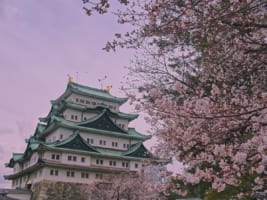
Best Things to Do in Gifu
Gifu Prefecture (岐阜県) is a haven for traditional Japanese crafts and stunning natura l landscapes. The historic village of Shirakawa-go, with its unique gassho-zukuri farmhouses, is a UNESCO World Heritage site and a must-visit. Gifu is also famous for its Washi paper-making and the traditional Ukai cormorant fishing on the Nagara River. Events like the Gujo Odori Dance Festival offer a lively cultural experience. For food, Gifu is renowned for its Hida beef, a high-quality meat that rivals Kobe and Wagyu, and “Keichan,” a local chicken dish.
▽See more attractions in Gifu!▽
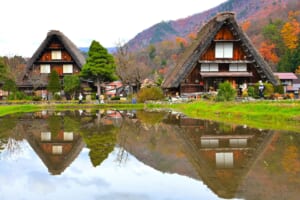
Best Things to Do in Mie
Mie Prefecture (三重県) is perhaps best known for the Ise Grand Shrine, one of the most important spiritual centers in Japan. The shrine is set amidst stunning natural beauty, offering a tranquil space for reflection. But Mie is not just about spirituality; it’s also a coastal paradise. The Toba Aquarium and the Mikimoto Pearl Island offer unique marine experiences. Events like the Kumano Fireworks Festival light up the summer skies and attract thousands of visitors. When it comes to food, Mie is famous for its Matsusaka beef and Ise-ebi lobster, both of which offer a culinary experience that’s as rich as its cultural and natural attractions.
▽See more attractions in Mie!▽

Getting to Chubu
From Tokyo, the most convenient way to reach the Chubu region from Tokyo is via the Shinkansen. The Tokaido Shinkansen connects Tokyo to Nagoya, the largest city in the Chubu region, in just under 2 hours. From Nagoya, you can easily access other parts of Chubu by local trains or buses. But if you’re heading to a specific part of Chubu that’s farther from Nagoya, flying might be a good option. Chubu Centrair International Airport near Nagoya serves both domestic and international flights. The airport is about 1.5 hours from Tokyo by plane.
From Osaka, you can take the Tokaido Shinkansen to Nagoya, which takes about 1 hour. Once in Nagoya, you can use local transportation to reach your final destination in the Chubu region.
For more information about Things to do in Japan, be sure to check our other articles down below.
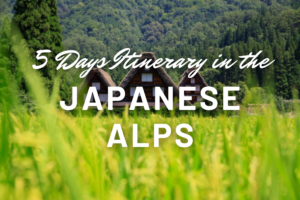
▽Related Articles▽
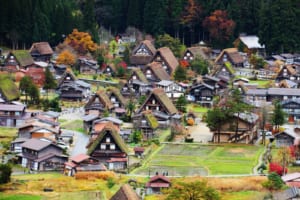
▼Editor’s Picks▼
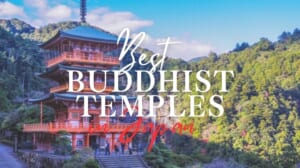
Photographer, journalist, and avid urban cyclist, making sense of Japan since 2017. I was born in Caracas and lived for 14 years in Barcelona before moving to Tokyo. Currently working towards my goal of visiting every prefecture in Japan, I hope to share with readers the everlasting joy of discovery and the neverending urge to keep exploring.
- Central Japan
Winter is here! Check out the winter wonderlands at these 5 amazing winter destinations in Montana
- Travel Destinations
Chubu Itinerary: Explore Central Japan’s Best (5 Days Or More)
Published: September 8, 2023
Modified: January 3, 2024
by Mehetabel Bartholomew
- Plan Your Trip
- Travel Tips
Introduction
Welcome to Chubu, the heart of central Japan! With its rich history, stunning landscapes, and vibrant culture, Chubu offers a mesmerizing blend of tradition and modernity. This region boasts a plethora of fascinating destinations, making it an ideal choice for travelers looking to explore the true essence of Japan.
Chubu is perfectly situated between Tokyo and Kyoto, making it easily accessible for both domestic and international visitors. This article will guide you through a 5-day itinerary, though feel free to extend your stay to fully immerse yourself in the wonders of this region.
Your journey begins in Nagoya, the largest city in Chubu. Known for its impressive skyline and bustling atmosphere, Nagoya offers a mix of contemporary attractions and historical sites. Explore the Nagoya Castle, a magnificent castle that dates back to the 17th century, and visit the Osu Shopping Arcade, where you can immerse yourself in the local shopping scene.
On day two, venture to Takayama, a picturesque town nestled in the heart of the Japanese Alps. Famous for its well-preserved Edo-era streets and traditional houses, Takayama offers a glimpse into Japan’s past. Stroll through Sanmachi Suji, a charming district filled with quaint shops and sake breweries, and don’t forget to visit the morning market to sample local delicacies.
Continuing your journey, day three takes you to two must-visit destinations, Shirakawa-go and Kanazawa. Start with Shirakawa-go, a UNESCO World Heritage Site famous for its traditional gassho-zukuri farmhouses. Marvel at the unique architectural style and immerse yourself in the rural charm of the village. From there, head to Kanazawa, known for its well-preserved samurai and geisha districts. Explore the Kenrokuen Garden, one of Japan’s most beautiful gardens, and visit the 21st Century Museum of Contemporary Art for a taste of modern art.
Day four brings you to Matsumoto and Kamikochi. Matsumoto is home to the stunning Matsumoto Castle, one of Japan’s most picturesque castles. Take in the panoramic views from the observation deck and learn about its rich history. Afterwards, venture into Kamikochi, a serene mountain valley known for its hiking trails and stunning natural beauty. Immerse yourself in the tranquility of the surrounding mountainscape and breathe in the fresh mountain air.
Conclude your Chubu adventure on day five in Nagano. Visit the Zenkoji Temple, one of Japan’s most important Buddhist temples, and explore the historic town of Obuse, known for its traditional sake breweries and Hokusai Museum. If you visit during winter, don’t miss the opportunity to hit the slopes in the nearby ski resorts.
While this itinerary provides an excellent overview of Chubu, there are additional options you can consider to further customize your trip. From exploring the enchanting Alpine Route to discovering the art-filled town of Nagahama, there is no shortage of experiences to be had in Chubu.
Get ready to embark on an unforgettable journey through Chubu, where ancient traditions blend harmoniously with modern marvels. Let the beauty and charm of central Japan captivate your senses and create memories that will last a lifetime.
Day 1: Nagoya
Welcome to Nagoya, the vibrant metropolis and gateway to Chubu! Start your day by delving into the city’s rich history at Nagoya Castle. This magnificent structure, originally built in the 17th century, showcases traditional Japanese architecture and offers panoramic views of the surrounding area from its observation deck.
After exploring the castle, head to Osu Shopping Arcade, a bustling street lined with shops and food vendors. This vibrant arcade is a paradise for shopaholics and food enthusiasts alike. Browse through a wide range of unique fashion items, electronics, and souvenirs, and be sure to sample some local street food along the way.
If you’re interested in automobiles, a visit to the Toyota Commemorative Museum of Industry and Technology is a must. This museum showcases the history and development of Toyota, one of Japan’s most iconic automobile manufacturers. Get a behind-the-scenes look at the production process and see how technology has revolutionized the automotive industry.
In the evening, make your way to Sakae, Nagoya’s downtown district. This area offers a plethora of entertainment options, including shopping malls, restaurants, and nightlife. Take a leisurely stroll through Hisaya Odori Park, a spacious green oasis in the heart of the city, or explore the vibrant nightlife scene at the nearby bars and clubs.
If you’re a food lover, don’t miss the opportunity to try Nagoya’s famous local dishes. Indulge in hitsumabushi, a grilled eel dish served over rice, or chanko-nabe, a hearty hot pot often enjoyed by sumo wrestlers. Nagoya also boasts a rich craft beer scene, so be sure to sample some local brews at one of the city’s craft beer bars.
Whether you’re a history buff, a shopaholic, or a food enthusiast, Nagoya offers a diverse range of experiences that will leave you captivated. Immerse yourself in the rich cultural heritage of the city, sample delicious local cuisine, and create lasting memories in this dynamic hub of central Japan.
Day 2: Takayama
Prepare to be enchanted as you venture to the charming town of Takayama, nestled in the heart of the Japanese Alps. Known for its beautifully preserved Edo-era buildings and traditional streets, Takayama offers a glimpse into Japan’s rich history and cultural heritage.
Start your day by exploring the historic district of Sanmachi Suji. This quaint area is lined with traditional buildings that house shops, sake breweries, and cafes. Take your time to wander through the narrow streets and immerse yourself in the atmosphere of old Japan.
While in Sanmachi Suji, don’t miss the opportunity to visit the Takayama Jinya. This historic government office was once the center of local administration and is now open to the public as a museum. Explore the beautifully preserved rooms, gardens, and learn about the region’s history.
For a deeper understanding of Takayama’s cultural heritage, head to one of the town’s many museums. The Takayama Festival Float Exhibition Hall showcases the elaborate floats used during the Takayama Festival, one of Japan’s most celebrated festivals. The Hida Folk Village Museum provides insight into the traditional architecture and lifestyle of the Hida region.
No visit to Takayama is complete without sampling the local cuisine. Indulge in Hida beef, a highly prized and succulent delicacy, or try the famous Hida sushi, made with locally sourced river fish. The morning market is also a must-visit, where you can taste fresh local produce and sample various snacks.
In the afternoon, take a relaxing stroll along the Miyagawa River and enjoy the tranquil scenery. With its beautifully preserved wooden buildings and charming bridges, the riverside offers a picturesque setting for a leisurely walk and a chance to soak in the ambiance of Takayama.
As the day comes to a close, consider visiting one of Takayama’s traditional public baths, known as onsens, to unwind and relax. These hot springs provide a rejuvenating experience and are a popular way for both locals and visitors to end the day.
Takayama’s old-world charm and rich cultural heritage make it a truly unforgettable destination. Immerse yourself in the traditional atmosphere, savor the local flavors, and create lasting memories in this enchanting town in the heart of central Japan.
Day 3: Shirakawa-go and Kanazawa
On day three, get ready to explore two remarkable destinations, Shirakawa-go and Kanazawa, each offering their own unique charm and attractions.
Start your day by heading to Shirakawa-go, a UNESCO World Heritage Site known for its traditional gassho-zukuri farmhouses. These unique thatched-roof houses showcase traditional Japanese architecture and blend seamlessly with the surrounding landscape. Take a leisurely stroll through the village and admire the picturesque scenery. Don’t miss the opportunity to visit the Wada House, a preserved traditional farmhouse that offers a glimpse into the daily life of the villagers.
From Shirakawa-go, make your way to Kanazawa, a city renowned for its well-preserved samurai and geisha districts. Begin your exploration at Kenrokuen Garden, one of Japan’s most beautiful gardens, known for its stunning landscape design and seasonal beauty. Take a leisurely stroll through the garden paths, admiring its meticulously manicured lawns, vibrant flowers, and tranquil ponds.
Next, visit the Higashi Chaya District, a preserved geisha district where you can catch a glimpse of the traditional Japanese entertainment culture. Explore the historic teahouses, some of which are open to the public, and learn about the customs and traditions surrounding the world of geishas.
For art enthusiasts, the 21st Century Museum of Contemporary Art is a must-visit. This unique museum showcases a diverse range of modern artworks and installations from both Japanese and international artists. Explore the interactive exhibits, and perhaps even participate in workshops or events happening at the museum.
If time permits, visit Kanazawa Castle, a restored castle that was once the seat of the powerful Maeda Clan. Explore the castle grounds and learn about the region’s feudal history and the clan’s influence on Kanazawa’s development.
As the day comes to an end, indulge in Kanazawa’s renowned culinary scene. Sample local delicacies such as kaisen-don (seafood rice bowl), gold leaf ice cream, and exquisite sushi made with fresh seafood from the Sea of Japan. Kanazawa is also famous for its exquisite craftsmanship, so be sure to visit one of the local lacquerware or gold leaf workshops to witness the mastery of these traditional arts.
Shirakawa-go and Kanazawa offer a perfect fusion of natural beauty and cultural heritage. Immerse yourself in the traditional charm of the farmhouses in Shirakawa-go, and then experience the elegance and artistry of Kanazawa. Discover the beauty of the past while enjoying the modern amenities and attractions these destinations have to offer.
Day 4: Matsumoto and Kamikochi
Day four takes you to the picturesque city of Matsumoto and the stunning natural beauty of Kamikochi. Prepare to be captivated by the majestic landscapes and historical treasures of this region.
Start your day in Matsumoto by visiting its iconic landmark, Matsumoto Castle. Also known as the “Crow Castle” due to its black exterior, this majestic fortress dates back over 400 years. Explore the castle grounds, climb up to the observation deck, and immerse yourself in the rich history and architecture of this well-preserved castle.
From Matsumoto Castle, stroll through the nearby Nakamachi Street, a charming district lined with traditional merchant houses. Discover local shops, cafes, and galleries, and experience the nostalgic atmosphere of old Japan. Don’t forget to sample the local specialty, soba noodles, which are made from buckwheat and renowned for their delicate flavors.
After exploring Matsumoto, head to Kamikochi, a serene mountain valley located in the Northern Japan Alps. Kamikochi is known for its pristine nature and beautiful hiking trails that offer breathtaking views of mountains, rivers, and alpine meadows.
The Kappabashi Bridge is the iconic symbol of Kamikochi and serves as the gateway to the scenic wonders of the area. Cross the bridge and embark on a leisurely hike along the Azusa River, surrounded by stunning mountain scenery and clear streams. Admire the natural beauty of Myojin Pond, reflecting the peaks of the surrounding mountains on its calm surface.
For more adventurous hikers, the trails leading to peaks such as Hotaka and Yake-dake provide challenging but rewarding experiences. These mountains offer breathtaking panoramic views that will leave you in awe of Kamikochi’s natural wonders.
After a day of exploration, relax and rejuvenate at one of the hot spring resorts in Kamikochi. Unwind in the soothing waters while gazing at the starry sky, a perfect way to end your day in this tranquil mountain paradise.
Matsumoto and Kamikochi offer a harmonious blend of culture and nature. Immerse yourself in the rich history of Matsumoto Castle and wander through the traditional streets, then venture into the mountains of Kamikochi for a breathtaking natural experience. Explore the beauty of both man-made and natural treasures in this captivating part of central Japan.
Day 5: Nagano
On the final day of your Chubu adventure, visit Nagano, a city steeped in history and surrounded by stunning natural landscapes. Begin your day by exploring the cultural gem of Nagano, the Zenkoji Temple. This ancient Buddhist temple is one of Japan’s most important pilgrimage sites and dates back over 1,400 years. Enter the temple grounds and experience its serene atmosphere as you stroll through the mesmerizing hallways and admire the beautiful architecture.
Next, visit the nearby Nagano City Museum to learn more about the city’s rich heritage and historical significance. The museum showcases a diverse collection of artifacts that shed light on Nagano’s past, including samurai armor, traditional crafts, and artwork.
For ski enthusiasts or those seeking outdoor adventures, a visit to the nearby ski resorts is a must. Nagano hosted the Winter Olympics in 1998, and its ski resorts offer world-class skiing and snowboarding opportunities. Enjoy the thrill of gliding down the slopes surrounded by the stunning snow-capped peaks of the Japanese Alps.
If you’re visiting Nagano in the warmer months, consider exploring the serene and picturesque town of Obuse. This historic town is known for its traditional sake breweries and the Hokusai Museum, dedicated to the renowned ukiyo-e artist Katsushika Hokusai. Explore the charming streets, visit the breweries for a taste of local sake, and immerse yourself in the art and culture of the region.
Don’t miss the opportunity to taste Nagano’s famous cuisine, including Shinshu soba, a regional specialty of thin buckwheat noodles, and oyaki, a savory pastry filled with various ingredients such as mushrooms or vegetables.
If time permits, take a short trip to the nearby Jigokudani Monkey Park, where you can observe wild Japanese macaques, also known as snow monkeys, bathing in the park’s hot springs. This unique and memorable experience allows you to witness the close relationship between humans and wildlife in Japan.
As your Chubu journey comes to an end, reflect on the rich cultural heritage, natural beauty, and delicious cuisine that you have experienced in this diverse region. Nagano offers a perfect blend of history, nature, and adventure, leaving you with lasting memories of your time in central Japan.
Additional Options
While the 5-day itinerary provides a fantastic overview of Chubu, there are additional options to further enrich your journey. Consider adding these destinations or activities to customize your trip:
- Alpine Route: Embark on a breathtaking journey through the Japanese Alps on the Tateyama Kurobe Alpine Route. Marvel at stunning mountain vistas, traverse snow walls, and ride cable cars for a truly memorable experience.
- Nagahama: Explore the charming town of Nagahama, located on the shores of Lake Biwa. Discover the historic Hikone Castle, visit the beautiful Nagahama Castle, and immerse yourself in the traditional atmosphere of this lakeside town.
- Kiso Valley: Venture into the scenic Kiso Valley, known for its well-preserved post towns along the Nakasendo Trail. Take a leisurely hike through the picturesque countryside and soak in the rich cultural heritage of this historic route.
- Gero Onsen: Indulge in the tranquility and relaxation of Gero Onsen, one of Japan’s top hot spring resorts. Soak in the mineral-rich waters while enjoying the scenic views of the Hida River.
- Nagoya Science Museum: Engage in interactive exhibits and explore the wonders of science at the Nagoya Science Museum. Discover fascinating displays on space exploration, robotics, and more.
These additional options offer a variety of experiences, from natural beauty to cultural immersion and outdoor adventures. Choose the ones that resonate with your interests and preferences to create a truly personalized and unforgettable Chubu itinerary.
Congratulations! You have completed your 5-day journey through the captivating region of Chubu in central Japan. From the bustling streets of Nagoya to the serene valleys of Kamikochi, you have experienced the best that this diverse region has to offer.
Chubu’s perfect blend of cultural heritage, natural beauty, and modern innovation has left a lasting impression on you. The historical treasures, such as Nagoya Castle and Matsumoto Castle, showcased the rich history and architectural marvels of the area.
You immersed yourself in traditional Japanese culture as you explored the enchanting streets of Takayama and Kanazawa, witnessed the ancient farmhouses of Shirakawa-go, and felt the spiritual tranquility at Zenkoji Temple in Nagano.
And let’s not forget the breathtaking natural landscapes that captivated your senses. The Japanese Alps provided stunning mountain vistas, while Kamikochi offered serene beauty with its alpine meadows and flowing rivers. You indulged in the delicious cuisine, indulging in the local specialties and experiencing the flavors of the region.
Remember, this itinerary is just a starting point. Chubu offers a plethora of options for further exploration. Consider extending your stay to visit the Alpine Route, discover the Kiso Valley, or relax in Gero Onsen.
As your adventure comes to an end, take a moment to reflect on the memories you have created. The warmth and kindness of the people, the mesmerizing landscapes, and the blending of tradition and modernity have left an indelible mark on your heart.
Chubu, the heart of central Japan, has welcomed you with open arms, inviting you to explore, discover, and immerse yourself in its rich cultural tapestry. So, until we meet again, sayonara, and may your experiences in Chubu continue to inspire and enrich your journey through the Land of the Rising Sun.

- Privacy Overview
- Strictly Necessary Cookies
This website uses cookies so that we can provide you with the best user experience possible. Cookie information is stored in your browser and performs functions such as recognising you when you return to our website and helping our team to understand which sections of the website you find most interesting and useful.
Strictly Necessary Cookie should be enabled at all times so that we can save your preferences for cookie settings.
If you disable this cookie, we will not be able to save your preferences. This means that every time you visit this website you will need to enable or disable cookies again.
Chubu Region: A Traveler’s Guide to the Best Destinations
LAK Regions Aichi , Chubu , Chukyo Metropolitan Area , Fujisan , Fukui , Gifu , Ishikawa , Japan , Mount Fuji , Nagano , Nagoya , Nakasendo , Niigata , Shirakawago , Shizuoka , Takayama , Tateyama Kurobe Alpine Route , Tokaido , Tokaido Shinkansen , Toyama , UNESCO , World Heritage Sites , Yamanashi 0
Chubu region (中部地方) is a region located in the central part of Japan’s main island, Honshu. It is one of the country’s nine regions and is known for its diverse landscapes, rich history, and vibrant cities. The name “Chubu” translates to “central region,” highlighting its geographical position between the Kanto region to the east and the Kansai region to the west. The region encompasses nine prefectures: Niigata, Fukui, Ishikawa, Toyama, Aichi, Gifu, Nagano, Yamanashi, and Shizuoka.
Geographically, Chubu is characterized by the Sea of Japan coastline on the west and the Pacific Ocean coastline on the east, with the centre covered by mountainous terrain, with the Japanese Alps running through the region. The western coastline, commonly known as the Hokuriku region, is home to large cultural centers such as Kanazawa , Niigata, and Joetsu.
The region is steeped in cultural heritage and offers a fascinating glimpse into Japan’s traditional arts, crafts, and historical legacy. The Pacific Ocean coastline, home to the Chūkyō Metropolitan Area surrounding Nagoya , is a major economic center of Japan. While traditionally seen as the linking path between Kanto and Kansai , this region is now home to impressive development, especially in heavy machinery, automobile, and railway industries.
The Japanese alps majestic mountain range offers breathtaking scenery and serves as a playground for outdoor enthusiasts. Popular destinations in the Japanese Alps include the Tateyama Kurobe Alpine Route, which is famous for its stunning snow walls in spring, and the picturesque town of Takayama , known for its well-preserved traditional streets and annual Takayama Festival.
Niigata is a vibrant prefecture located on the northwest coast of Honshu, Japan’s main island. Known for its abundant natural beauty, rich cultural heritage, and delicious rice and sake production, Niigata offers a captivating destination for travelers.
Niigata’s coastal location provides stunning views of the Sea of Japan, with picturesque beaches and rugged cliffs dotting the coastline. The prefecture is also blessed with beautiful mountain ranges, including the majestic peaks of the Echigo Mountains. These natural landscapes offer opportunities for outdoor activities such as hiking, skiing, and hot spring bathing.
The region’s cultural heritage is deeply rooted in traditional arts and performances. Niigata is famous for its Noh theater, a classical Japanese performing art that dates back centuries. The annual Niigata Nagaoka Festival showcases impressive fireworks displays and traditional music and dance, attracting visitors from near and far.
Niigata is renowned for its high-quality rice production, making it a hub for sake brewing. The prefecture boasts numerous sake breweries where visitors can learn about the brewing process and sample a variety of sake flavors. Additionally, Niigata’s seafood, particularly its delectable snow crabs and delicious sushi, is highly regarded throughout Japan.
The city of Niigata, the prefecture’s capital, offers a blend of modern amenities and historical charm. The Bandai Bridge, a symbol of the city, spans the Shinano River and offers panoramic views of the surrounding area. The Northern Culture Museum showcases traditional Japanese architecture and art, providing insight into the region’s cultural heritage.
Overall, Niigata offers a captivating mix of natural beauty, cultural traditions, and culinary delights. Whether enjoying the scenic landscapes, exploring historical sites, indulging in local cuisine, or immersing in traditional arts, Niigata provides a memorable experience that highlights the best of Japan’s diverse offerings.
Toyama is a captivating prefecture nestled in the Chubu region of Japan. It is known for its stunning natural beauty, rich cultural heritage, and technological innovation. Located on the coast of the Sea of Japan, Toyama offers a diverse range of attractions for visitors to enjoy.
One of the main draws of Toyama is its picturesque landscapes, including the Tateyama Kurobe Alpine Route. This scenic mountain route offers breathtaking views of snow-capped peaks, pristine lakes, and dramatic gorges. The famous Kurobe Dam, one of the tallest dams in the world, is also located along this route and is a testament to human engineering prowess.
Toyama Bay is renowned for its abundant seafood, particularly the exquisite firefly squid, which illuminates the waters during its mating season. Visitors can enjoy fresh seafood delicacies at local restaurants and explore the bustling fish markets.
The city of Toyama itself is a blend of modernity and tradition. It is home to the innovative Toyama Science Museum, which showcases cutting-edge technology and scientific advancements. The traditional atmosphere can be experienced in the historic district of Fugan Canal Kansui Park, where visitors can stroll along picturesque canals lined with cherry blossoms.
Toyama is also known for its traditional crafts, including intricate glassware and lacquerware. The Toyama Glass Art Museum and the Zuiryu-ji Temple display the region’s artistic heritage and provide opportunities to witness the craftsmanship firsthand.
Ishikawa, a prefecture located on the western coast of Honshu island in Japan. It is a captivating destination renowned for its rich cultural heritage, exquisite craftsmanship, and beautiful natural landscapes. With its blend of historical attractions, traditional arts, and stunning scenery, Ishikawa offers a unique and immersive travel experience.
The city of Kanazawa , Ishikawa’s cultural capital, is a treasure trove of traditional arts and crafts. The beautifully preserved districts of Higashi Chaya and Nagamachi Samurai District showcase the city’s feudal past, with teahouses, samurai residences, and traditional crafts. Kanazawa is also home to Kenrokuen Garden , one of Japan’s most celebrated gardens. The garden is famous for its meticulous landscaping and seasonal beauty. Kanazawa is also home to amazing art scene, with museums such as the 21st Century Museum of Contemporary Art hosts amazing contemporary art pieces.
Ishikawa is renowned for its lacquerware, pottery, and gold leaf production. Visitors can explore the Wajima Lacquerware Traditional Industry Cooperative, where skilled artisans demonstrate the intricate techniques of lacquerware creation. The Kutaniyaki Art Museum showcases the exquisite Kutani ceramics, known for their vibrant colors and intricate designs. The Hakuza Gold Leaf Museum provides insights into the traditional craft of gold leaf production, which has been practiced in Ishikawa for centuries.
The prefecture’s natural landscapes are equally captivating. The Noto Peninsula, with its rugged coastlines, picturesque fishing villages, and scenic drives, offers a peaceful retreat from the city. The Kaga Onsen region is renowned for its hot springs, where visitors can soak in therapeutic waters and experience traditional Japanese hospitality.
Ishikawa’s culinary scene is also a delight. The region is famous for its seafood, particularly its delectable crab and sushi. Kanazawa is known for its fresh seafood markets, where visitors can savor the catch of the day.
Fukui is a prefecture located in the Chubu region of Japan. It is known for its rich cultural heritage, natural beauty, and historical significance. Situated on the coast of the Sea of Japan, Fukui offers a diverse range of attractions for visitors to explore.
One of the main highlights of Fukui is the Eiheiji Temple. It is a renowned Zen Buddhist temple that serves as one of Japan’s most important spiritual centers. The temple provides a serene and immersive experience, with its well-preserved buildings, tranquil gardens, and opportunities for meditation and reflection.
Fukui is also famous for its dinosaur fossils, making it a paradise for paleontology enthusiasts. The Fukui Prefectural Dinosaur Museum is one of the largest dinosaur museums in the world and boasts an extensive collection of fossils and interactive exhibits that showcase the region’s rich prehistoric history.
Nature lovers will appreciate Fukui’s beautiful landscapes, including the stunning Tojinbo Cliffs along the coast. These dramatic cliffs, formed by volcanic activity, offer breathtaking views of the sea and are a popular spot for sightseeing and photography.
Fukui is also known for its traditional crafts, particularly its lacquerware and textiles. The city of Sabae is renowned for its production of high-quality eyeglasses, with many prestigious eyewear brands originating from the area.
Additionally, Fukui is home to numerous historical sites, such as Fukui Castle and Maruoka Castle. Both castles offer magnificent insights into the region’s feudal past. The Ichijodani Asakura Clan Ruins, a reconstructed samurai town, provide a glimpse into the daily life and culture of the samurai era.
With its blend of cultural treasures, natural wonders, and historical significance, Fukui offers a well-rounded travel experience for those seeking to delve into Japan’s rich heritage and explore its diverse landscapes.
Aichi prefecture, situated in the center of Chubu. It is a dynamic and thriving area famous for its industrial prowess, historical significance, and vibrant cultural scene. Home to Nagoya, the region’s capital and Japan’s fourth-largest city, Aichi offers a diverse range of attractions and experiences for visitors to enjoy.
Nagoya is a bustling metropolis that seamlessly blends modernity with tradition. The city is famous for its impressive landmarks, including Nagoya Castle with its iconic golden shachihoko (mythical fish) roof ornaments. At the Toyota Commemorative Museum of Industry and Technology, visitors can explore the history and technological advancements of the renowned Japanese automaker.
Aichi is also a hub for traditional arts and crafts. The city of Seto is a major ceramic producer, particularly the distinctive Seto-yaki pottery. The region’s rich history and cultural heritage can be experienced at the Tokugawa Art Museum and Osu Kannon Temple, both offering insights into Japan’s feudal past.
Aichi is home to several notable festivals. The grand Nagoya Festival and the captivating Owari Tsushima Tenno Festival are known for its vibrant parades and traditional performances. The Atsuta Shrine, one of Japan’s most important Shinto shrines, hosts the Atsuta Festival, an annual event celebrated with processions and ceremonies.
Nature enthusiasts can explore the natural beauty of Aichi at places like the Chita Peninsula, known for its picturesque beaches and coastal scenery. The Hida River in the Okumikawa region offers opportunities for outdoor activities such as rafting and fishing.
Aichi’s culinary scene is diverse and enticing, with local specialties like hitsumabushi (grilled eel over rice) and kishimen (flat udon noodles). The region is also known for its high-quality sake production, adding to its culinary appeal.
Gifu is a prefecture nestled in the Chubu region of Japan. It is a captivating destination known for its picturesque landscapes, historical significance, and cultural treasures. With its mountainous terrain, charming towns, and rich heritage, Gifu offers a diverse range of attractions for visitors to explore.
One of the main draws of Gifu is the enchanting city of Takayama. Known for its beautifully preserved old town, Takayama offers a glimpse into traditional Japan with its narrow streets, wooden merchant houses, and charming shops. The Takayama Festival, held in spring and autumn, is a major highlight, showcasing elaborate floats and traditional performances.
Gifu is also home to the iconic Shirakawa-go and Gokayama villages, both UNESCO World Heritage Sites . These historic villages are world famous for their traditional gassho-zukuri farmhouses, with their steep thatched roofs resembling hands in prayer. Visitors can experience rural life, participate in traditional activities, and admire the stunning scenery.
Nature lovers will appreciate Gifu’s natural beauty, particularly in the Hida Mountains. The magnificent Kamikochi, a pristine highland valley, offers breathtaking scenery with its crystal-clear rivers, majestic peaks, and vibrant autumn foliage. The Norikura Highlands provide opportunities for hiking, while the Nagaragawa River offers scenic boat cruises.
Gifu is also famous for its hot springs, such as Gero Onsen and Takayama Onsen. These rejuvenating thermal baths provide relaxation and tranquility amidst the stunning natural surroundings.
Gifu’s culinary scene is diverse and delicious, with local specialties such as Hida beef, a premium Japanese beef renowned for its marbling and tenderness. The region’s sake production is also highly regarded, with several breweries offering tours and tastings.
Nagano is located in the middle of Chubu region of Japan. It is a captivating prefecture renowned for its stunning mountain landscapes, rich cultural heritage, and world-class winter sports. Known as the host of the 1998 Winter Olympics, Nagano offers a wealth of attractions and experiences for visitors to enjoy.
The city of Nagano is home to the famous Zenkoji Temple, one of Japan’s most significant Buddhist temples. This ancient temple holds a revered statue of Buddha and attracts pilgrims from all over the country. The surrounding Zenkoji Temple town offers a charming atmosphere with its narrow streets, traditional shops, and historic buildings.
Nagano’s mountainous terrain provides opportunities for outdoor adventures. The Japan Alps, including the majestic peaks of the Northern Alps and the Southern Alps, offer breathtaking hiking trails, alpine scenery, and opportunities for mountaineering. The picturesque Kamikochi, nestled in the Northern Alps, is a popular destination for nature enthusiasts. Furthermore, the prefecture is also home to the nakasendo highway, which played a significant role linking Tokyo (Edo) and Kyoto during Tokugawa shogunate.
Nagano is also a paradise for winter sports enthusiasts. The region boasts world-class ski resorts, including Hakuba, Nozawa Onsen, and Shiga Kogen, offering a wide range of slopes for skiers and snowboarders of all levels. The Jigokudani Monkey Park is another popular attraction, where visitors can observe Japanese macaques (snow monkeys) bathing in hot springs.
Nagano’s cultural heritage are the most eminent in Matsumoto , home to the stunning Matsumoto Castle , one of the twelve original castles in the country . The city also hosts the Matsumoto Performing Arts Center, a renowned venue for classical music and dance performances. Furthermore, Matsumoto is also home to the Matsumoto City Museum of Art , where plenty of Yayoi Kusama art works are collected.
The prefecture is famous for its delicious local cuisine, including Shinshu soba (buckwheat noodles), oyaki (stuffed dumplings), and apples. Nagano’s sake breweries produce a variety of high-quality rice wines, which can be sampled at local sake breweries and bars.
Yamanashi is a landlocked prefecture in the Chubu region of Japan. It is a captivating destination known for its stunning natural landscapes, rich history, and world-class vineyards. With its picturesque mountains, serene lakes, and cultural treasures, Yamanashi offers a diverse range of attractions for visitors to explore.
The iconic symbol of Yamanashi is Mount Fuji , Japan’s tallest and most revered mountain. The prefecture offers some of the best vantage points to admire the majestic beauty of Mount Fuji, including the Fuji Five Lakes (Fujigoko) region. The crystal-clear lakes of Kawaguchi, Saiko, Yamanaka, Shoji, and Motosu, with their reflection of the iconic peak, create a mesmerizing sight.
Yamanashi is the prominent prefecture for Japan vineyards and wine production. The Katsunuma area is the birthplace of Japanese wine, and visitors can explore wineries, participate in wine tastings, and enjoy the scenic vineyard landscapes. The annual Yamanashi Grape Festival celebrates the region’s viticulture heritage.
The city of Kofu, the capital of Yamanashi, offers historical and cultural attractions. The Takeda Shrine, dedicated to the warlord Takeda Shingen, showcases the region’s samurai history. The Kofu Castle Ruins provide insights into the castle’s architectural design and offer panoramic views of the city.
Nature enthusiasts can explore the beauty of Yamanashi in the Fuji-Hakone-Izu National Park , which spans across multiple prefectures. The park offers hiking trails, hot springs, and the mesmerizing Fuji Five Lakes region.
Yamanashi’s cuisine features local delicacies such as houtou, a hearty noodle dish with vegetables and miso soup, and hoto, a thick flat udon noodle stew. The prefecture grows famous high-quality fruits, including peaches, grapes, and cherries.
Shizuoka is a captivating prefecture located in the Chubu region of Japan. It is famous for its breathtaking natural beauty, historical significance, and thriving tea industry. With its stunning coastline, majestic mountains, and cultural treasures, Shizuoka offers a diverse range of attractions and experiences for visitors to discover.
Shizuoka is blessed with picturesque coastal landscapes along the Pacific Ocean. The Izu Peninsula is a popular destination, known for its pristine beaches, rugged cliffs, and hot springs. At the southern tip of the peninsula, the iconic Mount Fuji can be admired from various viewpoints, offering a splendid sight.
The prefecture is famous for its tea plantations, particularly in the scenic town of Shimizu. Visitors can explore tea farms, participate in tea ceremonies, and learn about the intricate process of tea production. The Shizuoka Tea Festival celebrates the region’s tea culture and offers opportunities to sample different varieties of Japanese tea.
Shizuoka’s cultural heritage can be experienced at the Kunozan Toshogu Shrine , a beautiful Shinto shrine dedicated to Tokugawa Ieyasu, the founder of the Tokugawa Shogunate. The shrine offers stunning views of Suruga Bay and is surrounded by lush forests.
Nature enthusiasts will appreciate the natural wonders of Shizuoka, including the serene Lake Hamana, the picturesque Miho no Matsubara pine grove, and the Shimizu Seaside Park, which offers panoramic views of Mount Fuji and the Suruga Bay.
Shizuoka’s cuisine showcases the region’s abundant seafood, particularly its delectable eel dishes, sashimi, and sushi. The prefecture produces the best wasabi, a pungent green horseradish used as a condiment in Japanese cuisine.
Recommendation itineraries:
Read my Chubu itineraries page for more information.
Best time to visit Chubu:
The best time to visit the Chubu region in Japan depends on the specific experiences you are seeking. Chubu experiences four distinct seasons, each with its own unique attractions and weather conditions.
Spring (March to May): Spring is a beautiful time to visit Chubu as cherry blossoms (sakura) bloom across the region, creating stunning landscapes. The weather is generally mild, making it ideal for outdoor activities and sightseeing. Some popular cherry blossom spots include Nagoya Castle, Matsumoto Castle, and the streets of Takayama.
Summer (June to August): Summer in Chubu can be hot and humid, especially in the lowland areas. However, it is a great time to explore the region’s scenic mountains, such as the Japan Alps, and enjoy outdoor activities like hiking, mountain climbing, and visiting national parks. The coastal areas, such as the Izu Peninsula, are popular for beach activities and water sports.
Autumn (September to November): Autumn is a picturesque season in Chubu, characterized by vibrant fall foliage. The changing colors of the leaves create a stunning backdrop for sightseeing and outdoor activities. Popular spots for autumn foliage include Kamikochi, Tateyama Kurobe Alpine Route, and the Fuji Five Lakes region.
Winter (December to February): Winter in Chubu is famous for its heavy snowfall, especially in the mountainous areas. This makes it an excellent time for winter sports enthusiasts to visit popular ski resorts like Hakuba, Nozawa Onsen, and Shiga Kogen. Additionally, winter is a great time to relax in hot springs (onsen) and enjoy winter festivals, such as Nabana no Sato – Japan’s Best Winter Illumination just on the outskirts of Nagoya.
How long should you spend in Chubu
The ideal duration to spend in the Chubu region of Japan depends on your personal interests, the specific destinations you plan to visit, and the activities you wish to engage in. However, a suggested minimum duration is around 4 to 7 days to have a well-rounded experience of the region.
If you have limited time, focusing on one or two key destinations within Chubu would be more feasible. For example, you could spend a few days exploring the city of Nagoya, visiting attractions such as Nagoya Castle and the Osu Kannon Temple. Alternatively, you could dedicate your time to the scenic beauty of the Japanese Alps in areas like Takayama or Matsumoto, enjoying the traditional atmosphere and natural landscapes.
If you have a week or more, you can explore multiple attractions and delve deeper into the region’s offerings. This would allow you to experience places like the historic town of Kanazawa, the picturesque Fuji Five Lakes area with Mount Fuji, or the hot spring resorts of Hakone and Izu Peninsula.
Keep in mind that Chubu is a diverse region with a variety of experiences, including cultural heritage, outdoor activities, and culinary delights. Planning your itinerary based on your preferences will ensure a fulfilling and enjoyable trip.
Chubu, located in central Japan, is easily accessible from major cities and international airports within the country. Here are some common ways to access the Chubu region:
By Air: Chubu is served by two main airports. Chubu Centrair International Airport (NGO) is located near Nagoya and offers both domestic and international flights. It is well-connected to major cities in Japan and has international flights to destinations in Asia, Europe, and North America. Komatsu Airport (KMQ) in Ishikawa Prefecture is another option for accessing the northern part of Chubu.
By Train: The Shinkansen, Japan’s high-speed train network, provides convenient access to Chubu. The Tokaido Shinkansen connects Tokyo with Nagoya, allowing for easy transportation between the two cities. From Nagoya, you can take regional trains or buses to other destinations within Chubu, such as Takayama or Matsumoto. The Hokuriku Shinkansen connects Tokyo to Nagano and Kanazawa, allows efficient access to the most cultural centers of Chubu. From Kanazawa and Nagano, regional trains and buses can take you to other destinations such as Shirakawago .
By Bus: Long-distance buses are available from various cities in Japan to Chubu. Several companies operate highway buses that connect major cities like Tokyo, Osaka , Kyoto, and Hiroshima to destinations within Chubu.
By Car: If you prefer driving, Chubu is accessible via major highways. The Tomei Expressway and Chuo Expressway connect Tokyo to Nagoya. The Hokuriku Expressway, meanwhile, provides access to the northern part of Chubu.

Kenninji – The most amazing Zen temple in Gion

Cherry blossom at Daigoji – The best guide

Cherry blossom in Okazaki Canal – The best guide

Keage Incline – The most wonderful cherry blossom destination in Kyoto

Heian Shrine – The Most Wonderful Shinto Shrine in Kyoto

Okazaki Canal – The most astonishing area for cherry blossom

Osaka Castle – The most beautiful castle in Kansai

Japan Top 100 Castles – The most amazing castles ever-built

Chugoku – The most underrated yet beautiful region of Japan

Kobe – the vibrant and exciting port city of Kansai

Umeda Sky Building – The most amazing observatory in Osaka

Umeda – Complete guide to the best area of Osaka

Osaka Aquarium Kaiyukan – The best aquarium in Japan

teamLab Botanical Garden Osaka – The most amazing experience

Shitennoji Temple – The surprisingly beautiful temple of Osaka

Namba – The best entertainment area of Osaka

Reihokan Museum – The most amazing museum about Koyasan

Okunoin – The astonishing sacred mausoleum in Koyasan

Danjo Garan – The Most Amazing Temple Complex of Koyasan

Kongobuji – The most beautiful Shingon Buddhist temple in Koyasan

Koyasan – The Most Astonishing Buddhist Mountain in Japan

Motsuji Temple – The most remarkable survival Pure Land Garden

Chusonji Temple – The Astonishing Tranquil Treasure of Japan

Hiraizumi – The most beautiful representation of Pure Land Buddhism

Yamadera – The Powerful Serenity of the Sacred Mountain

Sendai – The most wonderful city in Tohoku

Nebuta Wa Rasse – The beautiful museum about Aomori Matsuri

Onuma Quasi National Park – The Most Amazing Natural Oasis

Otaru – the beautiful small city west of Sapporo

Nijo Market – The great seafood world of Sapporo

JR Tower Observatory T38 – A sensational way to view Sapporo

Sapporo TV Tower – The Most Remarkable Observatory of Sapporo

Sapporo Beer Museum – The Powerful Experience for Beer Enthusiasts

Japan Cherry Blossom Forecast 2024 – The Most Astonishing Spring phenomenon

Odori Park – The Most Wonderful Central Park of Sapporo

Nakajima Park – The best cherry blossom destination in Sapporo
Sapporo maruyama park – the most astonishing park in sapporo.

Sapporo – Discover the Remarkable Heart and Soul of Hokkaido

Noboribetsu – The Most Astonishing Hot Spring in Japan

Kanemori Red Brick Warehouse – Complete guide for the best time

Mount Hakodate Observatory – Complete guide for the best time

Motomachi – the most wonderful neighborhood of Hakodate

Hakodate City Museum of Northern Peoples – The Best Guide

Goryokaku – The Most Astonishing Fort of Japan

Hakodate – Simple Guide to the astonishing gem of Hokkaido

Nikko Futarasan Shrine – The wonderful Shinto shrine in Nikko

Rinnoji Temple – The most remarkable temple in Japan

Nikko Toshogu – The Most Astonishing Shinto Shrine in Japan

Nikko – Unveiling the Most Remarkable Treasures of Edo

Kamakura – The Most Amazing Cultural Center South of Tokyo

Kawagoe – A guide for the most wonderful time

Ginza – The most amazing shopping district in Tokyo

Odaiba – the most fascinating artificial islands of Tokyo

Sunshine City – The complete guide to the best Pokémon experience

Ikebukuro – the best anime heaven of Tokyo

Sensoji – Unveiling the Remarkable Old Spirit of Tokyo

Asakusa – A Detailed Guide for The Best Destinations

Nakano Broadway – The Sensational Paradise for Pop Culture Fan
Nakano – the best neighbourhood for vintage shoppers.

Ueno Zoo – An Amazing Experience in the midst of Tokyo

National Museum of Nature and Science – The Complete Guide

National Museum of Western Art – The Best Guide

Tokyo National Museum – The Most Remarkable Museum of Japan

Ueno Park – Tokyo Best Park with the Best Museums

Mori Art Museum – The Remarkable Museum with Stunning Observatory

National Art Center – A sensational cultural icon of Roppongi

Roppongi – The Best Art and Entertainment Center of Tokyo

Omotesando High-Fashion – How to make the most of your time

Harajuku – Complete Guide to the Kawaii Neighbourhood of Tokyo

Meiji Jingu – Sensational Beauty of the Magnificent Shrine

Tokyo Metropolitan Government Building – The Best Free observatory in Tokyo

Tokyo Skytree – The best guide to Tokyo astonishing tower

Sumida – A guide to the remarkable places around Sumida River

Sumida Hokusai Museum – A astonishing dedication to ukiyo-e master

Yayoi Kusama Museum – A dedication to Japanese powerful Queen

Shinjuku Gyoen National Garden – The Ultimate Oasis of Tokyo

Shinjuku – A Guide the Most Remarkable Destinations of TYO

Shibuya Crossing – The Insatiable Scrambling Dances of Urban Energy

Shibuya Sky: The Complete Overview to Tokyo New Observatory

Shibuya – A Guide to the Best Landmarks and Hidden Gems

Zojoji Temple – The Most Prominent Buddhist Temple in Tokyo

Tokyo Tower – The Best Guide to the Icon of Japan

East Gardens of the Imperial Palace – The complete guide

Marunouchi – Discover the Fascinating Soul of Corporate Japan

Tokyo Station – Detailed Guide to Tokyo Most Astonishing Station

24 wonderful and unique things to do in Higashiyama

Odawara Castle – Exploring the powerful stronghold of Tokyo

Hakone Shrine – The Astonishing Shrine of Lake Ashi

Hakone – A Great Sightseeing Guide to Tokyo backyard

Yokohama Where Sensational Tradition Brings Futurism to Life

Naminoue Shrine – Learning the Shinto Way of Okinawa

Naminoue Beach – a glimpse into the natural beauty of Okinawa

Naha Kokusai Dori – the best shopping experience in Naha

Kinjo Stone Road – The Ultimate Path of Okinawa Royal Past

Tamaudun – Where Astonishing History Comes to Life

Gusuku Sites and Related Properties of the Kingdom of Ryukyu

Shuri Castle – The complete guide to Ryukyu glorious past
Okinawa – a traveler’s guide to japan astonishing southern tip.

Shikinaen Royal Garden – Unique blend of Chinese and Okinawan

Okinawa Prefectural Museum & Art Museum – The Complete Guide

Naha – Japan Radiant Paradise: A Guide to Unparalleled Beauty

Takayama – The Hidden Charm of Hida region: A Complete Guide

Shirakawago – Serene Charm of the Simple Mountain Village

24 amazing things to do in Kawaramachi downtown Kyoto

d47 Museum – A Small yet Powerful Experience in Shibuya

Hikone Castle – The Best Guide to Kansai amazing castle

Omicho Market – A Ultimate guide to Kanazawa best seafood

Kotuba Itchiku Museum – Discover the Astonishing Artistry of Itchiku Kubota

Mount Fuji: the remarkable icon of Japan – A traveler’s journey

Mount Fuji daytrip itinerary – How to make the most of your time there

Chureito Pagoda – The Best Location for Amazing Mount Fuji Pics

Nakasendo: Complete Guide to the crucial roads of Edo

Nagamachi Samurai District – Exploring The Rare Old Gem Of Kanazawa

Higashi Chaya District – A Guide to the Best Attractions

21st Century Museum of Contemporary Art – A Stunning Gem

Matsumoto City Museum of Art – A Remarkable Art Museum

Matsumoto Castle: The Sensational Beauty of the Black Crow

A Traveler’s Guide to the Amazing Oyama Shrine in Kanazawa

Kenrokuen – A Traveler’s Guide to the Remarkable Garden

Kanazawa itinerary – Discover the Sensational Wonders of Ishikawa

Kanazawa Castle – An Expert Guide for the Best Kanazawa trip

Tokyo – A Unique Guide to the Captivating Metropolis

Pokemon Center, Store, Location, Guide: Everything You Need to Know

15 amazing day trip from Tokyo you can’t miss

Twelve Original Castles of Japan – A Complete Guide

Tohoku Region – The Best View of Honshu Magnificent North

Kanto Region – The Thrills of Japan: A Remarkable Guide

Kanazawa: An Expert Guide to the Magnificent Tapestry of Beauty

Matsumoto – The Timeless Charms with a Remarkable Samurai Past

Kawaguchiko – The Best Place to admire Mount Fuji

Nagoya City – The Amazing Quiet Giant of Japan

Sacred Sites and Pilgrimage Routes in the Kii Mountain Range
Kansai region – the fascinating dream: a traveler’s guide.


Osaka – Discovering the Astounding Magic of Central Kansai

Exploring the Wonderful Treasures of Nara National Museum

Gangoji Temple: A Complete Guide to the Marvel of Japan

Kasuga Taisha Shrine – The reason for Nara Free Roaming Deers

Kofukuji Temple: A Gateway to the Amazing Japanese Buddhism

Nara – An Authentic Guide to the city favourite destinations

Todaiji Temple: The remarkable original Buddhist temple of Nara

Nara Park – A Tranquil Escape to the Astonishing Heritage

Historic Monuments of Ancient Nara: A Remarkable Collections

Captivating Higashiyama – An Authentic Journey Through Time

Kyoto Station Area: The Spectacular Modernity in Remarkable Kyoto

The Ultimate 2-Day Kyoto Itinerary in Higashiyama and Arashiyama

Kyoto authentic 1 day itinerary for an incredible time in Higashiyama

Kyoto 1-day itinerary for an amazing time in Arashiyama

15 of the best day trips from Kyoto

Yasaka Shrine – Astounding in the Amazing Vibrant of Yamato Past

Ujigami Shrine – Uncovers the Sensational Spirits of the Uji

Toji temple – An expert guide to the magnificent guardian to Kyoto

Tenryuji – Remarkable Peace and Zen Astonishes the Soul

Shimogamo Shrine – The Spectacular Iconic Heritage of Kyoto

Nishi Honganji – Welcome to the Magic of Pure Land Buddhism

Ninnaji Temple – Unveiling the Wonderful Serenity of Kyoto

Nijo Castle – Complete Journey to the Fascinating Shogunate Era

Nanzenji – Perusing the Ultimate Zen Haven of Japan

Maruyama Park – The most beautiful park in Higashiyama

Uji – Discover the Rich Embrace of Phoenix and Tea

Kyoto Tower – the rare and awesome observatory of Kyoto

Kyoto National Museum – The Exclusive Treasure House of Japan
Kyoto city kyocera museum of art – the remarkable gem in higashiyama.

Kozanji – Insights for an Amazing Time visiting Mount Takao

Kinkakuji Temple – The complete overview of Kyoto Golden Pavilion

Kibune – Natural Beauty in the Enchanting Mountain Village

Kawaramachi: Authentic Guide for the Best in Downtown Kyoto

Kamigamo Shrine – Embrace the Astonishing Energies of Nature and Tradition

Jingoji – Spiritual Splendor in the Heart of Nature

Gion – A Genuine Guide to Unveil Kyoto’s Timeless Charm

Ginkakuji – A Guide to the Remarkable Harmony of Nature and Zen

Fushimi Inari Shrine – A guide for the most wonderful time

Enryakuji – An Expert Guide for the best time on Mount Hiei

Eikando: An Astonishing Temple during Autumn Splendor and Serenity

Daigoji – A Detailed Guide to the Remarkable Ancient Temple

Chionin Temple: The Sensational Symbol of Grandeur and Majestic
Byodoin – embrace the terrific phoenix’s grace of uji.

Arashiyama – the Expert Guide to the Thunder of Kyoto

Ryoanji – An Astonishing Journey to Kyoto Original Zen Garden

Kiyomizudera: The Marvel of Kyoto Sensational Cultural Legacy

The best time to visit Kyoto in 2024
Kyoto – a complete guide to japan radiant cultural paradise.

Historic Monuments of Ancient Kyoto – The Complete Guide
World heritage sites of japan – a complete guide, share this:.

- Share on Tumblr
Related Posts

Leave a Reply Cancel reply
Your email address will not be published. Required fields are marked *
Save my name, email, and website in this browser for the next time I comment.
- Things to Do
The Enchanting Chubu Region: Majestic Mountains, Traditional Townscapes, and More!

- Cezary Strusiewicz
Located in the center of mainland Japan, the Chubu region boasts many exciting and enchanting tourist destinations. There is something here for everyone, from the world-famous Mt. Fuji to the city of Kanazawa, once one of Japan’s most prosperous castle towns; the Historic Villages of Shirakawa-go and Gokayama, World Heritage Sites known for their thatched-roof houses; and the famous Kamikochi mountain resort. In this article, we’ll introduce some basic facts about the Chubu region like its landscape, history, points of interest, seasonal weather, and how to reach it from Tokyo and Osaka!

This post may contain affiliate links. If you buy through them, we may earn a commission at no additional cost to you.
Where Is the Chubu Region?
The Chubu region is located in central Japan on the mainland island of Honshu. It’s made up of 10 prefectures: Niigata, Toyama, Ishikawa, Fukui, Yamanashi, Nagano, Gifu, Shizuoka, Aichi, and Mie, taking up an area of 72,580 ㎢ or about 20% of all of Japan.
Up north, Chubu overlooks the Sea of Japan while its southern part faces the Pacific Ocean. The region is known for its Japanese Alps, nicknamed “the rooftop of Japan” and made up of the Hida Mountains, Kiso Mountains, and the Akaishi Mountains. Chubu is also home to Mt. Fuji, which was registered as a World Heritage Site in 2013, and many active volcanoes like Mount Asama and Mount Ontake. Many of Chubu’s peaks give visitors spectacular panoramic views of the region’s rivers like the Shinano River and the Kiso River, as well as the vast plains stretching around the areas facing the Sea of Japan and the Pacific Ocean.
Because Chubu is located between the regions of Kanto, Tohoku, and Kansai, it’s served as an important route connecting eastern and western Japan for centuries. Today, many preserved, historic post towns from that area can be found throughout the region, attracting tourists from all over.
Which Prefectures Make Up the Chubu Region?
Niigata prefecture.
Located in central Honshu, Niigata Prefecture stretches from north to south along the coast of the Sea of Japan. It takes up an area of 12,584 ㎢, making it the fifth largest prefecture in Japan, out of a total of 47.
Niigata’s main points of interest include Kiyotsu Gorge, one of the three major canyons in Japan; the picturesque Hoshitoge Rice Terraces; Yahiko Shrine, Niigata’s no. 1 power spot; and Sado Kinzan, the largest gold mine in the country. Niigata also experiences some of the heaviest snowfall in Japan, making it the perfect destination for fans of winter sports like skiing or snowboarding.
One of the things that Niigata is most famous for is its rice. The prefecture is actually the no. 1 producer of rice in Japan, with their most famous product being the Uonuma Koshihikari, considered the most delicious rice variety in the country.
As if that wasn’t enough, Niigata also ranks no. 1 when it comes to the number of sake breweries and sake consumption. Many of the prefecture's breweries offer tours, so if you’re ever there, visit a few of them and enjoy the best that Niigata has to offer.
Toyama Prefecture
Located in the northern part of central Honshu, Toyama takes up an area of 4,248 ㎢, making it the 33rd largest prefecture in Japan. It faces Toyama Bay to the north and is surrounded by steep mountains such as the Tateyama Mountain Range on the remaining three sides. The areas around Toyama Bay are mainly plains.
A nature paradise, Toyama Prefecture is blessed with beautiful landscapes, four distinct seasons, a variety of fauna and flora, and many exciting tourist destinations. When in Toyama, you cannot miss the Tateyama Kurobe Alpine Route that's famous for its mountain scenery; the Kurobe Gorge Railway which will take you through the heart of the majestic Kurobe Gorge, one of Japan’s three great canyons; the scenic Amaharashi Coast, where the Tateyama Mountain Range can be seen across the sea; or the Historic Village of Gokayama and its thatched-roof traditional houses.
Toyama is especially known for its seafood sourced from Toyama Bay, which is so rich in sea life that some refer to it as nature’s fish pen.
Ishikawa Prefecture
Located right in the middle of central Honshu, Ishikawa Prefecture stretches from north to south along the coast of the Sea of Japan. With a total area of 4,186 ㎢, Ishikawa is the 35th largest prefecture in Japan. The Noto Peninsula in the northern part of Ishikawa is known as a picturesque nature paradise boasting a varied coastline.
The city of Kanazawa in Ishikawa, which prospered as the Kaga Domain’s castle town during the Edo Period (1603 – 1868), is today a popular tourist destination that will transport you back in time with its historic townscape of samurai residences and merchant houses. Other points of interest in Kanazawa include Kenroku-en, one of Japan’s three most famous gardens; Kanazawa Castle; and workshops and stores specializing in local traditional crafts such as Wajima lacquerware, Kutani ware, and Kaga Yuzen silk dyeing.
The Kaga area located in the south of the prefecture also has a lot to offer. Besides being home to Mt. Haku (also known as Hakusan), one of the three most famous mountains in Japan, Kaga is also famous for its hot springs overflowing with nostalgic charm, including Yamanaka Onsen, Yamashiro Onsen, and Katayamazu Onsen.
Fukui Prefecture
Located around the middle of central Honshu, Fukui overlooks both the Sea of Japan and Wakasa Bay to its north, the latter of which is composed of many smaller bays and peninsulas. This northern coastline is famous for its unusually large ria inlets. Fukui takes up an area of 4,190 ㎢, making it the 34th largest Japanese prefecture.
Fukui boasts a variety of enchanting tourist destinations such as the Tojinbo series of cliffs that are famous for their picturesque beauty; the officially designated Ramsar site of the Mikata Five Lakes; the 700-year-old Eiheiji Temple; and Echizen Ono Castle, also known as "The Castle in the Sky" because of how it appears to be floating above a sea of clouds.
Eyeglass frames produced in the Fukui city of Sabae account for over 90% of Japan’s domestic market and have even been recognized abroad for their high quality.
Yamanashi Prefecture
Yamanashi is a landlocked prefecture in the southeast of Chubu. At its center is the Kofu Basin which is surrounded by the Yatsugatake volcanic group, the Southern Japanese Alps, and other majestic mountains. These formations make up over 80% of the prefecture and flatlands are quite rare. With an area of 4,465 ㎢, Yamanashi is the 32nd largest prefecture in Japan.
Yamanashi’s main travel destinations include gorgeous nature spots such as the World Heritage Site of Mt. Fuji; the Mikata Five Lakes, which were created by an eruption of Mt. Fuji; and Mitake Shosenkyo, considered the most beautiful valley in all of Japan. Yamanashi is also known for its hot spring areas, such as the famous Hakone.
As Yamanashi is filled with nature, the prefecture is Japan’s no. 1 producer of grapes, peaches, and Japanese plums, as well as one of the country’s premier wine countries. If you’re ever in the area, be sure to go on a tour of Yamanashi wineries!
Nagano Prefecture
Nagano is a landlocked prefecture located primarily in central Honshu. About 84% of Nagano is made up of mountains, many of them over 3,000 meters in height. With a total area of 13,561 ㎢, it is the 4th largest prefecture in Japan. Nagano’s main tourist attractions include manmade wonders like Matsumoto Castle, a national treasure known for its beautifully contrasting black-and-white coloring; Suwa Grand Shrine, a famous power spot; and the 1,400-year-old Zenkoji Temple. Nagano is also known for its mountain resort areas such as Kamikochi, Karuizawa, or Yatsugatake.
Thanks to its abundant nature, Nagano offers plenty of outdoor activities. In the summer, you can enjoy mountain climbing, hiking, and canoeing, while winter is perfect for things like skiing and snowboarding.
Gifu Prefecture
Gifu is a landlocked prefecture in western Chubu bordered by seven different prefectures. With a total area of 10,621 ㎢, it is the 7th largest prefecture in Japan.
Over 80% of Gifu is covered by mountains, with the northern part of the prefecture being home to Mount Hotaka, Gifu’s highest peak, as well as many other mountains over 3,000 meters in height such as Mount Norikura. Gifu is also famous for its Nagara River, one of the three clearest streams in Japan, where cormorant fishing has been practiced for over 1,300 years.
Gifu’s main tourist destinations include the Historic Village of Shirakawa-go World Heritage Site and the Magome Historic Post Town. For fans of the great outdoors, the prefecture is the perfect place for advanced mountain climbing, hiking, rafting, and so much more.
Traditional Japanese crafts continue to thrive in Gifu, with the area being known for its Mino ware and Hida Shunkei lacquerware which has been produced around the city of Hida for centuries. Both would make great souvenirs of your trip to Gifu!
Shizuoka Prefecture
Located in southeastern Chubu, Shizuoka overlooks the Pacific Ocean to the south. To the east, you will find the grand Izu Peninsula which juts out into the sea, while the northern part of the prefecture is occupied by Mt. Fuji, the tallest mountain in the country. A long chain of mountains over 3,000 meters in height crosses Shizuoka from east to west. With an area of 7,777 ㎢, Shizuoka is the 13th largest prefecture in Japan.
Shizuoka’s main tourist destinations include Mt. Fuji, a designated World Heritage Site; Miho no Matsubara, Japan’s first designated national scenic spot; Hamamatsu Castle, constructed on the orders of Tokugawa Ieyasu who gave rise to the Tokugawa shogunate and the Edo Period; the seaside hot spring resort town of Atami; and the Izu Peninsula UNESCO Global Geopark.
The prefecture is additionally famous for its tea production, with many places around Shizuoka offering tea leaf picking and tea ceremony experiences. Foodies will also not want to miss Lake Tanuki's eel or Suruga Bay’s sakura shrimp.
Aichi Prefecture
Located in southern Chubu, Aichi takes up an area of 5,172 ㎢, making it the 27th largest prefecture in Japan. Western Aichi is occupied by the Nobi Plain, while to the east you’ll find the mountain ranges of Mino-Mikawa Highlands. Ise Bay and Mikawa Bay spread across southern Aichi, with the latter being encircled by the Chita Peninsula and the Atsumi Peninsula, both facing the Pacific Ocean.
Aichi is the Chubu region’s manufacturing and cultural center. The seat of its prefectural government is located in the city of Nagoya. Oda Nobunaga, Toyotomi Hideyoshi, and Tokugawa Ieyasu—the three great military leaders of Japan’s Warring States Period (1467 – 1615)—were all born in Aichi.
Aichi is home to national treasures that reflect its rich cultural and political history such as Inuyama Castle, Nagoya Castle, and the Tokugawaen garden. Also of note are the prefecture's majestic nature landscapes like the Chausuyama Highland, which can be enjoyed all year round, or the Korankei gorge, considered one of Aichi’s best fall foliage viewing spots.
Aichi is additionally known across Japan for its unique food! Some of its most famous dishes include miso katsu (deep-fried pork cutlet with miso sauce), flat kishimen noodles, and ogura toast topped with sweet red bean paste.
Mie Prefecture
Mie is located on the eastern side of the Kii Peninsula, overlooking the Pacific Ocean. With an area of 5,774 ㎢, it is the 25th largest prefecture in Japan.
It’s said that Japan has over 80,000 shrines, with Mie’s Ise Jingu being the country’s most important place of Shinto worship. But that’s not all that the prefecture has to offer. Mie is full of tourist destinations where visitors can get close to local history, culture, and nature, like the Kumano Kodo, which is a registered World Heritage Site; Mount Gozaisho, where you can enjoy rock climbing and hiking; the Akame 48 Waterfalls area with its ninja training experiences; and Ago Bay, part of the Ise-Shima National Park and said to have one of the greatest ria coastlines in Japan.
When visiting Mie, be sure to not miss out on local seafood delicacies like spiny lobster or oysters, as well as Matsusaka beef, one of Japan’s top three kinds of beef!
The History of Chubu: Where Japan’s Greatest Battles Took Place
Archeological evidence tells us that the Chubu region was the cradle of Japanese civilization. This was determined through the discovery of the Mikkabi Man, an incomplete fossil of a person who lived in Chubu 7,500 – 9,500 years ago, as well as the Togaishi Stone Age Ruins in Nagano Prefecture, the Toro Ruins in Shizuoka, and various other remains from the Jomon Period (14,000 – 300 BCE) and the Yayoi Period (300 BCE – 250 CE).
In particular, the Chubu region stood front and center during Japan's Warring States Period. Many military leaders of that era are connected to the region, including the three most famous ones of them all: Oda Nobunaga, Toyotomi Hideyoshi, and Tokugawa Ieyasu, who hailed from and battled across Chubu. Japanese history was made here during such famous encounters as the Battle of Okehazama, when Oda Nobunaga made a name for himself, or the Battle of Sekigahara, which helped finalize the unification of Japan.
History buffs should definitely put Chubu right at the top of their travel list.

The Diverse Climate of Chubu: From Vast Snowscapes to Steaming Hot Spring Areas
The Chubu region consists of three areas: Tokai on the Pacific Ocean side, the Central Highland (Koshin) in the heart of Chubu, and Hokuriku, which overlooks the Sea of Japan. Each of those areas has its own distinct climate.
Tokai’s climate is characterized by heavy rainfall in the summer and mild winters. The climate of Hokuriku, on the other hand, is affected by humid seasonal winds from the northwest, which bring with them heavy rain and snowfall in the winter. Koshin is landlocked and located high above the sea level, causing wild swings between daytime and nighttime temperatures.
Let’s take a look at how the weather can change throughout the year in Kanazawa, Ishikawa Prefecture’s popular tourist destination.
Spring (March – May)
In March, snow starts to melt in Kanazawa. However, the mornings and evenings can get quite chilly, so when visiting Kanazawa during this time, visitors are advised to bring with them a heavy coat, scarf, and other winter wear. The cherry trees in Kanazawa's famous Kenroku-en garden start blooming around late March, continuing until early April.
In April, daytime temperatures will keep climbing, reaching about 15℃ — 18℃. However, the mornings and evenings will continue to be chilly, so coats, scarves, and other winter wear will still be a must.
In May, daytime temperatures will reach a pleasant 20℃ or so, hovering around 10℃ in the mornings and evenings, making it one of the best times to visit Chubu.
Summer (June – August)
In June, the average temperature across Kanazawa is 22.2℃, rarely dropping below 19℃. That might sound very pleasant, but June is also the start of the rainy season here, which brings with it many chilly days.
In July and August, Kanazawa feels similar to Tokyo, with temperatures averaging about 27℃ and frequently reaching 30℃ or higher. But it’s not just the heat you have to worry about. It’s also the high humidity, which makes the weather feel even hotter. During this time, please be mindful of the temperature differences between the outdoors and indoors and bring something light and breathable that you can easily drape over yourself. Kanazawa also sees a lot of rainfall in the summer, so don’t forget your umbrella.
Autumn (September – November)
Average temperatures in Kanazawa continue to hang around 25℃ until mid-September, so you should be fine with just a short-sleeved shirt. However, the weather starts getting colder in October, with average temperatures occasionally dropping as low as 10℃ near the end of month.
Once we enter November, the average temperature becomes about 12.0℃, with each day feeling colder than the last. But it’s also a time when places like Kakusenkei Gorge, said to be the most beautiful canyon in Hokuriku, or Kenroku-en come to life with beautiful shades of red, yellow, and brown as leaves start to change color. Clothing wise, you should be fine with a long-sleeved hoodie or a light coat, but please keep in mind that mornings and evenings can get chilly around this time, so be sure to also bring another layer of clothing, just in case.
Winter (December – February)
The weather can change on a dime in Kanazawa in December, with many days experiencing chilly winds. The average temperature around this time is 6.0℃, which is quite cold.
In January, seasonal winds from the northwest bring with them plenty of snow. The amount of snowfall between January and February ranges from 20 to 60 cm, causing roads to ice over. And once the snow melts, it creates lots of mud, making it difficult to walk, so make sure to pack waterproof shoes like galoshes, a heavy coat or down jacket, pocket warmers, gloves, and other winter wear.
The chart below outlines the average seasonal temperatures and rainfall in Chubu’s capital cities. Please consult it when planning a trip to the region.
How to Get to Chubu
How to get to chubu centrair international airport.
Chubu Centrair International Airport is the gateway to the region, accepting regular flights from 17 Japanese and 17 international cities. Both domestic and international flights operate out of the same terminal, which makes catching a connecting flight here a breeze.
How to Get to Chubu from Tokyo
The easiest way to get to Chubu from Tokyo is via the "shinkansen" bullet train. A ride on the Nozomi train from Tokyo Station to Nagoya Station takes about 1 hour and 40 minutes, but on the Kodama, it’s 2 hours and 40 minutes. Unreserved seats for both trains cost the same: 10,560 yen.
To get to Kanazawa from Tokyo, we recommend using the Hokuriku Shinkansen line, which opened in 2015. On the Kagayaki train, the trip from Tokyo Station to Kanazawa Station takes about 2 hours and 30 minutes, with unreserved seats going for 14,380 yen. The Hakutaka train takes about 3 hours and costs 13,850 yen for an unreserved seat.
How to Get to Chubu from Osaka
The easiest way to get from Osaka to Nagoya is via the shinkansen. A ride on the Nozomi from Shin-Osaka Station to Nagoya Station takes about 50 minutes. On the Kodama, it’s about 70 minutes. Both trains cost 5,940 yen for an unreserved seat.
To get to Kanazawa from the Kansai region, we recommend using the Thunderbird limited express that connects Kansai and Hokuriku. A ride on the Thunderbird from Shin-Osaka Station to Kanazawa Station takes about 2 hours and 30 minutes and costs 7,260 yen for an unreserved seat.
How to Get to Mt. Fuji
https://www.tsunagujapan.com/ultimate-guide-mt-fuji/#hl31
Visit Chubu!
We hope you’ve enjoyed our guide to Chubu where beautiful nature landscapes, exciting history, and ancient beliefs come together to create one of the most enchanting regions in Japan. Be sure to visit it if you ever get the chance!
Thumbnail: PIXTA
If you want to give feedback on any of our articles, you have an idea that you'd really like to see come to life, or you just have a question on Japan, hit us up on our Facebook , Twitter , or Instagram !

The information in this article is accurate at the time of publication.
tsunagu Japan Newsletter
Subscribe to our free newsletter and we'll show you the best Japan has to offer!

About the author
Related Articles
Related interests.
- Sports & Outdoors
- Onsens & Spas
- Museums & Art Galleries
- Japan at night
- Flowers & Trees
- Tourist Spots & Attractions
- Theme Parks
- Nature & Scenery
- Parks & Gardens
Restaurant Search
Tsunagu japan sns.
Subscribe to the tsunagu Japan Newsletter
Sign up to our free newsletter to discover the best Japan has to offer.
Connect with Japan through tsunagu Japan
Let us introduce you to the best of Japan through our free newsletter: sightseeing spots, delicious food, deep culture, best places to stay, and more!
- Czech Republic
- Budapest, Hungary
- Amsterdam, Netherlands
- Switzerland
- Complete Japan Travel Guide
- Kanto Region (Tokyo, Hakone)
- Kansai Region (Osaka, Kyoto)
- Kansai Wide (Wakayama)
- Chugoku Region (Hiroshima)
- Chubu Japan
- Hokkaido Japan
- Kyushu Japan
- Jeju Island, South Korea
- KLOOK Promo Code & Voucher (2024 April)
- Agoda Promo Code
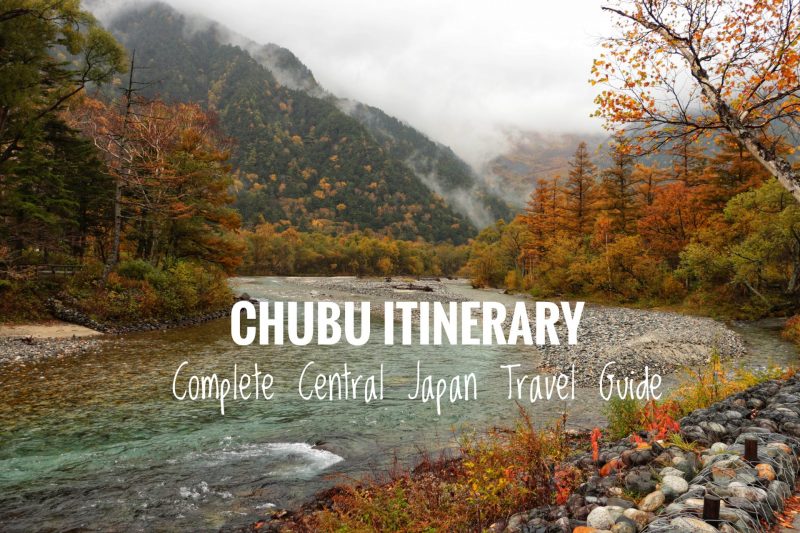
Chubu Itinerary: Complete Central Japan Travel Guide
Last updated on April 5th, 2024
A complete travel guide to explore Central Japan within 5-days, 7-days or even 8-days. My Chubu itinerary included with a list of places we visited, things to do and money-saving tips when traveling around.
Japan is famous and renowned for its culture, history and beautiful nature. For most people, Tokyo, Kyoto, and Osaka would have been at the top of the list when visiting Japan. But do you know that there are many wonderful cities to visit in Central Japan, Chubu region (中部地方 Chūbu-chihō)? These hidden gems such as Nagoya, Takayama, Shirakawago, Kanazawa and many more are highly recommended to explore the charming and countryside of Central Japan. There are many top attractions and unique activities, local food that you can only find in the Chubu region.
We visited the Chubu region and blown away by its stunning beauty. The beautiful scenery, mouth-watering food, and well-preserved historical site is one of my most memorable trips to Japan. To inspire you to plan for your coming Chubu trip, let’s check out my amazing Chubu itinerary below. This is the exact trip we did during our travels in Chubu Japan, with a list of the places we visited, what we did and where we stayed.
We hope this complete Chubu travel guide blog helps make your travel planning easier. So that you can make the most of your visit to this marvelous destination in Chubu Japan.
Table of Contents
Pre-Trip: What You Need To Know
To give you some head start, there is something you need to know about when visiting the Chubu region. Chubu is the name given to the central region of Japan. It is located in Japan’s largest island Honshu and consist of nine prefecture. There are Niigata, Toyama, Ishikawa, Fukui, Yamanashi, Nagano, Gifu, Shizuoka and Aichi Prefecture.
Best Time To Visit
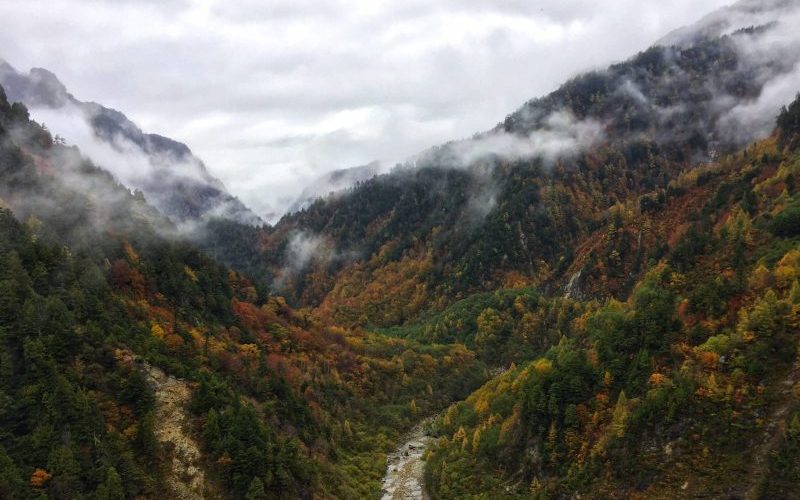
Chubu region is an interesting place to visit any time and season . Every season has something different to offer. So the best time to visit the Chubu region depends on what you want to see.
When the snow started to melt, the Chubu region is welcoming spring with flowers blooming everywhere. It is also the busiest season for sakura or cherry blossom viewing at end of March. Added, the Tateyama Kurobe Alpine Route started open to visit and tons of visitors will flock for its stunning Snow Wall Corridor at beginning of April.
In summer, there are many hiking trails with a list of summer activities. The Kamikochi is particularly popular among hikers. Maple leafs started to change its color in Autumn with picturesque sightseeing view at mountainous of Alpine route and Kurobe Gorge. While winter is best to visit the snowy white traditional thatch-roofed houses in Shiragawago.
There are also many seasonal Chubu itinerary that only can be found at a certain time. For example, we were so lucky to participant the Shirakawago Doburoku Matsuri Festival in October. This is also one of the most memorable experience for our trip.
How Many Days For Chubu Trip
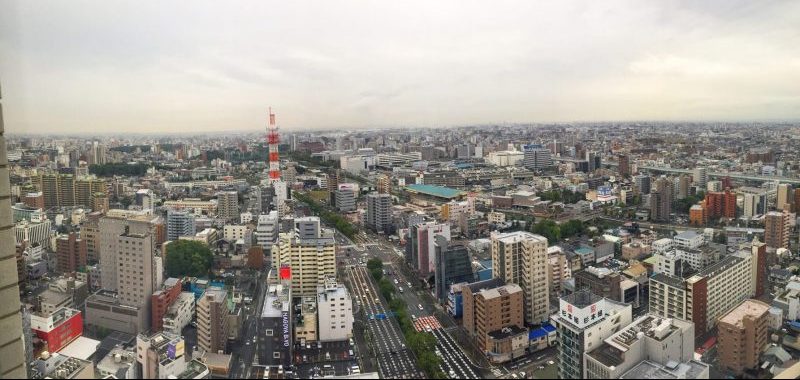
We recommend allocated at least 5 days to explore the beautiful scenery in the central region. Each season has its uniqueness and beauty. You probably would love to spend more time to Kamikochi and Kurobe Gorge during Autumn. Or, spare some time for a hot spring bath in Hirayu Onsen during winter. Not counting the most popular Tateyama Kurobe Alpine Route that offering impressive Snow Corridor and fall foliage which started from April until November.
During our 8-Days Chubu itinerary , we visited Takayama, Kamikochi,, Shirakawago, Tateyama Kurobe Alpine Route, Kanazawa, Matsumoto, Nagoya and some of the small town in Central Japan. But there are still much more hidden gem awaiting us to slowly explore. Bear in mind that the Chubu region is very huge and you cannot explore all the attractions in limited time. So it is advisable to read through our Chubu itinerary and modify it based on your interest.
How To Get There and Getting Around
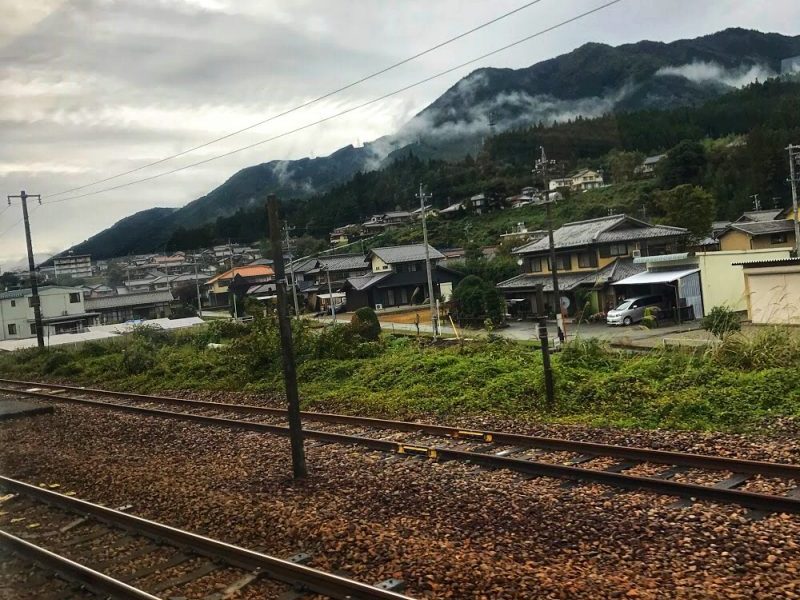
By Air : Travelling to the Chubu region is much easier today! Thanks to the Chubu Centrair International Airport, there are a lot of domestic and international flights flocking to the Chubu region every day. It is located in Aichi prefecture with about 30 minutes by train from Nagoya city.
By Rail : Chubu region is well connected with excellent railway system. Take the Shinkansen ride from Tokyo to Nagoya, the main transportation hub in the Chubu region. From there, transfer to other places in central Japan.
Getting Around by Self Driving : Unlike the busy city of Tokyo or Osaka, the Chubu region is very ideal to plan for self-driving road trip Chubu itinerary. You can slowly leisurely travel and enjoy the best sights at your own pace. Added, some of the attractions are not connected with train and only can be access by car or bus. It is also much convenient and cheaper if you traveling in a group. You can compare various car rental companies and check on your best price of rental car from RentalCars.com .
Alternative, select the best transport pass with either shinkansen, trains or bus ride . Check on our below section for the best transport pass that suits for your Chubu itinerary.
Chubu self-driving Tips : Choose your rental car with the best price guarantee from RentalCars.com .
My 8-Days Chubu Travel Itinerary
Here is our Chubu itinerary that we went with:
Day 1: Arrive at Chubu Centrair Airport. Go to Takayama and spend the remaining day in Takayama. Day 2: Travel to Kamikochi and enjoy the short hike in Japan’s best-kept secret. Soak into hot spring bath in Hirayu onsen. Day 3: Shinhotaka ropeway and back to Takayama. Day 4: Shirakawago All-day. We were so lucky and joined the Shirakago Doburoku Matsuri. Day 5: Kanazawa and stayed in Toyama. Day 6: Tateyama Kurobe Alpine Route Day 7: Matsumoto and Nagoya. Day 8: Nagoya. Goodbye to my Chubu trip.
Day 1: Arrive at Chubu Japan – Takayama
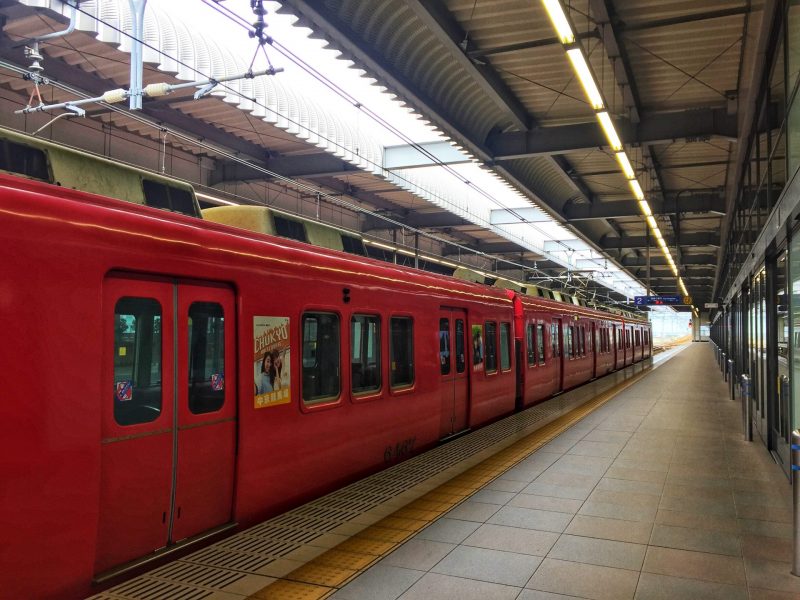
The first day was pretty much on getting into Central Japan. We had chosen to arrive in Centrair Airport by flight and getting to Nagoya with a short ride of a train. It takes about 30 minutes to Nagoya city. This is also a great opportunity to pick up some of the travel essentials at the airport or Nagoya station.
If you’re entering Chubu, here’s few things that you can pick up in Japan:
- WiFi/4G Connectivity at airport : Pre-order and picked up the unlimited Wifi router or 4G Sim Card from the airport. It is important and convenient to stay connected especially if you want to plan on the go. This will help you stay connected with your travel buddies and let you navigate easily.
- From Central Japan Airport To Nagoya City : Cheapest and fastest way to/from the airport by Meitetsu limited express (¥890) and u-sky (Reserved seat, ¥1,250). Get discounted Ticket from Klook . Fuss-free redeem and convenience.
- Get your transport pass : It depends on which pass that you selected. We opted for the Alpine Route Pass as it is the best pass that best suits our Chubu itinerary. We purchase our pass at JR Nagoya Station.
- Reserve your Train Ride at JR Station: It is advisable to write down your seat reservation information to avoid any miscommunication. English spoken staff helping at JR Station. The reservation process for the seat was super convenient and fast.
Once everything ready, we were good to go!
Relaxing Stroll in Takayama Old Town
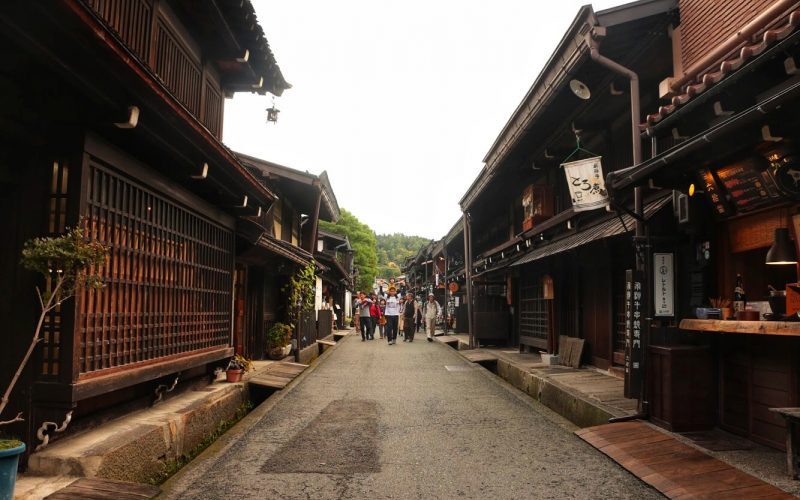
Take a limited express train to Takayama and this is where our Alpine Route Pass came into use and validated for the first day. It was about 180 minutes ride with beautiful mountainous scenery along the journey to Takayama.
Once arrived Takayama, we dropped off our luggage at Takayama Country Hotel . and went to explore its beautifully preserved old town. The Sanmachi (Sannomachi) Street is well preserved from the Edo period with gorgeous wooden old houses, shops and sake breweries are lined up. Enjoy the leisure stroll in the historical site and grab some local snack which wandering around.
Taste on Hida Beef
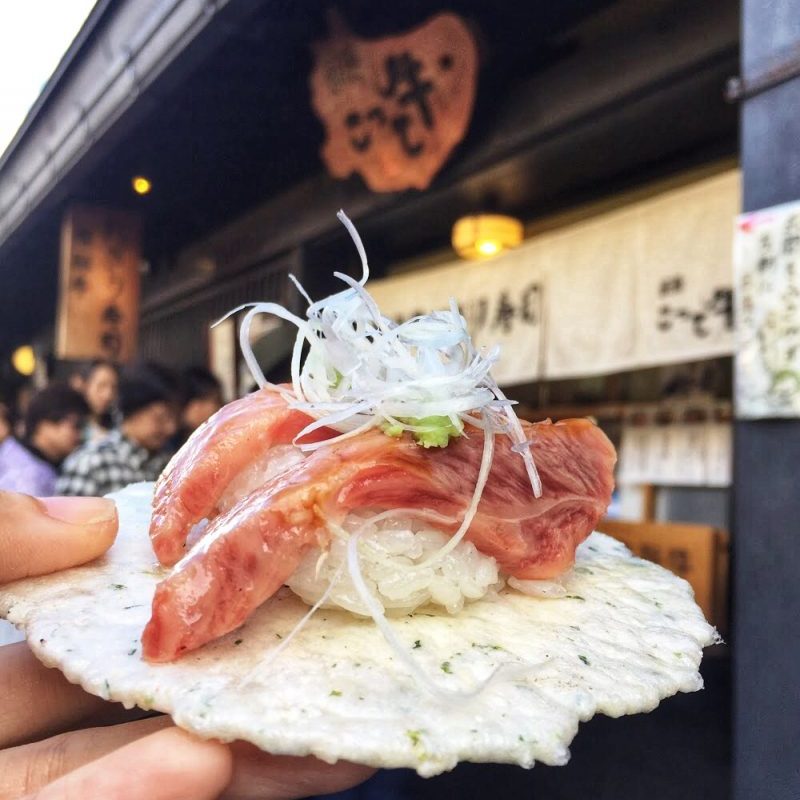
here were various unique local snack in town. But you should try Hida Beef, which is the famous Wagyu from Gifu prefecture. We got the famous Hida beef sushi. The flavorful Hida beef was melted once put inside my mouth. Delicious!
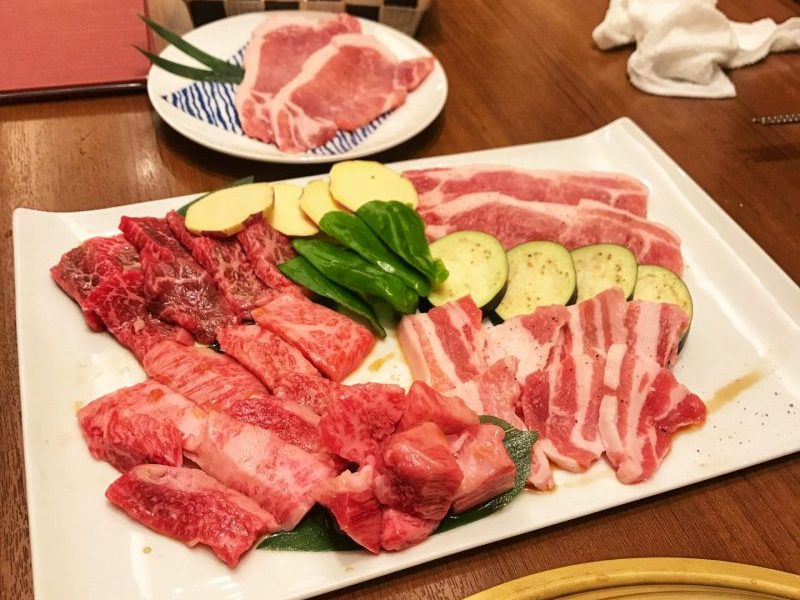
It is a great way to spend an afternoon stroll in the historic town. In the late evening, we tried the yakiniku Hida beef at Ajikura Tengoku, known for its good quality yet affordable cuts. The line can long especially during peak hours. We waited for nearly one hour even we arrived early.
Where To Eat : The best Hida beef from Ajikura Tengoku ( Food Review ) Where We Stayed : We stayed in Takayama Country Hotel which strategic located right in front of Takayama station. The location is very convenient for us for getting around. Most important, reasonable price tag. Extremely popular. Check on room availability from Takayama Country Hotel .
READ MORE: What To Do and Eat in Takayama
Day 2: Kamikochi – Hirayu Onsen
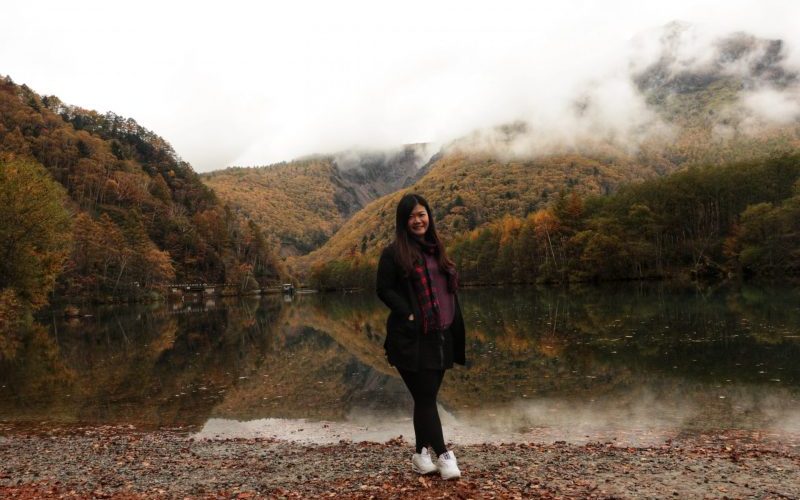
Kamikochi (上高地, Kamikōchi) is one of the hidden gem in the Chubu region. It is part of the Chubu Sangaku National Park, offering Japan’s most spectacular mountain scenery. It is also known as “the place where gods descended”, or “sacred place” for the Japanese.
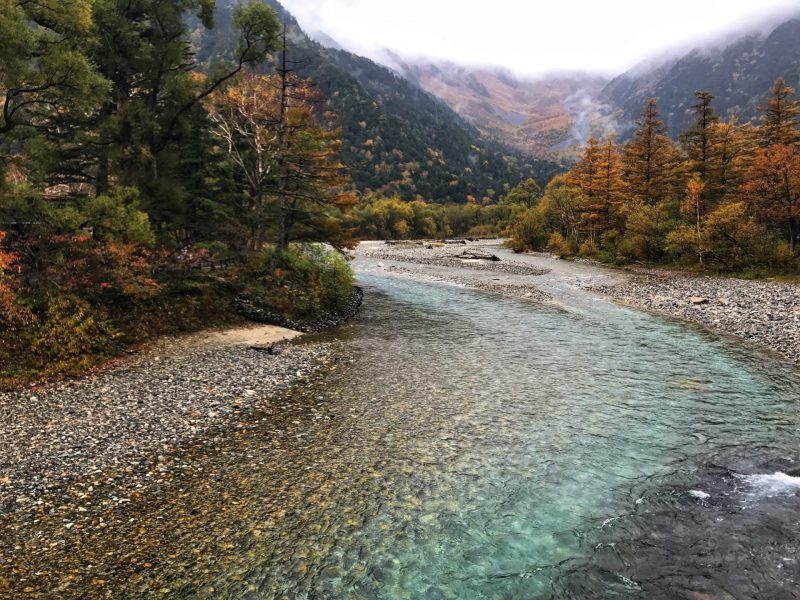
From Takayama, we took the Nohi bus to Kamikochi via Hirayu Onsen. Our day trip to Kamikochi was started with an easy hike from Taisho Pond to Kappabashi. And then, we further took a round trip hike to Myojin Pond.
Chubu Travel Tips (Kamikochi)
- Kamikochi is particularly beautiful during the autumn foliage (peaks in mid-October).
- Closed from mid-November until mid-April.
- Only accessed by bus and taxi. Private car only allowed to park at Sawado (entrance gate)
- Save with Okuhida Set Ticket with unlimited bus ride (Shinhotaka Ropeway Ticket included) .
The whole journey took us about six hours, hiking along the beautiful Azusa river. If you only have limited time, just choose either one of the short hike. Both routes are indeed beautiful but we like the Taisho Pond the most.
Enjoy Hot Spring Bath in Rustic Ryokan
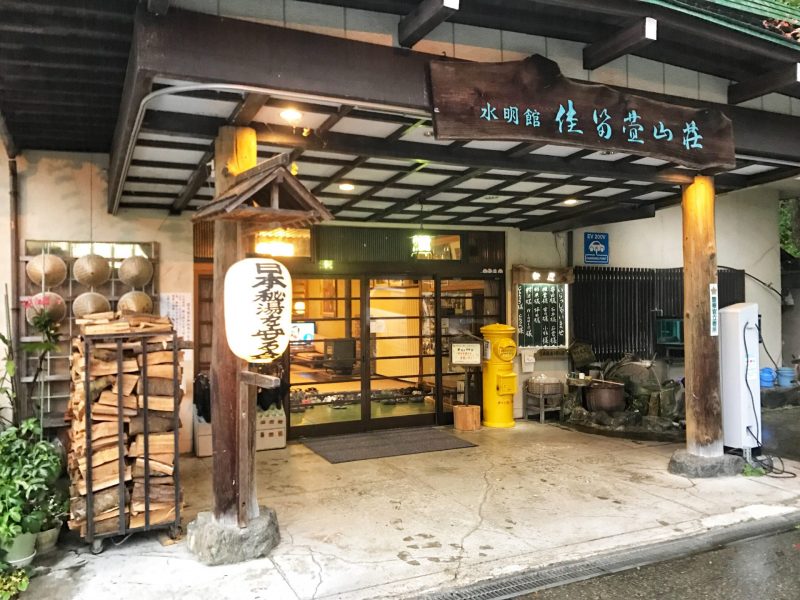
One should NOT leave Japan without experiencing an onsen town. After finish on our Kamikochi hiking trip, we continue our Chubu itinerary to Hirayu Onsen to enjoy the outdoor hot spring bath. We choose to spend one night in Suimeikan Karukaya Sanso (水明館 佳留萱山荘) in Hirayu Onsen region. It is the rustic traditional ryokan features with fantastic outdoor onsen variety in remote valley.
Our stay in Suimeikan Karukaya Sanso featured the largest outdoor onsen bath, one female-only and three private baths. Truly an onsen paradise!
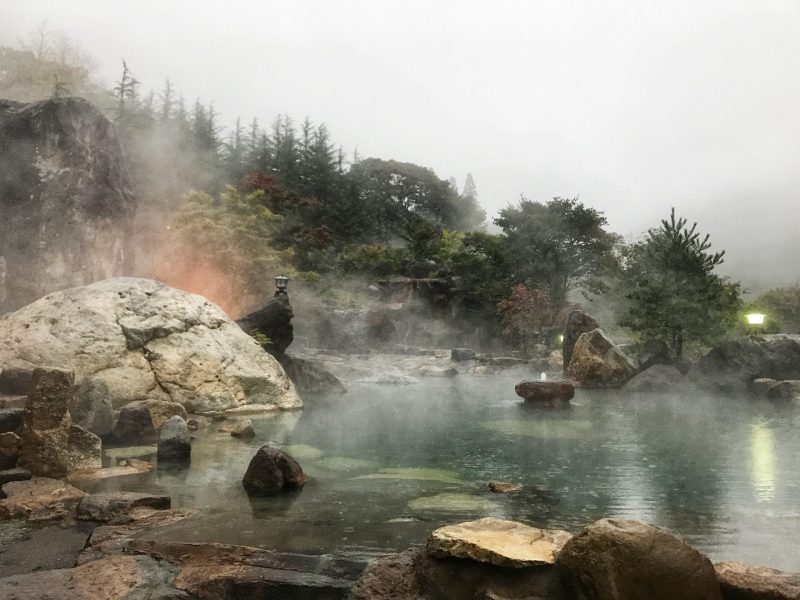
Besides, our stay was on half board where dinner and breakfast included. We had the marvelous kaiseki meal with a variety of delicious local dishes included. The next morning, we had another morning soak in the beautiful onsen before checked out from Suimeikan Karukaya Sanso. Truly an amazing stay in Suimeikan Karukaya Sanso.
Where To Eat : In Kamikochi, most of the eateries are scattered at Kappabashi. Pick the one you like the most. Where We Stayed : Suimeikan Karukaya Sanso ( Check on its availability and price )
Day 3: Shinhotaka Ropeway
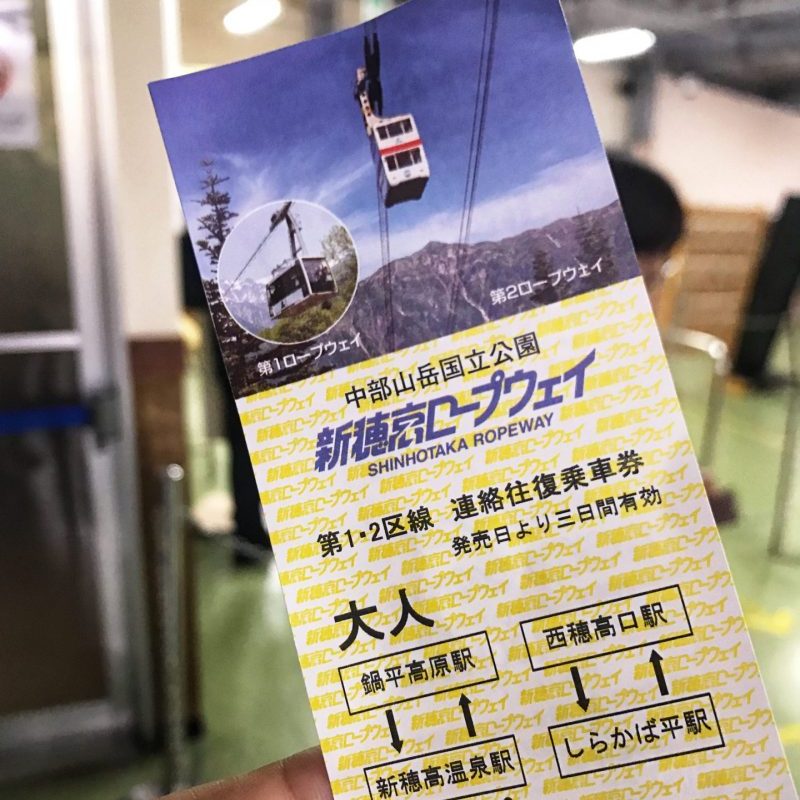
Next, we proceed with our Chubu itinerary. The Shinhotaka Ropeway (新穂高ロープウェイ) is another best way to admire the magnificent Japanese Alps landscape. This two-storied gondola ride offers some pretty incredible views.
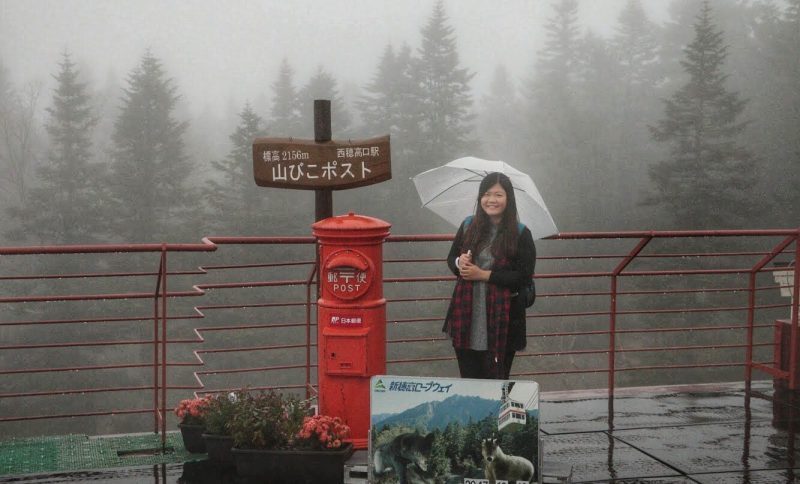
Unfortunately, it was raining during our ride. Although the weather was bad and most of our time was cloudy, we still highly recommended this Shinhotaka ride into your Chubu itinerary. You may check on the weather forecast here .
We were back to Takayama by bus and stayed here another night in Country Hotel Takayama . So that we can travel light and deposited our luggage in the hotel before our trip to Kamikochi.
Where To Eat : We had our dinner in Heianraku . It is run by adorable husband and wife, served the Japanese style Chinese cuisine. The best place to experience the Japanese home dining food. Where We Stayed : Country Hotel Takayama is a great choice who look for convenience at a reasonable price tag.
Read more about our Day 2 and Day 3 explorations here:
- Kamikochi Itinerary: One Day Hike in Japan Alps
- Suimeikan Karukaya Sanso: Best Onsen Ryokan Stay
- Half Day Trip To Shinhotaka Ropeway Ride
Day 4: Shiragawago
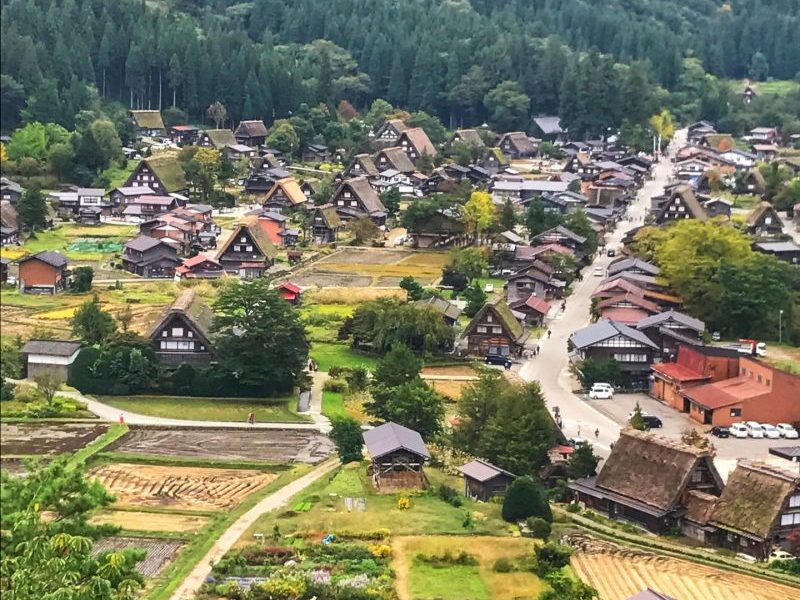
The next day, we boarded the Nohi bus to visit Shirakawago (白川郷), one of the UNESCO world heritage sites located in forested mountain countryside. The village consists of many traditional thatch-roofed houses called “Gassho zukuri” which exists for over 200 years. It is a place that you will find on many Japanese postcards. Walking through the road with thatched roof houses in the village seems to bring you back to another era in time.
Want to tour the Shirakawa-Go with hassle-free? Consider to join the following tips below: A Day in Shirakawa and Takayama (Day Tour from Nagoya)
Shirakawago Doburoku Matsuri
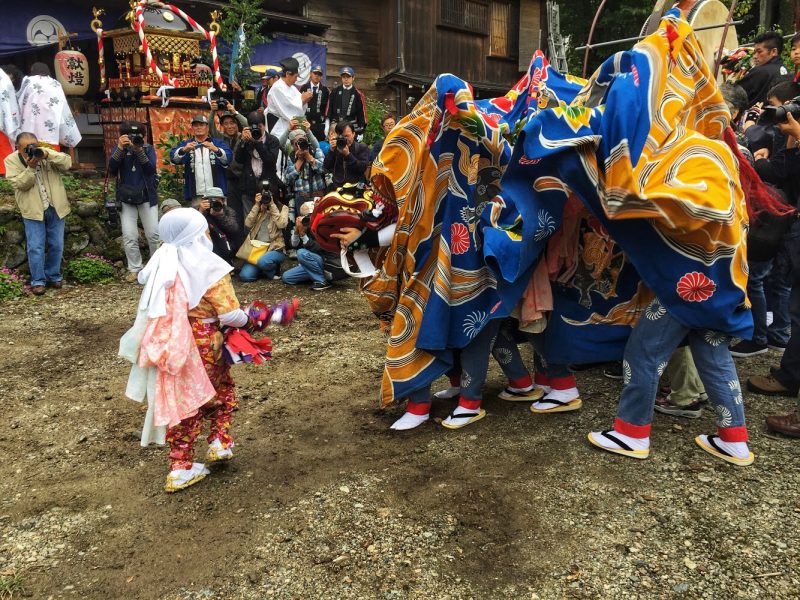
The Shiragawago is not huge. We originally only planned to spend the half-day exploring the charming town. But we were so lucky to join the Shirakawago Doburoku Matsuri Festival during our visit. The festival event was started in the morning with procession, festival performances with traditional folk music and songs.
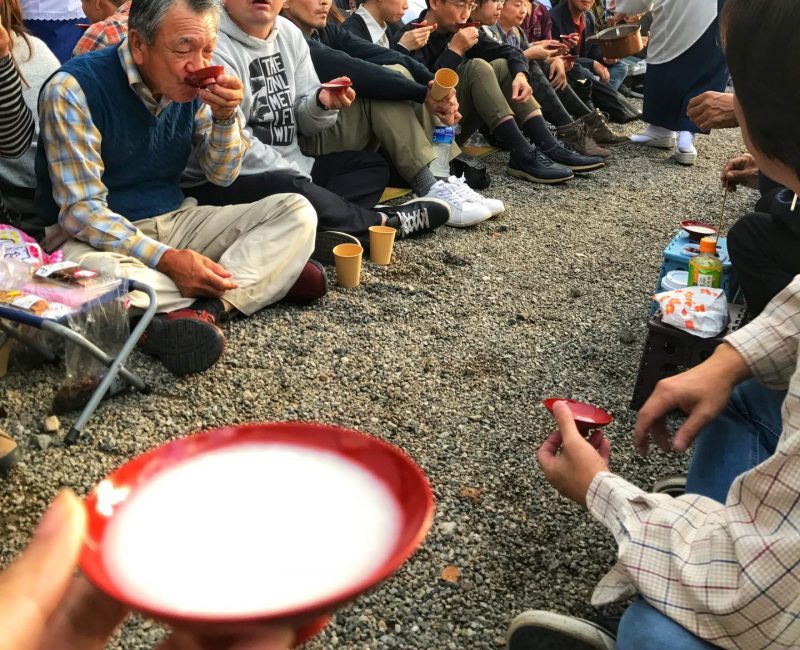
In the late afternoon, the unrefined doburoku sake was distributed to all visitors to share on your happiness. This is also one of the most memorable experience for our Chubu trip. Lastly, we catch the Nohi bus to Kanazawa and stay overnight in the beautiful city.
Where To Eat : Food options are limited in Shirakawago. We choose to dine in Hidaji Restaurant (飛騨路) for its handmade udon. A simple yet heart warmed meal. Added, we had a great bowl of ramen in Kanazawa for dinner. It is conveniently located right opposite our hotel and highly recommended by hotel staff. Where We Stayed : Hotel MyStays Kanazawa Castle is a nice hotel with 5 minutes walk from Kanazawa station. Reasonable price for a comfortable stay. In-house public bath is a great plus.
READ MORE: Shirakawago Itinerary: A Walk Into Cultural Japan Village
Day 5: Kanazawa
We spent the day in Kanazawa, an amazing city in Ishikawa prefecture. Know as little Kyoto in Northern Japan, Kanazawa (金沢/金澤) is a well-preserved city with traditional houses and historic structures.
We started our day in Omicho Ichiba Market, a local traditional market in Central Japan. Enjoy your stroll and sample varieties of Japanese food in the market. We had the superb fresh seafood and sushi platter for brunch. Next, headed to town and spend a full day in Kanazawa. There are several attractions in town that you hardly can miss in your Kanazawa itinerary.
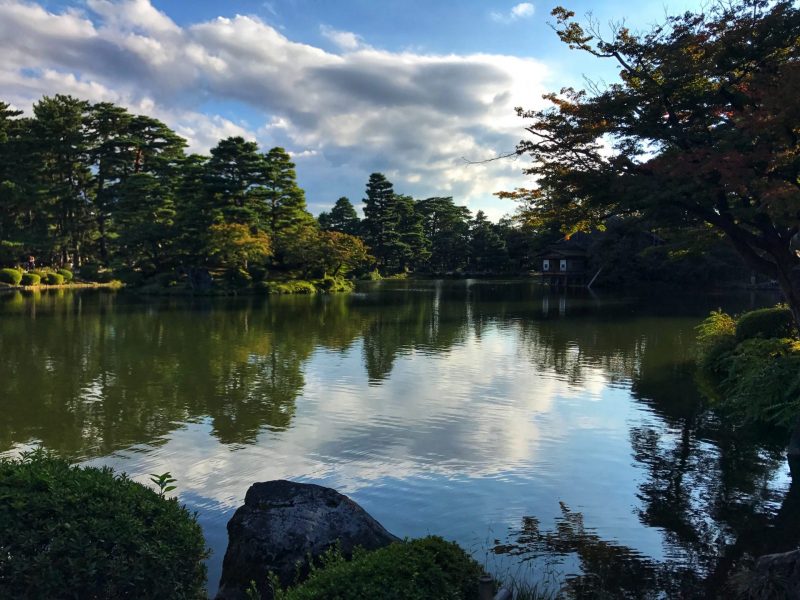
Firstly, get a glimpse of samurai life in Nagamachi Samurai District. The neighborhood is old samurai residences with full of Edo period atmosphere. There are few buildings are open to visit if you are interested to know more about Samurai’s life. Kenrokuen, one of Japan’s top three landscape gardens.
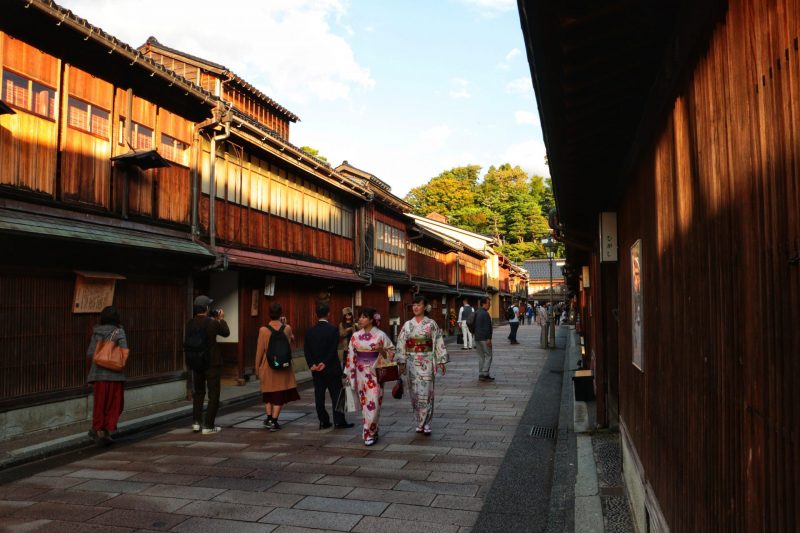
The Chaya (Japanese Tea houses) was used to be entertainment districts during the Edo period. There are three area were well preserved. The Higashi Chaya is the largest and most popular attraction in Kanazawa. Enjoy your stroll in the historical street. Taste the gold leaf-wrapped soft vanilla ice cream as dessert in town.
Want to know more about our visit to Kanazawa? Well, check out my Kanazawa itinerary and travel guide .
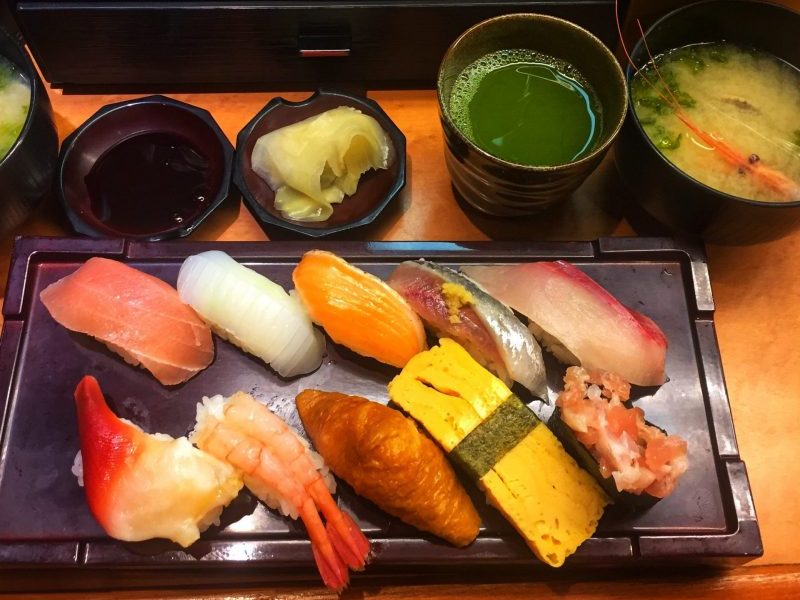
Where To Eat : Seafood rice bowl or sushi in Omicho Ichiba Market. And, Shiroebi (White Shrimp) for dinner in Toyama. Where We Stayed : Comfort Hotel Toyama . A great business hotel with friendly staff. The location within 3-minutes walk to Toyama Station is what we need.
Day 6: Tateyama Kurobe Alpine Route
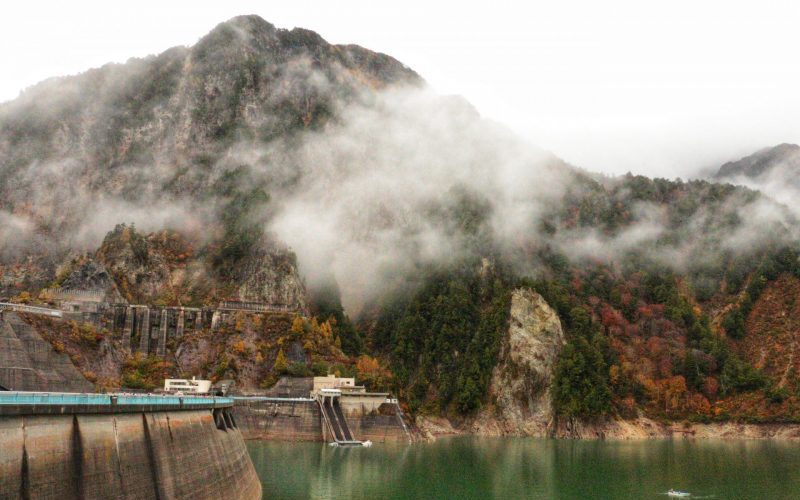
One of Chubu’s top attraction. The Tateyama Kurobe Alpine Route is popular among locals and visitors. Known as the “Roof of the Japan”, this unique route goes through the lush scenery of Mt. Tateyama for 90-km spectacular long through the Northern Alps.
Tateyama Kurobe Alpine Route involves various transportation up to eight modes with several stops for the full route. But no worry on the complicity of the transport arrangement as everything is well connected. Just make sure to catch the last transportation service back to the ground.
Japan Alpine Route
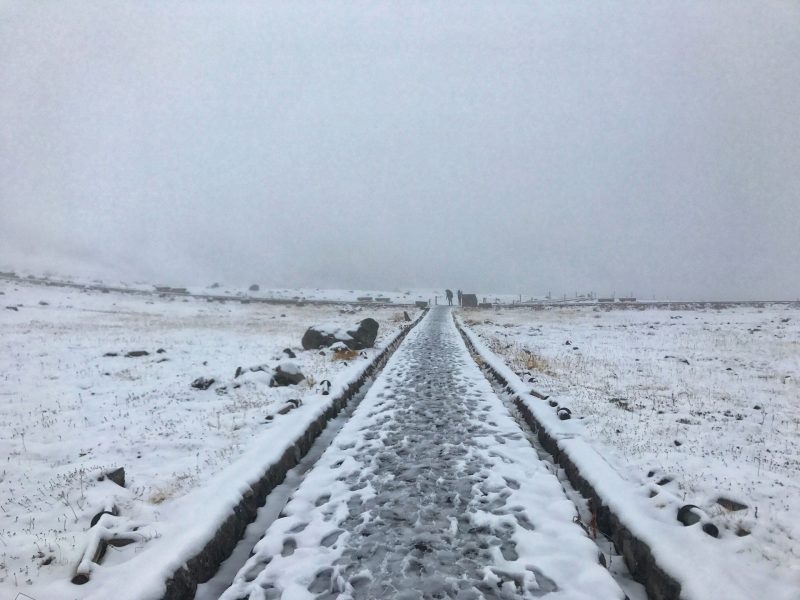
Early in the morning, we start our travel from Toyama and traverse the Tateyama Kurobe Alpen Route. We ended our journey in Matsumoto and overnight there. Our visit is at the end of October. And we were so lucky to view on beautiful vibrant colors of Autumn foliage in the middle route but white snow-covered mountain when reach at top. One of the unique experiences to view on different seasons within one day.
Chubu Traveler Tips (Tateyama Kurobe Alpine Route):
- Getting to the top of Japan Alpine Alps takes around 8 to 9 hours return. Added, most travelers start streaming in around late morning so please start your journey early.
- Wear warm clothes due to it can be very cold at the top of the mountain.
- Alpine Route is closed from December to mid-April.
- When it opened, Tateyama Kurobe Alpine Route is particularly popular for the Snow Corridor or “Yuki-no-Otani” (Snow Wall Walk). It was truly awesome to walk through the snow wall up to 20 meters. It will start to melt until fully disappear at mid-June.
- Another popular place for fall foliage in central Japan.
- For a hassle-free experience, you can take a trip from Nagoya or Kanazawa with a day tour.
This is the long travel post, we cover this in more detail in my Tateyama Kurobe Alpen Route post .
Where To Eat : Options are limited with shops at major stops in Alpine Route. We choose a hot bowl of Udon in Murodo Station. Slightly expensive but no complaints. Where We Stayed : We rest our head in Ace Inn Matsumoto . Great little business hotel with a convenient location.
Day 7: Matsumoto – Nagoya
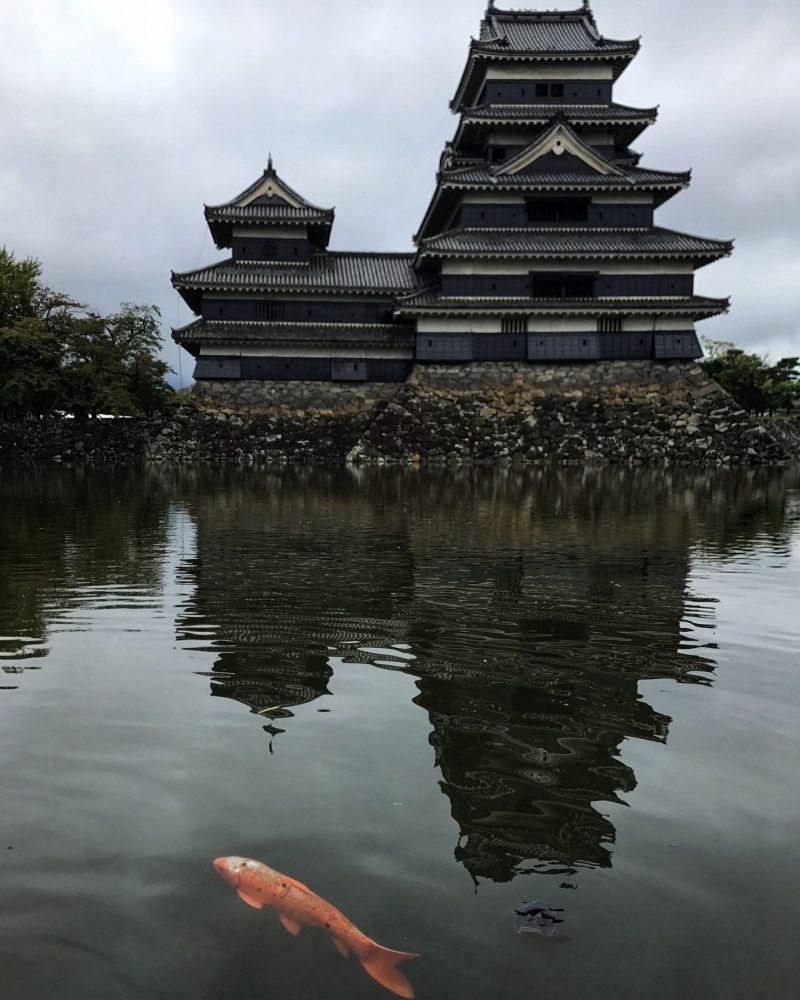
We spend the half-day in Matsumoto and dropped by Matsumotojo, one of Japan’s most beautiful original castles. Matsumoto Castle (松本城, Matsumotojō) is one of the Top Three Japan Premier Castle and most complete up to today. The black wood exterior making the nice contrast with surrounding. It is also the best spot for hanami or cherry blossom viewing in spring.
Next, we walked to nearby Nakamachi-dori, a street lined by nicely preserved old buildings. It was once the city’s merchants used to live during the Edo Period. Enjoy your stroll and grab some Japanese snacks here.
We then boarded the JR train back to Nagoya. Once arrived, we took the opportunity to stuff with the local delicious here. There are many popular restaurants nearby Nagoya Station. We choose to try the famous tonkatsu from Tonpachi. The food is amazing, Nagoya has the best tonkatsu in Japan according to the Japanese. It was so crispy and delicious. One of the must-eat food in Nagoya.
Nabana Sato Nagoya
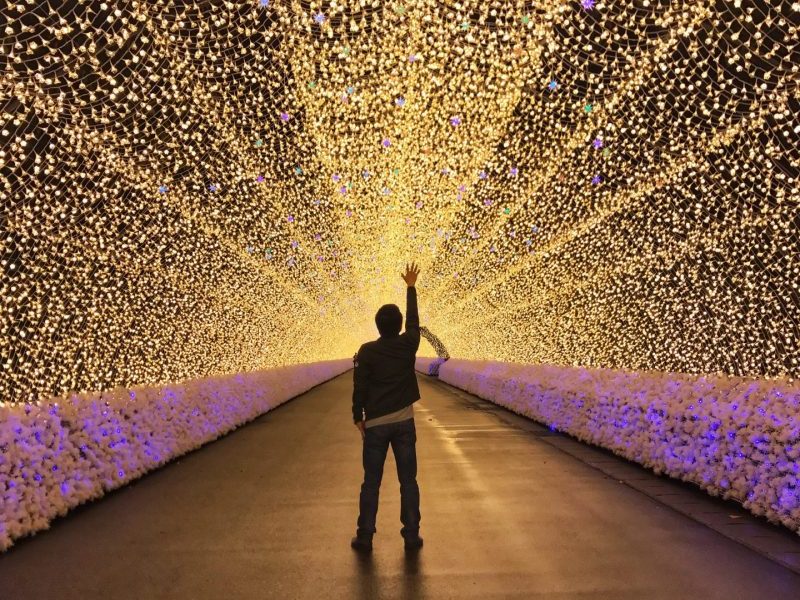
Evening, we spend our night Nabana Sato Nagoya for its spectacular winter illumination. The Nabana no Sato (なばなの里) is a botanical garden in Kuwana City and famous for its large landscape of flower. But what makes this place so popular within visitors is its illuminating installations which started from mid-October to May. One of the popular places to visit for a family with kids.
Getting There : From Nagoya station, take the 25 minutes to ride with Kintetsu express train to Nagashima Station. Then, transfer to 10 minutes on a non-stop direct bus to Nabana no Sato.
Where To Eat : One of the Nagoya best food, tonkatsu from Tonpachi. Where We Stayed : Nishitetsu Hotel Croom Nagoya offers a clean and comfy bed. Very short distance to the metro. Great value for money.
Day 8: Nagoya – Goodbye Chubu
Enjoy the full day to explore Nagoya City before leaving. In fact, we did not plan on many activities for our last day in Nagoya. Instead, we spend time wandering in town, do some shopping, and taste on famous Nagoya local dishes.
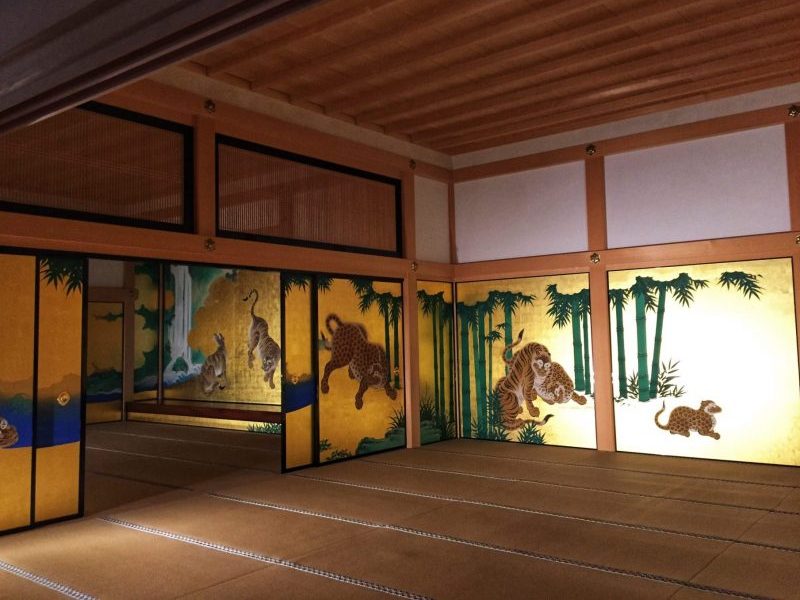
Nagoya is an important city in Honshu and the city is predominantly with manufacturing and shopping. But one thing you can’t miss is Nagoya Castle , one of the most important castles in Japanese history. Although most of the castle buildings were destroyed in the air raid in the year 1945, but the castle area was rebuilt using traditional construction materials and techniques.
Note: Reconstructed activities are undergoing in Nagoya Castle. Please check before the visit.
Nagoya Must Eat Food – Hitsumabushi
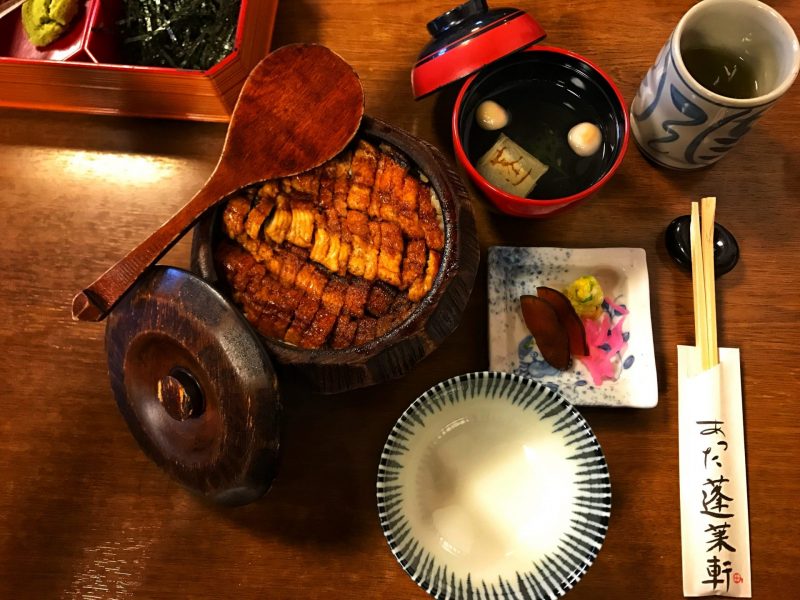
We headed to Atsuta Houraiken Honten to taste on the Nagoya must eat food, Hitsumabushi. It was extremely popular with one hour of waiting time required. So we wrote down our name on the waiting list and wait patiently. Hitsumabushi is one of the unique local dishes in Nagoya.
The eel dishes served in a traditional wooden bowl accompanied by a rice bowl. Try the delicious Hitsumabushi in four different ways which are original, with condiments, with hot broth (chazuke), and lastly your most liking way. A bowl of Hitsumabushi is not cheap and cost ¥3,600. But worth the money.
Food Review : Hitsumabushi Atsuta Houraiken: Nagoya Must Eat Food
Popular Tebasaki in Nagoya
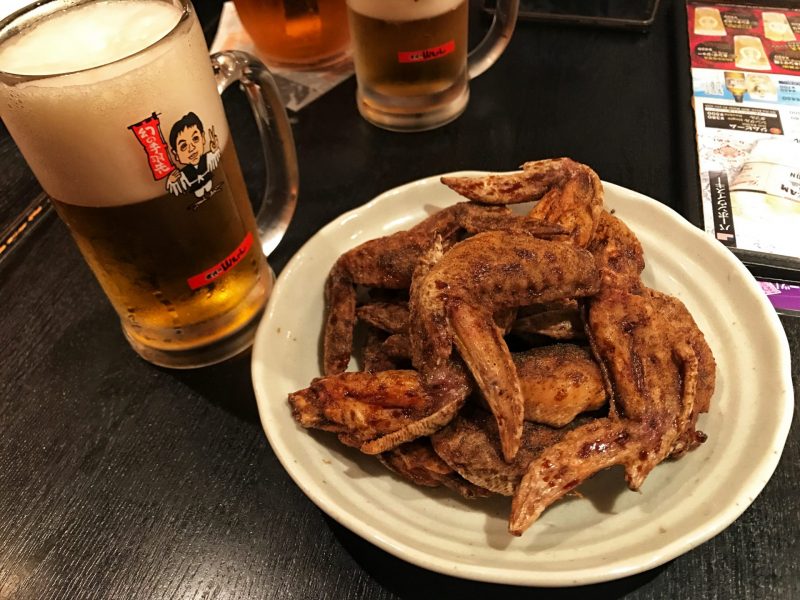
Besides, Nagoya also particularly famous with mouthwatering tebasaki. The deep-fried chicken wings are one of our favorite dishes in Nagoya. Enjoy the crispy, salty or spicy tebasaki with an ice-cold beer in the izakaya. One of the great meals to end of the last day of Chubu itinerary.
Where We Stayed : Another night at Nishitetsu Hotel Croom Nagoya . High recommended.
Related Nagoya Travel Blog (itinerary, accommodation and food guide):
- Nagoya Itinerary: A Guide For Things To Do in Nagoya
- Where To Stay in Nagoya: The Best Hotels and Areas
- Nagoya Food Guide: What To Eat in Nagoya
Chubu Budget Guide
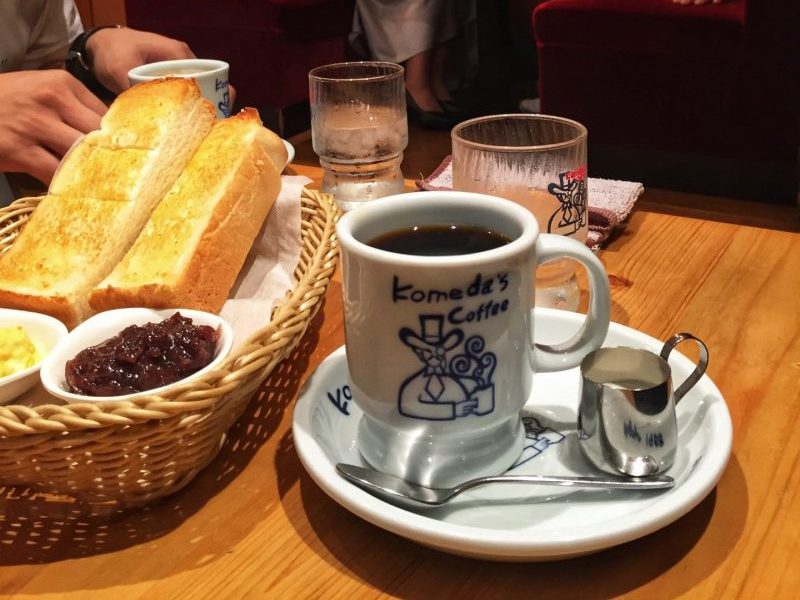
Traveling in Japan always is not cheap. For travelers planning for a trip to Chubu on budget, the most common question is how much should I budget on my Chubu trip. It really depends on where you plan to visit. For example, the transportation fee to traverse the Tateyama Kurobe Alpine Route can easily cost ¥10,000. But no worry. There are ways to visit this beautiful region without breaking your bank.
The real secret of traveling on a budget in the Chubu region is to plan the places you want to go and then look for the accommodation and transport options. Get the transport pass ahead before arriving in Chubu and fully utilized it to travel in Chubu.
Chubu On Budget
There are a few money-saving tips that you need to know when planning on your Chubu on a budget itinerary.
1) Food: How much to spend on food in Chubu Japan? For sure, you can’t resist trying on various delicious Japanese food. But great food comes with a price. With budget concerns, most of our breakfast consisted of grab and go meals from convenience stores. It usually cost under ¥500 from Family Mart, 7-11, Lawson or even some of the local breakfast shop. We will plan for a light meal such as a bowl of Udon, soba or ramen for about ¥1,000. While another meal for local cuisine at ¥3,000 (either lunch or dinner). And keep some to try on various Japanese snack food. So our budget for food is within ¥4,000 – ¥6,000 per day.
- Takayama Food Guide: 10 Must-Try Food in Takayama
- Toyama Food Guide: What To Eat in Toyama
2) Transport within cities During our visit in Autumn, we love to explore the historical Shirakawago, natural sightseeing trail in Kamikochi and popular Tateyama Kurobe Route. But, these top attraction areas are only accessible by train (Alpine Route) and bus (Shirakawago and Kamikochi). Because of this, we had to purchase a different pass to get around. But even with these two passes, we also need to purchase an additional bus ticket to Shirawago. So, it made a lot more sense to enjoy the sights on the way to follow the route. If you’re following this route like what we did, these two passes will save you some money.
Other transportation Pass Option that might your Chubu itinerary:
- Takayama-Hokuriku Area Tourist Pass (5 Days) – Consecutively 5 days for unlimited rides on JR trains within Takama, Kanazawa, Toyama, Nagoya, Osaka, and more at ¥14,260. Certains buses and Shinkansen included.
- JR Alpine-Takayama-Matsumoto Area Tourist Pass – Consecutively 5-Days for unlimited rides on JR local and limited express trains along the route (Takayama-Matsumoto Area) as well as all transportation of the Alpine Route.
- Shoryudo Highway Bus Ticket – Unlimited use of buses and highway buses around the Chubu Hokuriku region of Japan (3 days/ 5 days).
Complete Chubu Transportation Guide with Passes : Chubu Best Transport Pass: By Bus, Train, Self Driving
3) Accommodation Most of the accommodation that we choose is in mid-range with price ranging from $80 to $100 USD for two-person. While this Chubu itinerary involves many cities, so our main concern for the hotel is convenient and clean. The most expensive stay is in Hirayu Onsen. But it definitely worth spend some money for one night stay in a traditional ryokan and soaking into hot spring in Japan. Most importantly, our stay comes in half board with dinner and breakfast included. So it is worth the money.
- Where to Stay in Takayama: Best Hotel or Traditional Ryokan?
Where To Stay in Kanazawa: Top Areas and Best Hotels
- Where To Stay in Matsumoto: Best Hotels Pick
My Final Tips: Planning on Chubu Itinerary
All in all, hopefully, you found this Chubu itinerary useful. Chubu region is huge with various of activities that can be plan into your Chubu itinerary. Due to limited time, we only visited Takayama, Kanazawa, Toyama, Kanazawa, Matsumoto, and Nagoya. From those big cities, we planned for a day trip to Shirakawago, Kamikochi and Tateyama Kurobe Alpine Route. So this 8-Days Chubu itinerary was packed with historical, natural sightseeing and culture.
Lastly, we wish to spend more time to explore another amazing place in the Chubu region. Probably Niigata or Nagano? Let’s share with you guys again in the future. Happy travel to Chubu Japan.
You Might Interested:
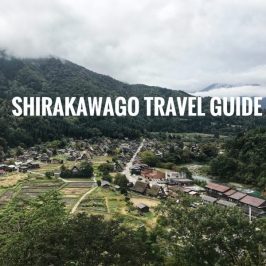
Things to do in Shirakawago: A Complete Travel Guide
A complete Shirakawago travel guide which includes transportation to get there, where to stay, what...
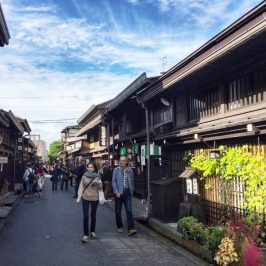
Where To Stay in Takayama: Best Hotel or Ryokan?
Learn the best places to stay in this Where to Stay in Takayama guide. We’ve...
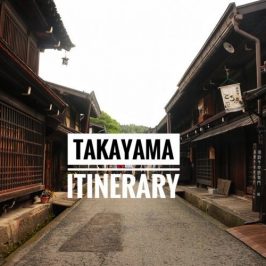
Takayama Itinerary: A Complete Travel Guide Blog
The best things to do in Takayama that you should visit when you are here....
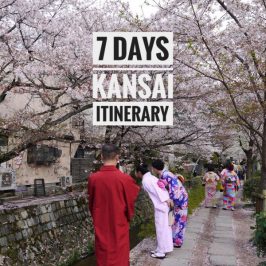
7 Days Kansai Itinerary: A Complete Travel Guide Blog
Last updated on April 5th, 2024 Planning on 7 days Kansai itinerary to Kyoto, Osaka,...
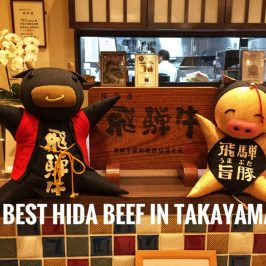
Ajikura Tengoku: Best Hida Beef in Takayama
Make sure visit Ajikura Tengoku for the best hida beef in Takayama. A well known...
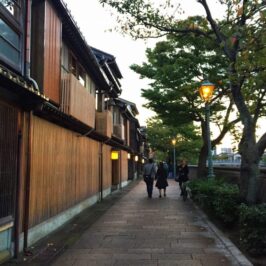
In this accommodation guide, we will help you to decide where to stay in Kanazawa,...

The Heart of Japan, Between the Kanto and Kansai Regions
Chubu is the central region of the main island Honshu, crowned by the Japanese Alps, with Mt Fuji as the dominant summit. It includes nine prefectures and its largest cities are Niigata and Nagano in the North, Nagoya in the South and Kanazawa on the North-Western coast.
The Chubu area is sandwiched between Japan’s most famous regions: Kanto ( Tokyo ) and Kansai ( Kyoto , Osaka ). It also extends from the Pacific Ocean in the south to the Sea of Japan in the north. Globally lesser known, the region is nonetheless home to many of the archipelago’s sites and iconic landmarks, such as the paramount Fuji-san, and offers wonderful stays-over in a trip to Japan .
How to travel in the area?
Chubu is mainly constituted of the Japanese Alps , bordered in the south by a narrow coastal plain and in the north by Niigata’s agricultural plain. Consequently, Nagoya is the major hub of the area , with the Chubu International Airport in Ise Bay, and almost the only way by train from Tokyo or Kyoto, thanks to the JR Pass especially. The Hokuriku Shinkansen 🚅 line connects Tokyo to Kanazawa via Nagano and Toyama, and will be connecting Kyoto and Shin-Osaka via Fukui in a near future.
Moreover, some places in the mountains are only accessible by road , such as Shirakawa-go served by a bus, and renting a car 🚙 is usually recommended for a more flexible travel. Sado Island is connected to the mainland by ferries . Some places, such as the Tateyama Kurobe Alpine Route, are only accessible from spring to autumn 🍁 .
Why explore the Chubu area?
This mountainous region gathers many historical and natural sites , scattered throughout its territory. It is well-know for its ski resorts, especially around Nagano, and its hiking trails and onsen ♨️ .
Tourists tend to disregard the side on the Sea of Japan as it is off the beaten tracks, but it preserves a large part of traditional Japan and is nicknamed the " Snow Country " due to the heavy snowfalls occurring every year in winter . Many sites such as Kanazawa City or Matsumoto Castle 🏯 are considered remarkable places of preservation of Japan’s feudal history.
Gastronomy is extremely rich and varied with an emphasis on seafood, sake 🍶 , whiskey, various kinds of Wagyu beefs and a large agricultural production, including koshihikari rice.
The region is composed of 9 prefectures : Shizuoka , Yamanashi, Aichi, Gifu, Nagano, Ishikawa, Fukui, Niigata and Toyama.
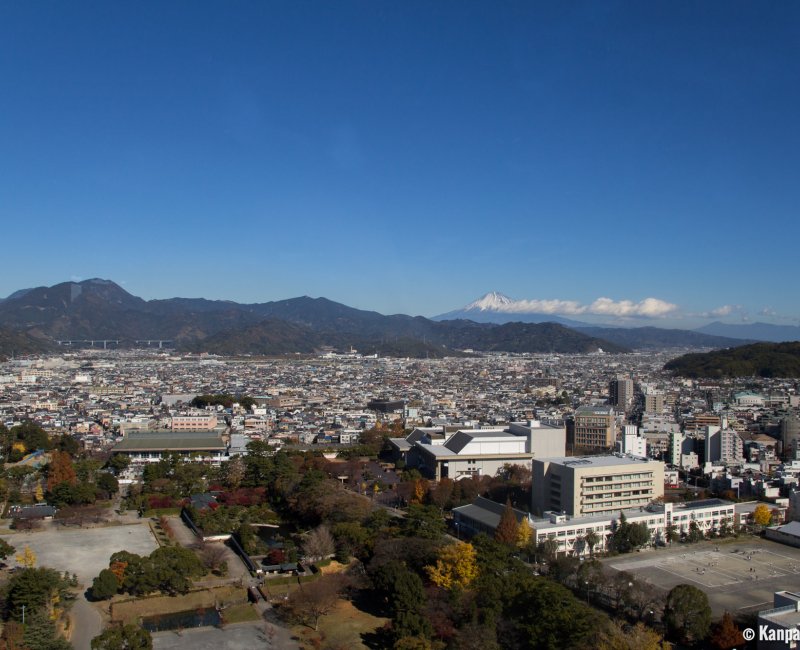
Shizuoka Prefecture
Hugging the Pacific Ocean coast, it is bordered in the north by Yamanashi prefecture, with which it jointly manages Mount Fuji 🗻 , culminating in the Fuji- Hakone -Izu National Park , the most visited national park in Japan. The cities of importance are Fuji, for its view on the holy volcano 🌋 and its tea production, Odawara for its historical significance. The capital Shizuoka has been marked by shogun Tokugawa Ieyasu with the Kunozan Toshogu shrine and Sunpu Castle. The prefecture is also renowned for wasabi cultivation and produces 80 % of this green gold nationwide.
The Izu Peninsula , on its eastern side, is a popular seaside destination, especially the city of Atami . Beaches 🏖 and aquatic parks are also available in Hamamatsu, with Bentenjima’s floating torii ⛩️ gate offering particularly beautiful pictures at sunset in December .
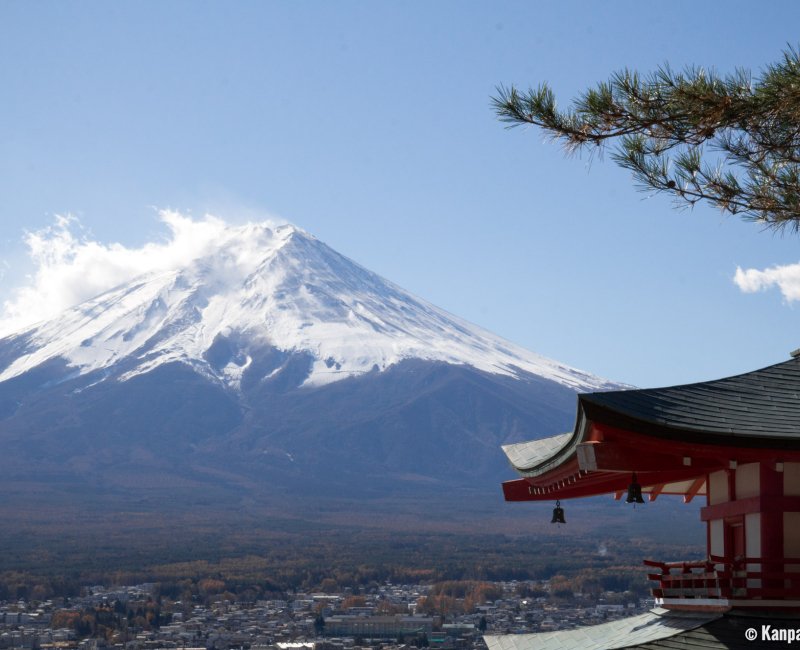
Yamanashi Prefecture
The other prefecture of Mount Fuji, it spreads inland on the south of the Japanese Alps. Fujiyoshida City is home to the starting point of the Yoshida Trail, the busiest walking path to climb the sacred volcano, and offers one of the most famous view on it, from the Chureito Pagoda . While it is more contemporary, Fuji-Q Highland themed park will please thrill-seekers and amateurs of stunning views.
The Fuji Five Lakes Area (Fujigoko) displays wonderful sceneries in spring, especially during the Fuji Shibazakura Matsuri festival, and in autumn around Lake Kawaguchiko . Mount Fuji is the permanent background of the landscape, and natural onsen hot springs are plentiful.
Kofu, its capital, is renowned for the production of Japanese white wine from the koshu grape, a variety with a characteristically thick pink skin and white pulp.
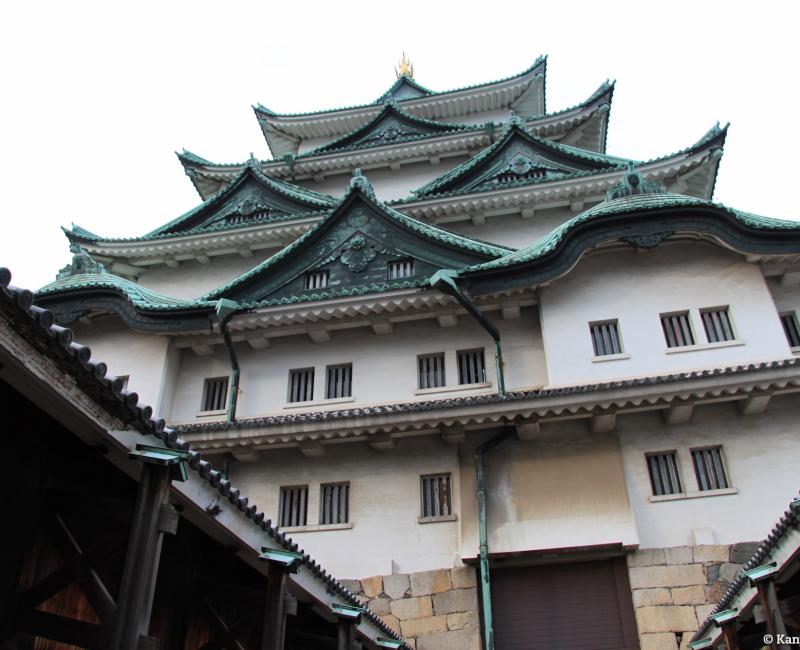
Aichi Prefecture
Nagoya, its capital, is the industrial center of the region and the 4th most populated city of Japan. Its quasi central location between Kyoto (about 40 minutes by Shinkansen) and Tokyo (about 1h30) make it a transport hub to reach the heart of the Japanese Alps.
The prefecture tries to bolster its touristic attractiveness by supporting several attractions:
- The reconstruction of Nagoya Castle , destroyed during WWII, with an emphasis on the ninja and samurai historical heritage;
- The staging of the World Cosplay Summit;
- From November 2022, the opening of the Ghibli Park , on the former site of the World Expo 2005, where it is already possible to visit Satsuki and Mei's house.
The prefecture can also boast its own great Buddha , characterized by its green color, sheltered at the discreet Togan-ji temple. Technophiles will love one of the few operating MAGLEV magnetic trains, and can visit Toyota, the city of the car manufacturer.
Among the prefecture’s remarkable landmarks, one can mention Inuyama Castle and Toyokawa Inari shrine, one of the largest sanctuaries in Japan dedicated to Inari. Sakushima Island in Mikawa Bay is a small fisherman island converted into an outdoor contemporary art museum and a counterpart to Naoshima in the Seto Inland Sea.
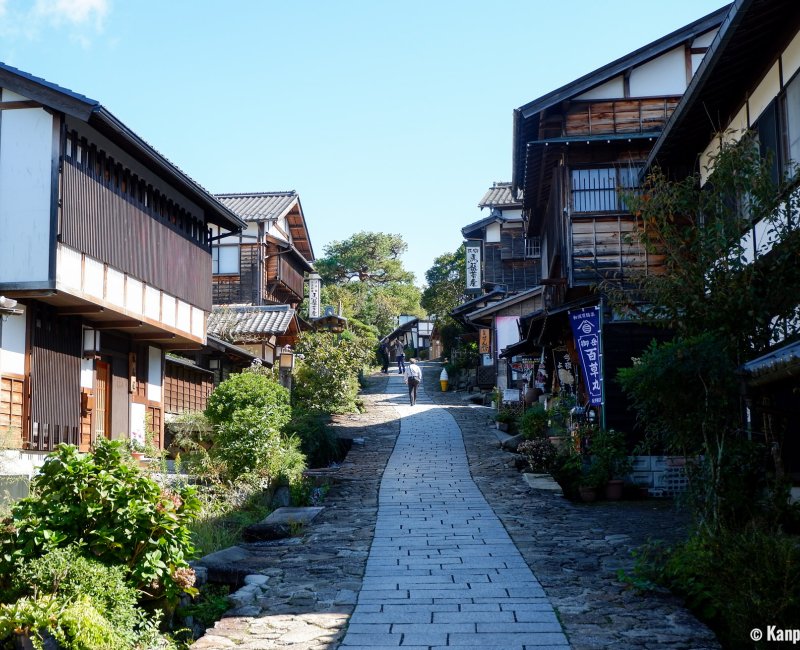
Gifu Prefecture
Far less known than the others, it spreads inland in the north of Nagoya and is the location of a major event of the Japanese history: the Battle of Sekigahara (1600). Its economy relies on aerospace engineering and also on tourism and services. Several famous places are indeed located in Gifu prefecture:
- The Nakasendo Trail , on the former road connecting Tokyo to Kyoto through the Japanese Alps (accessible from Nagoya);
- The traditional village Shirakawa-go and its typical thatched-roof houses; and,
- Takayama , a feudal city nicknamed the "Little Kyoto" and famous for its biannual festival. In the south-west of the city, Hida Folk Village displays traditional farms.
Moreover, it is home to 35 renown ski resorts, often completed by onsen. Traveling by car is advisable as the places to visit are scattered throughout the prefecture.
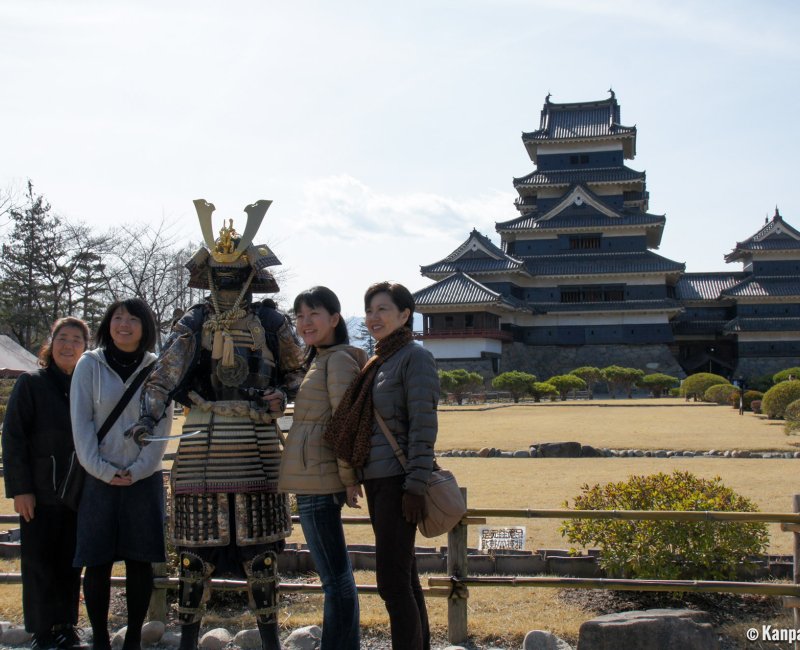
Nagano Prefecture
Nagano prefecture is located in the heart of the Japanese Alps and focuses on outdoor activities all year round, as well as on its history with the samurai. Its eponymous capital hosted the 1998 Winter Olympic Games 🏅 , taking advantage of its renowned ski area . The city is also home to Zenko-ji, one of oldest Buddhist temples of Japan.
Other remarkable landmarks are:
- Karuizawa , the historical summer resort of the Japanese elites, located 1h by train from Tokyo;
- Matsumoto Castle, an authentic fortress in the heart of the mountains in the south of Nagano;
- Kamikochi , a valley with hiking trails very popular in autumn;
- Jigokudani in the north of the prefecture, where wild macaques enjoy the natural onsen in winter.
The prefectures below are part of the Hokuriku area, Honshu’s north-western side.
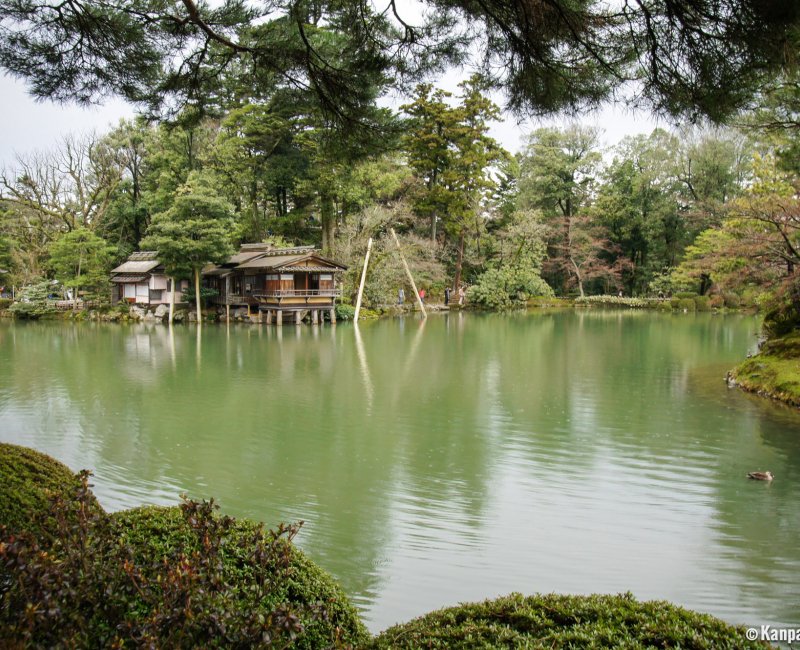
Ishikawa Prefecture
A small territory hugging the Sea of Japan in the north of Fukui and in the west of Toyama, its capital Kanazawa is nicknamed " Little Kyoto " and a major attraction thanks to its three touristic and historic sites : its castle, Kenroku-en one of the three most beautiful gardens of Japan, and The 21st Century Museum of Contemporary Art. Moreover, it is easily accessible by the Hokuriku Shinkansen from Tokyo, and other JR trains from the Kansai area and Nagoya.
Once one of the wealthiest feudal domains, the prefecture preserves its traditional arts such as ceramics and lacquer. Rural tourism is also encouraged in the Noto Peninsula showing beautiful landscapes of terraces paddies.
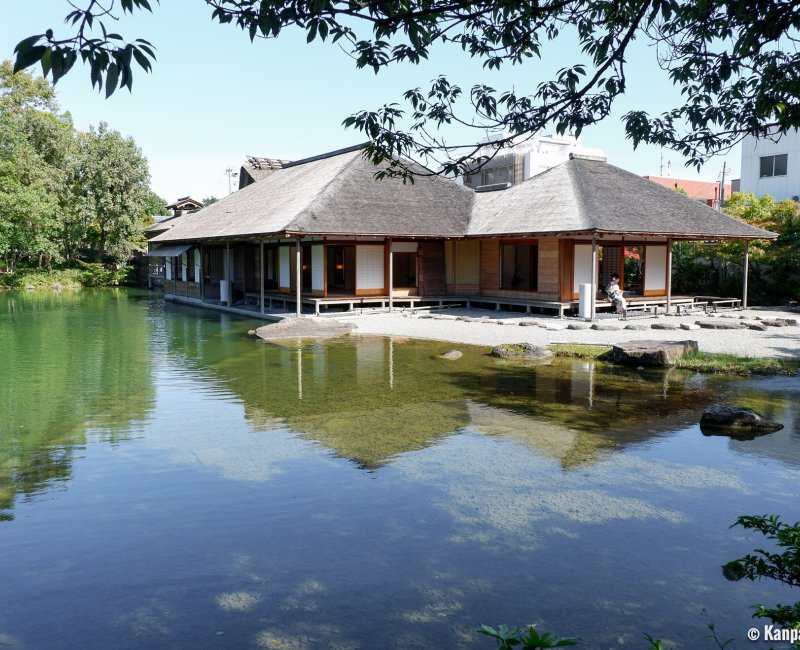
Fukui Prefecture
The former Echizen province, renowned for its Japanese paper production, extends on the shore of the Sea of Japan, between Kyoto and Ishikawa prefectures, and borders the north of Lake Biwa . The Hokuriku Shinkansen is expected to connect Tokyo to its capital Fukui from 2023.
In early April , the banks of the Asuwa River in Fukui are covered by a tunnel of blooming cherry trees 🌸 . The city is also home to the Yokokan Garden , typical of a residence of the feudal times’ nobility. In its suburb, the Prefectural Dinosaur Museum is one of the most renowned in the world. In the south, the site of Ichijodani Asakura reconstitutes a medieval fortified city.
In Eihei-ji temple , located in a mountain forest, one can experience the life of the Zen monks in a shukubo stay.
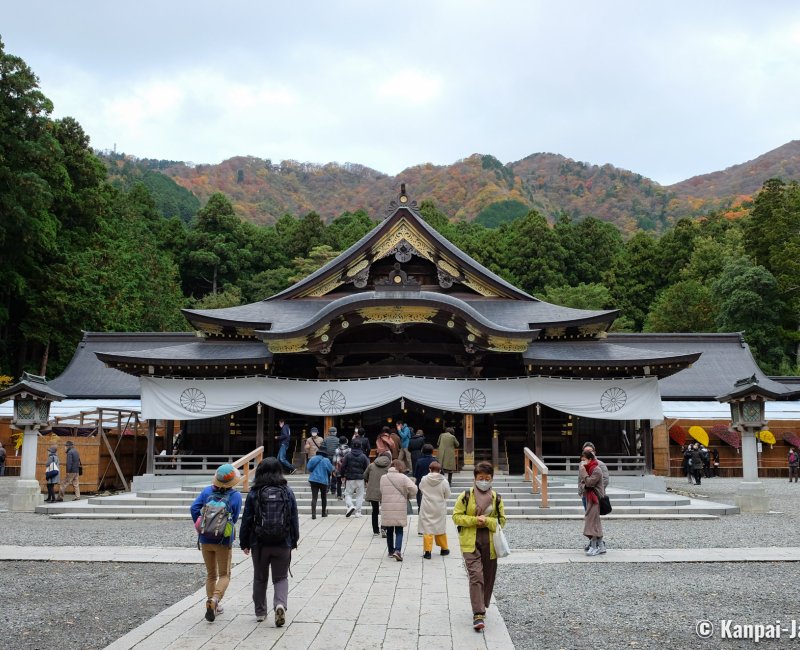
Niigata Prefecture
Its eponymous capital is the largest port city on the coast of the Sea of Japan and has been an international hub since 1858. The prefecture is mainly agricultural, but there are also winter sports resorts in the onsen towns of Myoko and Yuzawa.
Sado Island , the sixth largest of Japan, is a conservatory of Noh theater and gold mines have been exploited for a long time.
Moreover, the prefecture is home to the more than 2,400 years old Yahiko-jinja shrine, and Murakami City is famous for its lacquer craftsmanship and salmon fishing.
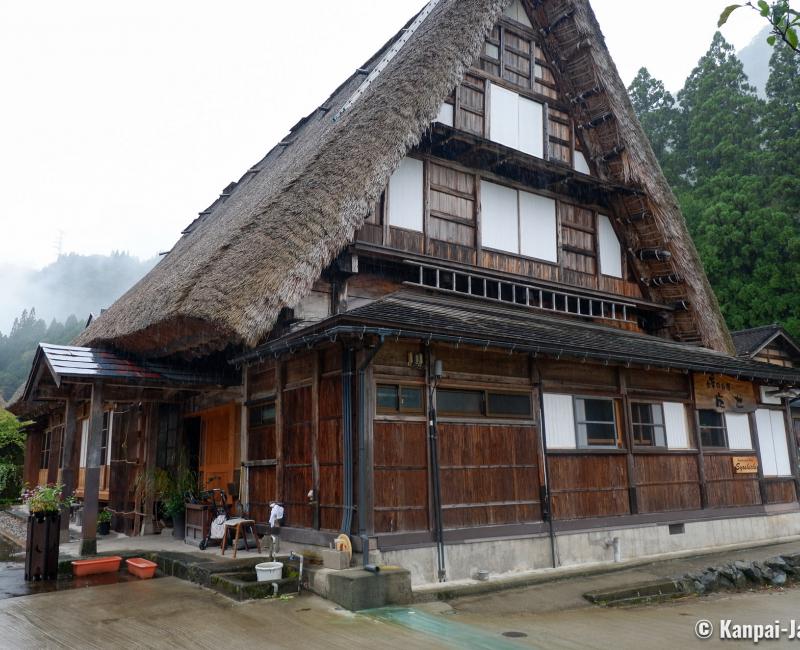
Toyama Prefecture
Toyama is nestled between Ishikawa and Niigata and backed by the Tateyama Mountain Range. Its eponymous capital is on the shore of the Toyama Bay and is of a convenient access from Tokyo to visit the north of the Japanese Alps, especially the traditional village Gokayama-Ainokura , the Tateyama-Kurobe Alpine Route and its impressive Kurobe Dam and steep landscape. The city is renowned for its castle, glass craftsmanship and its Museum of Art and Design.
- Flights and Airports
- Accommodation
- Transportation
- Internet & Phones
- Budget and money
- Japanese Food
- Visit with Kids
- Seasons: spring / summer / autumn / winter
- Weather forecast
- Time in Japan
- Holidays & Festivals
- Natural Disasters
- Customs and Duties
- Works and Closures
- From April 29 to 5 May -- Japanese Golden Week
- May 12 -- Mother's Day in Japan
- June 6 -- Beginning of the rainy season (Tsuyu) in Japan
- June 21 -- Summer starts in Japan
- From July 1 to 31 -- Gion Matsuri Festival in Kyoto with float processions on July 17 and 24
- July 1 -- Season start for climbing Mount Fuji
- Tokyo : Shinjuku , Shibuya , Harajuku , Asakusa , Akihabara , Odaiba , Ikebukuro , Ueno , Roppongi , Chiyoda , Ryogoku ...
- Around Tokyo: Kamakura , Nikko , Hakone , Mount Fuji , Mount Takao , Yokohama ...
- Kansai: Kyoto , Nara , Osaka , Mount Koya , Himeji , Kobe , Kinosaki , Kumano Kodo , Ise ...
- Japanese Alps: Kanazawa , Matsumoto , Takayama , Shirakawa-go , Nakasendo ...
- West: Hiroshima , Miyajima , Shikoku , Onomichi , Naoshima , Izumo , Kurashiki , Matsue ...
- South: Kyushu , Okinawa , Yakushima ...
- North: Hokkaido , Tohoku ...

- Temples and Shrines
- Gardens and Parks
- Hiking and Trekking
- Observation Decks
- Public Baths (Onsen and Sento)
- Festivals (Matsuri)
- Amusement Parks
- Visit on a Budget / Luxury

Keikaku is a travel agency specialist of Japan and providing different kind of services:
- Japan Rail Pass
- English speaking Guides
- Pocket Wi-fi
- Japan Nightlife
- Working in Japan
- Religion and Spirituality
- Arts and History
- Movies / Animated Movies
- Japanese Music
- Studio Ghibli
- Photos / Videos
- Weird Japan
- Translations
- Kana & Kanji
- Japanese Swear Words
- Honorific Suffixes (san, kun, chan...)
- Introducing yourself
- Thank you / Apologize
- Count / Say Your Age
- Say the Date / Tell the Time
- Happy birthday
- Enjoy Your Meal
- Writing your name

Kanas are the much-needed basic characters of written Japanese language. Memorize them at a fast pace with our method.

Ask any kind of question and share your knowledge about Japan in Kanpai’s community space, our Q&A section Kotaete.

Isshoni means "together" in Japanese: share your trip details (dates, places you would like to visit) and find companions to travel in Japan.

Create your Kanpai account to manage your profile and view your participation history (questions, answers).
We use cookies on this site to enhance your user experience. If you continue to browse you accept the use of cookies on our site. See our Cookie Policy for more information.
- Bahasa Indonesia
- Singapore(English)
- Philippines(English)
- Malaysia (English)

About Chubu
The Chubu area consists of three regions: the Hokuriku region facing the Sea of Japan, the Central region inland, and the Tokai region facing the Pacific Ocean. From World Heritage Site Shirakawa-go, where the beautiful original landscape of Japan is preserved, and Sanmachi Street in Takayama, a great place to enjoy eating and walking, to Higashi Chaya District in Kanazawa with its charming Japanese atmosphere, there are plenty of attractions and sights. A tour is the best way to explore this richly varied area, where you can enjoy the sea, the mountains, and the city.
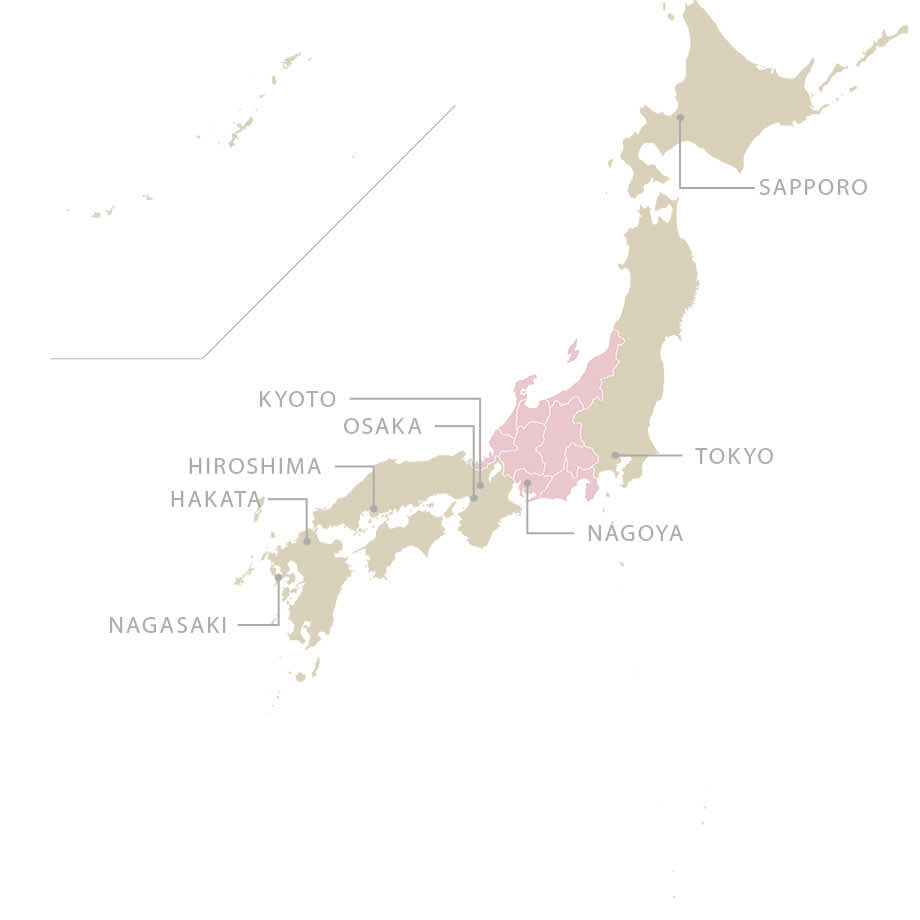
ITINERARIES
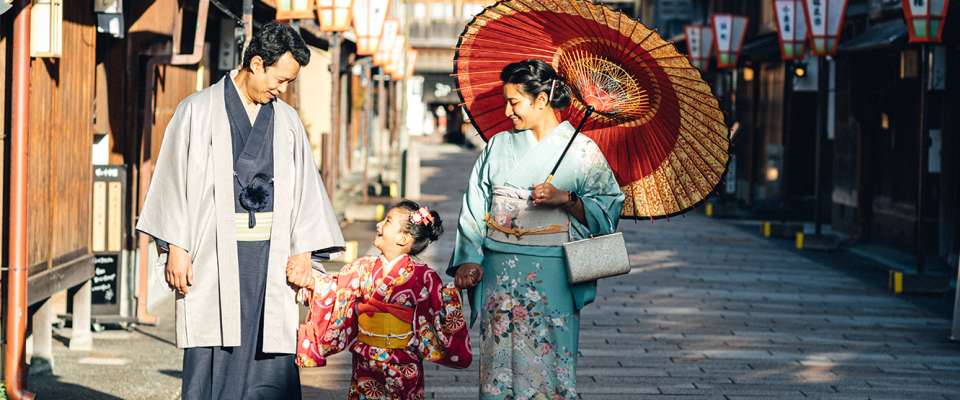
Classic Route
Travel back in time in kanazawa.
Kanazawa is the place to start your spring trip to experience traditional culture. It takes about 2.5 hours from Osaka and Kyoto by limited express train. First, let's visit Kenrokuen Garden, the symbol of Kanazawa. This garden is one of the three most fa
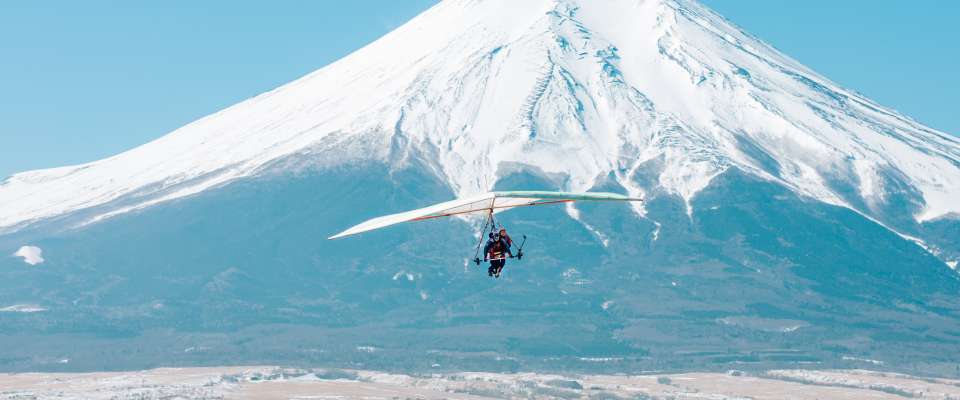
The view of Mt. Fuji while hang-gliding
High speed boats and hang-gliding are available to feel the fresh spring breeze while viewing Mt. Fuji

Buggy ride at the foot of Mt. Fuji!
Go on a Mt. Fuji adventure by paragliding, buggy riding, glmaping on a remote island, and crafting.

Visit the birthplace of Japanese wine
Enjoy the nature at the foot of Mt. Fuji and Japanese wine in autumn, and experience mindfulness with the Great Buddha Statue and Zen meditation.

A journey through Japanese food and art
Art festivals and traditional crafts, sake tasting and sushi making in a snow-covered city!

A winter fantasy trip through a world of snow
A fairy tale world. A journey through the streets of good old Japan, covered in white snow.
- Recommended Experiences in Chubu|Unveiling a New Japan, Captivating Experiences - Sightseeing in Japan and Travel Information
Please Choose Your Language
Browse the JNTO site in one of multiple languages
- Tours & Experiences
- Tailor-made Trips
- Bahasa Indonesia
We are happy to see you again!
Continue with
Or use email.
No Account? Create one
Create account
Already have an account? Sign in
Quickly Sign up with
I agree to Japan Travel's Terms of Service and Privacy Policy . Terms of--> and acknowledge that Japan Travel's Privacy--> applies to me.-->
Email reset password link
Please check your inbox and click the link we will send to you.
The Nine Prefectures of Chubu
A quick look at the Chubu region

Making up the bulk of central Japan, the nine prefectures of the Chubu region is the mountain capital of the nation. Iconic mountains feature prominently in the life of the region. Rural at heart, Chubu is home to some of Japan's best agricultural produce, particularly fruit, tea and rice, while the area's history and cultural pedigree can be found in its many castles, feudal period villages and traditional crafts. Here is a simple guide to each of the nine prefectures of Chubu.
The samurai birthplace of Japan's last three great unifying warlords, Aichi Prefecture perfectly combines a rich cultural heritage with the demands of the modern world. The prefecture is said to be home to more temples than any other in Japan while its National Treasure-listed Inuyama Castle and the rebuilt Nagoya castle are major draws. Higashiyama Zoo & Botanical Gardens are a beautiful family day out and and Toyota , the world's largest car manufacturer, is based here.
Aichi is connected to Tokyo via the JR Tokaido Shinkansen.
Inuyama Castle, Aichi (Photo: ThorstenS / CC BY-SA 3.0 )
A haven of history, Fukui Prefecture is filled with reminders of a rich cultural heritage. Maruoka Castle , Japan's oldest, can be found here while Japan's Warring States period comes alive through the ruins of Ichijodani Asakura . Further back in time is the Fukui Dinosaur Museum , one of the world's best. Hidden away in the mountains is the incredible Eihei-ji , one of Zen Buddhism's major temples, while Tojinbo with its stunning cliffs and seafood, has major appeal.
Fukui is connected to Tokyo via the JR Tokaido Shinkansen to Maibara and from there the JR Shirasagi Limited Express.
Eihei-ji Temple, Fukui (Photo: 663highland / CC BY-SA 3.0 )
History and heritage thrive here in Gifu Prefecture with the World Heritage listed Shirakawa-go Village being a marvel of tradition, the battlefield of Sekigahara , where Japanese history was forever changed while Takayama , an entry point into the Japan Alps, oozes not only traditional architecture and historical ambience but some of he best hot springs in the area. One of Japan's Great Buddha statues can be found here as well as the thousand-year old tradition of cormorant fishing in Nagara River.
Gifu is connected to Tokyo via the JR Tokaido Shinkansen to Nagoya and from there the JR Tokaido Line Special Rapid.
One of the wealthier regions of old Japan, Ishikawa Prefecture is replete with heritage as well as a dash of nature. The classical architecture of Kanazawa draws many an admirer while being surrounded by the holy peaks of Mt. Hakusan adds a touch of the divine to the relaxing going on at the hot springs of Kaga . Ishikawa's regal Kanazawa Castle and Kenroku-en , one of the top three gardens of Japan, are matched only by the artisan heritage of the prefecture's famous kutani lacquerware .
Ishikawa is connected to Tokyo via the JR Joetsu Shinkansen to Joetsu-Miyoko and from there the JR Hokuriku Shinkansen.
The roof of Japan, Nagano Prefecture is home to the absolutely stunning Japan Alps mountain range. Top-billing here is the verdant mountain wilderness of Kamikochi while heritage and history have their way with National Treasure-registered Matsumoto Castle , one of the nation's top original castles, and the feudal-era villages of Kiso Valley . Karuizawa in summer is especially inviting while Hakuba is the prefecture's very own snow country.
Nagano is connected to Tokyo via the JR Joetsu Shinkansen.
Famed for its winters sports and nationally loved Koshi Hikari rice, Niigata Prefecture combines some of the nation's most spectacular annual events like the Fuji Rock Festival and the top three fireworks of Nagaoka Festival with the rustic remoteness of Sado Island and its Edo period gold mine and classical Noh theatre heritage. The terraced rice fields and snow culture of Tokamachi are another hidden charm of the prefecture.
Niigata is connected to Tokyo via the JR Joetsu Shinkansen.
Shizuoka Prefecture may be one of Japan's most symbolic prefectures. Home to the nation's symbols of symbols, the iconic Mt. Fuji , the prefecture takes time to include the many coastlines of Izu Peninsula, the renowned hot springs of Atami , historical reminders like Hamamatsu Castle and the rich tea plantations beloved throughout the country. The dreamlike pine trees of Miho no Matsubara are matched by the equally magical Shiraito Falls , adding to the beauty of this popular prefecture.
Shizuoka is connected to Tokyo via the JR Tokaido Shinkansen.
Blessed with mountains upon mountains, the outdoor beauty of Toyama Prefecture may very well reach its peak with the holy Tateyama Mountain range and the extraordinary ten-metre snow walls of Tateyama Kurobe Alpine Route . Kurobe Dam is the largest in the nation while beyond the rugged peaks lies the National Treasure-listed Zuiryu-ji Temple and the nostalgic Gokayama , one of Japan's World Heritage-listed feudal villages.
Toyama is connected to Tokyo via the JR Joetsu Shinkansen to Joetsu-Miyoko and from there the JR Hokuriku Shinkansen.
Fruit heaven, Yamanashi Prefecture grows some of the best peaches and grapes in the country. Anchored by the iconic Mt. Fuji , the prefecture is also home to nation's scariest haunted house at the marvellously thrilling Fuji-Q Highland theme park. Landlocked though it may be, Yamanashi is also home to the Fuji Five Lakes , one of the top water spots in the country with stunning views of its namesake mountain. Kofu Castle is a reminder of the area's pedigree along with the beautiful Erin-ji Temple .
Yamanashi is connected to Tokyo via the JR Chuo Line Limited Express.
- Share on Facebook
- Share on Twitter
- Copy link to share
By Sleiman Azizi
Community writer
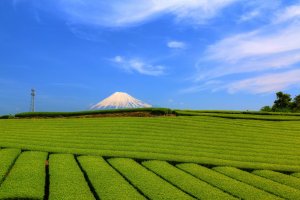
Top Articles
- Recommended

Sapporo Beer Opens New Brewery in Tokyo’s Ebisu

Extraordinary Experiences in the Great Nature of Izu-Oshima, the Closest Island From Central Tokyo

2-Day Hachijojima Retreat: Recharge Your Mind and Body

Kurobe Unazuki Canyon Route to Link with Tateyama Kurobe Alpine Route

Mount Omuro

Tokyo One of the World's Most Walkable Cities

Valley of Witches: a New Ghibli Park Attraction

Tokyo Takes 2nd Place on Top Coffee Cities List

2024 Grand Sumo Tournaments

Guide to Bringing Medicines Into Japan

Your Name: Real-Life Locations in Tokyo

Hachiko Statue in Shibuya

Iwatayama Monkey Park

Shibuya Crossing

Daikoku Car Meet

Kanamara Penis Festival

Guide to PASMO Cards

Guide to Suica Cards

Japanese Urban Legends
More from this category, guide to bringing medicines into...
By Japan Travel

Money in Japan
By Tom Roseveare

Guide to Earthquakes in Japan
By Edward Yagisawa

Getting a Tattoo in Japan
By Serena Ogawa
Join the discussion

Let us know how we can help.
Help us improve JapanTravel.com
We welcome any suggestions regarding this content. Your feedback is confidential and will be used to help improve this page.
Suggest an edit
https://en.japantravel.com/guide/the-nine-prefectures-of-chubu/62167
Thank you for your support!
Your feedback has been sent.
For a limited time, book your 2020, 2021 & 2022 group tour packages with no deposit required!!!

- Custom Groups Custom Groups Overview Student Groups MICE Special Interest Groups
- About Japan About Japan Destinations Attractions Must See & Do
- About Us About Us Contact us Testimonials Terms & Conditions Travel Agent Services Disclaimer Site Map
- News Press Releases Blog Media
- Your Trip Get Started How to make a reservation Travel Tip FAQs Inquiries
Last Name *
Chubu Region
Regions of japan, popular destinations in japan, northern japan, around tokyo, central japan, southern japan, contact our travel consultant, 1-855-325-2726 (us/canada), 1-909-988-8885 (international), mon. - fri., 8:30am - 5:30pm (pst), (except national holidays), [email protected].
The Tokyo Metropolitan area is a mega-city, home to some 35 million people and the driving force of Japan's economy and rapidly shifting cultural trends. However, less than 90 minutes away you will find Mount Takao, a peaceful retreat for walking and quiet reflection with views of the distant urban landscapes. To the southeast in Chiba Prefecture lie hidden beaches, whilst to the north in Nikko you will discover the spectacularly ornate temples and shrines of Toshogu, the resting place of the first Tokugawa shogun; the man who began the transformation of Tokyo into the city you will find today.

Top Destinations in Chubu
Niigata prefecture.
Niigata Prefecture is famous for its high quality rice and is located along the coast of the Sea of Japan.

Chubu | Niigata Prefecture
Sado Island
Sado Island is a former island of exile for political dissenters off the northwestern coast of Japan, with a history of gold mining, Noh performance, and taiko drumming.

Niigata City
Niigata city is the capital of Niigata Prefecture and is one of the largest port cities one the Sea of Japan coast.

Echigo Tsumari
Echigo Tsumari is a rural region that is known for over 100 modern art works that are exhibited over 760 square kilometers.

Echigo-Yuzawa is located in the southernmost part of Niigata and adjoins Nagano and Gunma.

The massive 2145-meter-high Mt. Naeba-san is located at the border of Niigata and Nagano prefectures near the midsection of Honshu.
Toyama Prefecture
Toyama Prefecture is the leading industrial prefecture on the Sea of Japan coast and is part of the Hokuriku Region.

Chubu | Toyama Prefecture
Kurobe Gorge
Kurobe Gorge is a forested ravine located in the mountains of the Northern Japan Alps and has the steepest gorges in Japan.

Tateyama Kurobe Alpine Route
The Tateyama Kurobe Alpine Route is an amazing route that goes through the Northern Japan Alps.

Toyama City
The prefectural capital, Toyama City, is located almost at the center of Toyama Prefecture.

Gokayama is a place of precipitous mountains and deep valleys located in the southeastern part of Toyama.
Ishikawa Prefecture
Ishikawa Prefecture is known for being the home to the famed Kenrokuen Garden, which is located in Kanazawa.

Chubu | Ishikawa Prefecture
Noto Peninsula
The Noto Peninsula can be found in the northern part of Ishikawa Prefecture and is known for its coastal scenery.

Kaga Onsen is a mecca of hot springs and is located south of Kanazawa in Ishikawa Prefecture.

Kanazawa has many historical attractions and the 21st Century Museum, but the city is known for the Kenrokuen. It is one of the three best landscape gardens in Japan.
Fukui Prefecture
Fukui Prefecture is located in the Chubu Region along the coast of the Sea of Japan.

Chubu | Fukui Prefecture
Tojinbo is a rugged, precipitous cliff eroded by the raging waves on the coast of the Sea of Japan in northern Fukui.

Fukui City is the seat of the Fukui prefectural government where you can feel its 1,000 year-old history and encounter its rich cuisine.

Eiheiji Temple
Eiheiji Temple is one of the two main temples of the Soto School of Zen Buddhism and has over 200 practicing monks living on the grounds.

Echizen is a city in Fukui Prefecture where Murasaki Shikibu had a one year residency with her father.

Tsuruga City
The city of Tsuruga is a port city that faces Tsuruga Bay, and is situated in southern Fukui Prefecture in the Hokuriku region.

Mikata Five Lakes
The Mikata Five Lakes have different concentration levels of salt and is also known as the “Five Colored Lakes.”
Yamanashi Prefecture
Yamanashi Prefecture is home to the famed Mt. Fuji and Fuji Five Lakes.

Chubu | Yamanashi Prefecture
Mount Fuji is the tallest mountain in Japan and has been worshipped as a sacred mountain. The perfect cone shape of the mountain is iconic of Japan.

Fuji-Goko is a collective term for the five lakes along the northern foot of Mt. Fuji, which towers at the border of southern Yamanashi and Shizuoka.
Nagano Prefecture
Nagano Prefecture is a landlocked region and is known as the gateway to the Japan Alps area.

Chubu | Nagano Prefecture
Nozawa Onsen
Nozawa Onsen is located in the northern part of Nagano Prefecture and has 13 traditional style public baths.

Yudanaka Onsen
Yudanaka Onsen is a hot spring resort that has been around for hundreds of years.

Shibu Onsen
Shibu Onsen is located in Yamanouchi and maintains a traditional atmosphere reminiscent of the Edo Period.

Obuse is a small town located in the northern part of Nagano Prefecture and is known for being an artistic town.

Nagano City
Nagano city is the capital of Nagano Prefecture and is known for hosting the 1998 Winter Olympic Games.

Hakuba is located in the Northern Alps and is one the most popular ski areas in Japan.

Karuizawa is a popular summer mountain resort located in Nagano Prefecture.

Matsumoto is best known for being home to one of the most beautiful original castles, Matsumoto Castle.

Kamikochi has one of the most beautiful mountain scenery in Japan and is open from mid/late April till mid-November.

Norikura is a highland around Nagano's western border with Gifu.

Shiga Kogen
The Shiga-kogen Highlands area is in the northeastern part of Nagano.

Lake Suwa-ko is situated almost right in the center of Nagano.

Ina, in the south of Nagano, is located between the Central and Southern Alps along the Tenryu- gawa River.

Kiso Valley can be found next to the Central Japan Alps along an ancient trade route, which later became part of the Nakasendo.
Gifu Prefecture
Gifu Prefecture is landlocked and is best known for Takayama, Shirakawa-go, and Gifu City.

Chubu | Gifu Prefecture
Okuhida is located in the mountains of the Northern Japan Alps and is best known as a hot spring destination.

Takayama is located in the northern mountainous region of Gifu Prefecture. The city is known for their traditional structures in Old Town and festivals.

Shirakawa-go
Shirakawa-go is UNESCO World Heritage Site and is best known for their Gassho style houses.

Gero Onsen is one of the three best onsen in Japan as said by Hayashi Razan, a Confucian poet from the Edo Period.

Gujo Hachiman
Gujo-Hachiman is a riverside town and is best known for its Hachiman Castle, which was established in the 16th century.

Mino is a city known for its long history with washi paper production and merchant structures with udatsu roofs.

Gifu is situated in the northern part of the Nobi Plains in the southern part of Gifu Prefecture.
Shizuoka Prefecture
Shizuoka Prefecture is home to Mount Fuji and is recognized for its plethora of natural beauty.

Chubu | Shizuoka Prefecture
The city of Gotemba is located in the eastern part of Shizuoka Prefecture near the foot of the majestic Mt. Fuji.

Atami located at the root of Izu Peninsula and facing Sagami Bay, is area with modern hotels, Japanese inns with historical backgrounds.

Shuzenji Onsen
Shuzen-ji is located almost in the center of the Izu-hanto Peninsula, on a hill surrounded by the Amagi, Sugumo and Daruma mountains.

Izu Peninsula
Izu Peninsula is a popular hot spring resort area with beautiful coastlines and scenic mountain interior.

The town of Kawazu is located on the east coast of the Izu Peninsula in the Shizuoka Prefecture.

Shizuoka City
The city of Shizuoka is the seat of the Shizuoka prefectural government, located in the center of the prefecture.

The city of Hamamatsu was once a castle town, and later flourished as a post station for travelers.

Lake Hamanako
Lake Hamanako is a lake connected to the Pacific Ocean and revolves around the Kanzanji Onsen.
Aichi Prefecture
Aichi Prefecture is located in the Chubu region of Japan. Aichi is also the home of the world’s most advanced technology and industrial craft.

Chubu | Aichi Prefecture
Inuyama is located on the northern edge of Aichi Prefecture near Gifu Prefecture and is famous for its deep cultural roots dating back to feudal Momoyama period.

Nagoya is the third largest city in Japan and is known for being the industrial capital of Japan.

Tokoname has been a center for producing pottery since the Heian Period.

Seto is located northeast of Nagoya and has a history of producing ceramics.

Toyota is an industrial city and is home to the automotive giant Toyota Motor Corporation.

Attractions in Kansai
Top 10 things to see in kansai:.

Nagoya Dome

Iyashinosato Ancient Japanese Village

Tsumago-Juku

Shima Spain Village

Nozawa Onsen Snow Resort
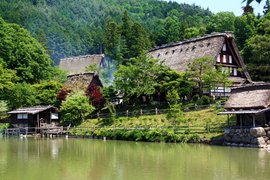
Hida Folk Village
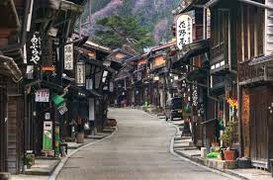
Ainokura Gassho-Zukuri Village

Winter in Japan road trip: the best of the Chubu region in 7 days
Welcome and thank you for visiting this article. before you start reading, you need to know that some of the links on my website are affiliate links from which i receive a small commission from the sale of certain items, but the price remains the same for you..
The Chubu region in Japan should be on your list of places to visit because it is home to many amazing tourist attractions. However, it’s obvious that you cannot visit all these fantastic sights in one week but some places are just a little bit more special during winter in Japan.
One of the main reasons that we took off for this trip was that our former employer from Meekatharra, Western Australia, celebrated his 60th birthday at the Akasuka Onsen Resort in Myoko Kogen and invited us to join him.
Since I stayed with Nao and her family for a little while, we flew from Fukuoka to Tokyo, rented a car, and combined this birthday party with a visit to Nagano’s Snowmonkey Park, Shirakawa-go’s World Heritage Village, and Mount Fuji.
If you are planning a trip during the winter season in Japan then read on as I will share my personal experience, useful tips, and inspiring photos of the journey.
READ ALSO: The perfect itinerary for Japan in 3 weeks
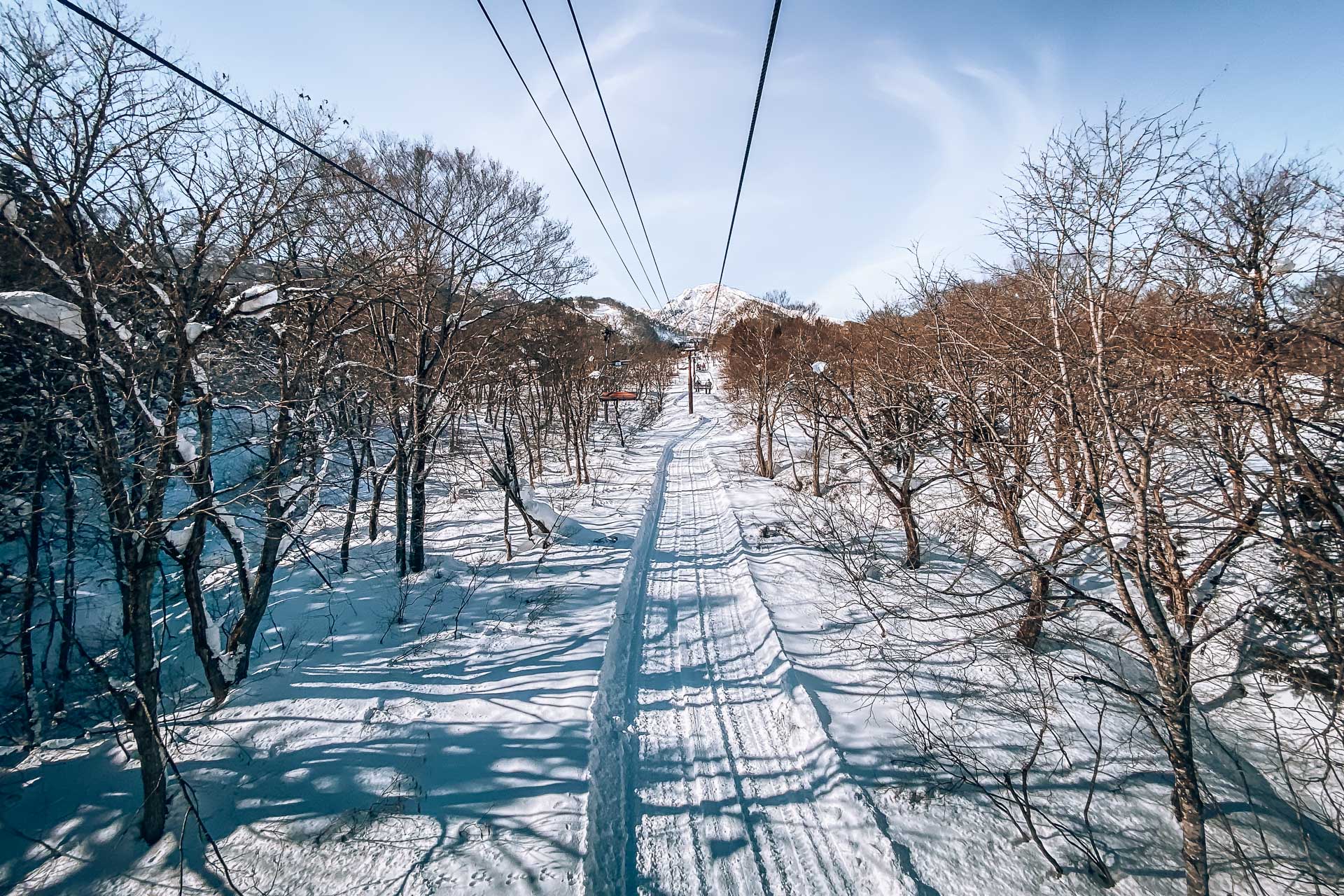
How to get to the Chubu region?
Although Tokyo is located in the Kanto region and not in Chubu , it’s an excellent starting point because most international flights fly to Tokyo and rental cars are frequently cheaper. International flights from Europe to Tokyo are between €600-900 for a return flight , while flights from the USA are around €500-750
Nagano, Shizuoka, and Nagoya are some of the major cities in the Chubu region, though finding English-speaking car rental companies and international flights may be more difficult.
For this winter in Japan itinerary, we took a domestic flight from Fukuoka to Tokyo Narita Airport (NRT) and rented a car at the airport to explore all the places in this article.
How to get around Chubu?
We chose to rent a car because it was simple and pretty affordable. For only €30 / 4000 JPY per day , we rented a car including insurance and snow chains as this was necessary to drive on the roads in the mountain areas around Myoko Kogen and Shirakawago. The roads were very icy and without the snow chains, it wouldn’t have been possible to drive on some roads.
DiscoverCars and Klook have some pretty good deals for rental cars in Tokyo, however, we rented through a local agency Samurai Car Rental which was perfect for this trip.
It’s possible to explore almost everything on this itinerary with public transport and the JR Railpass to get around but it might take some more time, so keep in mind to add a few more days to your Japan itinerary. The JR Railpass costs around €200 / 29500 JPY for a week and you can travel anywhere in the country.
However, if you don’t want to rent a car or begin your trip somewhere other than Tokyo, you can still explore the highlights of the Chubu region from cities like Nagano, Nagoya, or Shizuoka with a JR Railpass.
During my trip to this amazing country back in 2019, I traveled from Tokyo to Fujikawaguchiko and Takayama by taking the highway buses, which were also incredibly simple and affordable.
BOOK: Get a JR Railpass BEFORE you visit Japan and explore the country in a comfortable way
Map of Japan
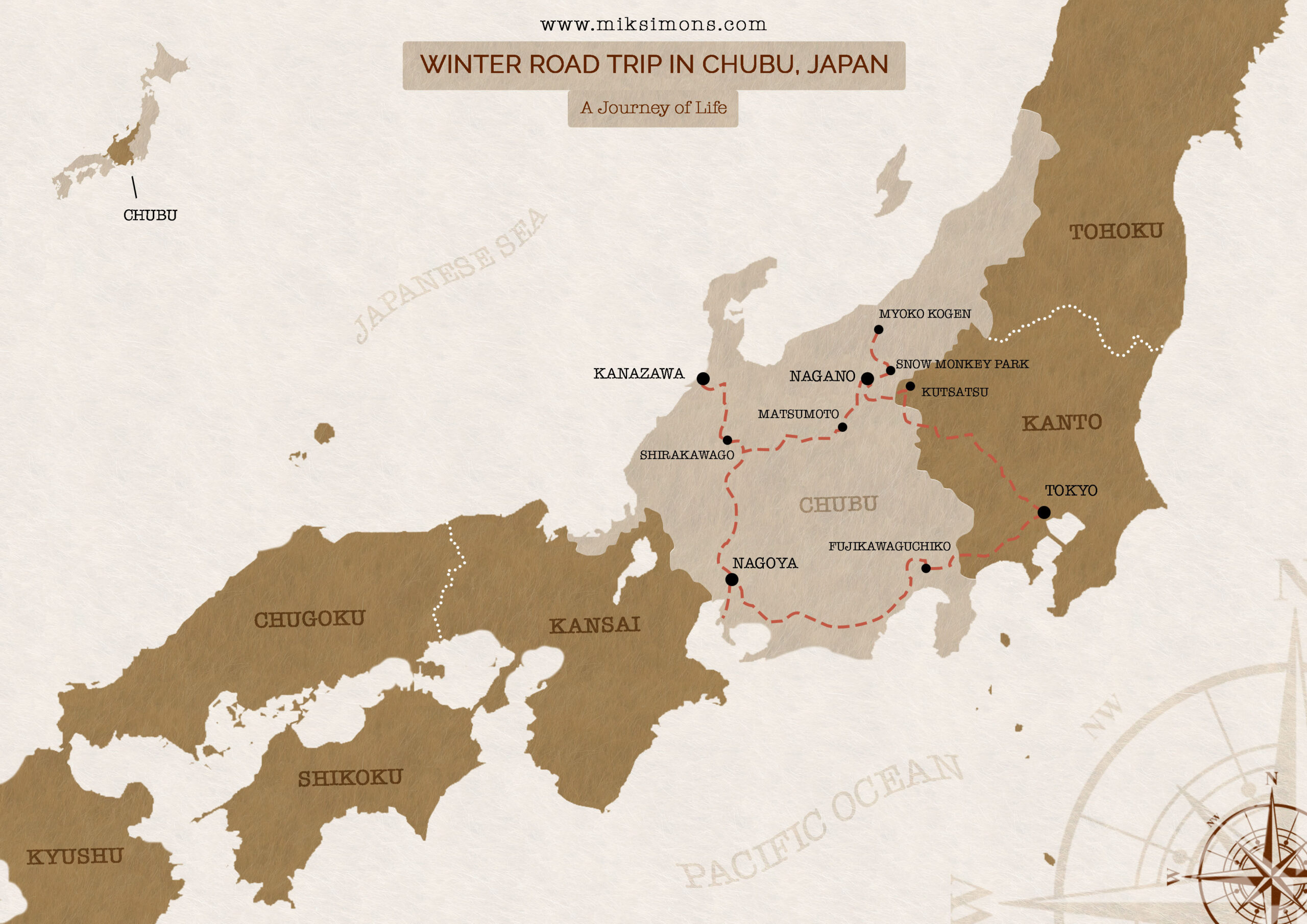
The best time to visit Japan
A road trip during the Japanese winter is a bit more challenging but definitely awesome as the highlights of this itinerary are more unique to explore during this time of the year. Although, Autumn and spring are generally considered to be the best times to explore this region as the vibrant foliage of spring and fall completely transform the landscapes into a picture-perfect setting.
It was a truly enchanted journey thanks to the picturesque mountain villages that were blanketed in snow and the moody landscapes.
We also decided to go snowboarding for a few days in the Japanese Alps of Myoko Kogen as we were invited for a birthday party and winter in Japan is, of course, the best time to do so.
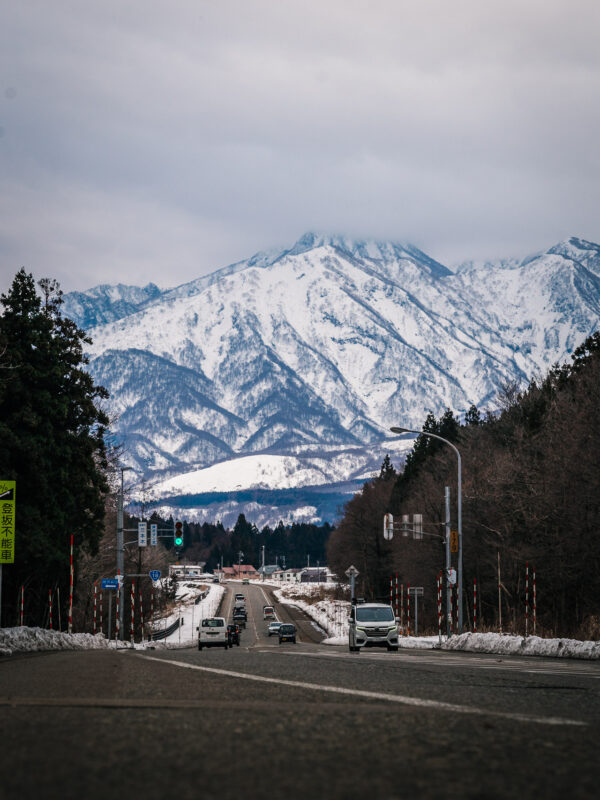
Where to stay?
The Chubu region is a vast area with many options for accommodations and some amazing places to stay. The bigger cities have plenty of hotels and hostels while staying in a traditional ryokan is something unique that you have to experience on your Japan itinerary.
A ryokan is a Japanese-style guesthouse where you mostly sleep on a futon bed on the floor. When you visit a village known for its onsen, you will typically have access to a private or public onsen that gets its steaming water from the natural hot spring. These hotsprings have a healing effect on your body and skin.
For instance, during our stay in Yamanouchi and Fujikawaguchiko , we stayed in a ryokan that included a private onsen for only €60 / 8500 JPY per night in a private room.
If you’re travelling solo, you can easily find hostels in the region for €25-30 / 3500-4200 JPY per night , or if you prefer to stay in a private room with your own bathroom, you can expect to pay around €60-100 / 8500-14200 per night, depending on your budget and preference.
READ ALSO: 21 Best hotels in Japan
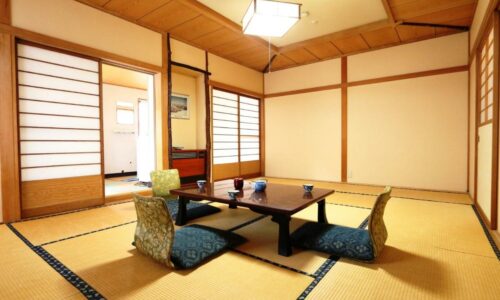
Travel essentials for a winter road trip in Japan
After exploring this amazing country for a while, I’ve picked up on a few essentials that will make your time here much more pleasant.
Getting a WiFi router as soon as you land at the airport is a great idea if you want to see a lot of the world in a short amount of time, such as three weeks in Japan.
Getting a WISE Card is another great piece of advice that can come in very handy. Because it has the lowest international transaction fees and provides instantaneous conversion of EUR or USD to JPY, I use my Wise Card to make purchases and withdrawals daily (and other currencies)
Here are a few more items that I think will come in handy during your time in Japan, in addition to the ones already mentioned.
- Get a WIFI router on arrival at the airport
- Get a WISE Card
- Google translate (thank me later)
- Japan Travel App
- Purchase a Passmo or Suica card
- Buy a Japan Rail Pass
- Apply for a Japanese translation of your driving license
- A power bank and international adapter
- Reusable water bottle
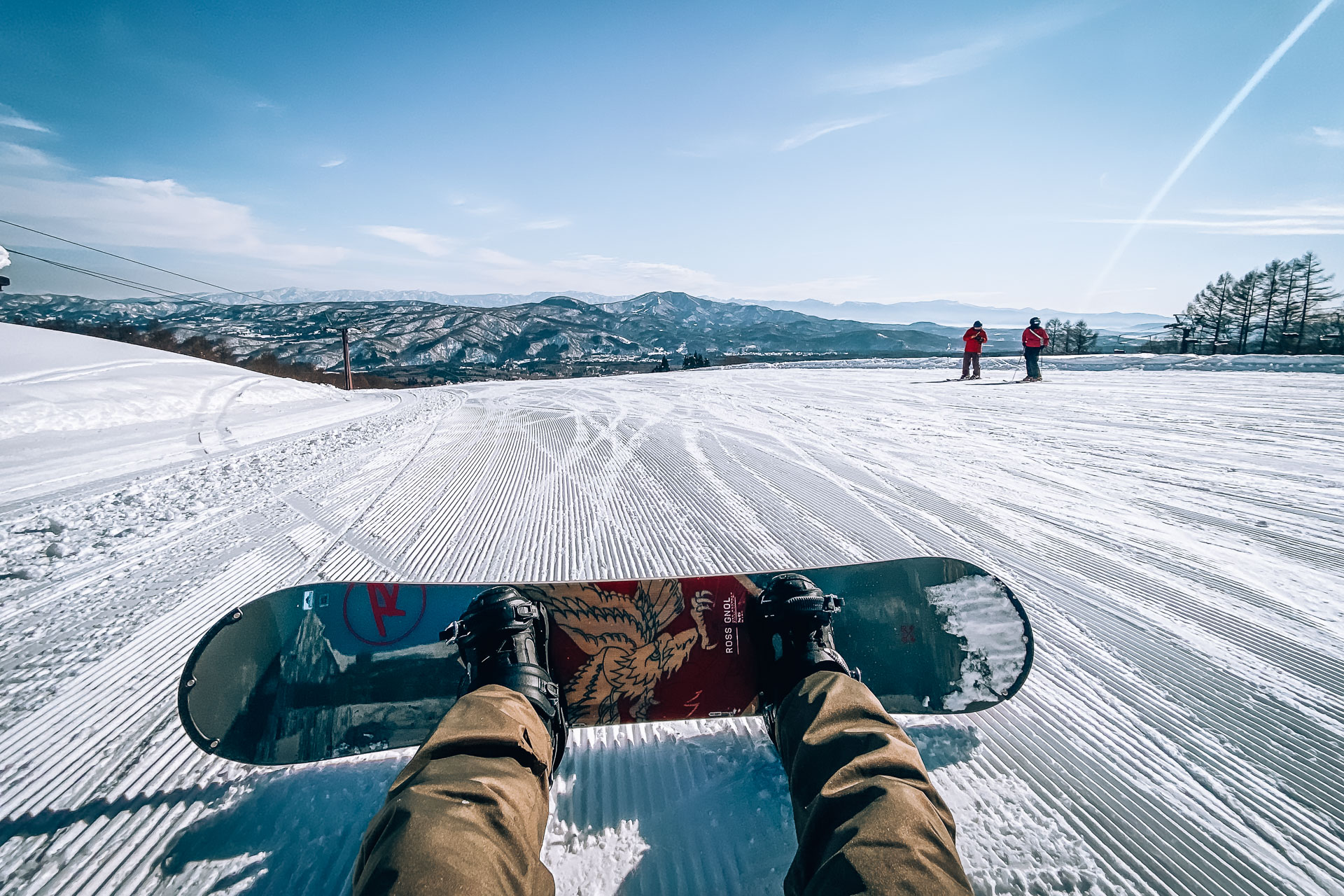
Winter in Japan: A road trip in the Chubu region
Day 1: tokyo to yamanouchi.
Distance: 265km – 3h 50min (toll road) Where to stay: Kaneki Hotel in Yamanouchi
To make the most of your day, it’s best to search for flights arriving early in the morning. We took a domestic flight from Fukuoka to Tokyo Narita Airport early in the morning and picked up the rental car as soon as we landed to drive directly to Kusatsu Onsen Town , which is recognized as one of the most charming and well-known Onsen Towns in all of Japan.
The village is famous for its natural hot spring that’s located in the middle of the village where you can walk around if you can stand the strong sulfur smell but also the technique that the locals use to cool down the extremely hot water from the source of the hot springs.
At the Kusatsu Onsen Netsunoyu , you can admire a dance performance that demonstrates in an interactive and traditional way how they cool off the steaming hot water from the source of the hot springs without adding tap water. Adding tap water reduces the natural power and effect of the hot springs.
Very interesting to see!
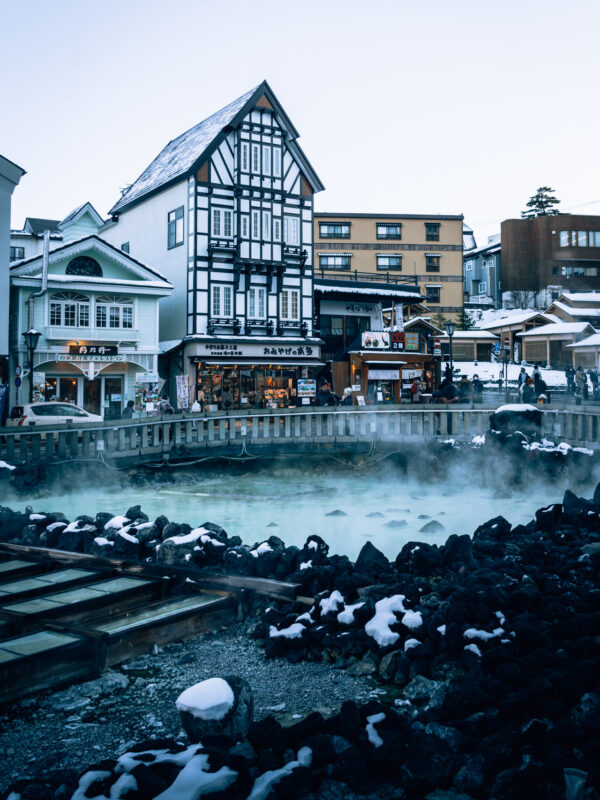
You can also visit the stunning Kosenji temple and Pagoda, which are located in the village, and look out over the town. We came here in the winter, and the views over the snow-covered village were truly magical.
After wandering around the town for a while, we continued to our accommodation in Yamanouchi.
On the way to the Ryokan in Yamanouchi, where we were staying, we were treated to some breathtaking panoramas, with the rising and setting suns providing a fitting backdrop.
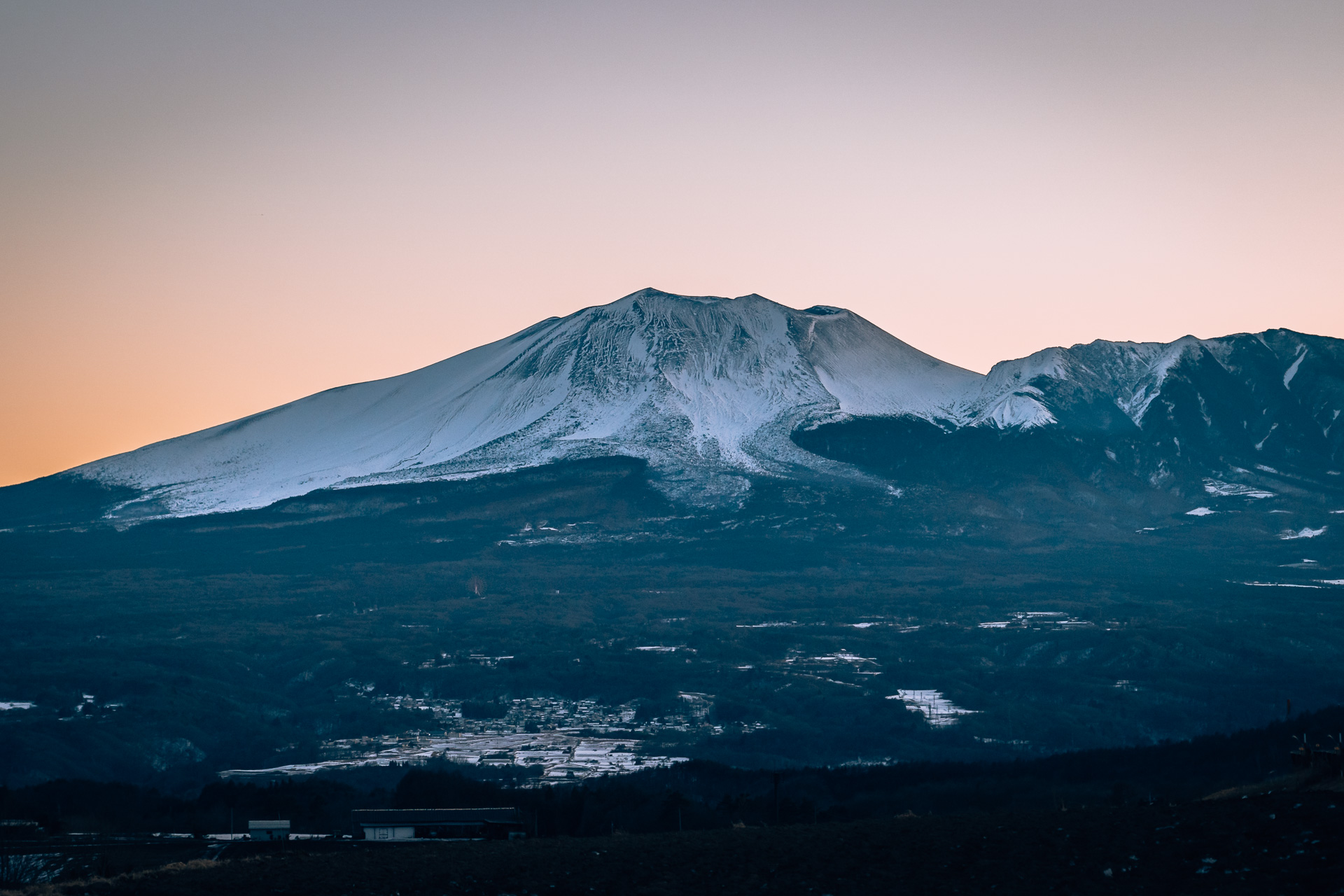
The hotel is was actually amazing as it features both a private and a public onsen and it was located in the charming village of Yamanouchi where you can also go for a stroll along the river or relax in one of the village’s many public hot springs.
TIP: Drive cautiously, check which roads are open, and equip your vehicle with snow chains if needed. Roads are often closed or dangerously slippery during the winter months. Google Maps showed which roads were closed during the winter.
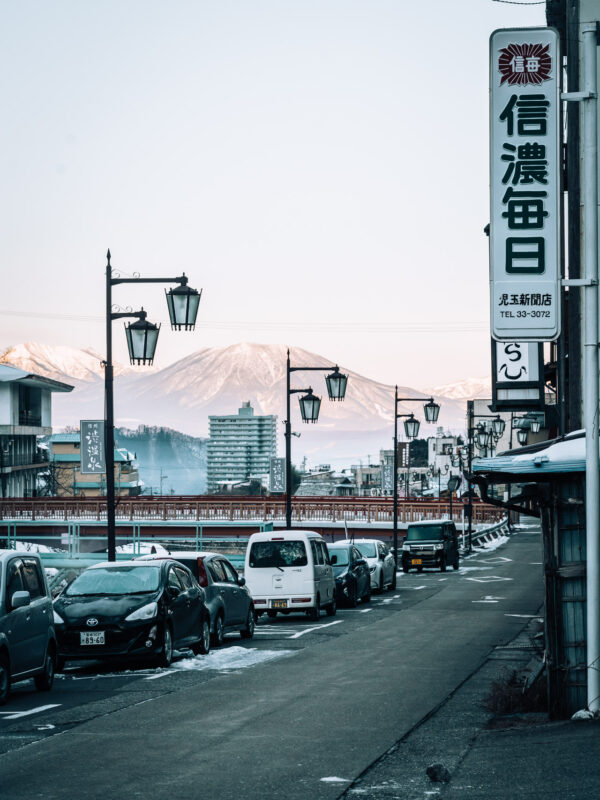
Day 2: Jigokudani Snow Monkey Park
Distance: 75km – 1h 20 (toll road) Where to stay: APA Hotel Joetsu Myoko-Ekimae in Myoko
One of the reasons we decided to stay in Yamanouchi is because of the fantastic hot springs in this town. Another reason is that it’s located nearby Jigokudani Snow Monkey Park , which was one of the most exciting places we visited during this road trip in Japan.
You’ve probably heard or seen something about this place on social media or the internet. In this picturesque mountain area, you can watch the adorable Japanese Macaque monkeys playing around and enjoying the hot springs. This is unique to see, especially in the winter when the area is covered in snow and the monkeys use the hot springs to stay warm.
You can easily spend a few hours in the park and take pictures while admiring the monkeys that have fun in the onsen.
READ ALSO: Jigokudani monkey park: the most famous hot spring with monkeys in Japan
BOOK: Explore the Jigokudani Snow Monkey Park from Nagano with a guided trip
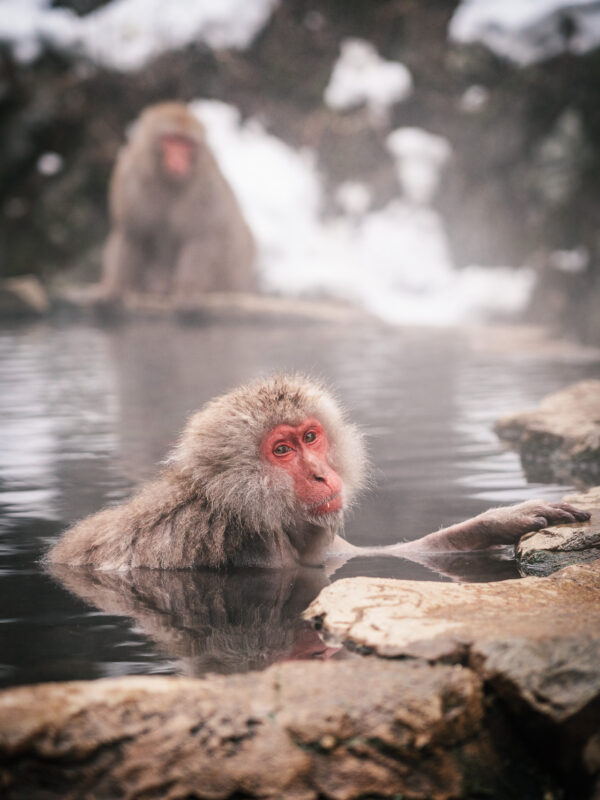
In the afternoon we drove to Myoko Kogen , but along the way, you’ll pass a beautiful waterfall that is definitely worth a visit. Surrounded by a stunning landscape, the Naena waterfal l is completely covered in white in winter, giving it a winter wonderland atmosphere .
However, the hiking trail was inaccessible because there was at least 40 cm of snow on the trail that completely covered the 3-kilometer path to the waterfall. Although we tried to get there, we gave up after sinking to our knees in the snow.
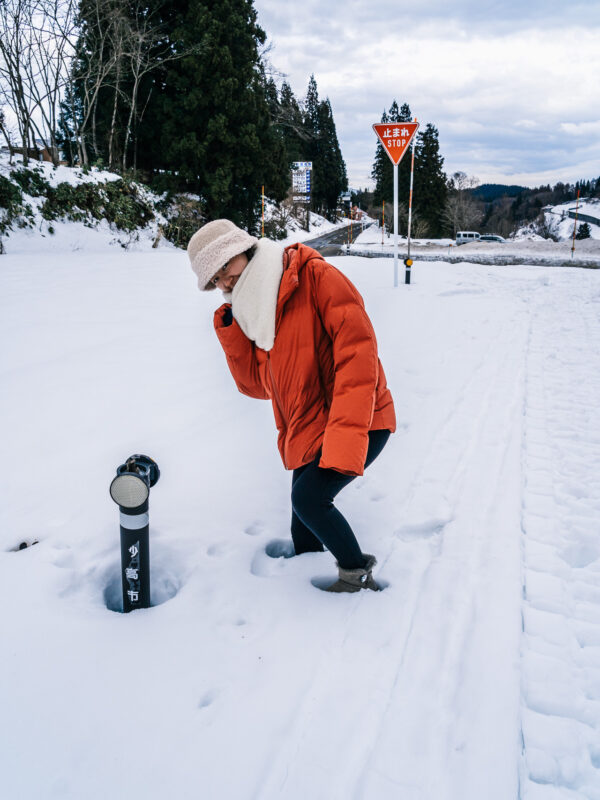
Since our hotel was about 30 min. from Myoko Kogen, we decided to check in our hotel first and unpack all our bags before heading back to Myoko Kogen where our former employer from Australia was staying.
Later that night, we celebrated his birthday and enjoyed some drinks and snacks in a local bar in the charming town. It was a very nice reunion!
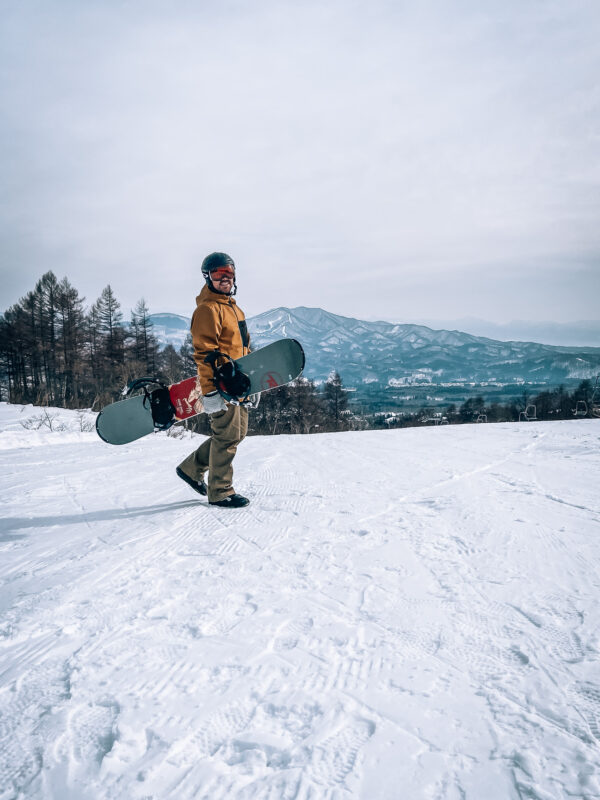
Day 3 & 4: Snowboarding at the Akakura Onsen ski area
Where to stay: APA Hotel Joetsu Myoko-Ekimae in Myoko
The majority of hotels and resorts were either fully booked or just out of our price range, so we stayed in Myoko-Joetsu, which is 30 minutes drive from Myoko Kogen’s ski resort.
Fortunately, this was not a problem with the rental car, and the hotel was just next to the JR Train station in Myoko-Joetsu , so this is also convenient when you travel throughout Japan using the JR Railpass.
Although we are both beginners, the Akakura Onsen ski Area is fantastic with some great slopes, and the fact that there were not too many other tourists or skiers on the slopes made for a very pleasant experience for us.
We rented equipment from Toyama Sports and purchased a ski pass for the Akakura Onsen Ski Area at the tourist information center so that we could spend two days snowboarding in one of the best winter sports areas in all of Japan. Since there had been some good snowfall over the past few days, the slopes were in excellent condition.
However, if you stay for longer than a few days, you can also decide to visit the nearby ski area of the Akakura Kanko Resort area .
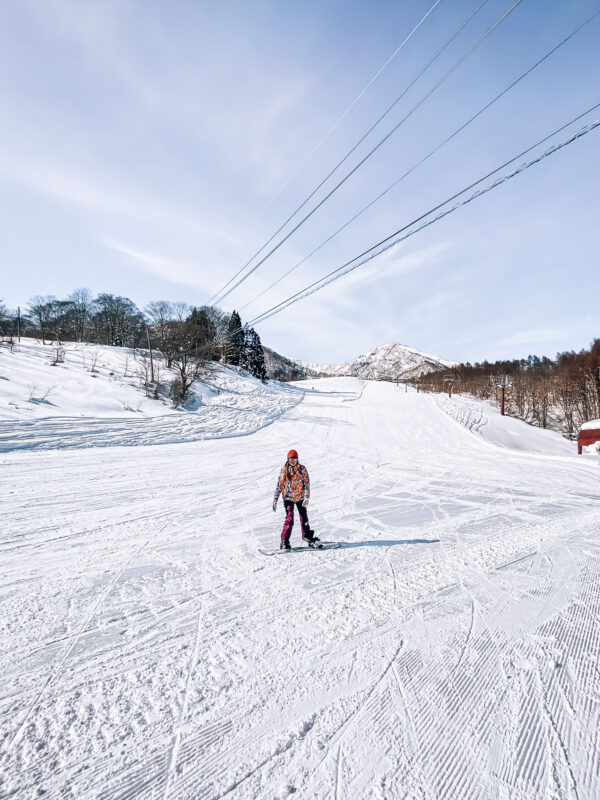
We spent the majority of the day on the west side of the Akusaka Onsen Ski area , where the Elegance and Downhill courses are located. These are green slopes and perfect for us to practice as we didn’t snowboard for years.
While on the second day, we headed to the eastern side where you have some beautiful green slopes such as the Karamatsu Course winding through the trees.
We also took for the first time a red slope , the Panorama Course , which turned out to be an fantastic experience with breathtaking views. It was absolutely fun and exciting until the lift stopped working, at which point we were no longer able to snowboard on the eastern side of Akasuka Onsen Ski resort.
So, we headed back to the western side to go down a few more times from the mountain. At the end of the day, we ended up in the Bear Hut for a Japanese aprés ski.

Day 5: Matsumoto Castle & Suganuma Village
Distance: 140km – 1h 50 (toll road) Where to stay: Hotel Torifito Kanazawa in Kanazawa
The Matsumoto Castle is the next destination and is about a two-and-a-half-hour drive from the hotel in Myoko-Joetsu. This castle was built in the early 1600s and it’s one of the most beautiful castles in Japan that’s still standing and in great condition.
However, the cherry blossom season is the best time to visit the Matsumoto castle, I loved the moody vibes during the winter . After walking around Matsumoto Castle, we drove to more than 40 tunnels and even to one of the longest ones in Japan with a distance of 11km to finally reach the Unesco World Heritage list village of Shirakawago, which was on my bucket list for years.
READ ALSO: 10 x the best places to see cherry blossoms in Fukuoka
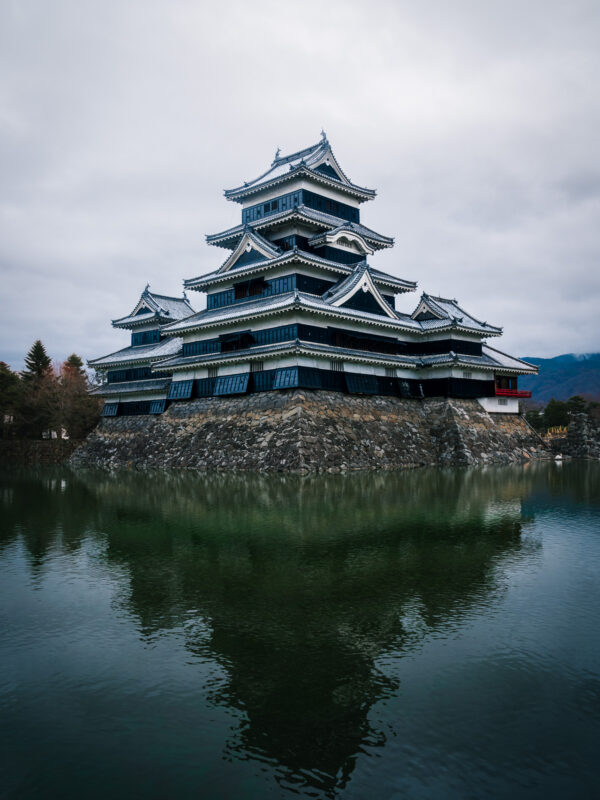
Shirakawago is well-known for its traditional farmhouses, or Gassho-Sukkur . Some cottages are over 200 years old and are still inhabited. When visiting the charming mountain village , you can also stay in these traditional houses , which is an unforgettable experience.
However, when we arrived, there was a light-up event , and we were not allowed to visit the village unless we had purchased tickets in advance . Instead, we drove to Kanazawa and along the way, you can find Suganuma Gasshozukuri Village , another Hida Folk village that looks like a smaller version of Shirakawago .
Although Takayama is also a good place to stay if there aren’t many accommodations available in Shirkawago, I had already been to Takayama in 2019 during my three-week trip to Japan and thought it would be more enjoyable to explore somewhere new.
BOOK: Join a guided day trip from Nagoya to Shirakawago and Takayama
TIP: Check in advance when the light-up event takes place and book tickets in advance
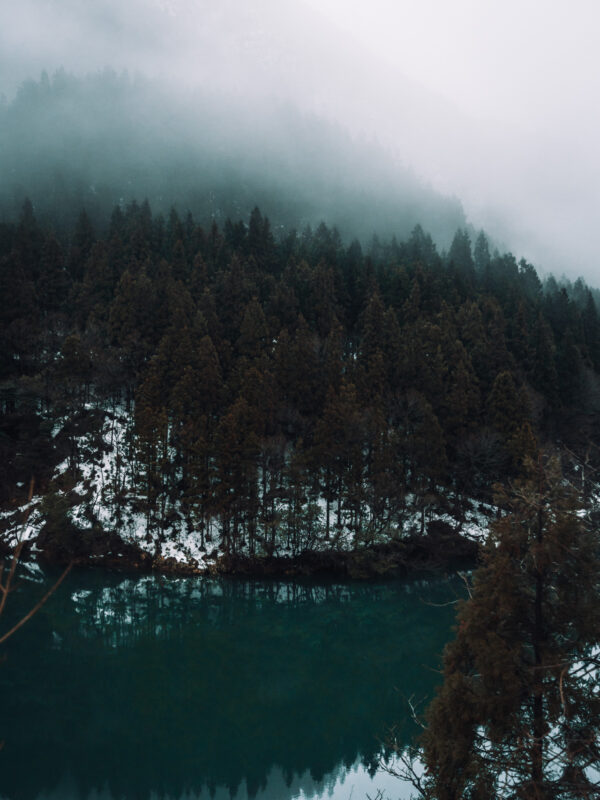
Day 6: Kanazawa and Shirakawago
Distance: 235km – 3h 40min (toll road) Where to stay: Meitetsu Inn Chita Handa Ekimae in Handa (Nagoya)
Since we did not have tickets for the light-up event that was taking place in Shirakawago, we were not permitted to enter the village, and we ended up driving to Kanazawa instead.
Surprisingly, this town turned out to be quite pleasant, and the following day we spent exploring the Higashi Chaya and Kazuemachi Chaya Geisha Districts and strolling through the Omicho Market .
Although the Kanazawa castle seems to be well worth visiting, we didn’t have time because we wanted to return to Shirakawago to see the charming houses.
TIP: The light-up event in Shirakawago is only a few weeks during the winter in Japan and you MUST buy tickets in advance if you wish to visit the village during these days. Check the official website for the most updated info .
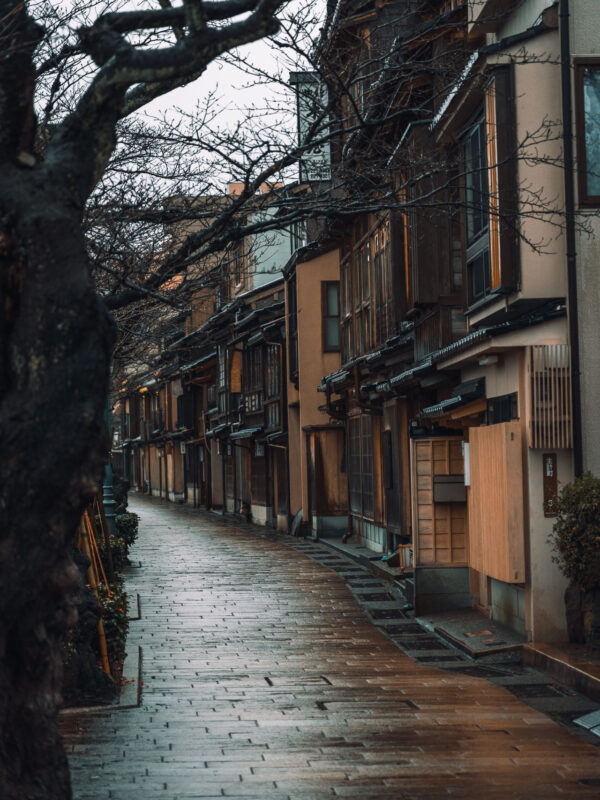
There is a beautiful viewpoint at the top of the hill that you should not miss, as this is the famous view that you will find on almost every postcard or website . Obviously, it’s even more exciting with the illumination event, so it’s highly recommended that you purchase your tickets in advance and don’t make the same mistake as us.
When you arrive at Shirakawago, the best place to start exploring the village is from the Seseragi Park Parking Area , where you can easily cross the bridge and find yourself in the center of the village.
Many of the village’s restaurants, souvenir shops, cafés, and other establishments can be found along the main road however, along the tiny side roads, you can explore much more of the adorable village.
We spent a few hours just walking around and taking some photos before heading to Nagoya, where Nao’s friend lives, and invited us to have dinner at her partner’s restaurant.
BOOK: Visit Shirakawago during a guided day trip from Nagoya
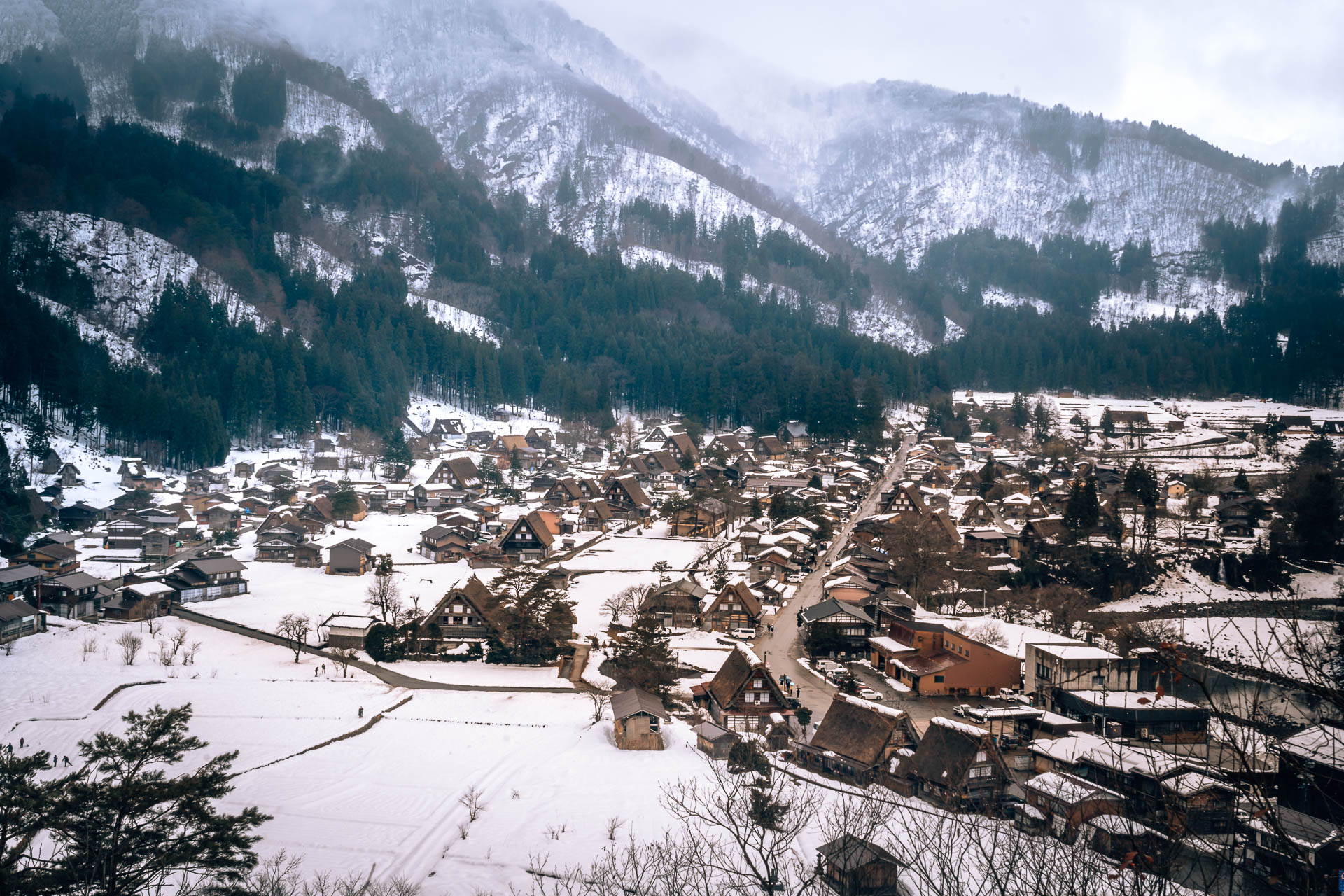
The drive from Shirakawago to Nagoya takes about two and a half hours , and since we arrived in Nagoya with plenty of time to spare before being expected at the restaurant, we went to see the magnificent Nagoya Castle .
Although the castle was already closed when we arrived, the stunning architecture and the sunset in the background were still breathtaking from the outside of the grounds.
A bit further on, we discovered a unique spot thanks to social media, and it pleasantly surprised both of us. A bookshop in a shopping mall with a glass ceiling that creates a beautiful symmetry . A perfect place for photographers and worth a visit if you are into books.
Our fantastic day came to an end with a delicious dinner with Nao’s friends at Yamikuro , a mix of a Japanese Izakaya and a Brooklyn Lounge bar .
TIP: Find here the exact location of the bookstore in Nagoya
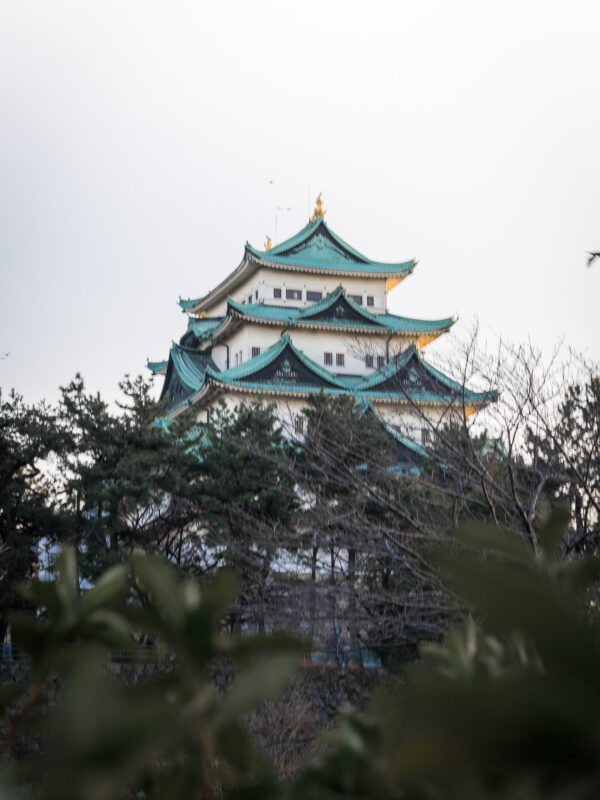
Day 7: Nagoya to Mount Fuji
Distance: 250km – 3h 50min (toll road) Where to stay: Royal Hotel Kawaguchiko in Fujikawaguchiko
Near the hotel is a neighborhood known for its traditional ceramics shops and unique works of art , called the Tokoname Pottery Path . It is an interesting activity and neighborhood to explore if you are into crafts and art. The alleys and walking paths are marked with numbers , so you can make your way around in a little over an hour.
While driving to Mount Fuji, just before reaching the highway in Nagoya, we passed a massive Buddha statue and decided to take a closer look. It turns out to be one of the largest Buddha statues in Japan .
The Great Buddha of Shuurakuen stands 30 meters tall and is unquestionably worth a visit as you can take in some breathtaking views and enjoy the park’s laid-back ambiance from a higher point of view. Ideal for a morning walk.
TIP: The Tokoname Pottery Pathis closed on Mondays.
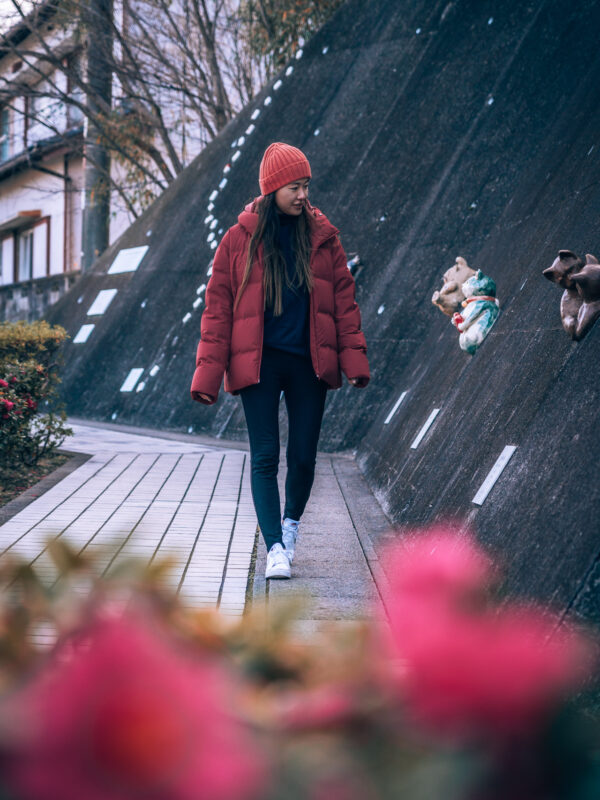
After nearly three hours on the road, the top of Mount Fuji begins to appear from the surrounding mountains in the distance. What an stunning view!
The hotel, we are staying at is located in the village of Fujikawaguchiko, however, we decided to make a detour and stop at the enchanted Shiraito Waterfalls and the powerful Otodome Falls . Glad we did as there is no doubt that these are among the best waterfalls in Japan to explore.
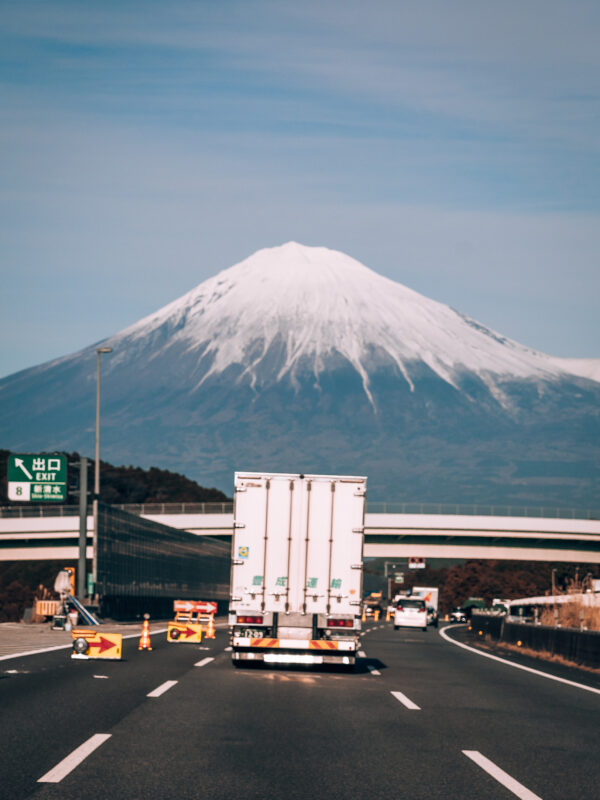
After a long day of exploring, you can unwind in one of the many onsens in the region of Mount Fuji as most hotels and ryokans also have their own hot springs with water from a natural source.
We stayed at the Royal Hotel Kawaguchiko , which was situated directly on the shore of Lake Kawaguchiko , making it an excellent location from which to view the sunrise the following morning.
Even though we were only able to spend one night in this location, you can very easily spend a few days taking in the breathtaking landscapes that surround Mount Fuji as it is one of the best places to visit in Japan .
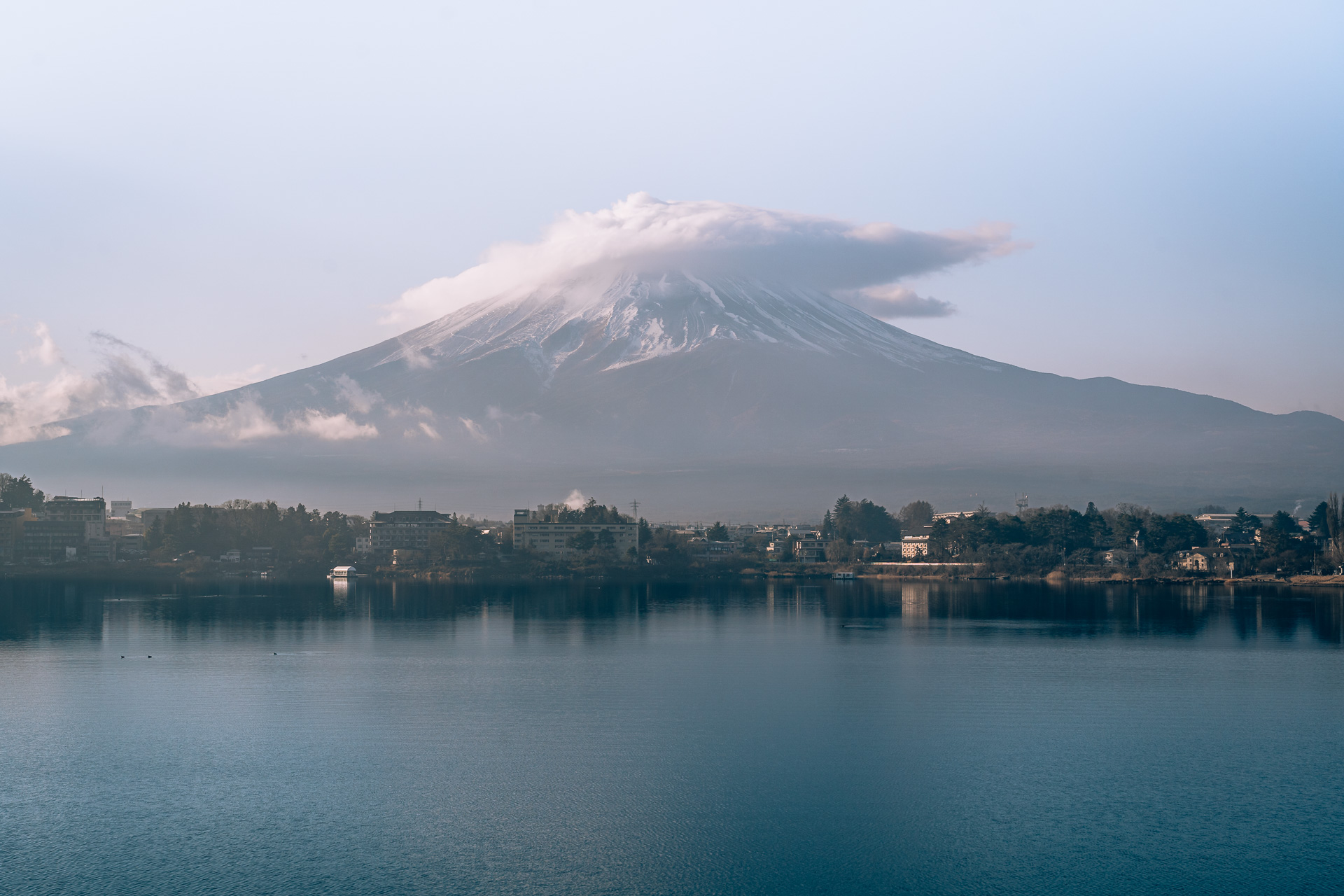
Day 8: Mount Fuji
Distance to Narita Airport: 180km – 2h 30min (toll road)
The sunrise was remarkable because the clouds gradually moved away from Mount Fuji , leaving behind only kind of a “hat shape” at the peak of the mountain. Also called lenticular clouds, which is a beautiful phenomenon!
When you are planning a trip to Mount Fuji there are several villages where you can stay and explore, such as Hakone of Fujikawaguchiko , I have been to Fujikawaguchiko twice and really love the atmosphere and the many sights around these villages.
In the morning, we made a stunning time-lapse video at Lake Kawaguchiko of the clouds moving away from Mount Fuji at sunrise, while the Chureito Pagoda and the Kawaguchi Asama Shrine are some of the best places to admire the beauty of Mount Fuji.
Unfortunately, our flight to Fukuoka left in the early evening, so we had to leave and drop off the rental car at the airport in the afternoon.
BOOK: Visit Mount Fuji and Lake Kawaguchiko during a day trip from Tokyo
READ ALSO: The best 5-day Tokyo itinerary – Tokyo guide
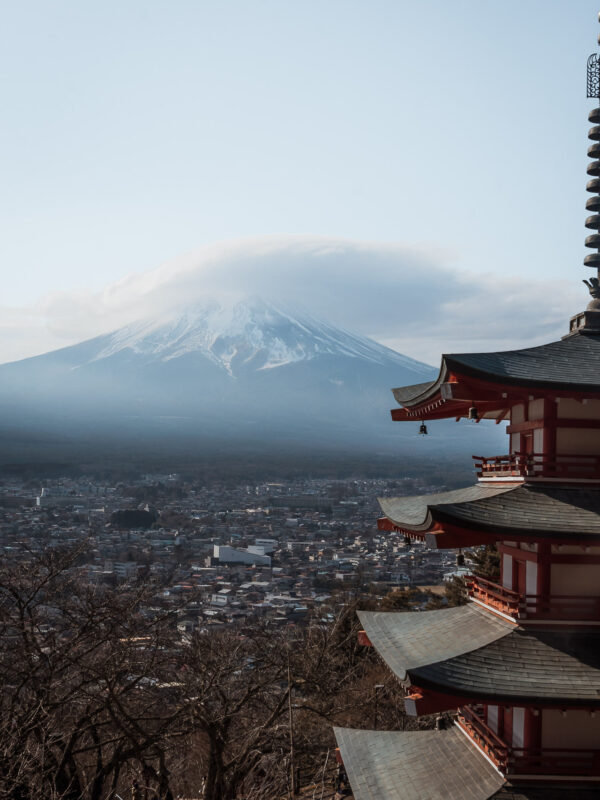
This 7 days in Japan itinerary is perfect for those who have visited the country before or who want to see the beautiful winter in Japan in a unique way by escaping the hustle and bustle of the larger cities like Tokyo and Osaka.
However, if it’s your first time, I highly recommend reading my Japan in 3 weeks itinerary with some of the best highlights of the country.
You can ask questions or add helpful details about the trip in the comments section.
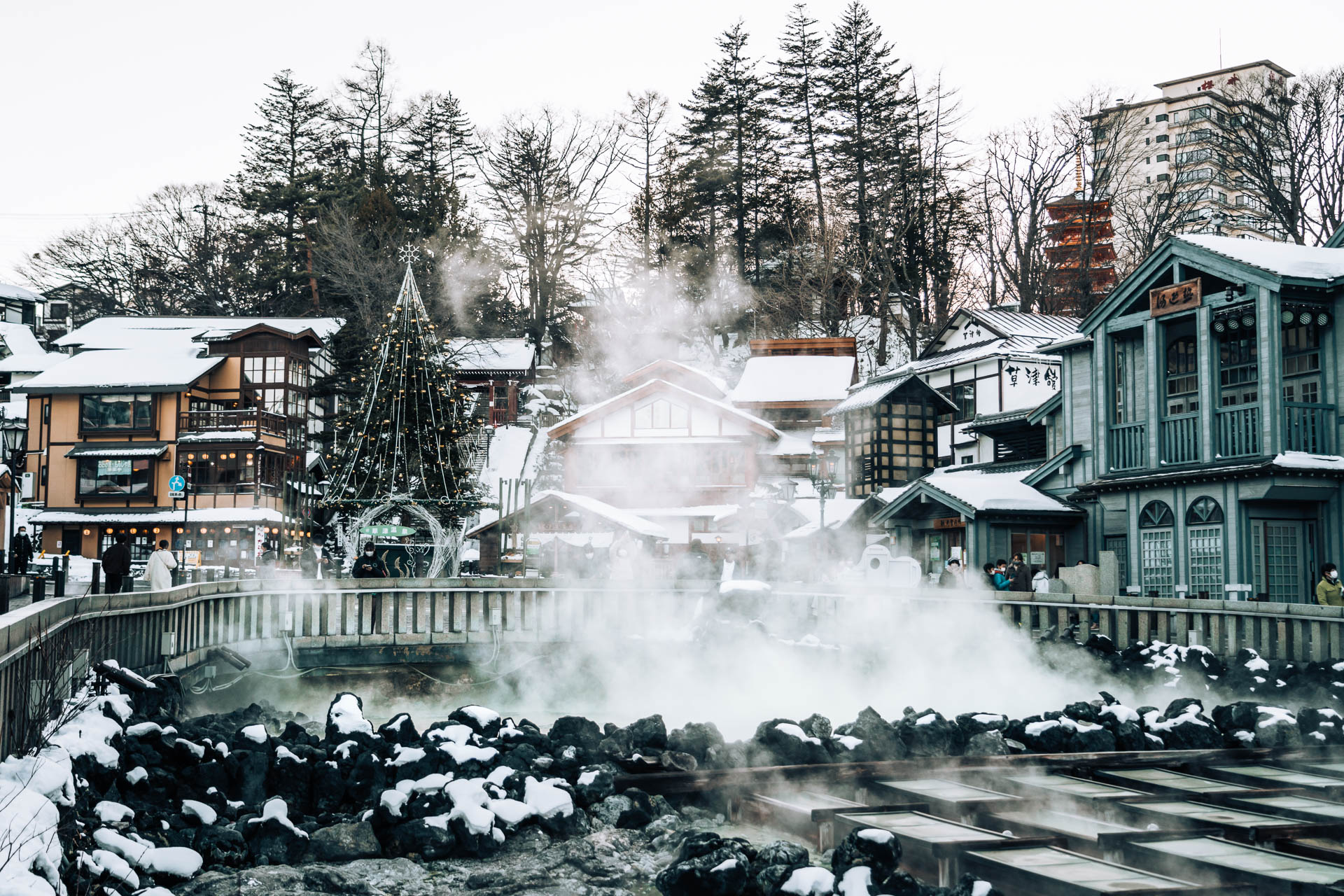
Save these pins for later
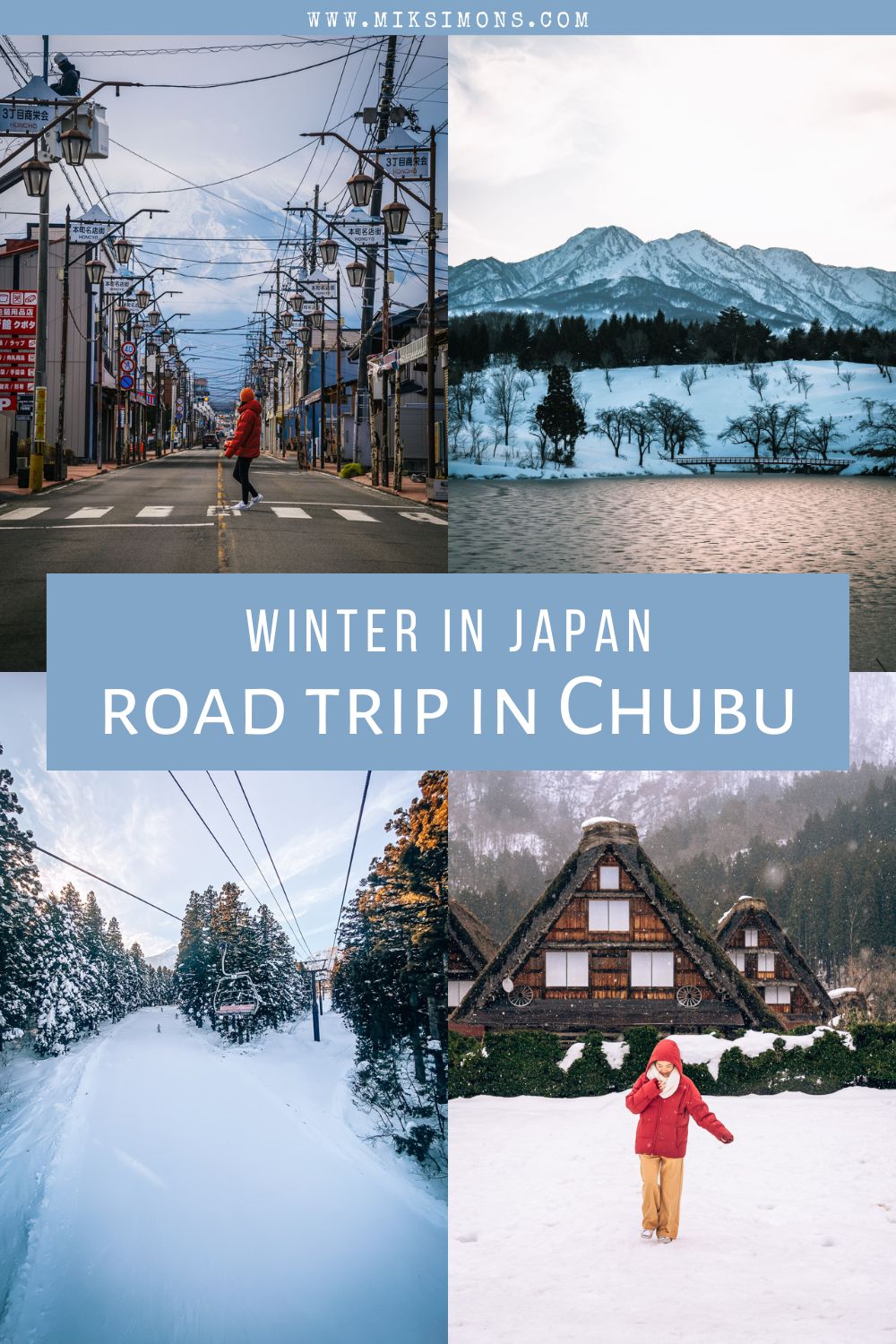
Read more articles about Japan
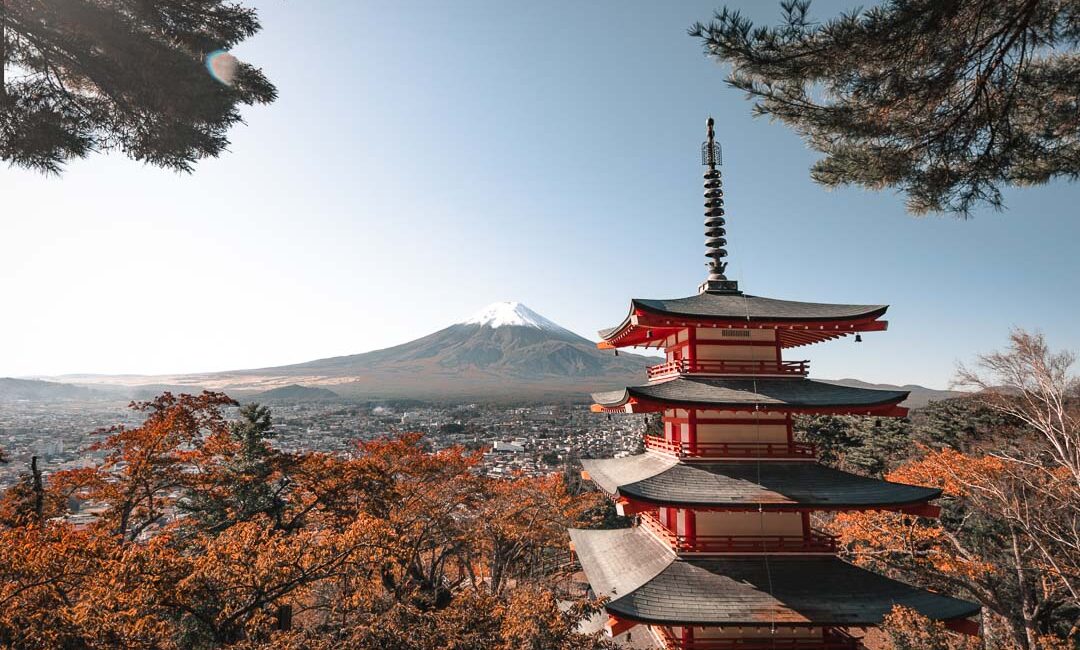
21 Best hotels in Japan
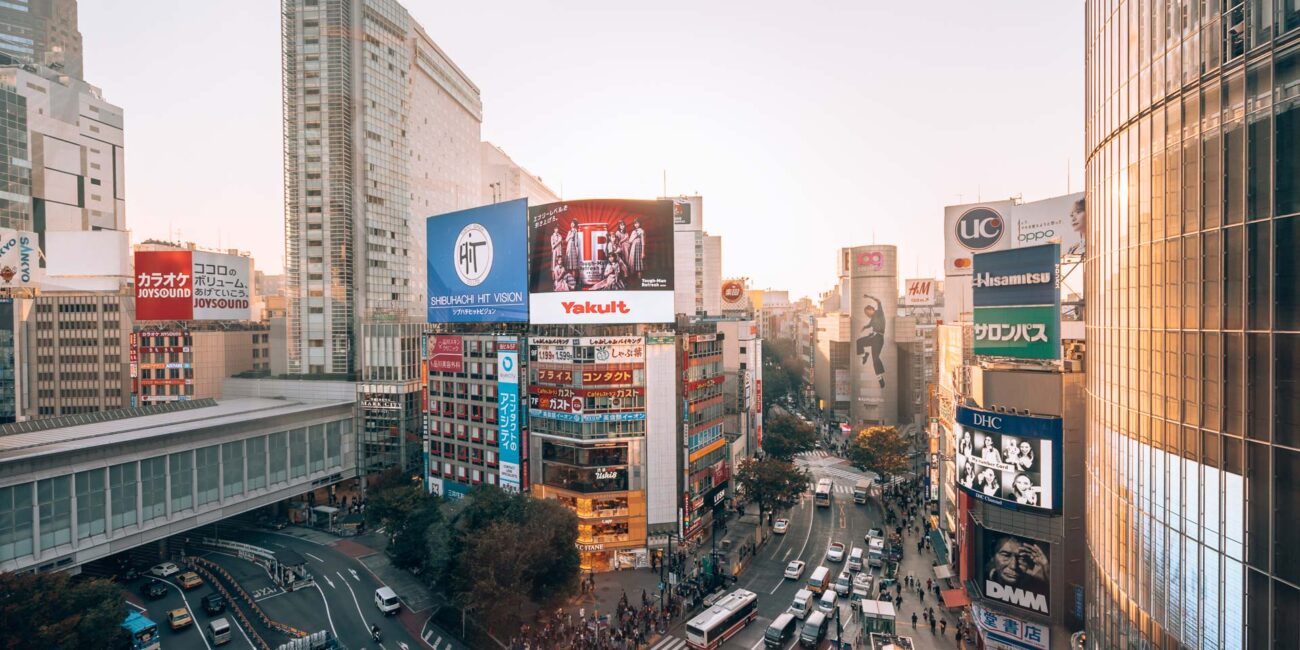
The best 5-day Tokyo itinerary – Tokyo guide
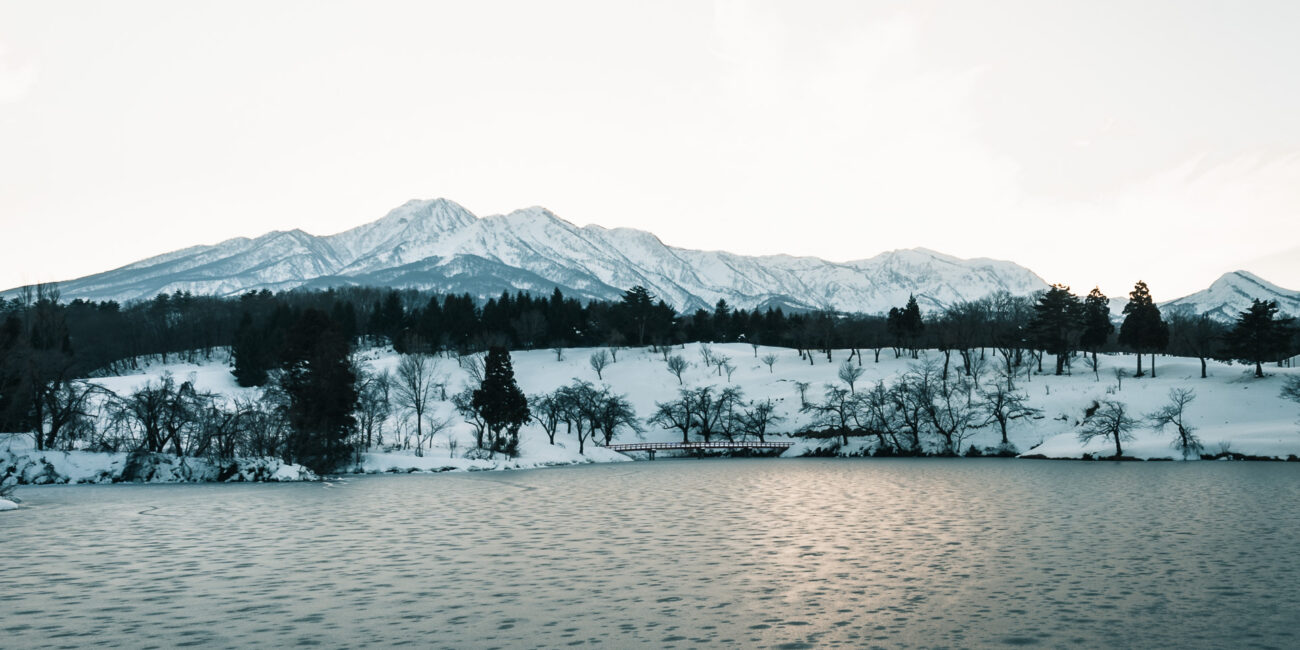
How much does a trip to Japan Cost? Japan on a budget
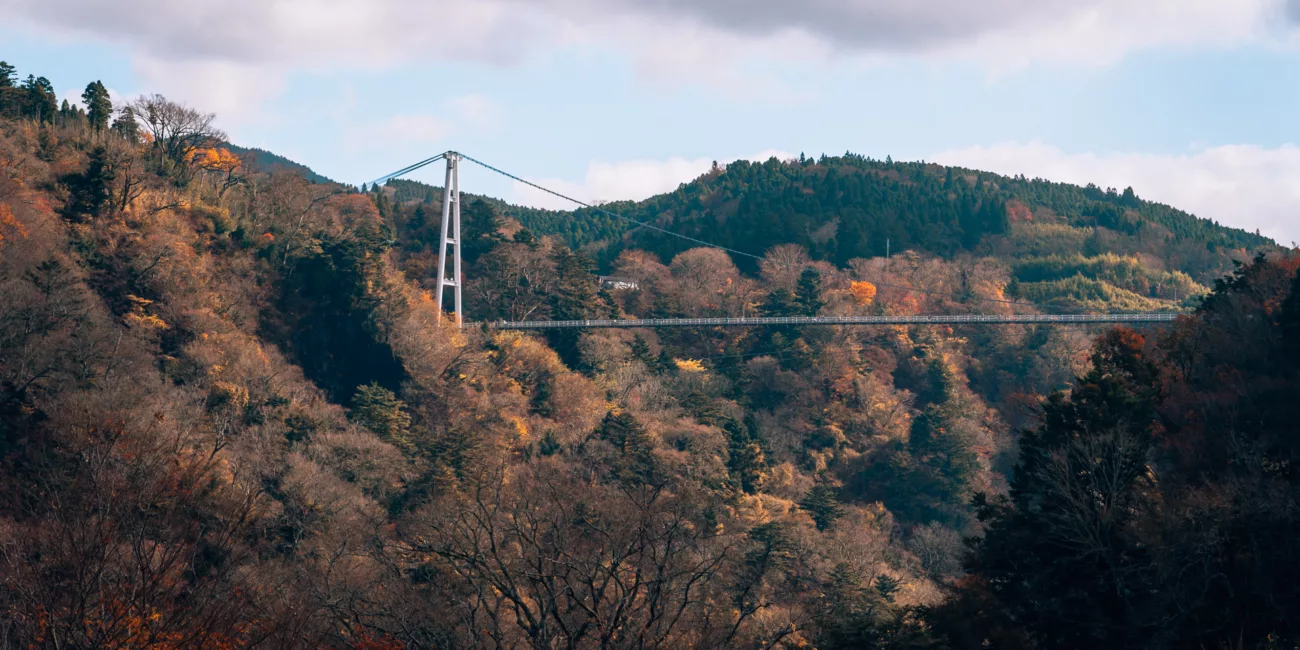
The perfect 4 days in Kyushu: a road trip during autumn in Japan
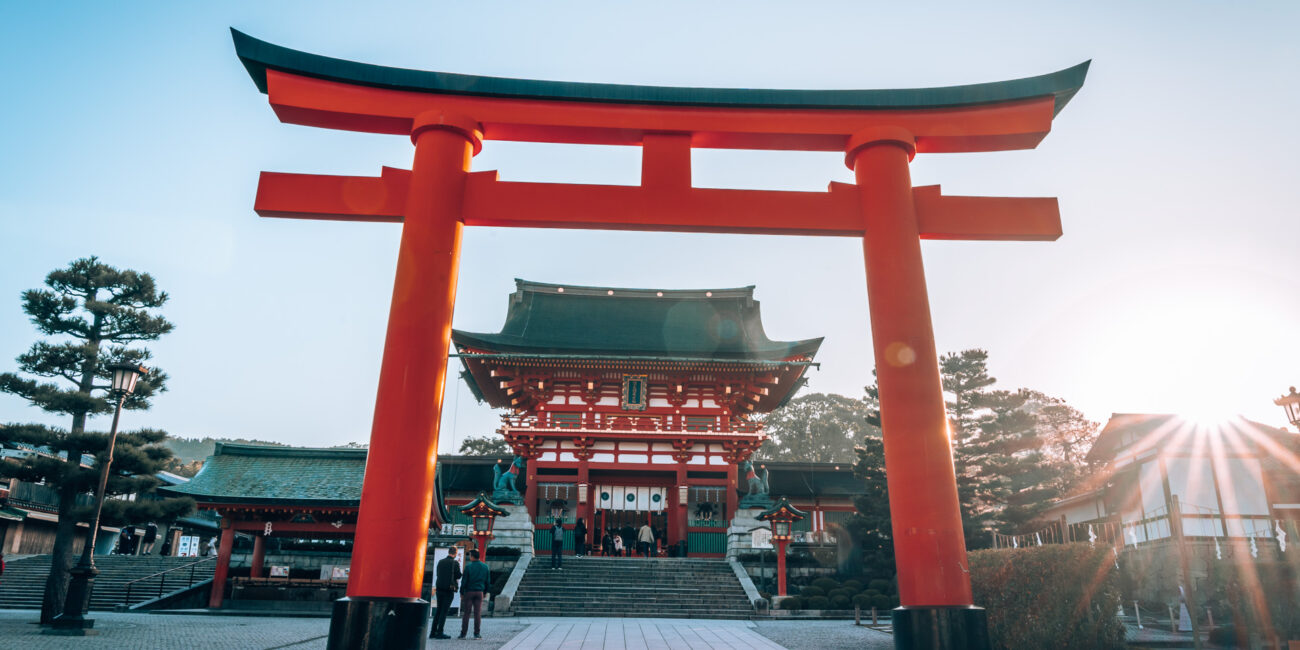
18 x the best things to do in Kyoto
Plan your japan winter road trip with my favorite travel apps.
To plan my adventures, I use these FREE websites and apps as they provide the best information, the best deals, and they are user-friendly.
- Trip – Flight deals
- Booking.com – Hotels and accommodation
- TourRadar – Group trips
- TripAdvisor – Reviews and activities
- HostelWorld – Hostels
- GetYourGuide – Activities and excursions
- RentalCars – Car rental
- Omio – Transport
- iVisa – Travel documents
- Wise – Money transfer
- InsuredNomads – Travel Insurance
PICTURES AND EDITING
All the pictures on this page are made and owned by me. If you are interested in some pictures to use for your magazine, website, blog, or any other purpose, just send me an email and we’ll figure it out.
Do you like the edits? My Presets will be online soon so you can edit your pictures in just one click!
The camera gear I used for this trip
I never go out without my camera and many people ask me which gear I use. So to make it quite easy, I listed all the gear I used for this trip below.
Most of the time, I travel with the Sony A7III and the Sony 24-105mm/f4 as my primary lens but depending on the location, I change to another setup. However, I love the Tamron 17-28 to shoot in the big cities.
- SONY 24-105mm/f4
- TAMRON 17-28mm/f2.8
- TAMRON 70-180mm/f2.8
- SIGMA 24mm/1.4
- DJI MAVIC PRO 2
- WANDRD PRVKE TRAVEL BAG
Related Posts
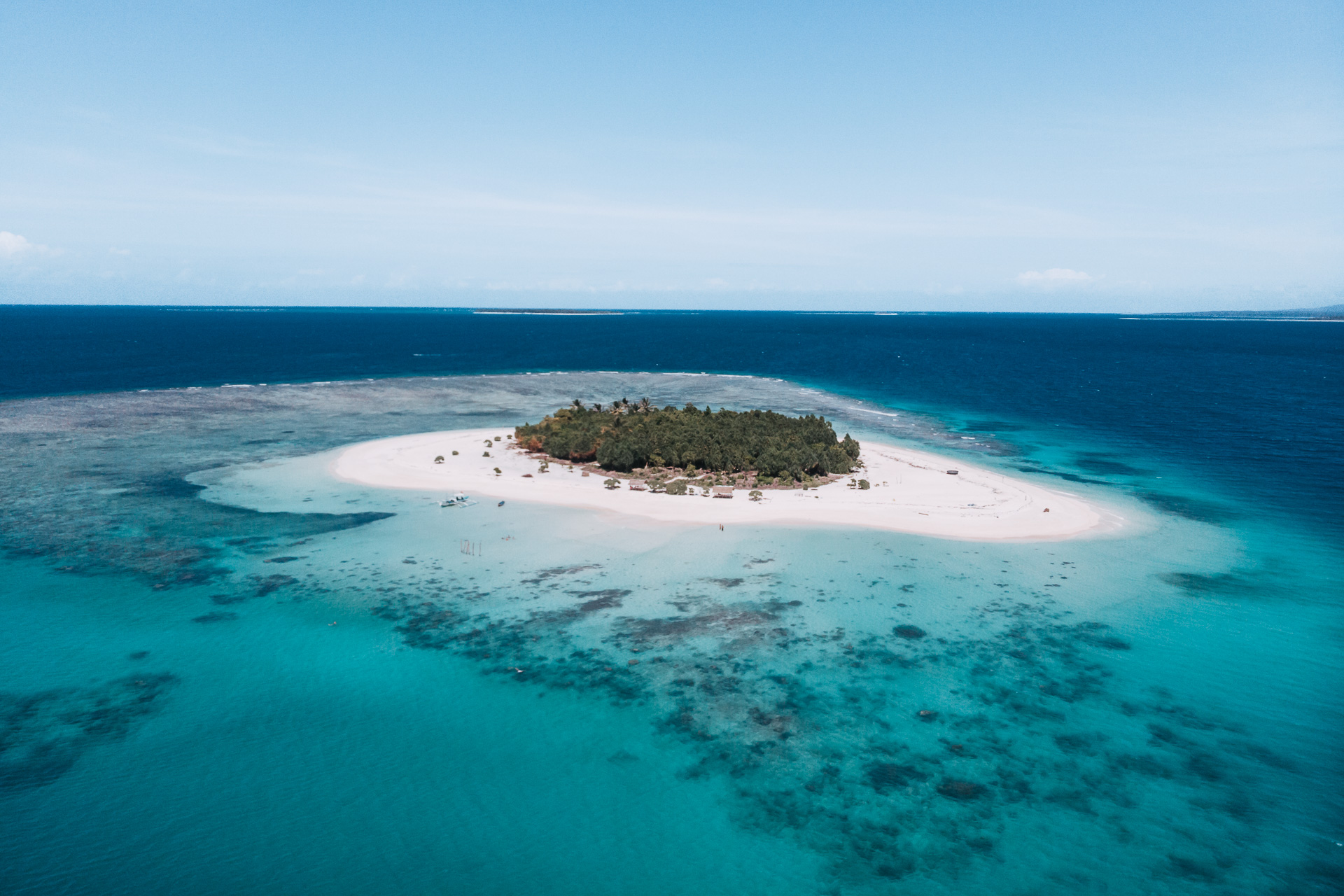
Balabac Palawan: The perfect 4-day adventure in the Philippines
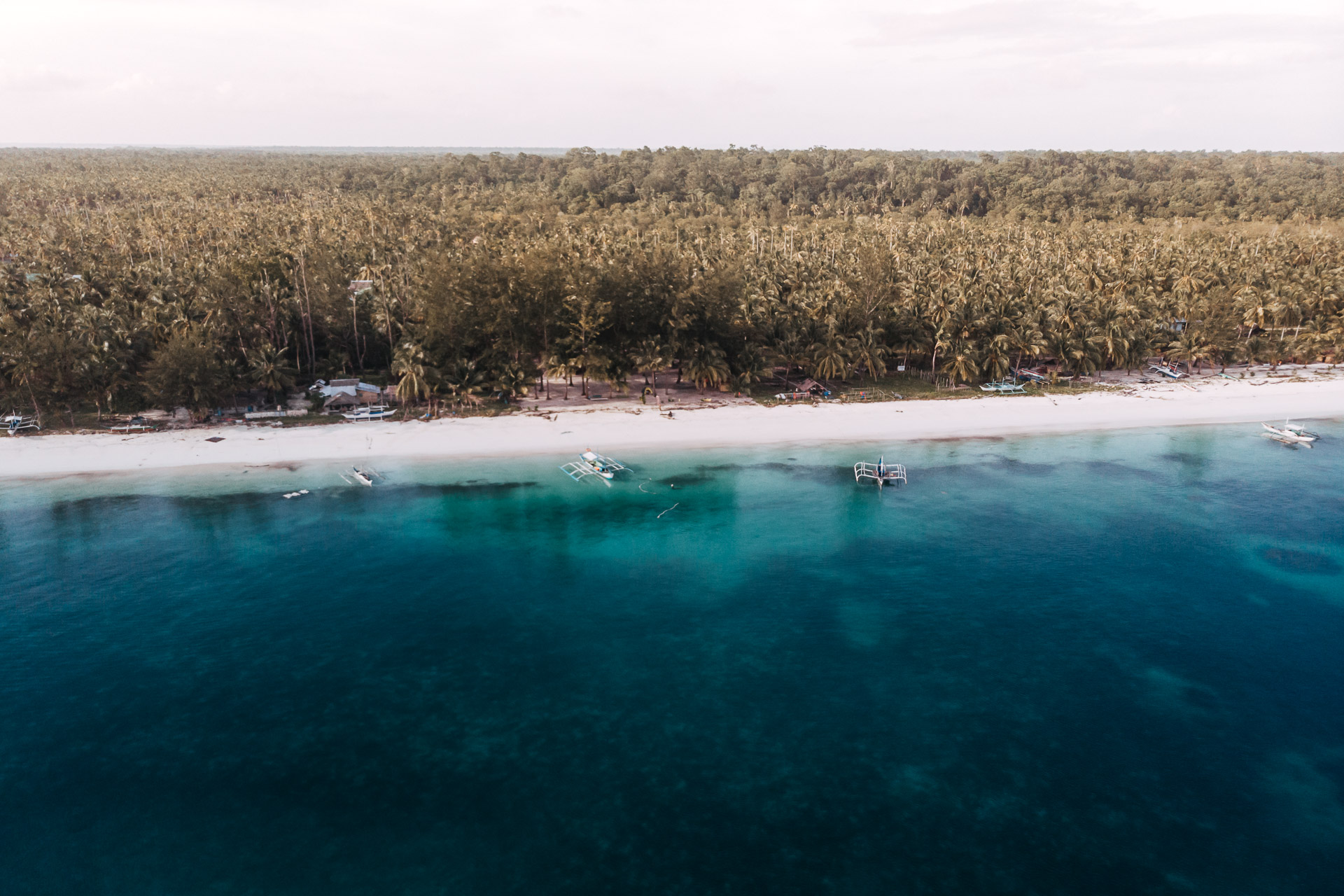
The perfect 3 week philippines itinerary
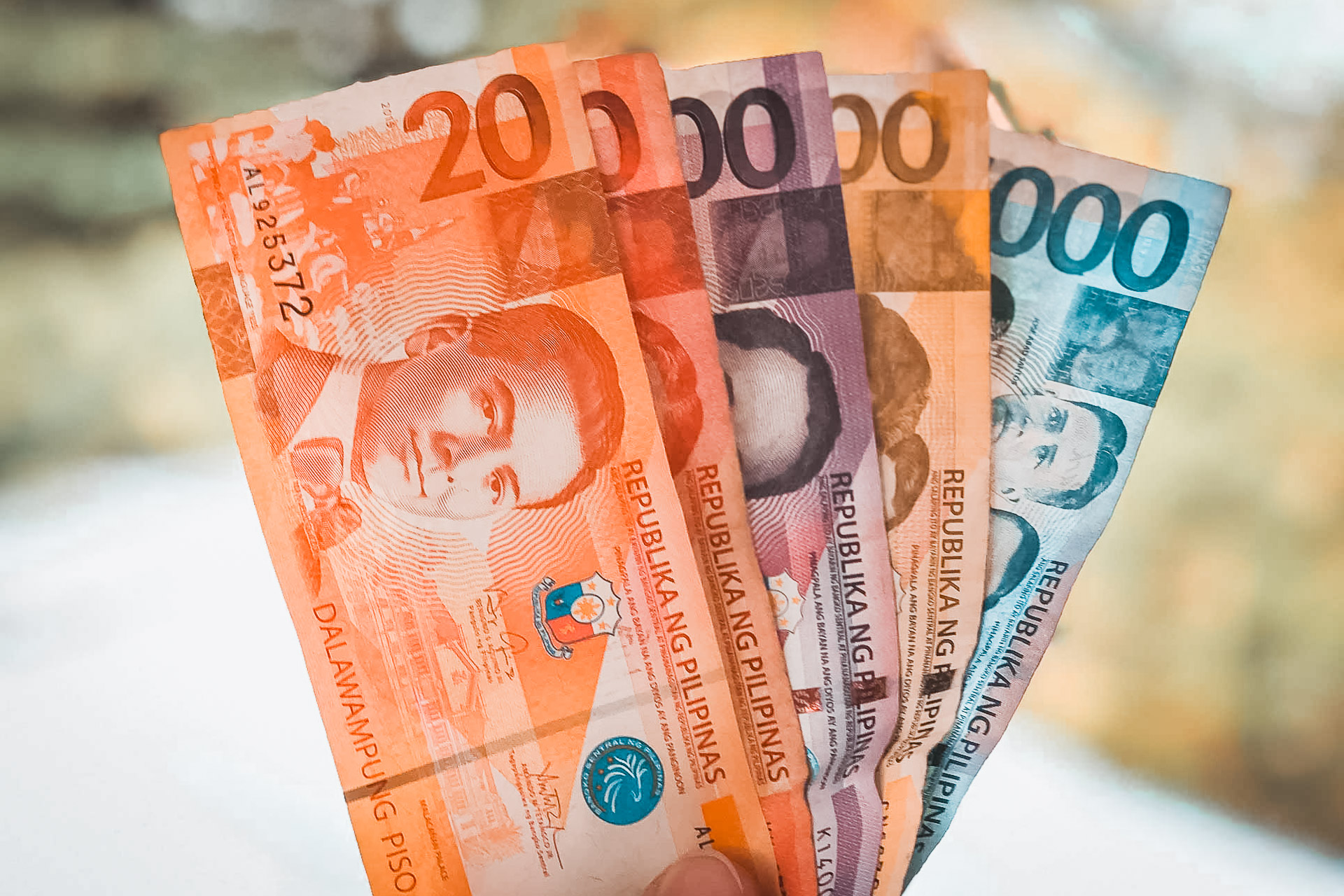
Travel the Philippines on a budget: Complete cost breakdown
Post a comment cancel reply.
Save my name, email, and website in this browser for the next time I comment.
We earn a commission for products purchased through some links in this article.
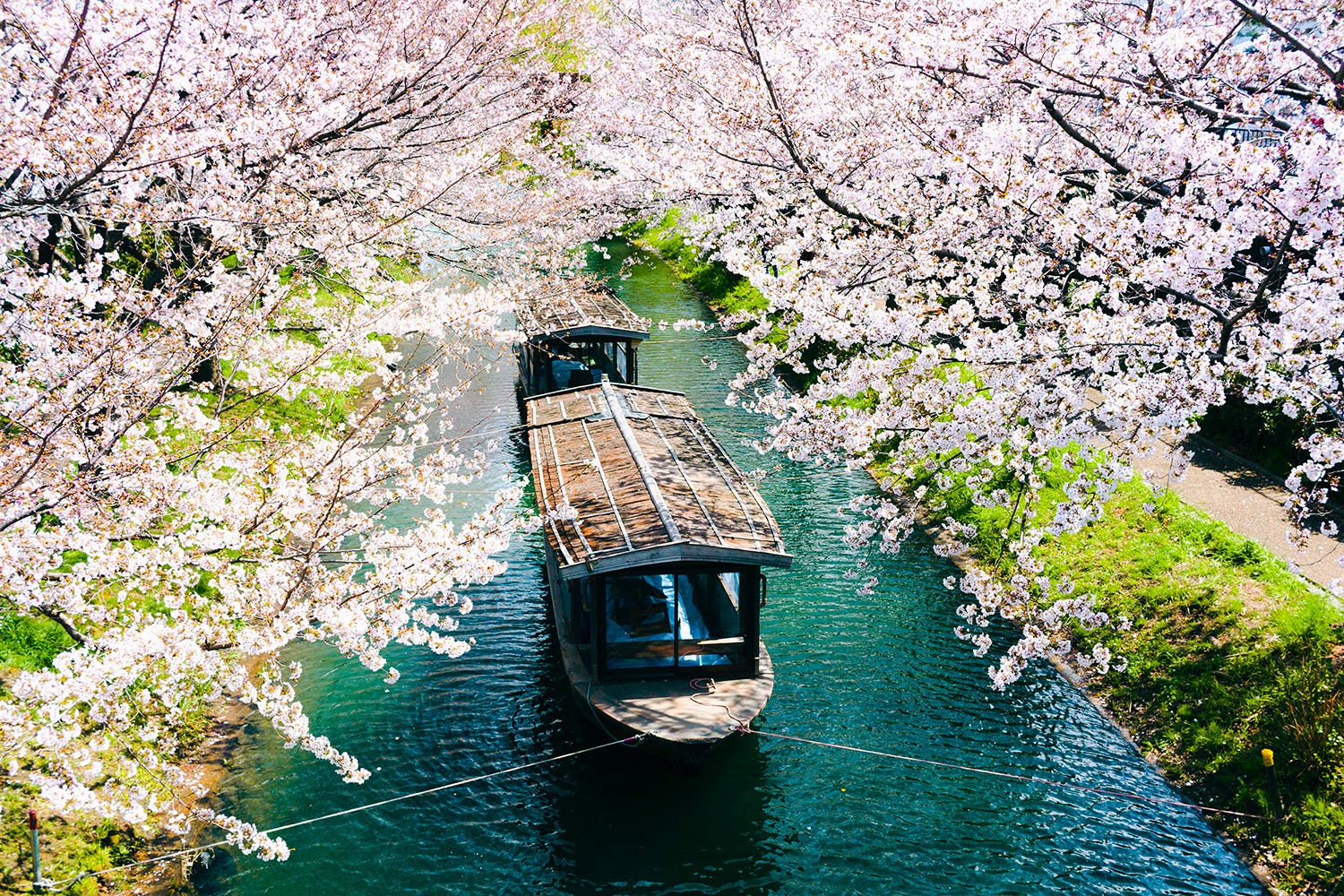
12 of the best places to visit in Japan
From Tokyo to Yokohama, these are the Japanese destinations to tick off your bucket list
There's plenty to see and do in Japan - from staring at the bright lights of Tokyo to finding peace in the scenic Japanese Alps . Many will agree that one of the best times to explore Japan is during the cherry blossom season . Its spectacular spring-time displays can be enjoyed around the country and are celebrated with picnics in the parks and seasonal parties.
While Tokyo and Kyoto are two of the most popular places to visit Japan (and rightly so as they are also some of the most beautiful destinations), there are many places beyond these hotspots, whether it's Japan's cities, islands or mountains you want to explore.
A cruise to Japan is an excellent way to visit multiple regions on one trip and can take you to some undiscovered places. If you're planning ahead for Japan's sell-out cruises, you'll want to check out Good Housekeeping's incredible spring 2025 sailing during the cherry blossom season . It's perfect for getting to know the lesser-known, underrated places, such as Niigata and Toyama.
For any traveller who has always dreamed of visiting Japan, now is the time to get planning and to help inspire your next trip, we've rounded up the best places to visit in Japan in 2024 and beyond.
Check out our favourite Japanese destinations below and visit the Japan National Tourism Organization website for more ideas on places to go.
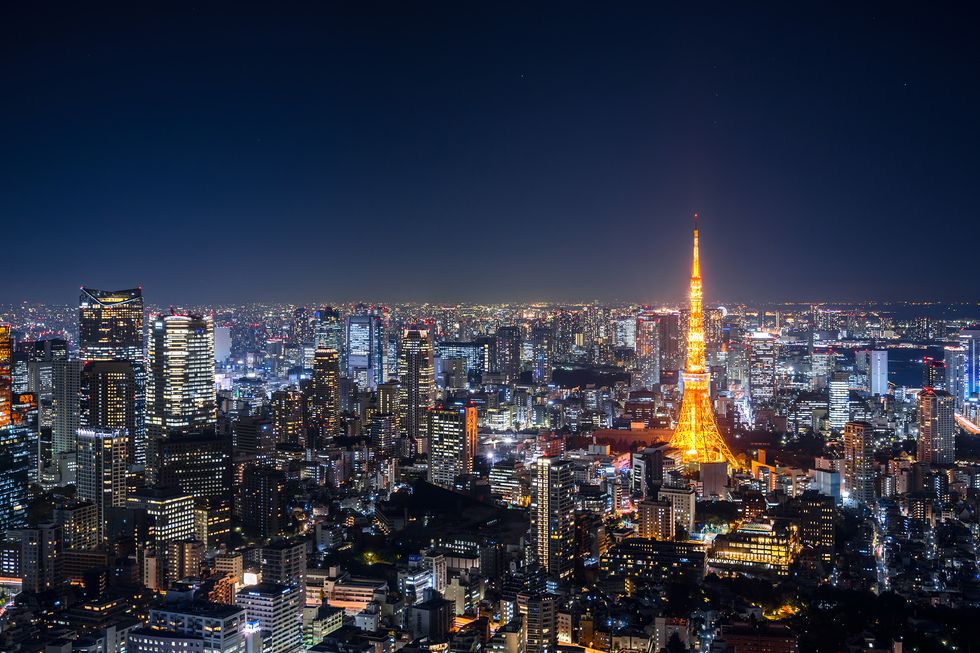
The first stop for many foreign tourists is Japan's vibrant capital and it's not hard to see why. The world’s most populous metropolis, Tokyo offers tradition and innovation, and unlimited opportunities to eat, shop and explore.
Located on Tokyo Bay in the Kanto region of Honshu, Tokyo is known for its fashion and shopping, from the trendy shopping districts of Harajuku and Shibuya, to the luxury flagships of Ginza. Want to know where to go? Shinjuku is a thriving business district; a mix of gleaming skyscrapers and atmospheric back streets with tiny bars. Asakusa is the heart of Tokyo’s downtown, with ancient temples and traditional stores.
Tokyo is a foodie's paradise too, with more Michelin-starred restaurants than any other city in the world, along with hundreds of cheap and delicious ramen shops. You'll want to explore Tokyo's dizzying array of restaurant and dining options, from themed cafés to haute cuisine.
EXPLORE TOKYO ON A 2025 JAPAN CRUISE

Japan’s second largest metropolitan area after Tokyo, Osaka is renowned as one of the most multicultural and cosmopolitan cities in the country. It's only a short shinkansen ride from Tokyo, making it a great place to visit in Japan if the capital city is your base. Visitors can step off the bullet train and into a bright and enticing city. Osaka Castle is a must-visit and home to beautiful grounds you can wander through, especially during the cherry blossom season when the spectacular blooms appear.
You'll want to explore other areas in the city too, including the neon lights of Dotombori Bridge and Osaka’s Minami area. Foodies can indulge in the famous culinary delights found in neighbourhoods such as Tenma and Ura Namba. Okonomiyaki, a savoury pancake made with shredded cabbage, flour, egg and dashi is either cooked at the table for diners or left for you to cook yourself.
Discover Osaka during a 17-day cruise holiday to Japan in spring 2025, when you might witness the spectacular cherry blossom displays in the city.
FIND OUT MORE
OSAKA HOTELS
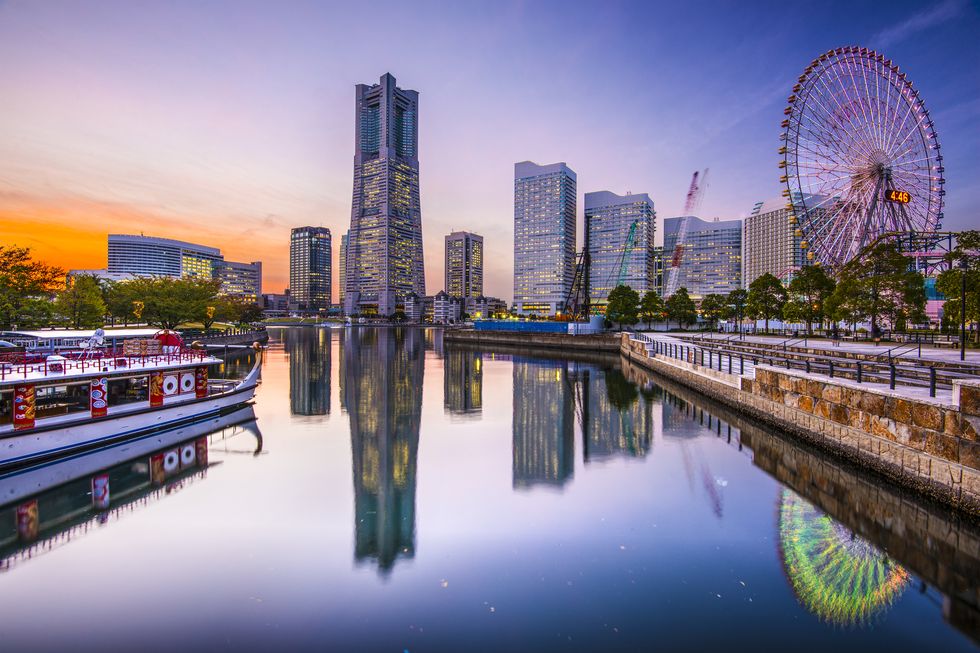
The capital of Kanagawa prefecture, Yokohama grew from a small fishing village during the Edo Period into Japan’s second largest city. A popular city among expats, Yokohama is also home to one of the world’s largest Chinatowns, and preserves some former Western residences in the Yamate district. While here, you must visit one of the city’s traditional and serene Japanese landscape gardens, Sankeien Garden, where you'll find winding trails set among historic buildings.
Another highlight is the bustling new city centre, Minato Mirai, which sits along the water. There's something for everyone here, from shopping centres and an amusement park to museums and relaxing hot spring baths.
Visit Yokohama on the last day of Good Housekeeping's cruise around Japan during the cherry blossom season in 2025.
YOKOHAMA HOTELS
Japanese Alps
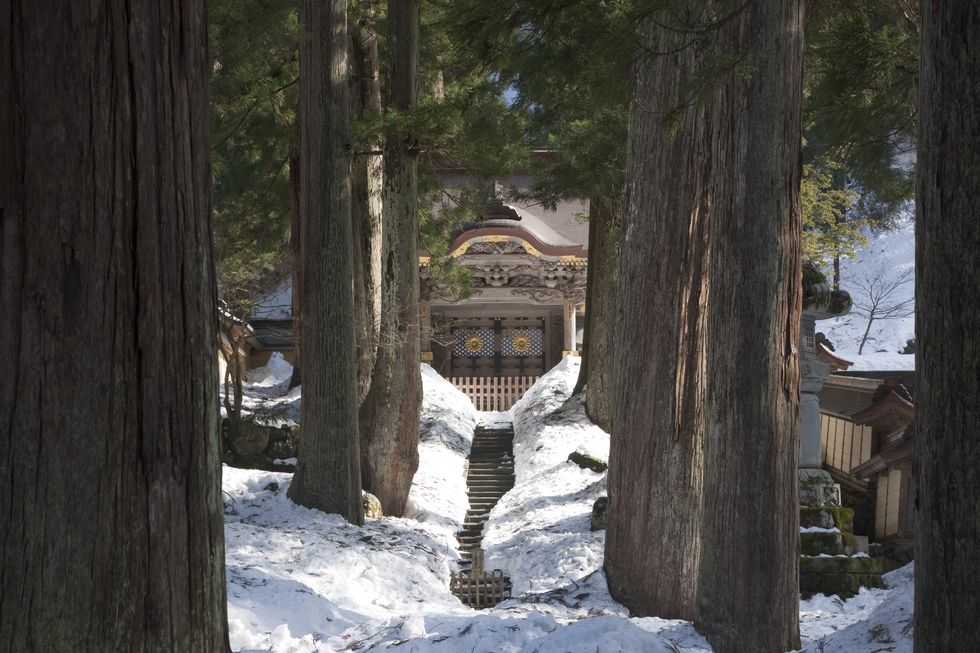
The Japanese Alps are a series of spectacular mountain ranges in central Honshu, which are perfect for those who wish to escape the buzz of the country's most popular cities. Think thick pine forests, snow-tipped peaks and teal rivers. Only two hours from Tokyo, this natural paradise offers an excellent place to explore rural Japan.
The Alps are just the place for climbers, skiers, hikers and nature fans. Yamanaka Onsen is set in the mountainous area of Kaga Onsen, situated along a beautiful gorge. The hot spring resort is not only a top-spot for wellness but for traditional crafts – it's Yamanaka lacquerware has a 400-year history in the region. You can discover the contemplative heart of Zen Buddhism's Soto sect at Eiheiji (pictured), a massive temple complex just outside the city of Fukui. Built by the Buddhist monk Dogen (1200-1253), it has over 70 buildings set amid cedars in the mountains.
Meanwhile, the city of Kanazawa offers rich cultural heritage and a history of artistic innovation and excellence. One of the most important centres for culture and art during the Edo period, it remains a superb place for art lovers and culture enthusiasts.
KANAZAWA HOTELS
See the stunning Japanese Alps on a Good Housekeeping tour from Tokyo to Osaka in 2024 or 2025.
EXPLORE THE JAPANESE ALPS
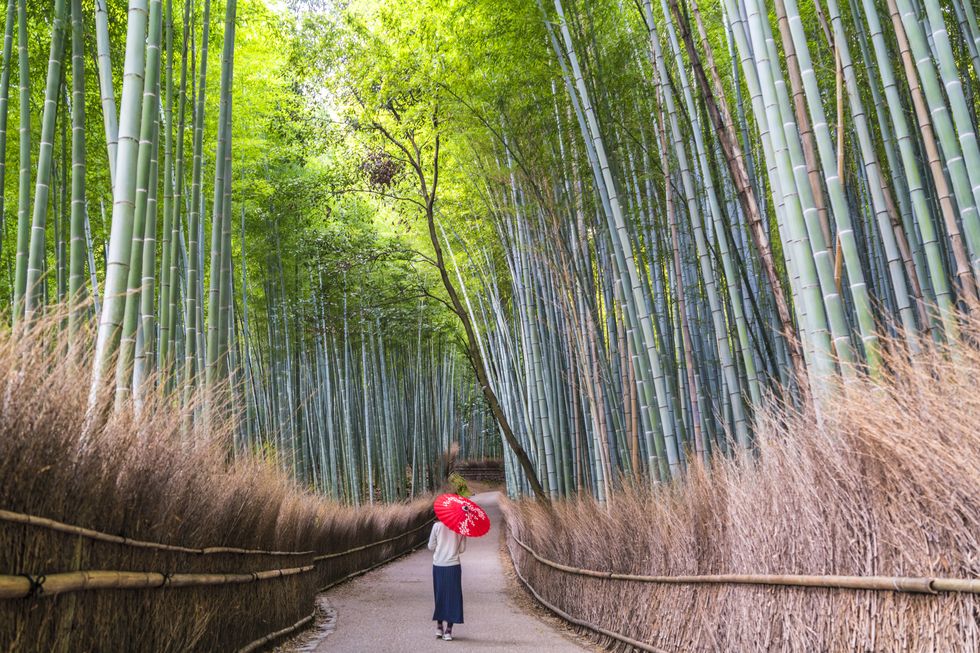
Ancient temples, traditional teahouses and peaceful gardens: Kyoto is all about exploring historic Japan. A city of nearly 2,000 temples and shrines, it's Japan's spiritual heart and a true embodiment of Old Japan. Beyond the futuristic Kyoto Station, modern shopping complexes and sleek luxury hotels lies a city with celebrated centuries-old wonders, breathtaking temples and serene Zen gardens.
Kyoto effortlessly blends the past and present and is a must-see destination for history buffs, art lovers and outdoor enthusiasts.
While here, you'll want to visit the grand temples, shrines, palaces and gardens in and around the city. Be sure to dine on delicious multi-course kaiseki cuisine and stay in a traditional ryokan (Japanese inn), too.
Visit ancient Kyoto as part of our Good Housekeeping 13-day tour across the Japanese Alps.
READ MORE ABOUT OUR JAPAN TOUR
KYOTO HOTELS
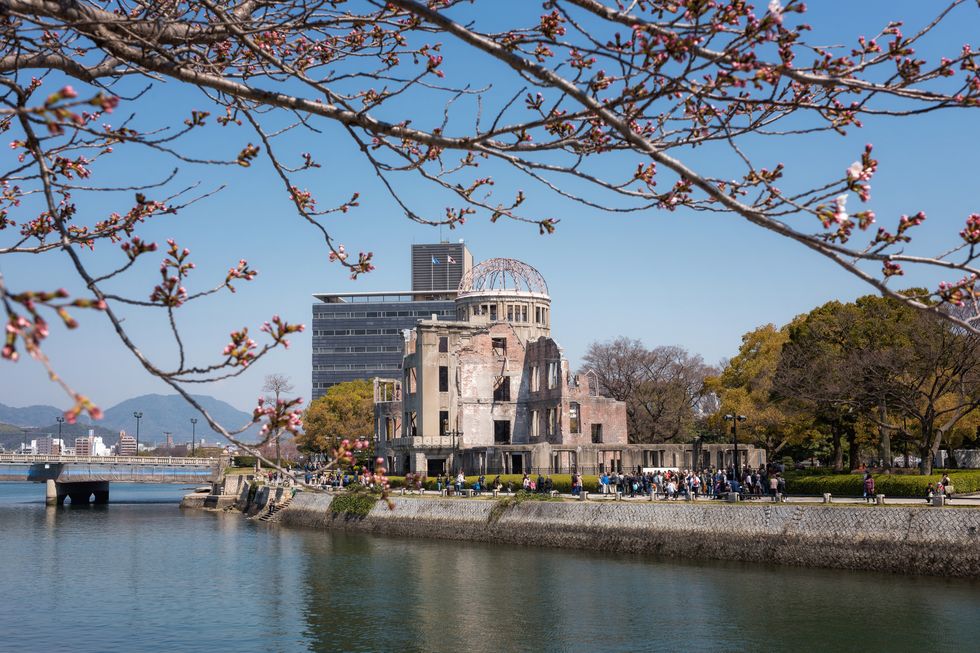
The vibrant city of Hiroshima has a complicated history, great food and friendly locals. While it's probably most famous for being devastated by a nuclear attack during World War II, Hiroshima as a city promotes peace and understanding.
Every year on 6 August, a memorial service is held to commemorate the victims of the 1945 attack. Thousands write messages of peace on paper lanterns that are lit at sunset to float down the river past the iconic remains of the Atomic Bomb Dome.
During a visit, be sure to check out the Peace Park and Atomic Bomb Dome. You should also taste Hiroshima's version of okomiyaki, a local delicacy. Another highlight is going to nearby Miyajima to see its deer and picturesque floating shrine.
Explore Hiroshima during a 2025 spring-time cruise to Japan, where you'll have time to visit the war memorials, shrines and temples.
HIROSHIMA HOTELS
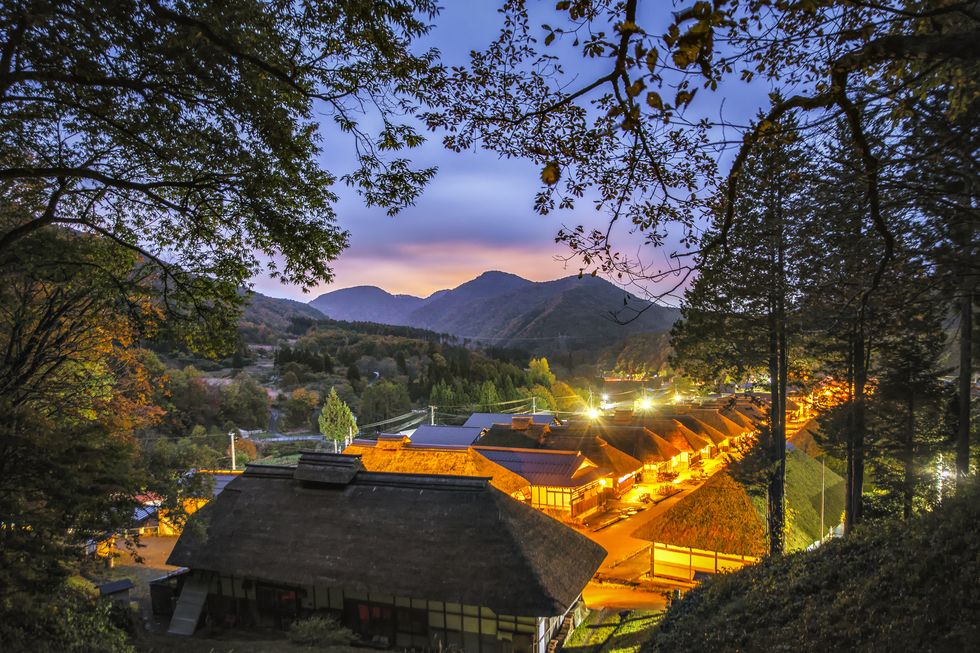
Japan's Tohoku region is home to unspoiled rural landscapes and historical treasures. This northeastern wilderness is a huge region encompassing six rural prefectures that boast custom and heritage. The devastating earthquake and tsunami that struck in 2011 brought out the resilient nature of Tohoku's people, and local passion and pride are putting the area back on its feet.
There's a lot to be proud of, too – dramatic landscapes, history-rich sites, craft sake and a host of outdoor activities like rafting, hiking and skiing.
During a trip to the region, you can enjoy the explosive sound, colour and drama of the Aomori Nebuta Festival in summer. Or wander the temples, gardens and archeological sites of World Heritage-listed Hiraizumi in Iwate.
Don't miss an adventure along Hachinohe's section of the Michinoku Coastal Trail and foodies will want to taste the sweet cherries of Yamagata and the juicy peaches of Fukushima.
TOHOKU HOTELS
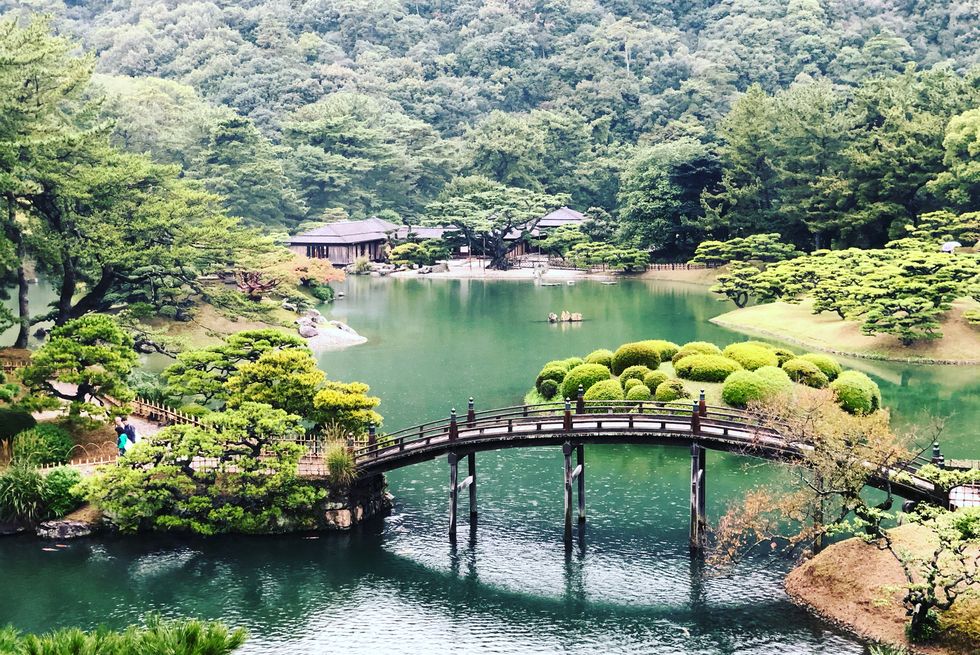
Shikoku might be the smallest of Japan's four main islands, but there are plenty of natural and culture sites to explore. Traditionally remote, Shikoku is now easy to access from Honshu.
The island offers picturesque coastline on the glittering Seto Inland Sea, legendary udon noodles and picture-perfect onsen. Its stunning Iya Valley, Pacific coastline and free-flowing rivers are best explored on hiking, kayaking and surfboarding adventures.
While here, you can sample the famous udon noodles of Kagawa, take the first steps of the 88 Temple Pilgrimage at temple number one, Ryozenji, in Tokushima, and relax in the hot waters of Dogo Onsen.
SHIKOKU HOTELS
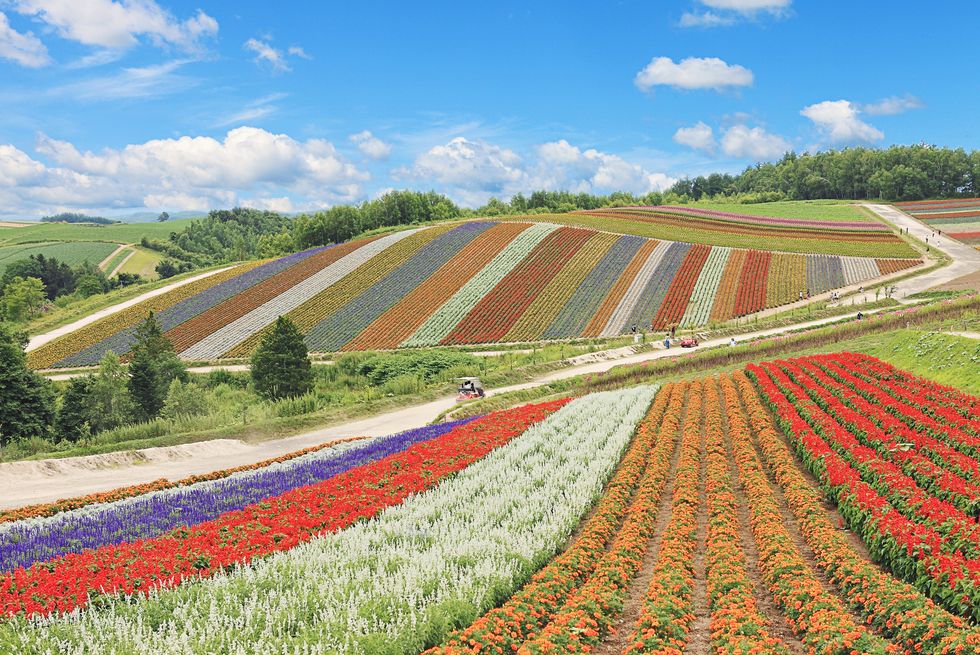
The island of Hokkaido is a popular destination for skiing and snowboarding in winter, thanks to top resorts like Niseko, Rusutsu and Furano. Sapporo, its main city, is also famous for beer, ramen and the annual Sapporo Snow Festival. It's not all about winter fun here, though.
Hokkaido’s mild summers also provide relief from Japan’s humidity, and offer ideal conditions for hiking and exploring the many national parks. Much of Hokkaido is wild and unspoiled, with hot springs and volcanic lakes, so you're never too far from nature.
While here, explore the culture and traditions of the indigenous Ainu people at Lake Akan, and journey to the Shiretoko Peninsula to see free-roaming brown bears, foxes and deer. Visiting in the summer? Everyone will be dazzled by the rolling hills of Furano's lavender farms, while foodies will love dining on fresh seafood including succulent crab, salmon and fresh sushi in Hokkaido, too.
Get to know Hokkaido on Good Housekeeping's 2025 cruise, which stops in the city of Hakodate, which is overlooked by the 334-metre Mount Hakodate.
HOKKAIDO HOTELS
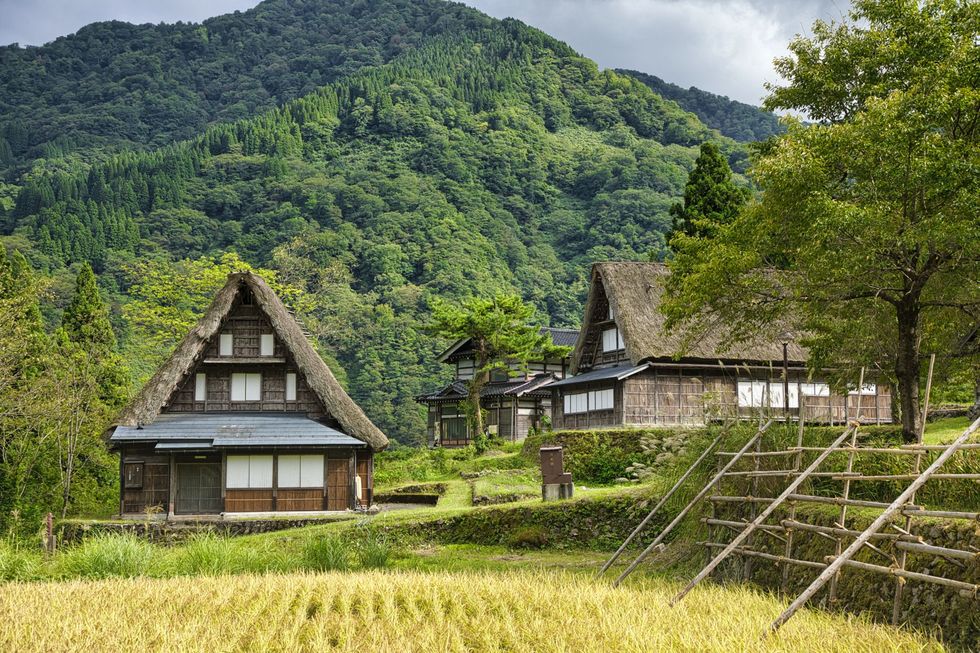
We love the distinct seasons in the Toyama region. It lies around two hours north of Tokyo, blanketed by snow in winter and blooming with cherry blossoms in spring. While Toyoma City is renowned for its fresh seafood, the wider region is particularly lovely. Perhaps unsurprisingly, given it's surrounded by rushing rivers and lush mountains.
This beautiful pocket of Japanese countryside is home to the UNESCO-listed area of Gokayama, which comprises the two villages of Ainokura and Suganuma, known for their carefully preserved thatched buildings called gassho-zukuri . The roofs are designed to resemble the hands of Buddhist monks’ pressed together in prayer. In winter, the snow-covered gassho-zukurie take on the look of a magical, fairy tale scene.
Join a Japanese cruise departing in spring 2025, and you’ll call at Toyama as the cherry blossom emerges. On an excursion, you can make the scenic hour-long journey from the cruise terminal to Gokayama, passing through the Nanto area of Toyama, where the Shogawa River and Oyabegawa rapids flow.
VISIT TOYAMA ON A 2025 JAPAN CRUISE
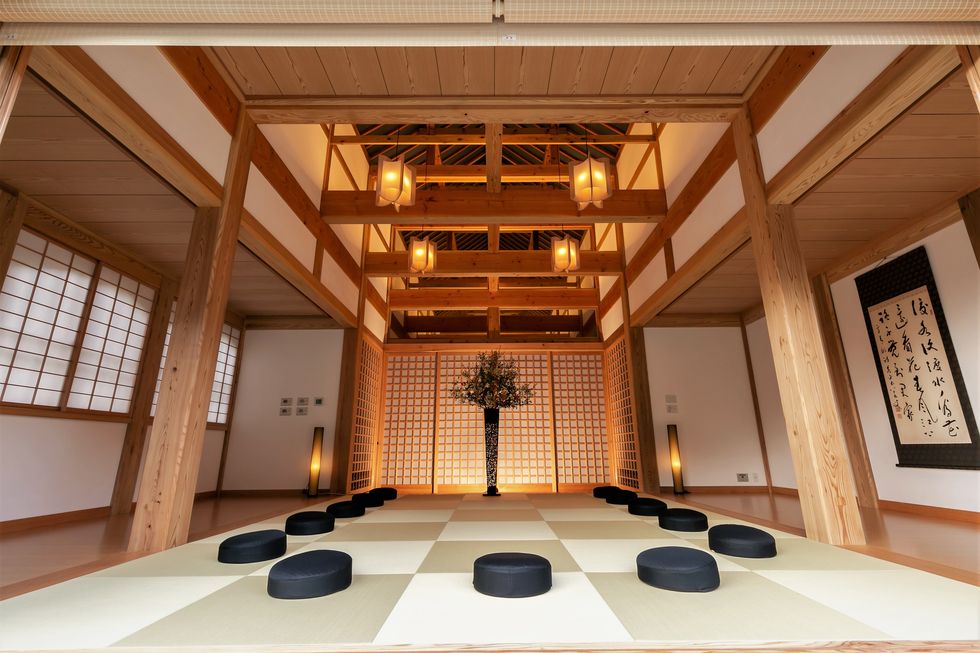
A 2024 extension to Japan's bullet train network makes access to a beautiful region deep in the mountains of the Fukui Prefecture much more accessible for visitors. It offers the chance to visit locations where you can join in with traditional rituals and learn more about Japanese culture in more remote pockets of the country.
The new train journey whisks visitors to locations like Eiheiji, where you’ll find one of the main temples of Zen Buddhism, founded in 1244. It’s a spiritual place amid mountainous scenery and ancient woodland, and guests are invited to join the practice. On departure, guests are presented with a goshuin , a traditional document written in exquisite Japanese calligraphy to certify their visit.
Next to the temple is the Zen Village, where you'll find the beautiful Hakujukan hotel, a sustainably built ryokan. As part of their stay, guests can partake in Zen meditation, known as zazen , before soaking in an open-air bath.
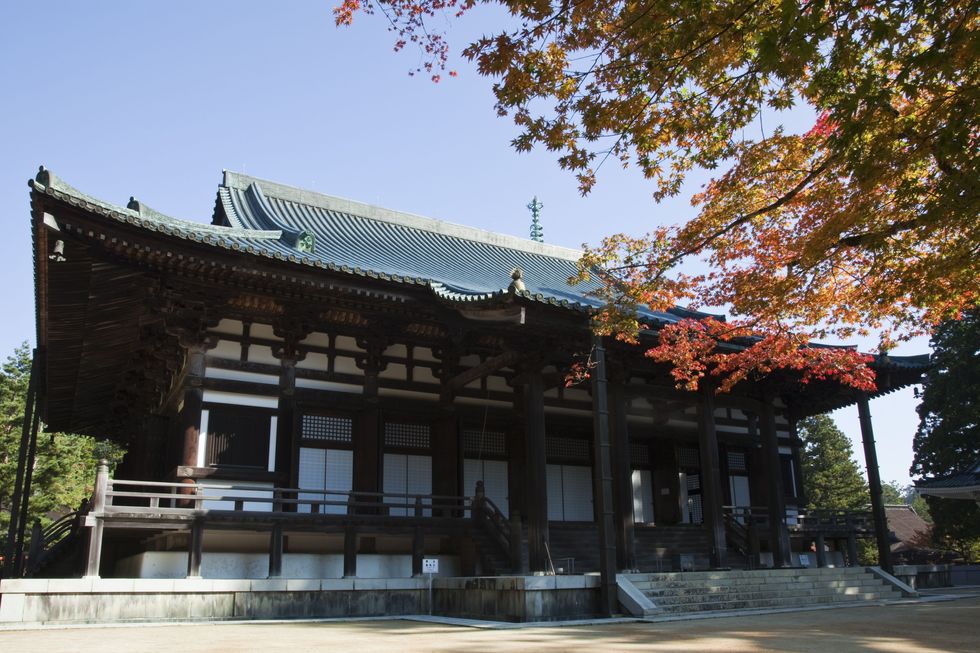
Koyasan, also known as Mount Koya, is thought by many as the most sacred place in all of Japan. Home to the centre of Shingon Buddhism, a sect that was brought to Japan in 805 by Kobo Daishi, one of the country's most prominent Buddhist monks, this mountain settlement comprises over 100 monasteries and temples.
The Shingon headquarters sit within the Kongobuji temple, which is open to visitors. Here you can learn about how Daishi founded the settlement and visit peaceful Banryutei Rock Garden, Japan’s largest rock garden.
Thanks to its verdant peaks and winding valleys, Koyasan is a popular place for hiking and is the starting point for the Shikoku Pilgrimage, a holy route that stretches roughly 750 miles and takes in 88 temples.
Koyasan is easy to access from Osaka via train for a day trip, but stay the night in shukubo (traditional temple lodgings) and you can enjoy a more immersive experience, interacting with monks and sampling their vegetarian cooking.
Visit serene Kōyasan part of Good Housekeeping's 13-day Japan tour.
EXPLORE KOYASAN ON A JAPAN TOUR
KOYASAN HOTELS

@media(max-width: 64rem){.css-o9j0dn:before{margin-bottom:0.5rem;margin-right:0.625rem;color:#ffffff;width:1.25rem;bottom:-0.2rem;height:1.25rem;content:'_';display:inline-block;position:relative;line-height:1;background-repeat:no-repeat;}.loaded .css-o9j0dn:before{background-image:url(/_assets/design-tokens/goodhousekeeping/static/images/Clover.5c7a1a0.svg);}}@media(min-width: 48rem){.loaded .css-o9j0dn:before{background-image:url(/_assets/design-tokens/goodhousekeeping/static/images/Clover.5c7a1a0.svg);}} Travel
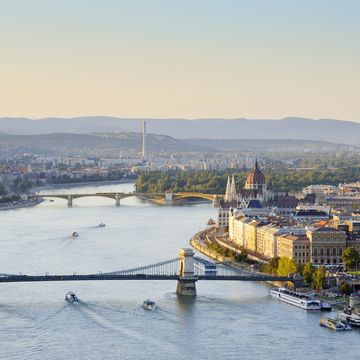
The best river cruises

The best cruises for 2024
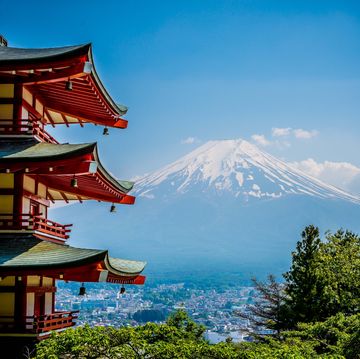
5 amazing holidays to Japan

The best spring holidays for 2024
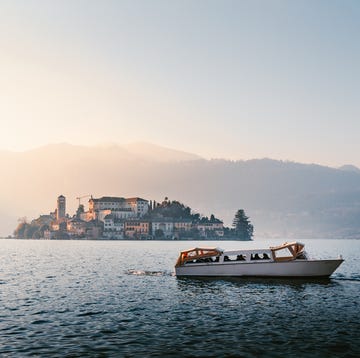
Lake Orta is the hidden gem of the Italian Lakes

Best time to visit Japan: Here's when to go
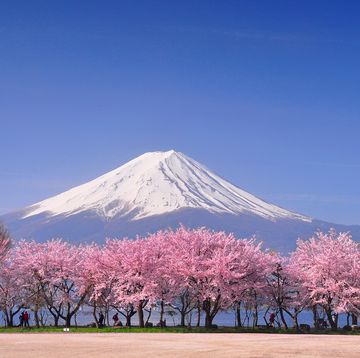
Surprising things about Japan's cherry blossom
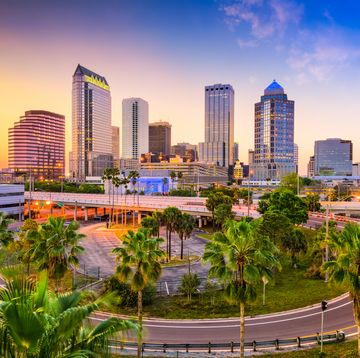
A guide to Tampa, the overlooked city in Florida
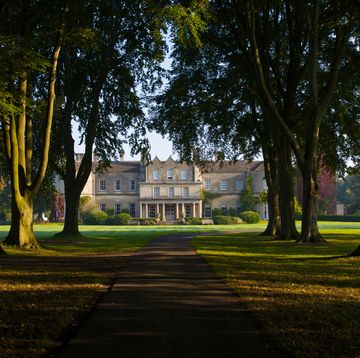
The best hotels in Wiltshire for a bucolic break

Michael Portillo is back with a new travel series
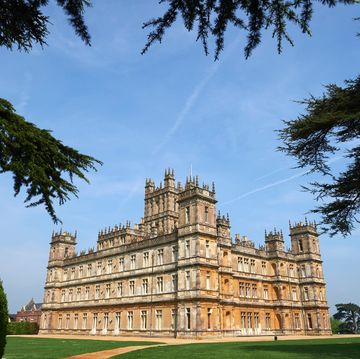
A look inside Highclere Castle

Where Are the Best Places to Eat in Japan?
I n this post I will share some of the best places to eat in Japan! Let me show you the best way to eat your way through Tokyo and Kyoto.
Pasta to Eat in Japan
I was not expecting such good Italian food in Japan! It was late at night, and we were looking to eat something that was simple and quick. The Excelsior Cafe in the Ginza neighborhood of Tokyo was the perfect place.
The Black Bolognese Pasta with Truffle Oil was so delicious. The sauce was seasoned well, and the pasta was the perfect texture. A cafe serving Italian food was definitely an unusual place to eat in Japan. (The other pasta in the picture is seafood pasta. My sister said it was very good.)
They also serve cafe foods such as beverages and desserts.
Excelsior Cafe Address: Japan, 〒104-0061 Tokyo, Chuo City, Ginza, 7 Chome−8−7 1F・2F GINZA GREEN
Department Store Food in Japan
One great thing about Japan is that there are places to eat everywhere. This has a slight disadvantage, because if you find a place that is good, you may not find it again. So definitely take good notes and keep your phone location on.
This was the case with the Matsuzkaya Department store in Ueno, Tokyo. I discovered it at a random subway stop. The basement of the store is full of individual counters selling foods of all kinds. Some foods are packaged and ready for gifting. Others are hot and ready to be eaten.
The meat skewers at one particular counter stood out to me. The woman at the counter was very friendly. (One things I noticed was that most of the employees at the counters were senior citizens. That’s very different from the U.S.) Torijin is the Romanized form of the shop I went to.
Matsuzkaya Department Store Address: 3 Chome-29-5 Ueno, Taito City, Tokyo 110-8503, Japan
Eat Steak in Japan
Inikari Steak is a chain of steak restaurants. There was one located close to my VRBO in Tokyo. This was in the Toshima neighborhood.
There were plenty of steak and chicken options. The staff was beyond friendly. So much so that myself, my sister and our friend all purchased food from there different times.
Inikari Steak Address: 1 Chome-17-2 Kitaotsuka, Toshima City, Tokyo 170-0004, Japan
McDonald’s in Japan
McDonald’s is not at the top of my favorite foods in the U.S. That’s totally different when I’m in Asia. The quality of food is so high when you’re competing with the rest of the great food in Japan.
I was excited to eat my beloved shrimp burger. I fell in love with it in South Korea and hadn’t eaten it since 2019. (It’s called a Shu Shu burger there.)
In Japan it is called the Ebi Filet burger. It’s identical to the South Korean version. The burger is a minced shrimp patty with pieces of whole shrimp throughout. It is topped with a delicious sauce.
The McDonald’s in Japan have actual McCafe bakery items. The macarons were good. I also tried the muscat (Green Grape) milkshake, which was very refreshing.
L’Occitane Cafe in Japan
At the heart of the Shibuya Crossing (In Japan it’s known as the Shibuya Scramble.) in Tokyo, is the L’Occitane Cafe. The skincare brand L’Occitane has a store on the first floor and a cafe on the second and third floors of a building in this popular tourist area.
The dessert sampler I had included a jelly dish designed after a new skincare serum. The other items in the sampler were chocolate cake, crème Brulé and a small layer cake. Everything was very delicious with the perfect amount of sweetness.
L’Occitane Cafe Address: Japan, 〒150-0043 Tokyo, Shibuya City, Dogenzaka, 2 Chome−3−1, Shibuya Ekimae Bldg., 2-3
Convenience Store Food in Japan
Convenient stores are the perfect place to get a quick bite to eat on the go. I purchased pizza buns many times throughout Tokyo and Kyoto. They are a bread bun filled with tomato sauce and cheese. Rice balls were also available, and they came in many different varieties. The one pictured is Soy Sauce & Broth flavor.
My favorite convenience store item was the sweet potato waffle. The seasonal theme while I was in Japan was sweet potato. So, many places offered special sweet potato themed foods. The waffle I had was filled with sweet potato flavored cream and tasted delicious. Seasonal themed foods should always be on your list of things to eat in Japan.
You can’t talk about convenience store food without including instant ramen. This ramen was different from any I had eaten before. The outside photo showed a piece of pork. Guess what was inside the package? It was an actual piece of dried pork. This was in addition to four or five other seasonings.
The Best Ramen to Try in Japan
Instant ramen is good, but one of the best things I ate in Japan was ramen that was made to order at a restaurant. I had never heard of Tsukemen noodles before, and Ginjo Ramen Kubota was the best place to try them.
These noodles are served cold and come in a bowl separate from the broth. You don’t pour the broth over the noodles. Instead, you dip the noodles into the broth. For the whole experience, including the whole process of buying the noodles, check out my Kyoto Hidden Gems post .
Ginjo Ramen Kubota Address: 563-2 Nishimatsuyacho, Shimogyo Ward, Kyoto, 600-8326, Japan
Burgers in Japan
Last, but definitely not least, is the Mar Burger at Mar Cafe. I am not a burger person, but this comes in second, after the Tsukemen ramen, as my favorite thing I ate in Japan.
The burger included two different sauces and fried avocado slices. I had a side of fries that were fried and seasoned to perfection. This restaurant was a recommendation from the YouTuber Sundai Love . I wholeheartedly give this place my stamp of approval. It’s difficult to find, so check out my Kyoto Hidden Gems post for detailed directions with photos.
Mar Cafe Address: Japan, 〒600-8029 Kyoto, Shimogyo Ward, Nishihashizumecho, 762 京栄中央ビル 8F
Have you ever been to Japan? What was your favorite place to eat in Japan? If you want to visit Japan one day, is there anything on my list that you want to try? Let me know in the comments.
The post Where Are the Best Places to Eat in Japan? appeared first on Passport by Design .
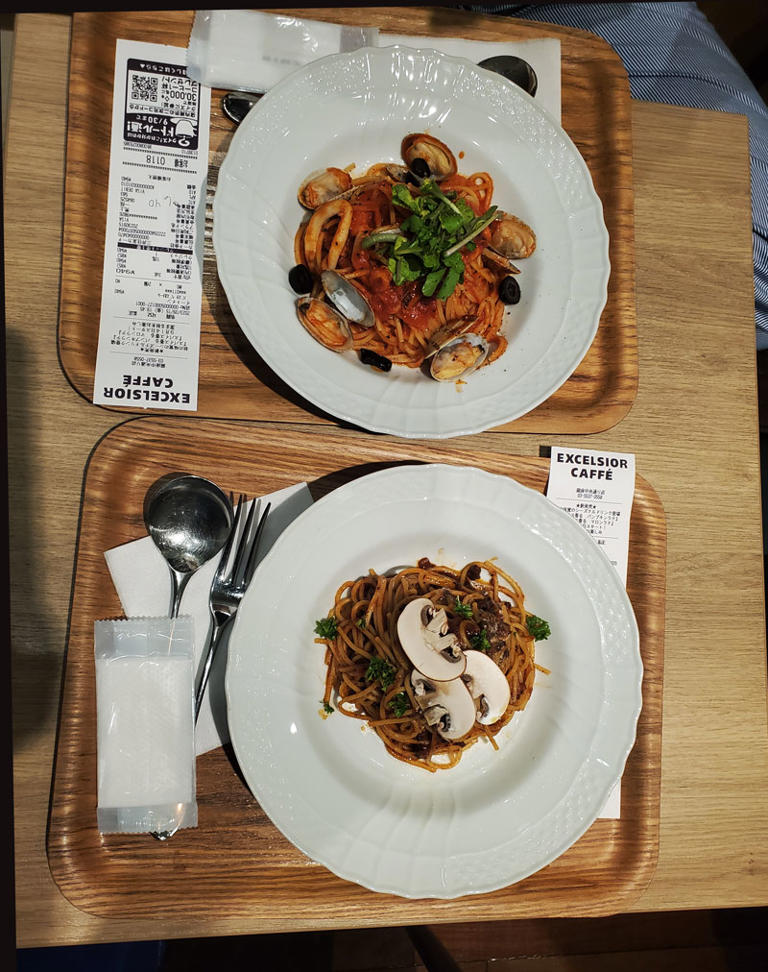
- Share full article
Advertisement
Supported by
Off the Menu
Kisa Brings South Korean Roadside Fare to the Lower East Side
Rosemary’s offers pizza and a family-style meal in Midtown, the owners of Oxalis open Laurel Bakery in the Columbia Street waterfront district, Brooklyn, and more restaurant news.

By Florence Fabricant
In South Korea, roadside diners that cater to taxi drivers are called kisa sikdang, or “driver’s restaurants,” and serve baekban (homestyle) fare like bibimbap, spicy pork or local, fresh seafood with rice and banchan. Kisa serves most of these as well as bulgogi and spicy squid. The owners, David JoonWoo Yun, Steve JaeWoo Choi and Yong Min Kim, all South Korean natives, are behind C as in Charlie in NoHo. ( Taxi drivers prefer rice dishes to soups, they say, because bathroom breaks are rare.) The room’s vintage touches include Korean calendars, wall-mounted fans and a machine that dispenses free coffee. (Opens Saturday)
205 Allen Street (East Houston Street), 646-866-8622, kisaus.com .
Hail a tractor to head for the third of Carlos Suarez’s farmhouse-style Italian restaurants, named for his mother and incongruously installed among glass and steel towers. The airy dining room opens to sidewalk seating, and a small retail area and a private dining room are tucked in the back. La Sagra, a new family-style spread of assorted antipasti followed by pasta and dessert, is $39 per person with $1 going to God’s Love We Deliver. Pizzas, including one with spring peas and artichokes, are also new. Much of the produce comes from McEnroe Organic Farm in the Hudson Valley which is co-owned by the Durst Organization, the owner of the building.
825 Third Avenue (50th Street), 212-870-6137, rosemarysnyc.com .
Bar Primi Penn District
The Madison Square Garden and Manhattan West area, steps from the Moynihan Train Hall, was once a restaurant desert. It is now bustling with dining options, including this uptown edition of the Italian Bowery restaurant from NoHo Hospitality, the chef Andrew Carmellini’s team. It’s in a former warehouse with a thickly planted patio.
349 West 33rd Street, 212-233-6100, barprimi.com .
Chica & the Don
This luxurious Flatiron district venue, which feels like a supper club, offers a richly interpreted menu of Latin American food and drinks, featuring dishes like short rib and maduro quesadilla, and fried red snapper in a coconut-tomato sauce. Tropical fruits flavor the drinks. Music and dancing are on the agenda. (Friday)
24 East 21st Street, 646-649-4805, chicadon.com .
Panko Pizza
Many pizzaiolos strew a handful of semolina on the pan for a crisp crust that doesn’t stick. At his new pizzeria, Fran Garcia, best known as the owner of Artichoke Basille’s with many locations, coats his crusts with olive oil and dips them in panko for the same effect.
1104 NJ-35 (New Monmouth Road), Middletown Township, N.J., 848-225-3080, pankopizzeria.com .
On the Menu
Japanese wines.
Leo Lê, the beverage director for Momoya restaurants, has added Japanese wines, much improved, he says, to his French list for the first time. Japan’s hilly wine region in Yamanashi Prefecture is the source. Branca Clareza 2022 by Aruga is 100 percent Koshu, a Japanese grape variety, pale and pinkish, light on the palate and fine with delicate raw seafood ($17 a glass). Aruga’s Branca Pipa 2019, ($180 a bottle), also Koshu, has seen some oak for richer complexity to accompany various dishes. Domaine Mie Ikeno’s smooth merlot, immature pinot noir and elegant chardonnay are rare, expensive ($315 a bottle) and, like the Branca Pipa, only on Momoya’s SoHo wine list.
Momoya, momoyanyc.com .
Laurel Bakery
Nico Russell, Steve Wong and Piper Kristensen of Redwood Hospitality, the owners of Oxalis in Prospect Heights, Brooklyn, now closed, have opened this bakery inspired mostly by France, but with touches of Italy and Japan. It will both serve its corner of Brooklyn and supply their restaurant, Place des Fêtes. Soon their original Prospect Heights space will become an all-day cafe; Oxalis will relocate.
115 Columbia Street (Kane Street), Columbia Street Waterfront District, 347-308-1030, laurelbakery.com .
Chefs on the Move
Margot combat.
This marquee drinks expert has arrived in New York to take up residence at the chef Alain Ducasse’s Benoit until June 11, turning the bar into a Cheffe Cocktail pop-up. Margot Lecarpentier — who previously worked in New York bars and whose bar, Combat, in the Belleville neighborhood of Paris, gave the chef her nickname — has become the executive chef-mixologist for Ducasse Paris, Mr. Ducasse’s group. Known for innovative flavors, she will mix six signature drinks here, including a Jamaican Negroni with dark and white rums, Campari and vermouth; and the Chubu Spritz with pear spirit, vermouth, Bénédictine, grapefruit, vinegar, absinthe and soda.
Benoit NY x Margot Combat Cocktail Pop-Up, 60 West 55th Street, 646-943-7373, benoitny.com .
Looking Ahead
Parrish art museum.
The East End of Long Island has been a food source, from land and sea, long before settlers from New England arrived. It continues to this day. From Sunday through June 30, the Parrish Art Museum in Water Mill, N.Y., will display “The Art of Food: From the Collections of Jordan D. Schnitzer and His Family Foundation,” with drawings, paintings, photographs, sculptures and ceramics, many by contemporary artists and many with ties to the region. Special events and talks related to the exhibit are planned.
Parrish Art Museum, 279 Montauk Highway (Head of Pond Road), Water Mill, N.Y., 631-283-2118, parrishart.org .
One Madison Avenue
Daniel Boulud’s first steak house, La Tête d’Or by Daniel, is to make its debut in November in the new office tower across from Madison Square Park’s southern perimeter. Designed by Rockwell Group, it will have a 150-seat dining room for slabs of beef and more, done in American and Parisian styles, notably with French sauces. A bar area, a private dining room and an omakase steak and seafood counter are the potatoes alongside the meat. The sandwich shop Alidoro will occupy part of the building’s ground floor.
One Madison Avenue (23rd Street).
The French guidebooks have announced 10 restaurants that are being added to the New York lineup of more than 400 places. They are Bangkok Supper Club, Bar Miller, Barrio, Cecily, L’abeille à Côté, Moono, Nōksu, Shota Omakase, Untable and, on the rebound , Chef’s Table at Brooklyn Fare.
Restaurant Marc Forgione
First opened in 2008, this flagship for the chef and restaurateur who also has Trattoria One Fifth, Peasant and Khe-Yo in his portfolio will close after dinner on Friday. Mr. Forgione will soon reopen it in the grand space that once housed David Bouley’s Danube and Brushstroke, at 30 Hudson Street.
134 Reade Street (Hudson Street), 212-941-9401, marcforgione.com .
Follow New York Times Cooking on Instagram , Facebook , YouTube , TikTok and Pinterest . Get regular updates from New York Times Cooking, with recipe suggestions, cooking tips and shopping advice .
Florence Fabricant is a food and wine writer. She writes the weekly Front Burner and Off the Menu columns, as well as the Pairings column, which appears alongside the monthly wine reviews. She has also written 12 cookbooks. More about Florence Fabricant
More on Food and Dining
Keep tabs on dining trends, restaurant reviews and recipes..
As inflation remains high, budget cooking doesn’t mean skimping on flavor or making your meals any less satisfying. Try these 12 recipes that won’t break the bank .
In Los Angeles, the restaurant Chain taps into a feverish nostalgia for burgers and pizza from the 20th century.
It’s not just seafood and Italian in Boston. There’s great Vietnamese, omakase, Peruvian and even bagels. Here are the city’s 25 best restaurants right now .
Food myths come from many sources, and American cooks have swallowed lots of them. A veteran food journalist debunked five common kitchen misconceptions .
Eating in New York City
We asked, you answered: Here are the restaurants our dining-obsessed readers would rank the best in the city.
Pete Wells, our dining critic, has unveiled his annual ranking of the 100 best restaurants in New York City .
At Shaw-naé’s House on Staten Island, the owner and chef Shaw-naé Dixon serves up Southern classics and a warm welcome to her “living room.”
Once the pre-eminent food court in Flushing, Queens, for regional Chinese cuisines, the Golden Mall has reopened after a four-year renovation. A new one in Manhattan is on the horizon.
The Lyrids begin this week. How to see first major meteor shower of spring when it peaks
While the april 8 eclipse was only viewable in north america, the lyrids should be visible pretty much around the world..
A week after that stunning total solar eclipse , the Lyrid meteor shower is about to give sky-gazers plenty of reasons to once again look toward the cosmos.
One of the oldest-known meteor showers on record, the Lyrids has peaked like clockwork every late April for thousands of years. And while that peak won't be occurring until Saturday, you still have a chance to see the soaring meteors beginning Monday.
The best part? While the April 8 eclipse was only viewable in North America, the Lyrids should be visible pretty much around the world .
Here's what to know about the Lyrid meteor shower .
Out of this world: From Stanley cups to Samsung phones, this duo's company launches almost anything into space
Where do the Lyrid meteors come from?
Meteor showers occur when Earth passes through debris trails left by comets and other space objects. The debris – space rocks known as meteoroids – collides with Earth's atmosphere at high speed and disintegrates, creating fiery and colorful streaks in the sky, according to NASA .
Those resulting fireballs, better known as "shooting stars," are meteors. Those meteoroids that survive their trip to Earth without burning up in the atmosphere are called meteorites, NASA says .
Named for the nearby constellation Lyra, the Lyrid meteor shower is composed of pieces of debris from the Comet C/1861 G1 Thatcher . The comet is named for A. E. Thatcher, who discovered it in 1861.
The meteor shower itself, though, has been observed for 2,700 years ever since the first recorded sighting was made in 687 BC by the Chinese, according to NASA .
How can we see the Lyrid meteor shower?
The Lyrids are known as one of four major meteor showers each year that have a sharp peak. This year, that peak falls between April 21-22, according to EarthSky.org .
However, the meteor shower could be visible anytime beginning Monday.
According to NASA, the best view in the Northern Hemisphere of the shower is after moonset and before dawn.
Here are tips from the U.S. space agency:
- Pick an area well away from city lights or street lights.
- Bring a sleeping bag, blanket, or lawn chair.
- Lie flat on your back with your feet facing east and look up.
- Be patient. About 30 minutes in the dark your eyes should adapt and you should begin to see meteors.
How many Lyrids will we see per hour?
The first meteor shower of the spring , the fast and bright meteors of the Lyrids will appear to be flying across the night sky.
While NASA notes that the Lyrids can surprise watchers with as many as 100 meteors seen per hour, in general, 10-20 Lyrid meteors can be seen per hour during the peak.
Lyrids don’t tend to leave long, glowing dust trains behind them as they streak through the Earth's atmosphere. However, they can produce the occasional bright flash called a fireball.

IMAGES
COMMENTS
Chubu region consists of 9 prefectures in Japan. You can enjoy mountainous area and beach area, also the urban city in Chubu. Here is the summary of the area and the best places to visit in Chubu!
Photo: 7maru / Shutterstock.com. Located in the center of Honshu, Chubu stretches from the north to the south of the island with coastlines along the Sea of Japan and the Pacific Ocean. Over here, there is plenty to see and do from hitting the bustling cities to the calm and serene mountains and it's also the ideal place to experience a slice ...
Things to Do in Chubu, Japan: See Tripadvisor's 1,044,426 traveler reviews and photos of Chubu tourist attractions. Find what to do today, this weekend, or in April. We have reviews of the best places to see in Chubu. Visit top-rated & must-see attractions.
There is so much to see and do here. Central Japan, also called Chubu region, is composed of nine prefectures: Aichi, Gifu, Shizuoka, Yamanashi, Nagano, Niigata, Fukui, Ishikawa, and Toyama. The last four are considered part of the Hokuruki subregion. Crumpled with mountains, Central Japan boasts the towering Japanese Alps and Mount Fuji.
The mountainous rooftop of Japan, hiker's playground and host of iconic Mt. Fuji. The Chubu Region (中部地方, Chūbu Chihō, literally "central part") consists of nine prefectures and is located in the center of Japan's largest island Honshu. It it the site of many of Japan's tallest mountains, inlcuding Mount Fuji and the Japan Alps.
To give you an idea, you should expect to travel in Japan with an average daily cost of about USD $45~ per person on a budget, or at least $120~ if you want to experience more comfort on activities, tours, hotels, and more. (Values below show low budget to medium budget ranges). Hotels: $25 to $120 USD / day.
In this area, there are many sightseeing spots that represent Japan, such as Mt. Fuji, Matsumoto, Tateyama, Hakuba, Takayama, Shirakawa-go, Kanazawa, and Ise. It can be said that the Chubu region is home to many of Japan's diverse attractions. On this page, I would like to introduce a travel guide for the Chubu region. 2023.02.08.
1. Kenrokuen Garden. This beautiful park contains one of the top three celebrated gardens in Japan. The name Kenrokuen literally translates to "garden combining six", referring to the six attributes all gardens should have: seclusion, antiquity, spaciousness, human ingenuity, water and scenic views. 2.
Things to Do in Chubu, Japan: See Tripadvisor's 1,043,233 traveller reviews and photos of Chubu tourist attractions. ... Tours Add a Place Travel Forum Airlines Travellers' Choice Help Centre. Asia. Japan. Chubu. Things to do in Chubu. THE 10 BEST Things to Do in Chubu. Things to Do in Chubu. Explore popular experiences. See what other ...
9. Soak in the Best Onsen Towns of Chubu. The Chubu region is a haven for geothermal activity, making it a prime destination for onsen (hot spring) enthusiasts. Gero Onsen (下呂温泉) in Gifu is often cited as one of the three most famous onsens in Japan, known for its skin-beautifying properties.
So, until we meet again, sayonara, and may your experiences in Chubu continue to inspire and enrich your journey through the Land of the Rising Sun. Discover the best of Central Japan with our comprehensive 5-day or longer Chubu itinerary. Immerse yourself in the beauty of Japan and experience its rich culture, history, and stunning landscapes.
Best time to visit Chubu: The best time to visit the Chubu region in Japan depends on the specific experiences you are seeking. Chubu experiences four distinct seasons, each with its own unique attractions and weather conditions. Spring (March to May): Spring is a beautiful time to visit Chubu as cherry blossoms (sakura) bloom across the region ...
The History of Chubu: Where Japan's Greatest Battles Took Place. ... making it one of the best times to visit Chubu. Summer (June - August) In June, the average temperature across Kanazawa is 22.2℃, rarely dropping below 19℃. That might sound very pleasant, but June is also the start of the rainy season here, which brings with it many ...
Best Time To Visit Chubu Japan. Chubu region is an interesting place to visit any time and season. Every season has something different to offer. So the best time to visit the Chubu region depends on what you want to see. When the snow started to melt, the Chubu region is welcoming spring with flowers blooming everywhere.
The Chubu area is sandwiched between Japan's most famous regions: Kanto and Kansai (Kyoto ... Traveling by car is advisable as the places to visit are scattered throughout the prefecture. Nagano Prefecture. Nagano prefecture is located in the heart of the Japanese Alps and focuses on outdoor activities all year round, as well as on its ...
A tour is the best way to explore this richly varied area, where you can enjoy the sea, the mountains, and the city. The Chubu area consists of three regions: the Hokuriku region facing the Sea of Japan, the Central region inland, and the Tokai region facing the Pacific Ocean.
By Sleiman Azizi. The Chubu region of central Japan is made of nine prefectures. Aichi, Fukui, Gifu, Ishikawa, Nagano, Niigata, Shizuoka, Toyama, and Yamanashi are heavily laden with mountains, historic villages, castles and a rural culture open to the modern world.
Nagoya Castle. Very nice castle tour, big place which lots of places to walk and the rebuilt palace is done up very nicely with lots... 5. Lake Kawaguchiko. Kawaguchiko is the easiest to visit among the Fuji Five Lakes, and can be done with a day trip from Tokyo.
Top Things to Do in Chubu, Japan: See Tripadvisor's 1,043,835 traveller reviews and photos of Chubu tourist attractions. ... Tours Add a Place Travel Forum Airlines Travellers' Choice Help Centre. Asia. Japan. Chubu. Things to do in Chubu. THE 15 BEST Things to Do in Chubu. Things to Do in Chubu. Explore popular experiences. See what other ...
The Tokyo Metropolitan area is a mega-city, home to some 35 million people and the driving force of Japan's economy and rapidly shifting cultural trends. However, less than 90 minutes away you will find Mount Takao, a peaceful retreat for walking and quiet reflection with views of the distant urban landscapes.
The Takayama-Hokuriku Area Tourist Pass is a JR Pass (Japan Rail) that gives you unlimited travel in the Chubu region for five (5) consecutive days. You can use it to travel by JR train (and participating bus lines) between major cities and tourist destinations in the region like Nagoya, Takayama, Kanazawa, Shirakawa-go, and Gokayama.
Reveal the enchantment of Chubu with our curated list of top-rated attractions. Uncover hidden gems and embrace traveler-recommended wonders in Japan. Countries Attractions Shopping Food and Drinks ... Top 10 Things to See in Kansai: 6.1. 88 Traditional Villages. Ouchi-Juku Japan Chubu. 4.7. 86 Baseball.
The best time to visit Japan. A road trip during the Japanese winter is a bit more challenging but definitely awesome as the highlights of this itinerary are more unique to explore during this time of the year. Although, Autumn and spring are generally considered to be the best times to explore this region as the vibrant foliage of spring and fall completely transform the landscapes into a ...
Explore the 50 best destinations in America and more with the MEN'S JOURNAL Travel Awards. From ninja museums to hallowed samurai battlefields, here are the best sites to dive into epic Japan via ...
Tokyo. Yongyuan Dai. The first stop for many foreign tourists is Japan's vibrant capital and it's not hard to see why. The world's most populous metropolis, Tokyo offers tradition and innovation ...
Everything was very delicious with the perfect amount of sweetness. L'Occitane Cafe. Address: Japan, 〒150-0043 Tokyo, Shibuya City, Dogenzaka, 2 Chome−3−1, Shibuya Ekimae Bldg., 2-3 ...
At his new pizzeria, Fran Garcia, best known as the owner of Artichoke Basille's with many locations, coats his crusts with olive oil and dips them in panko for the same effect. 1104 NJ-35 (New ...
Here are tips from the U.S. space agency: Pick an area well away from city lights or street lights. Bring a sleeping bag, blanket, or lawn chair. Lie flat on your back with your feet facing east ...